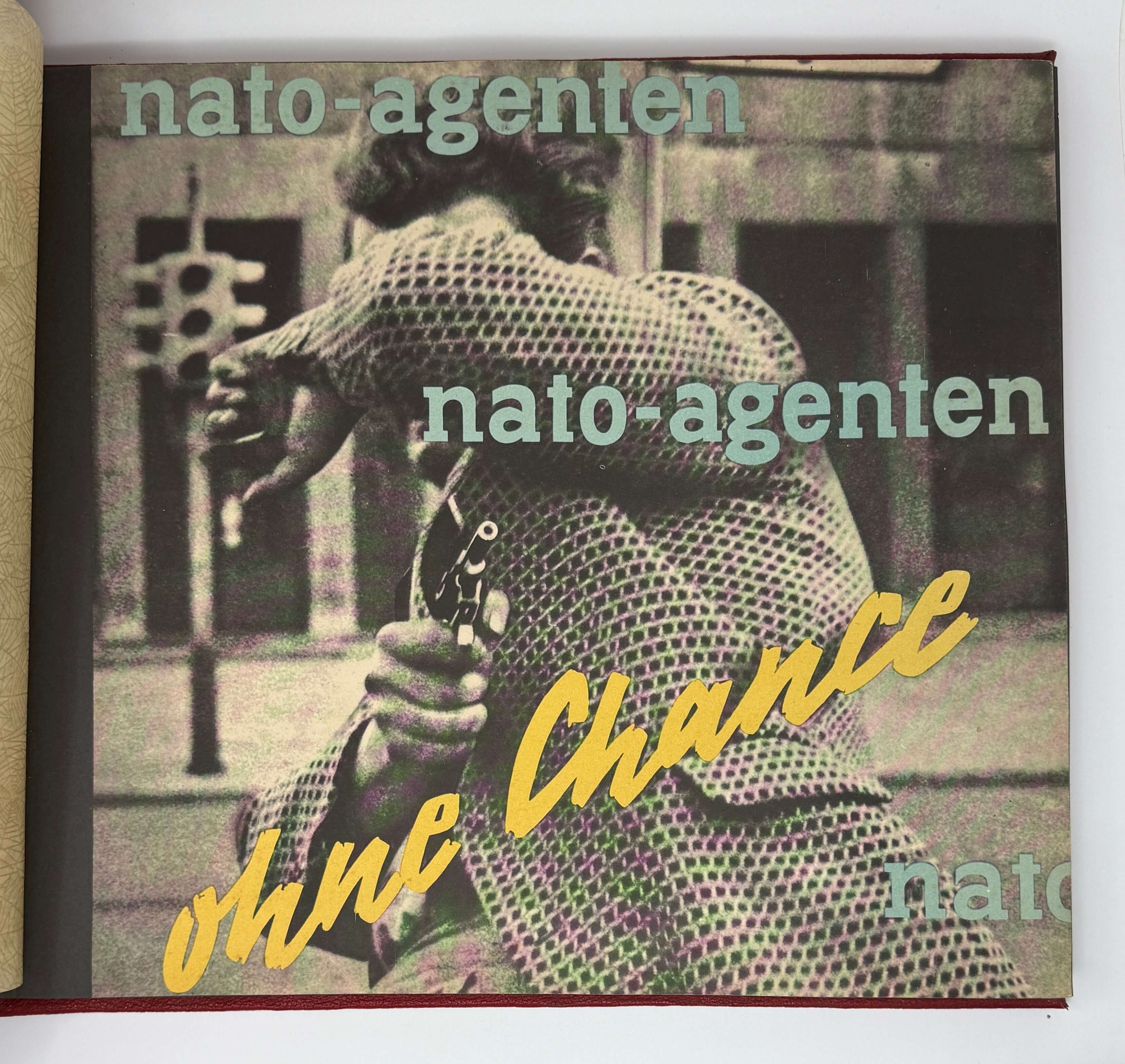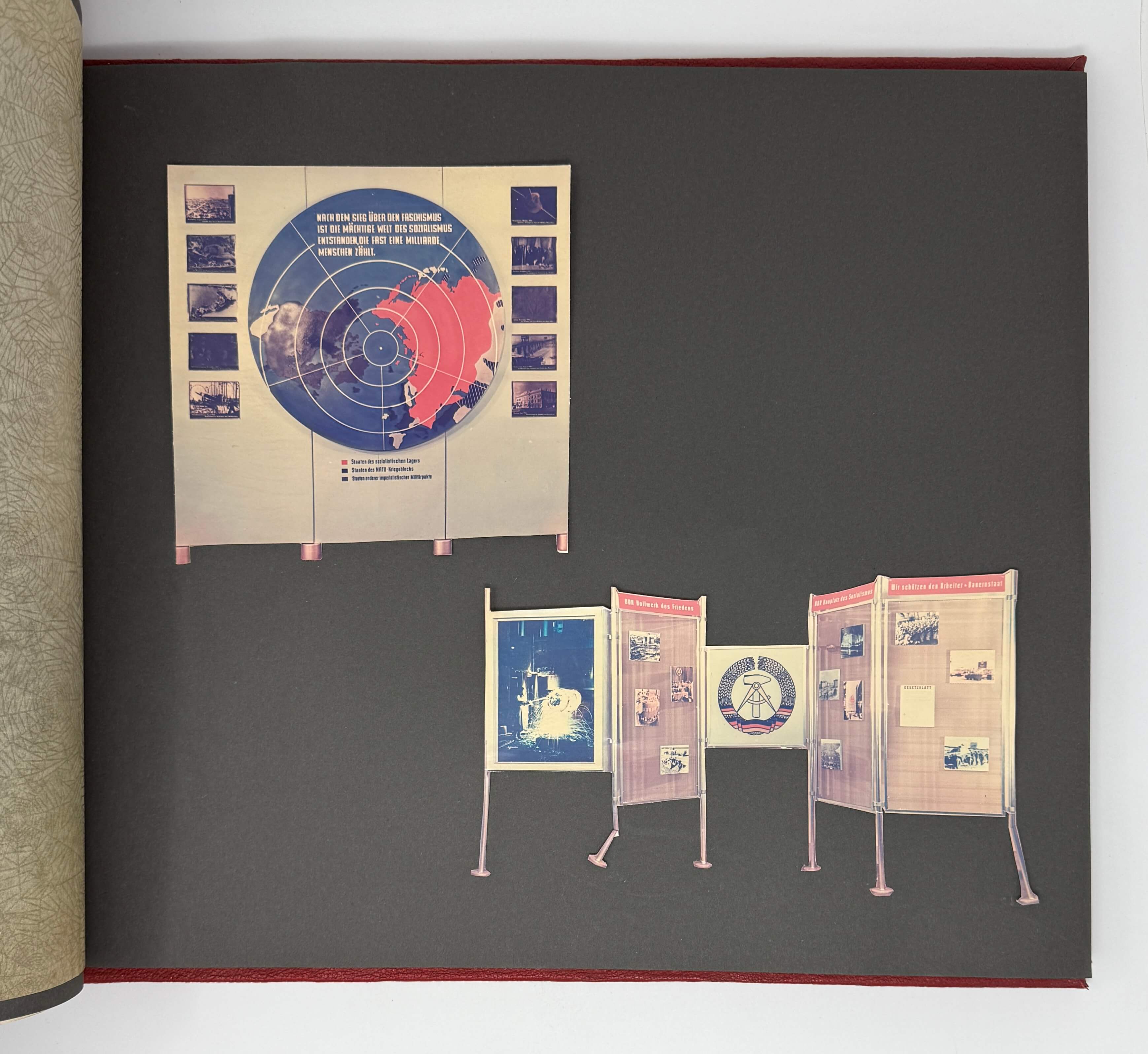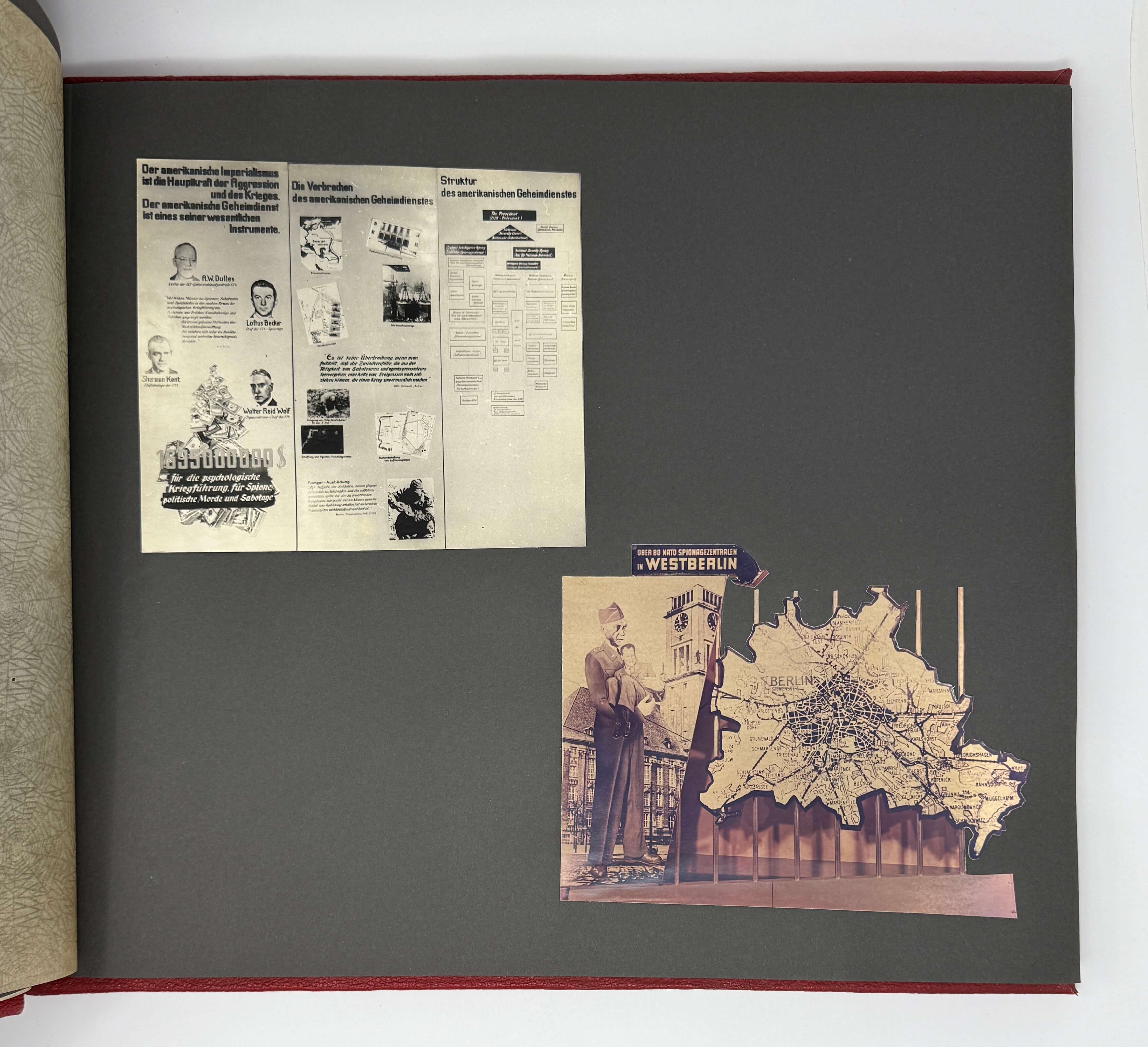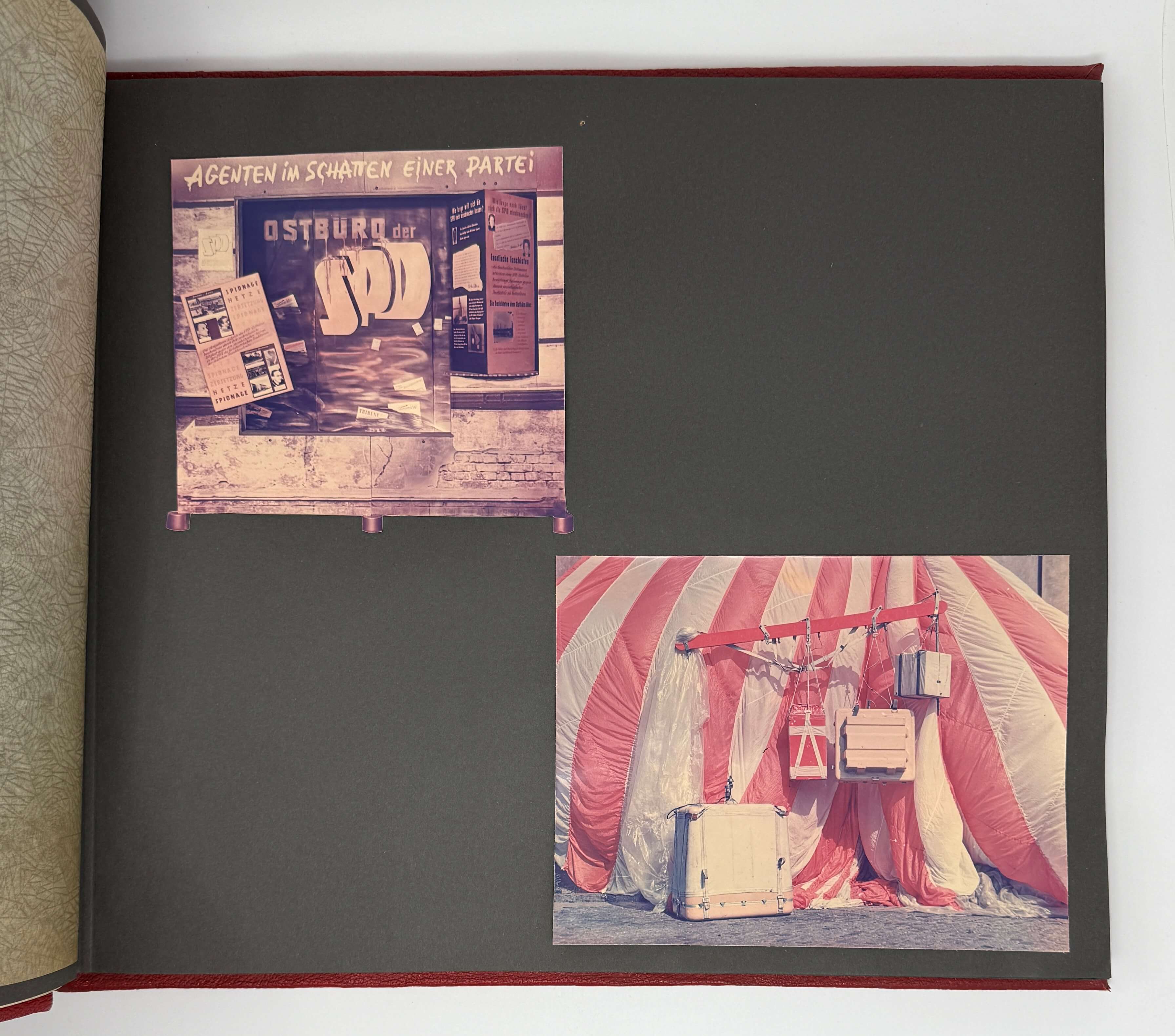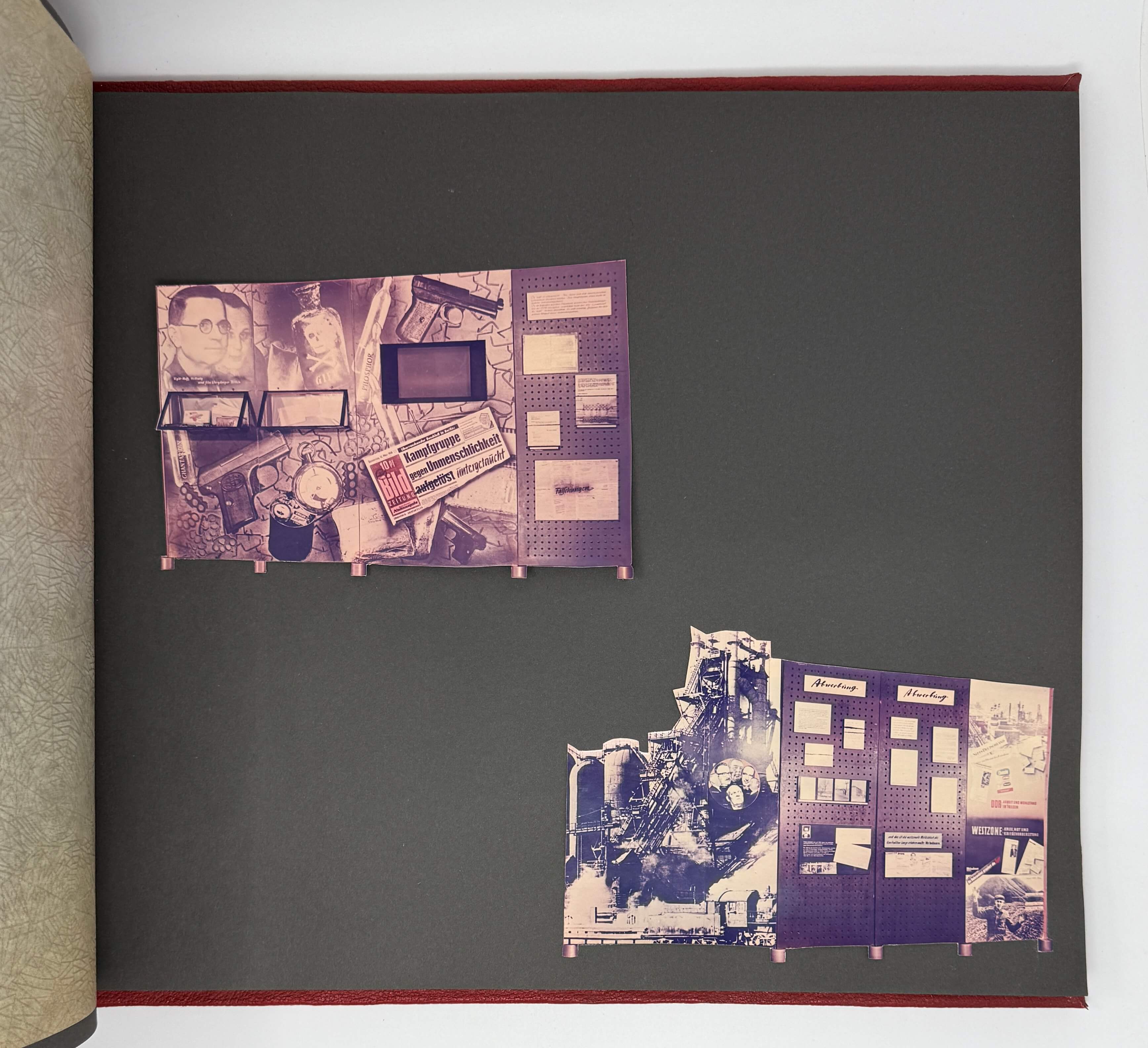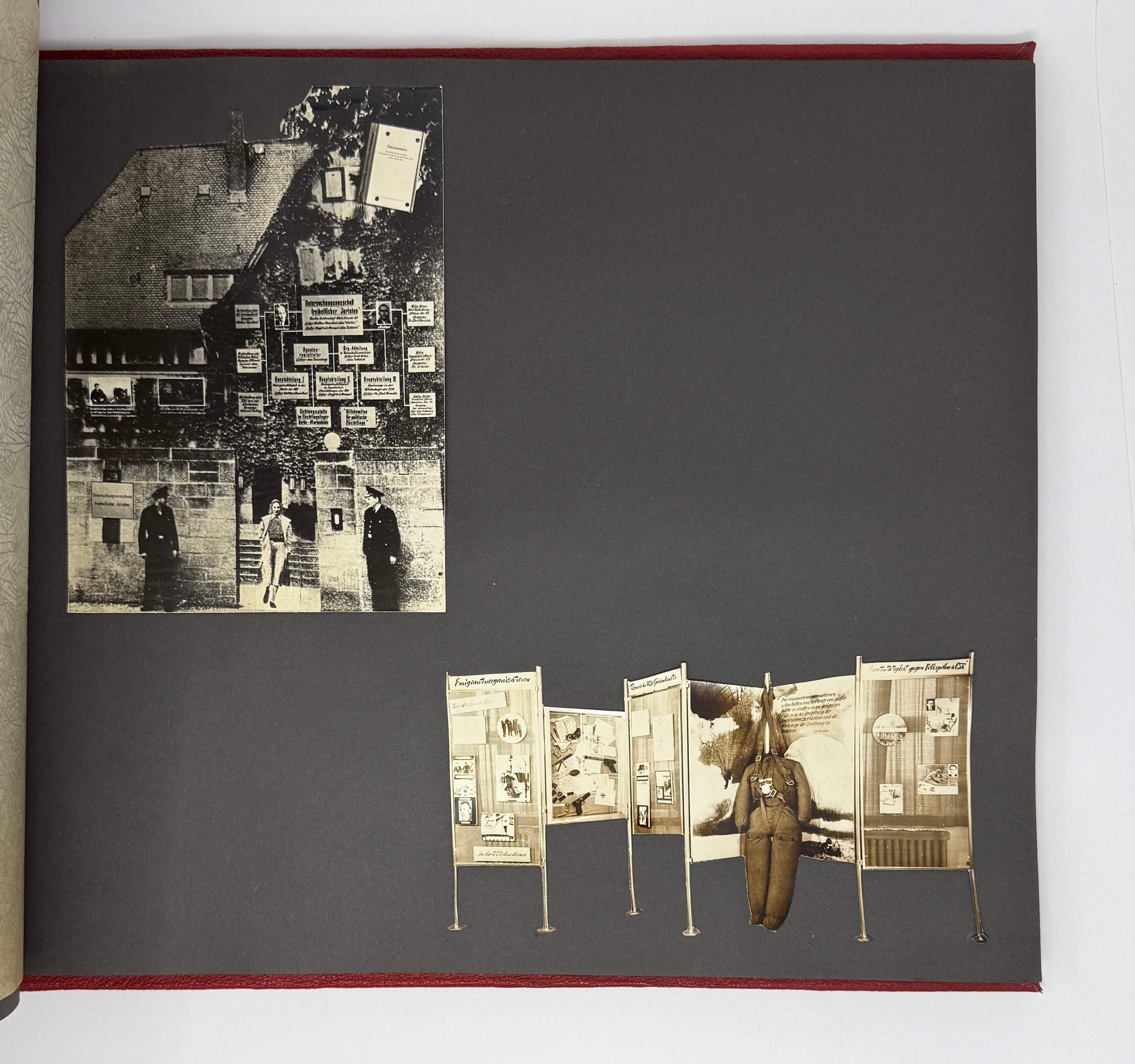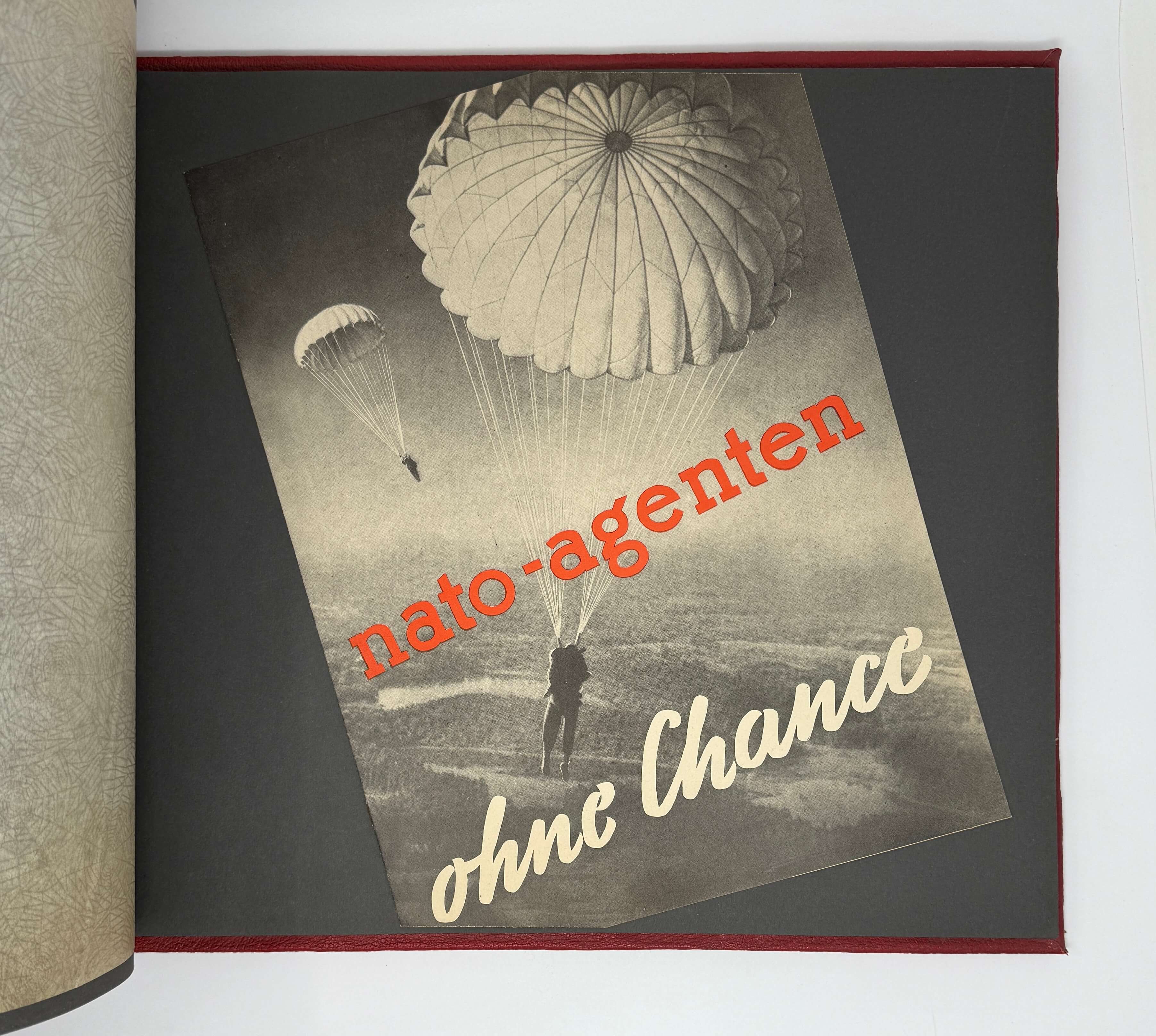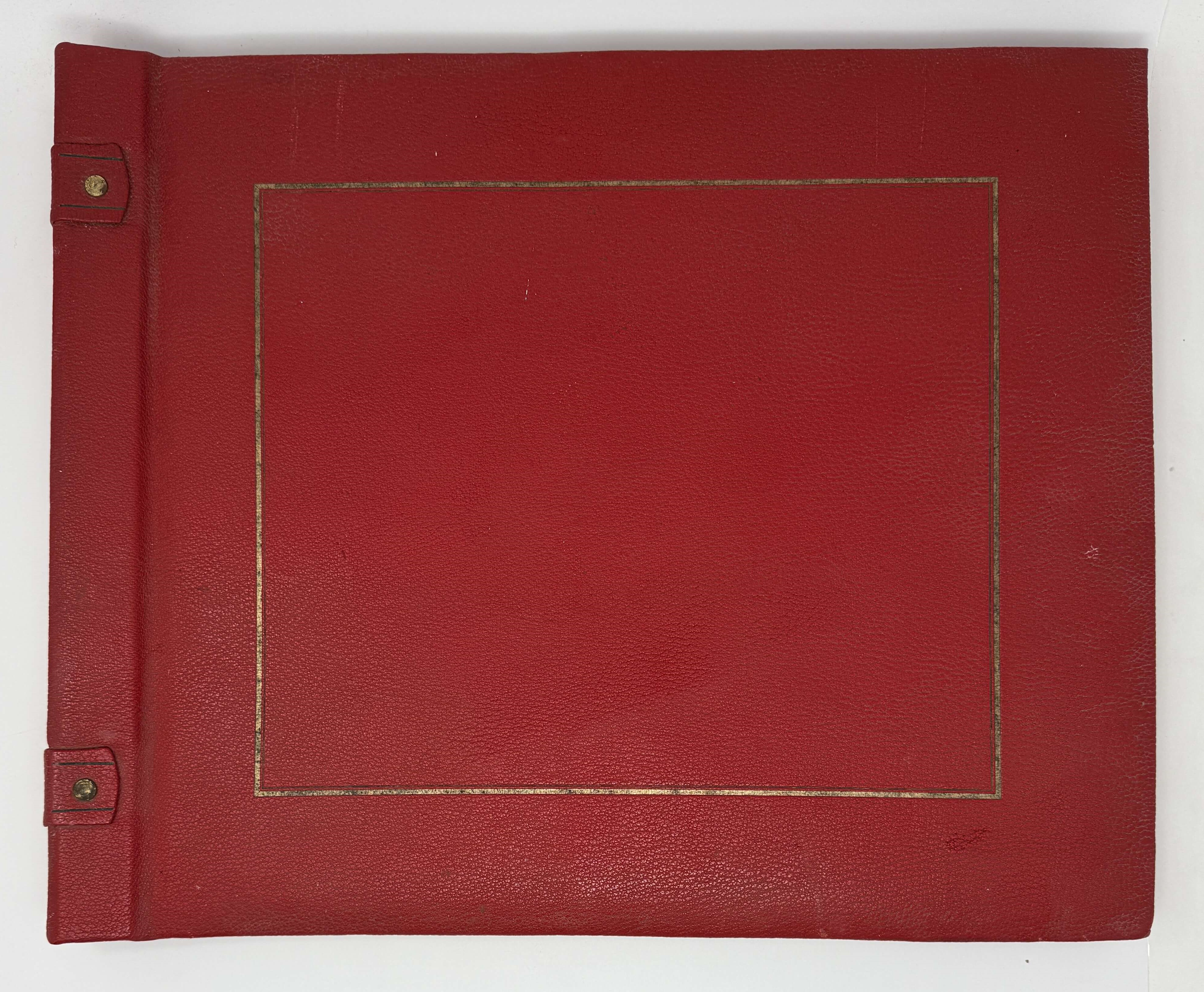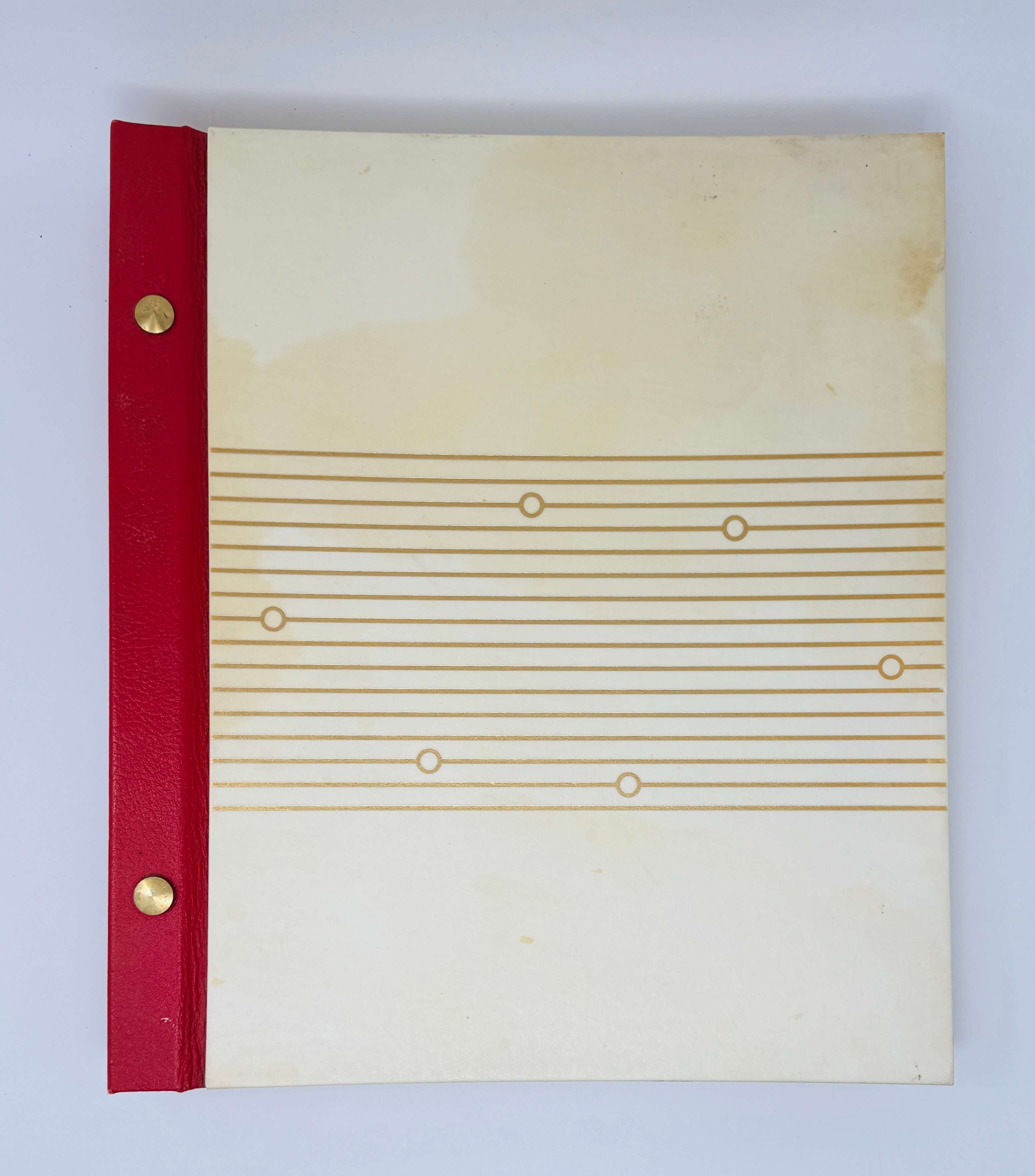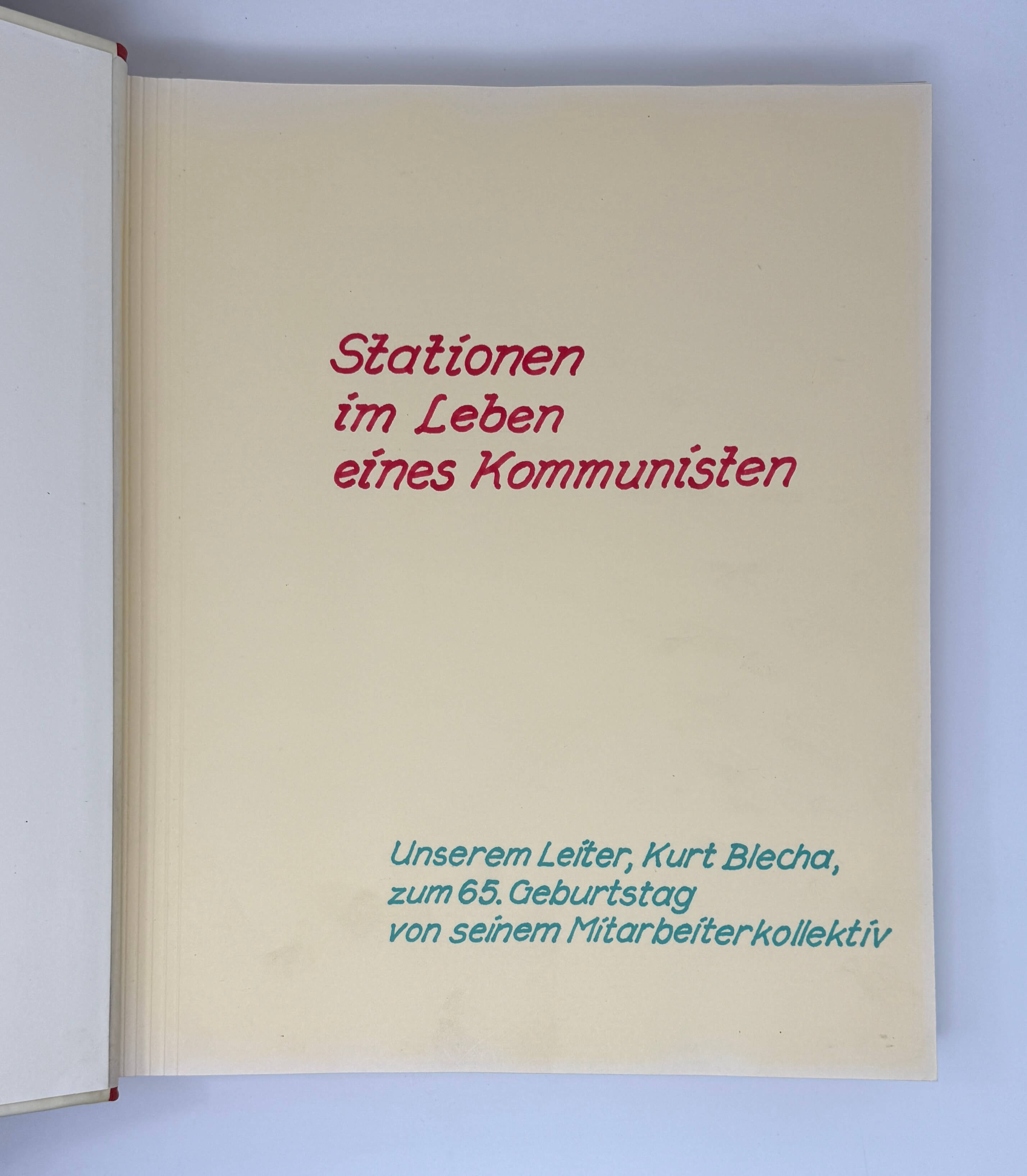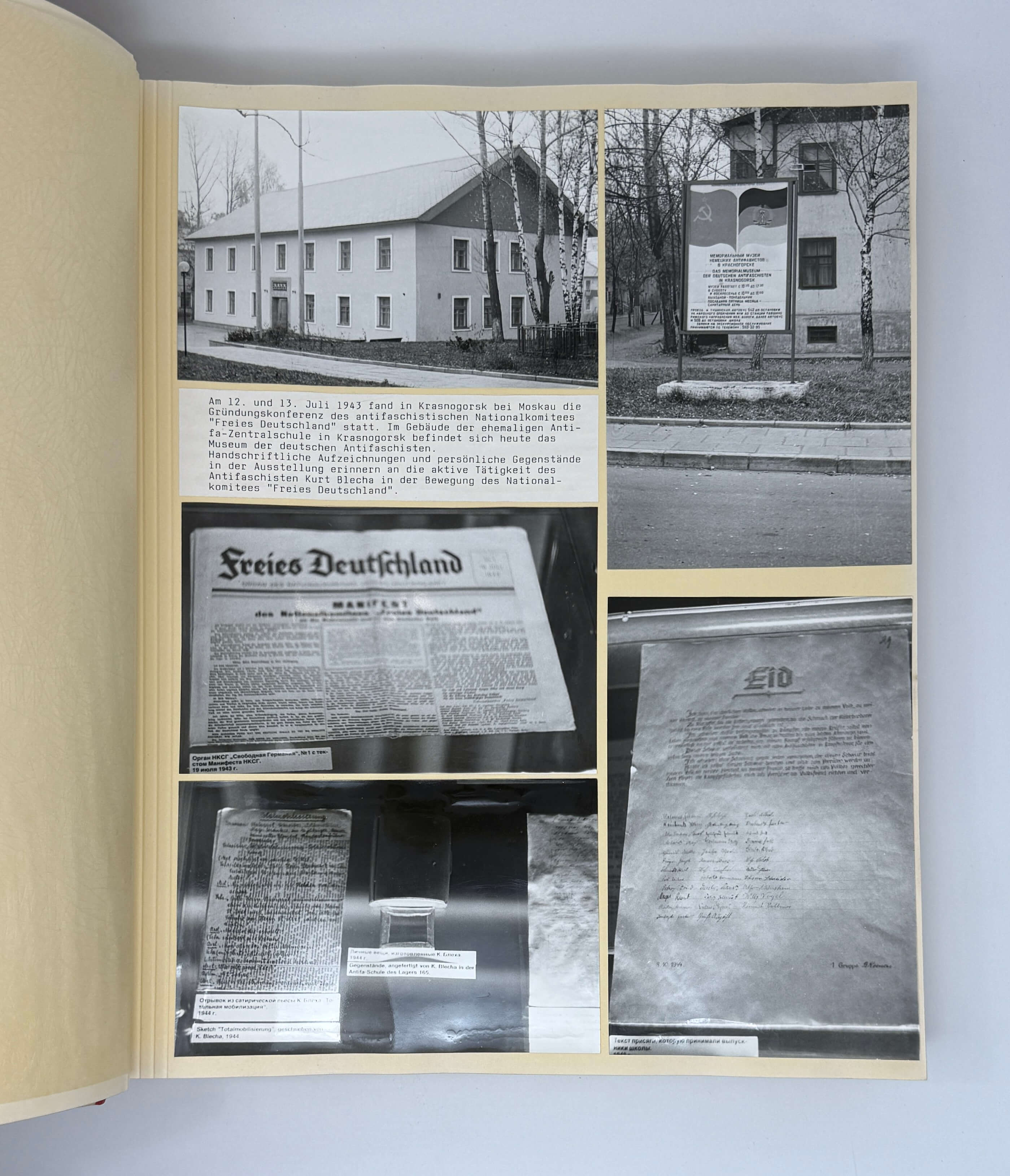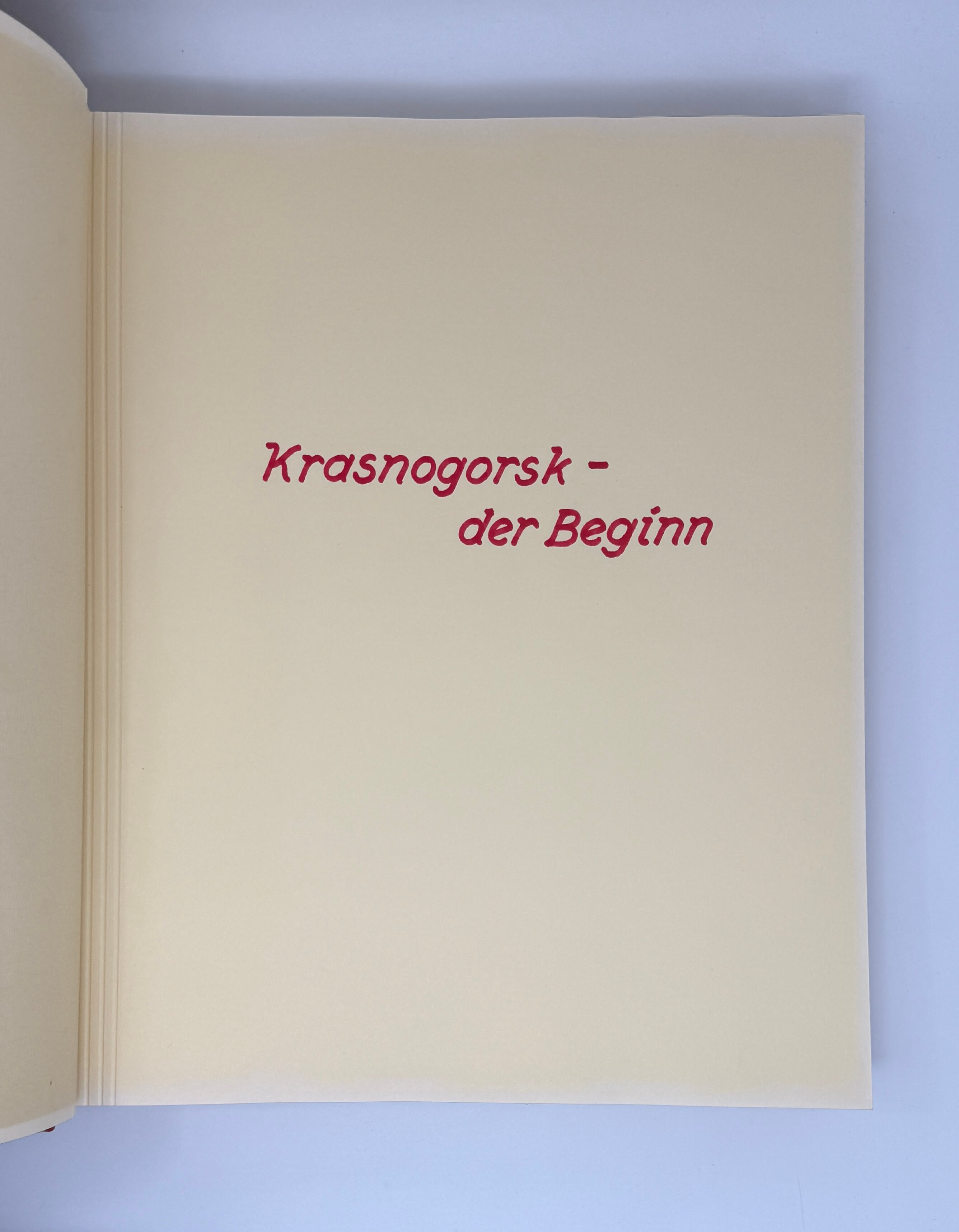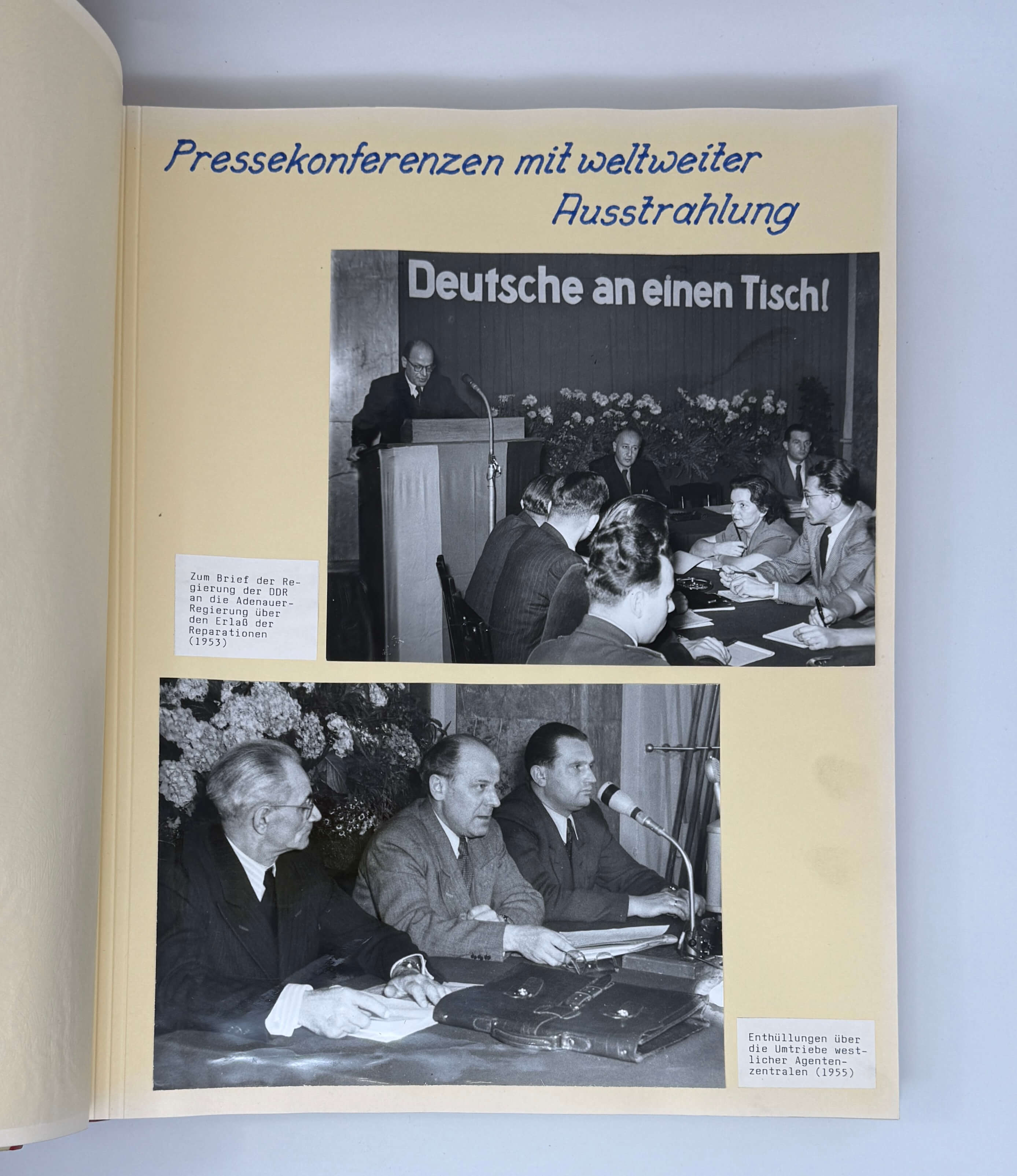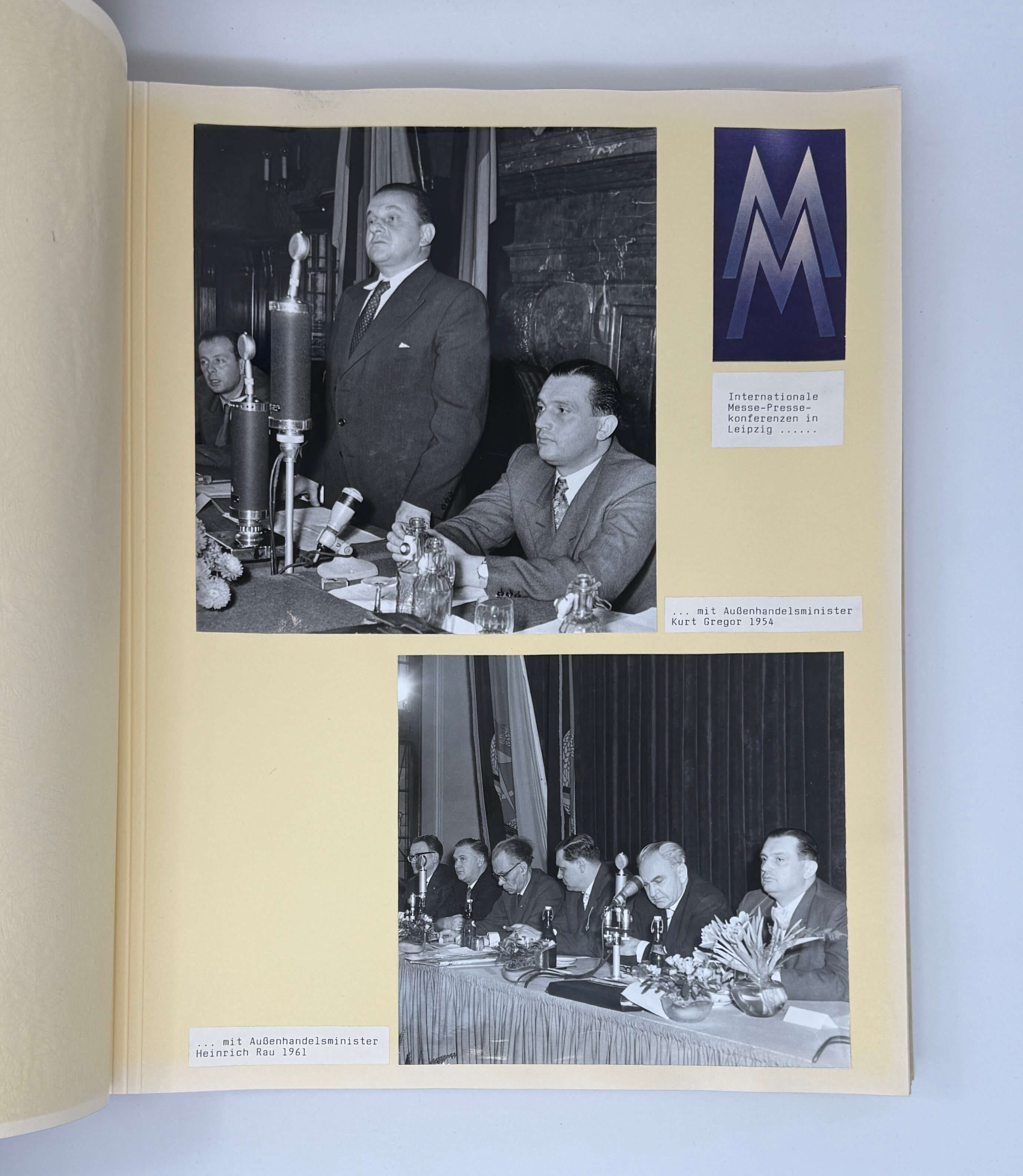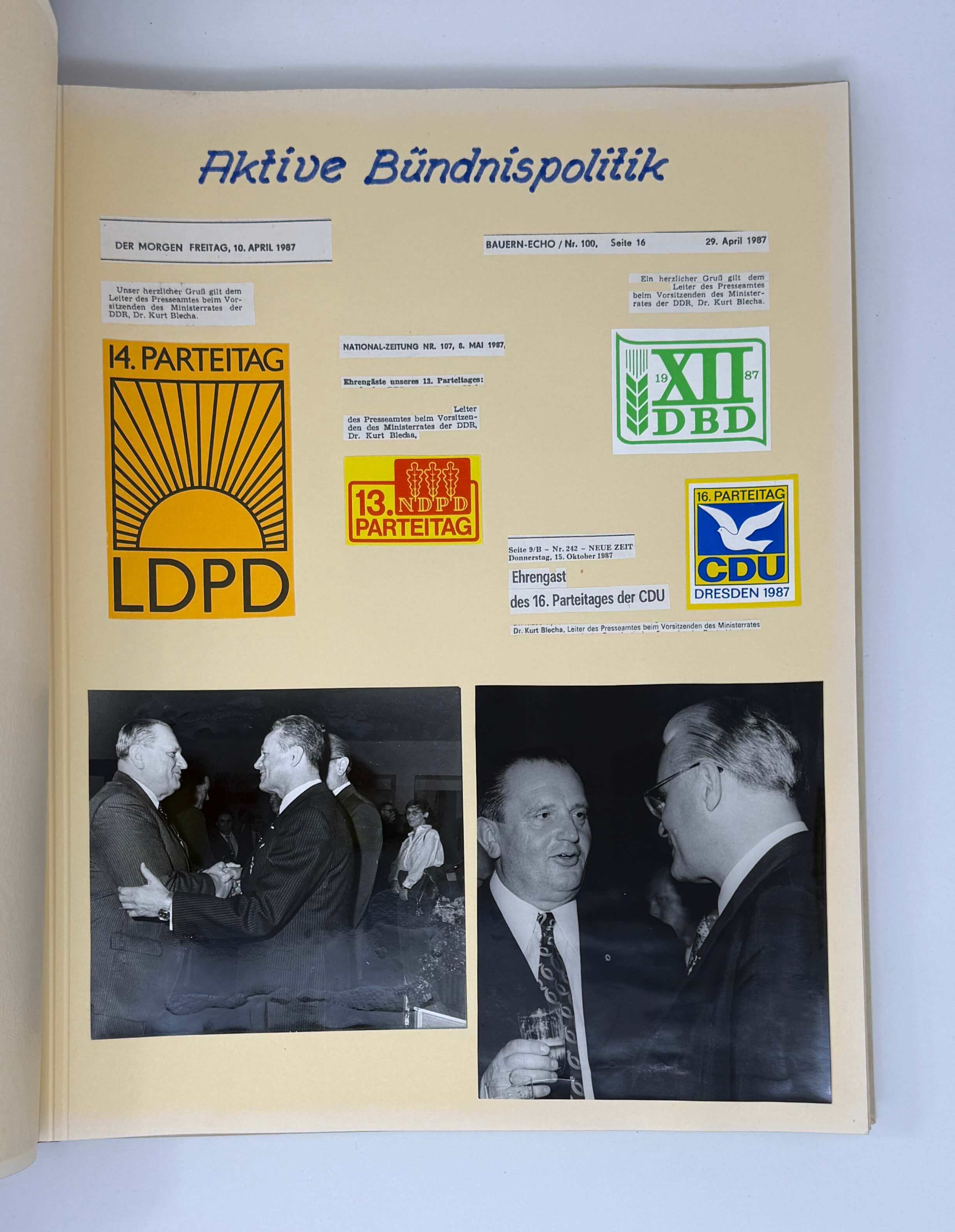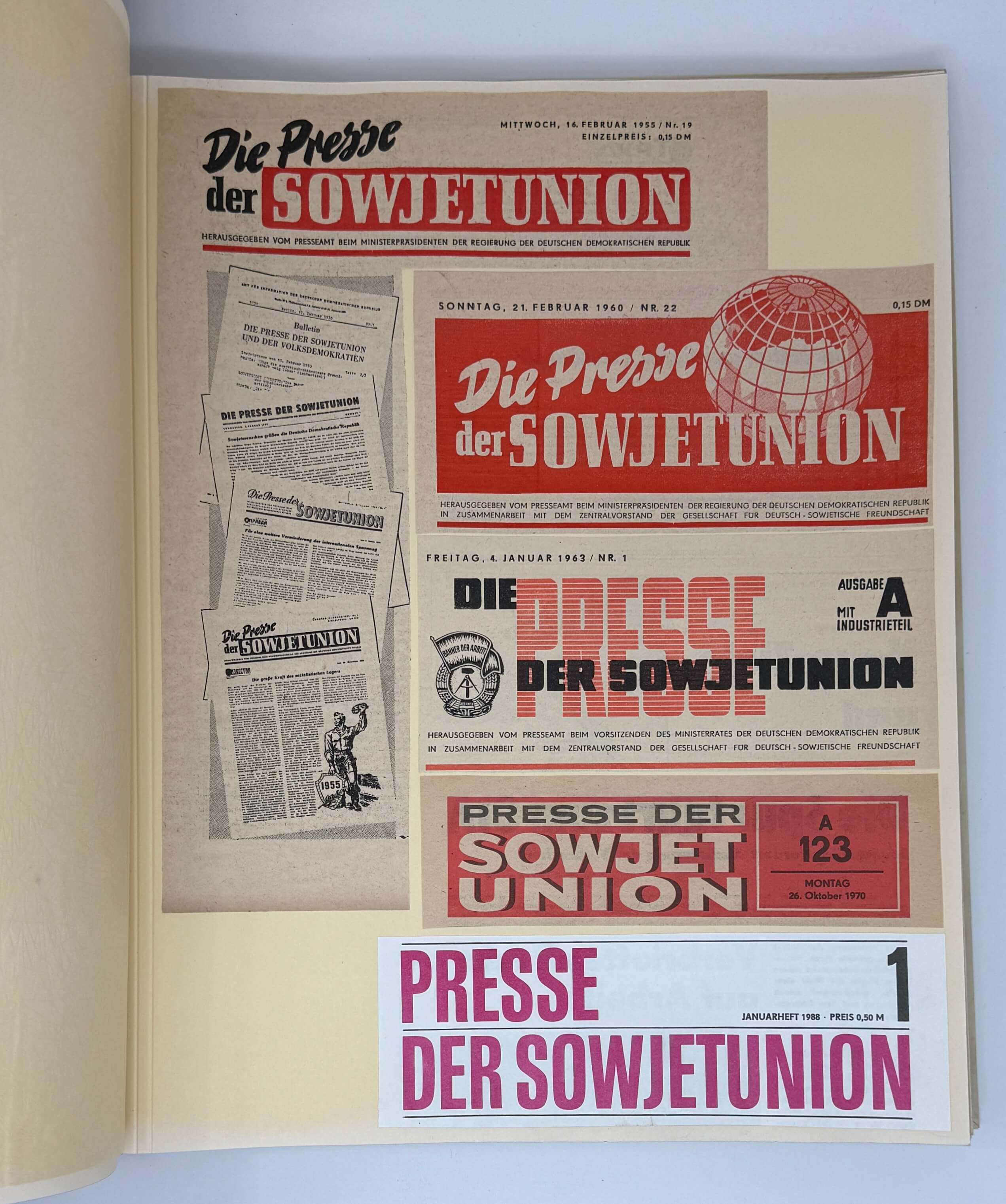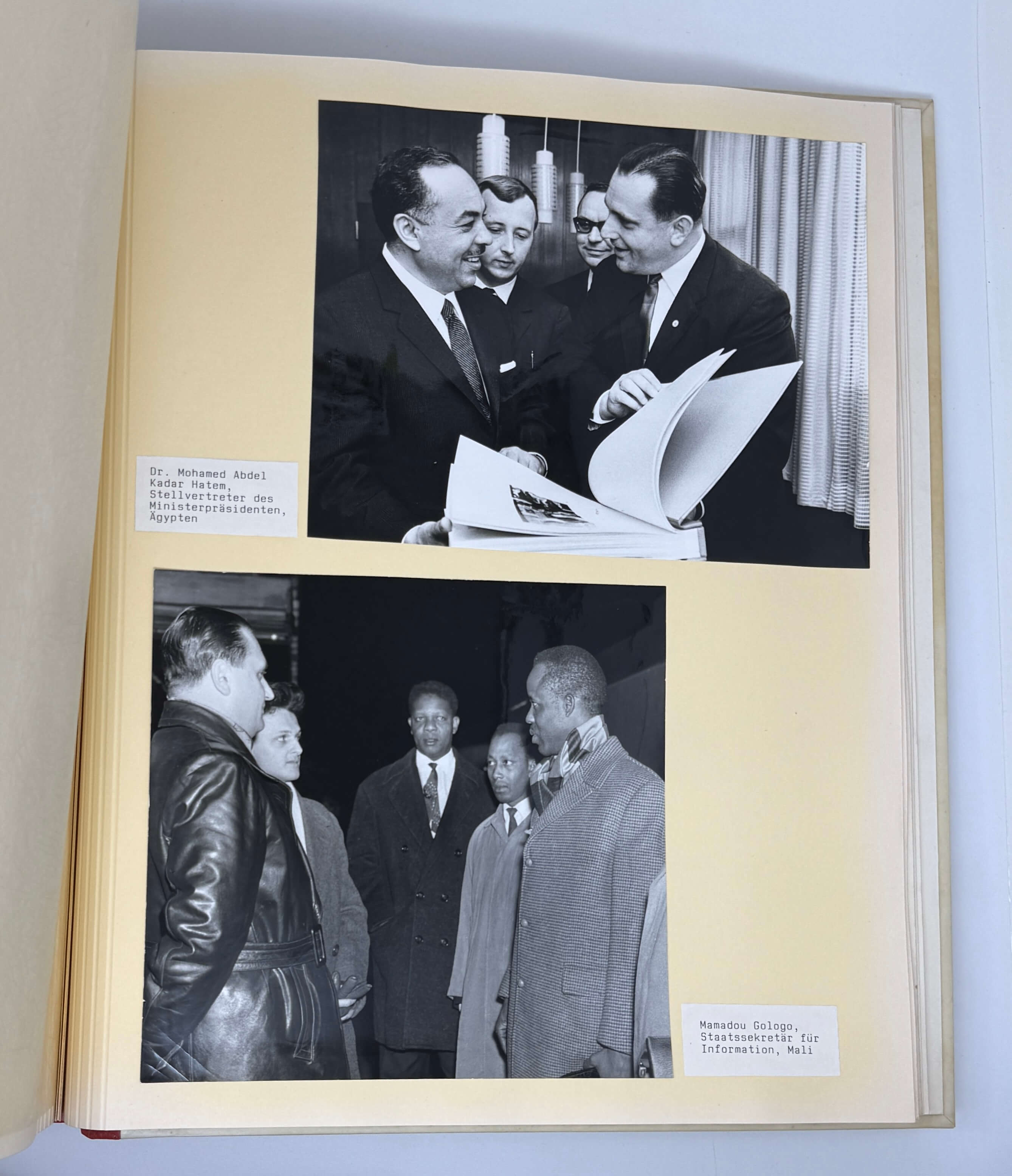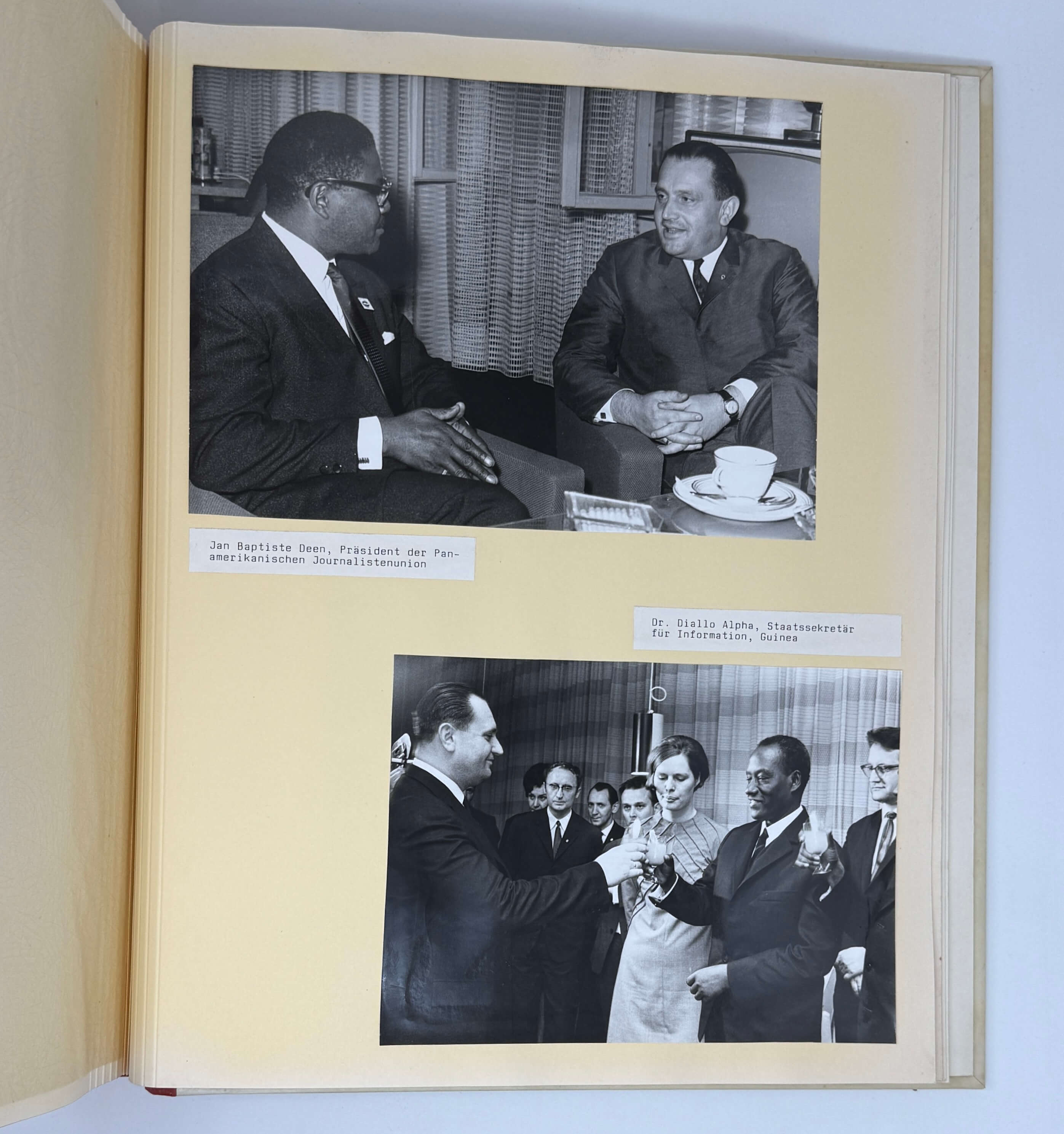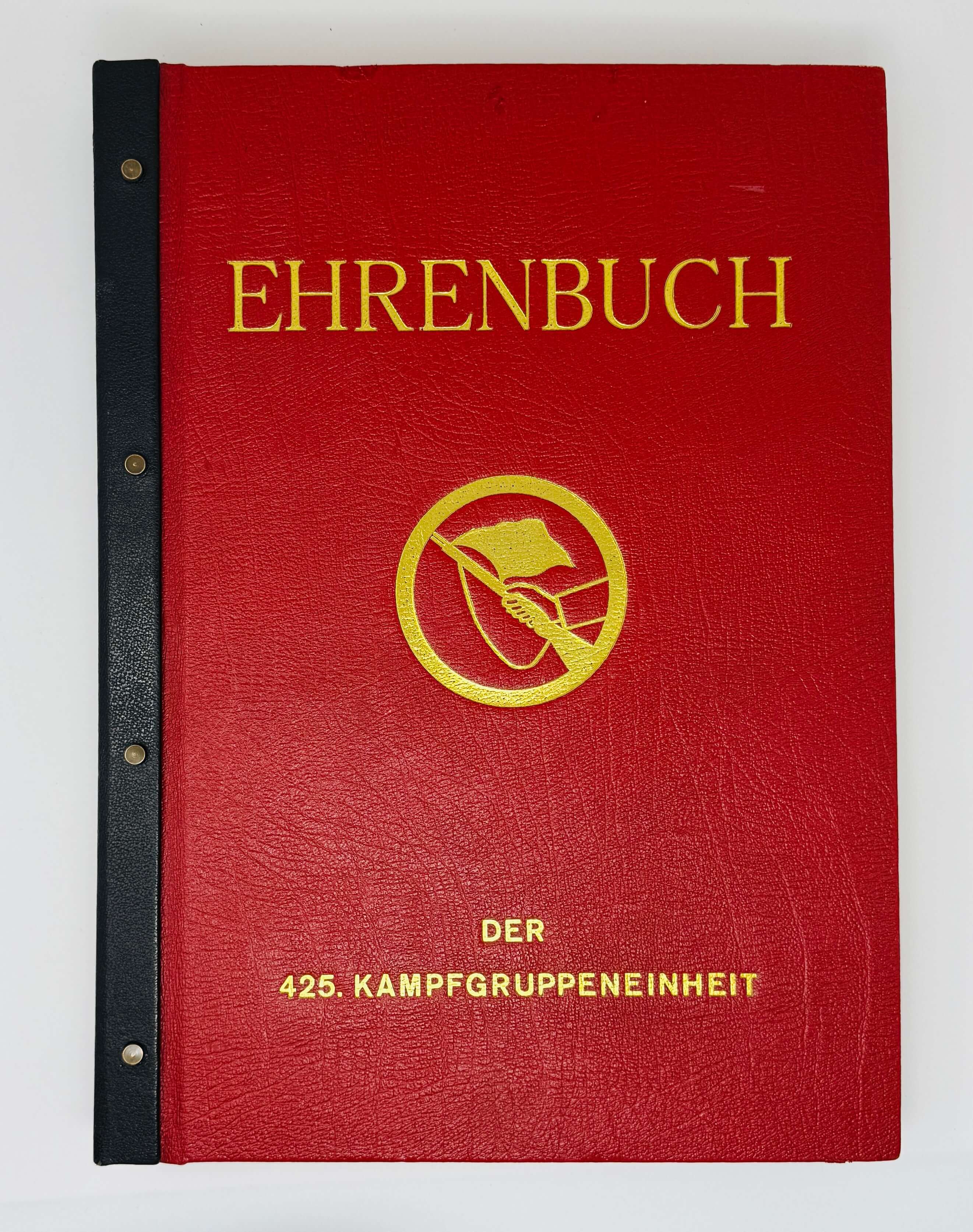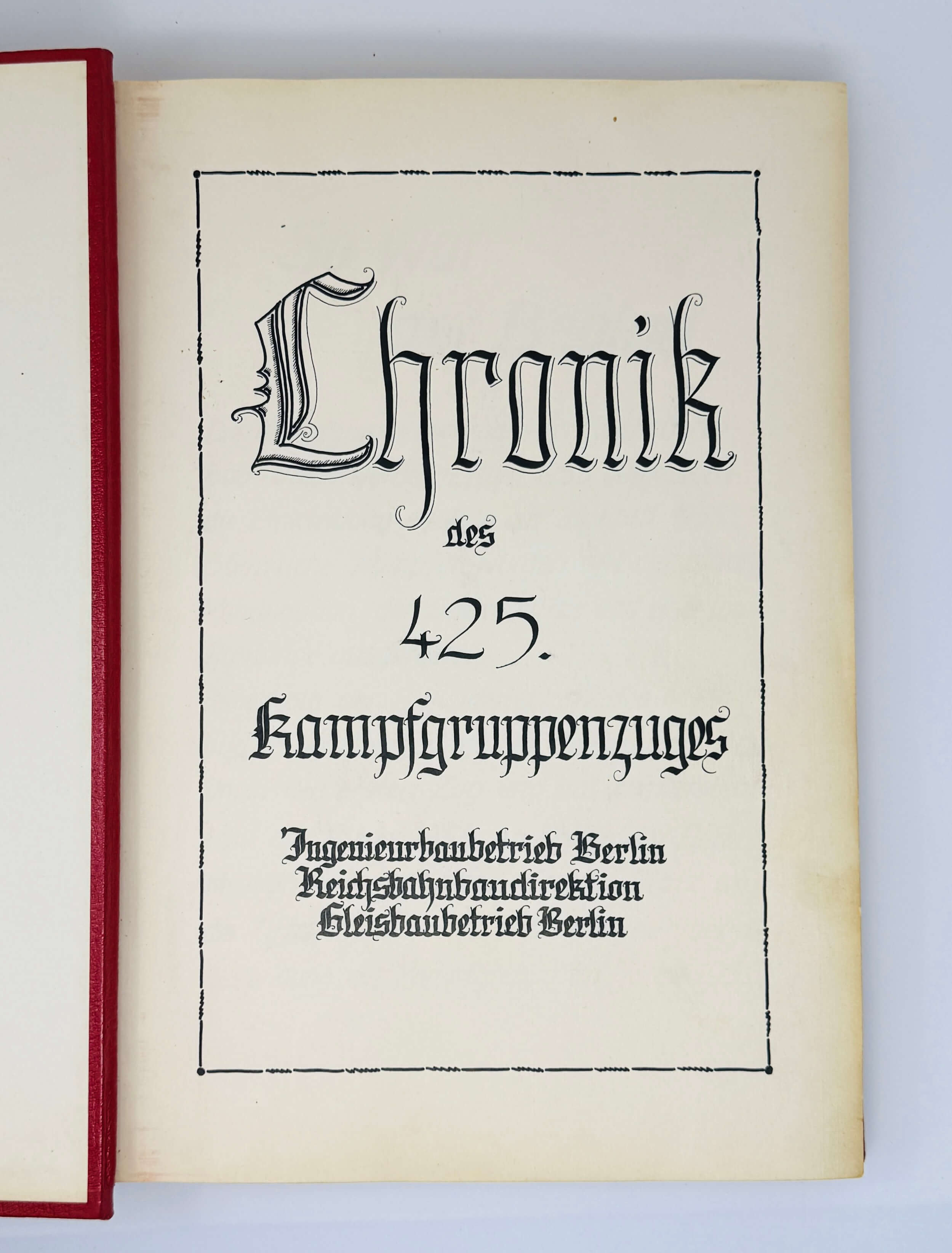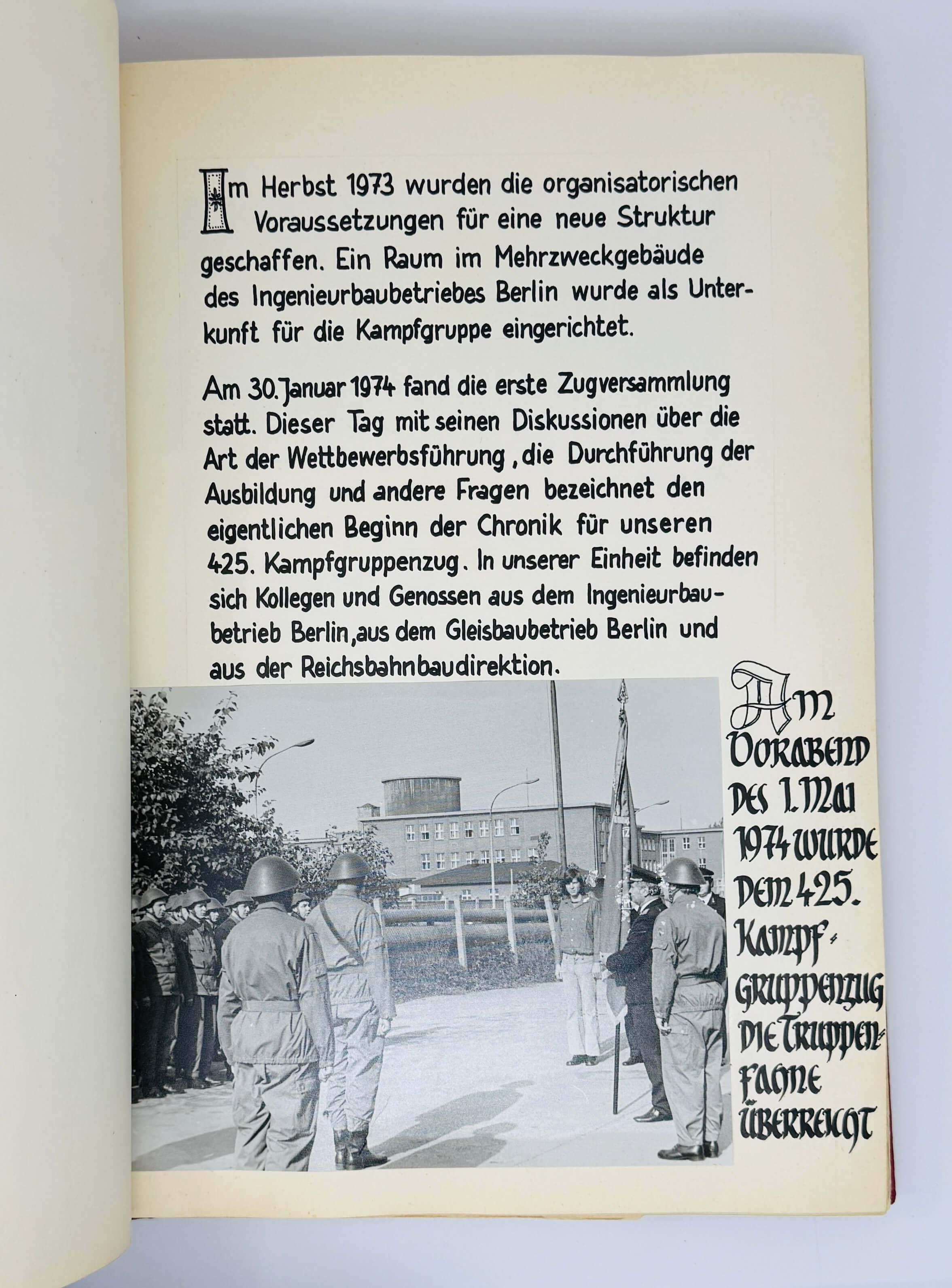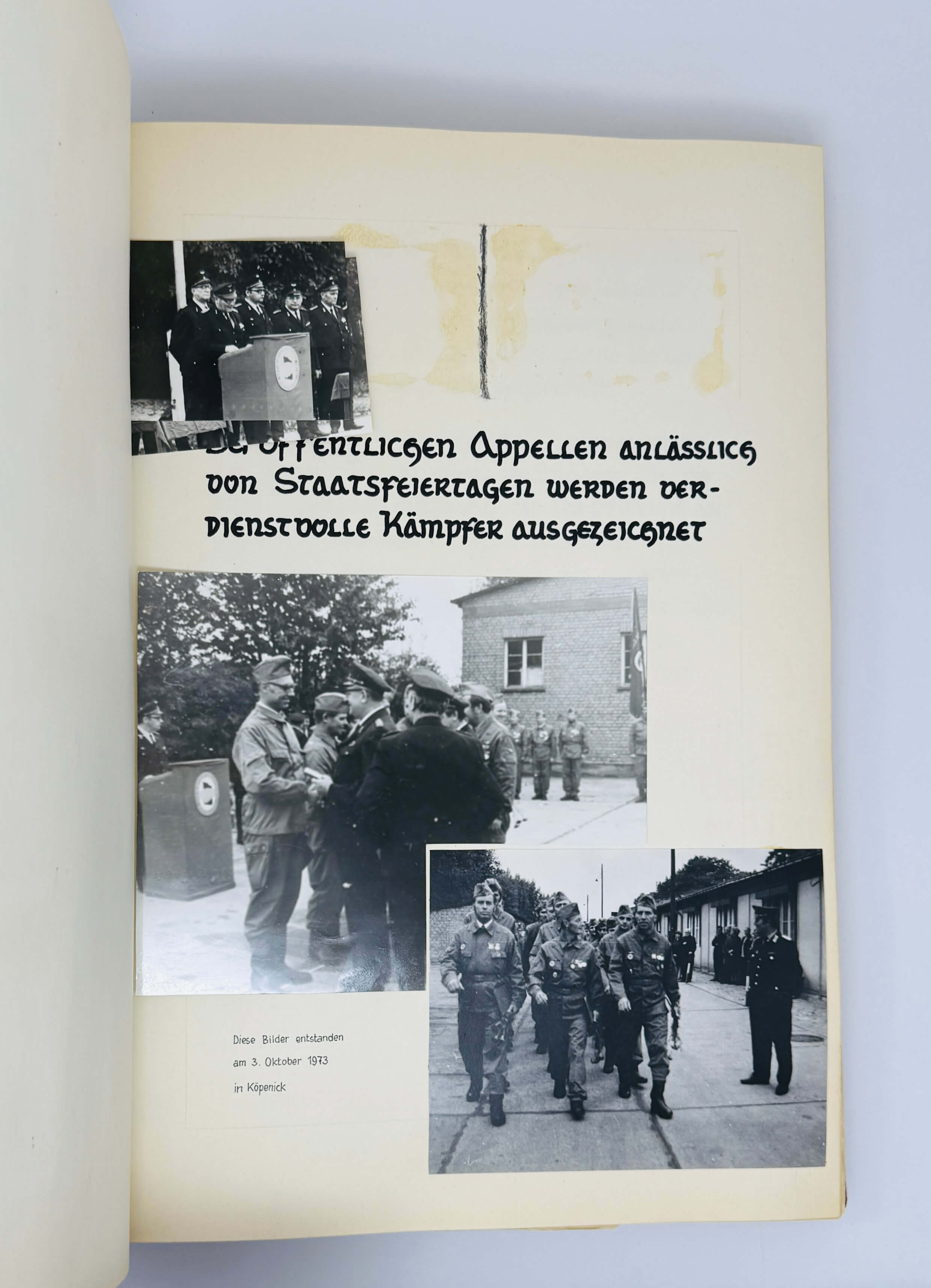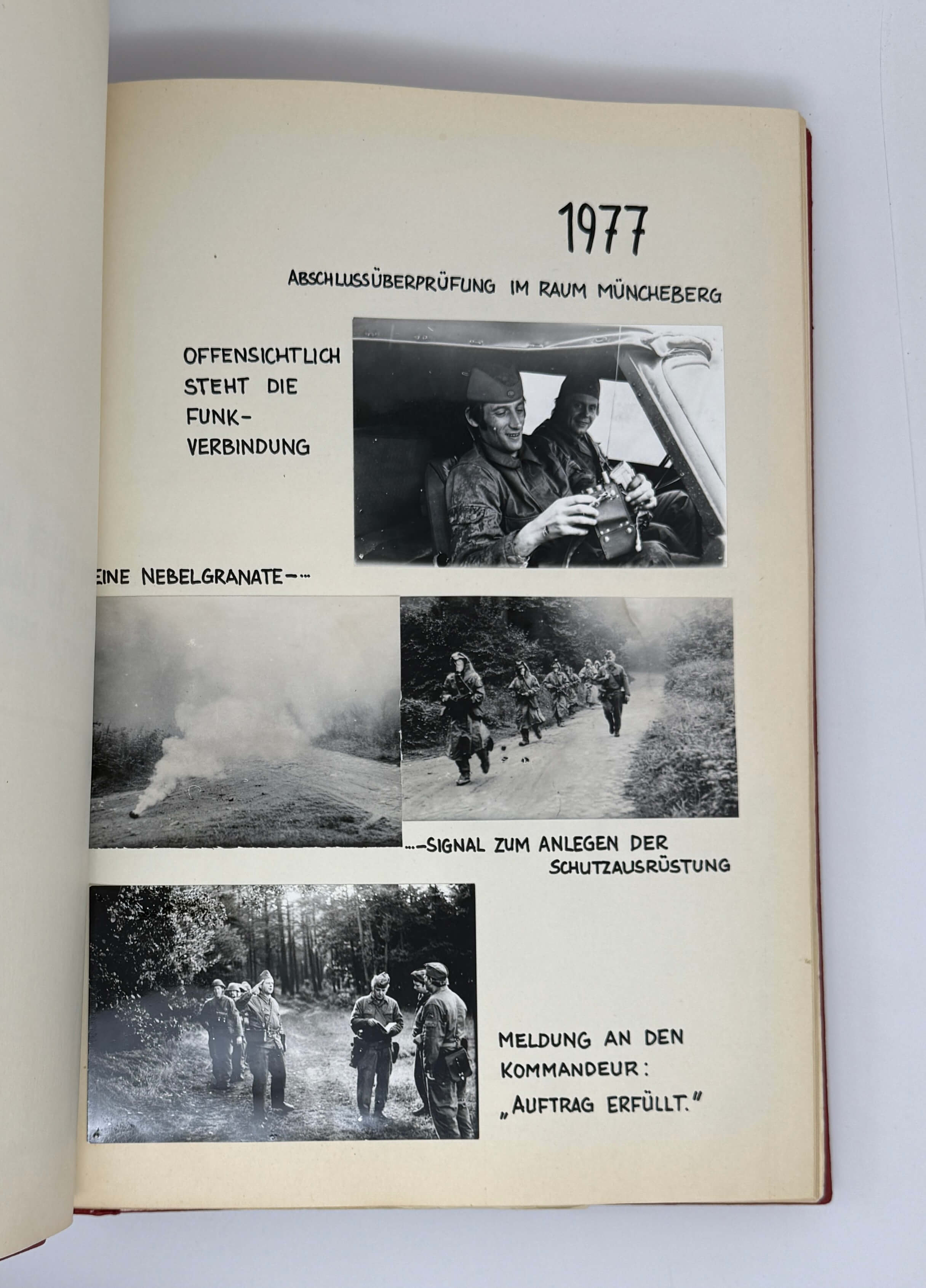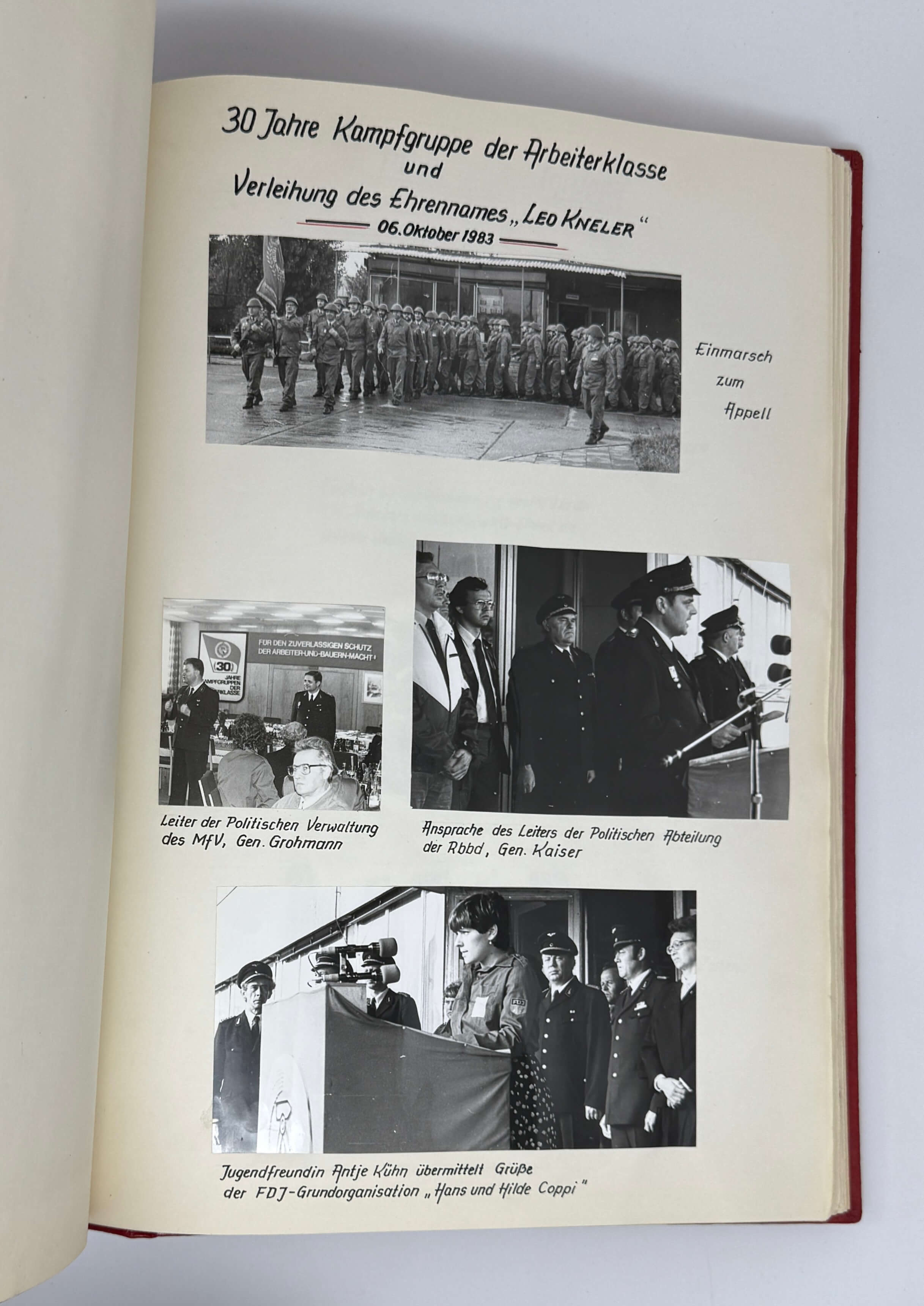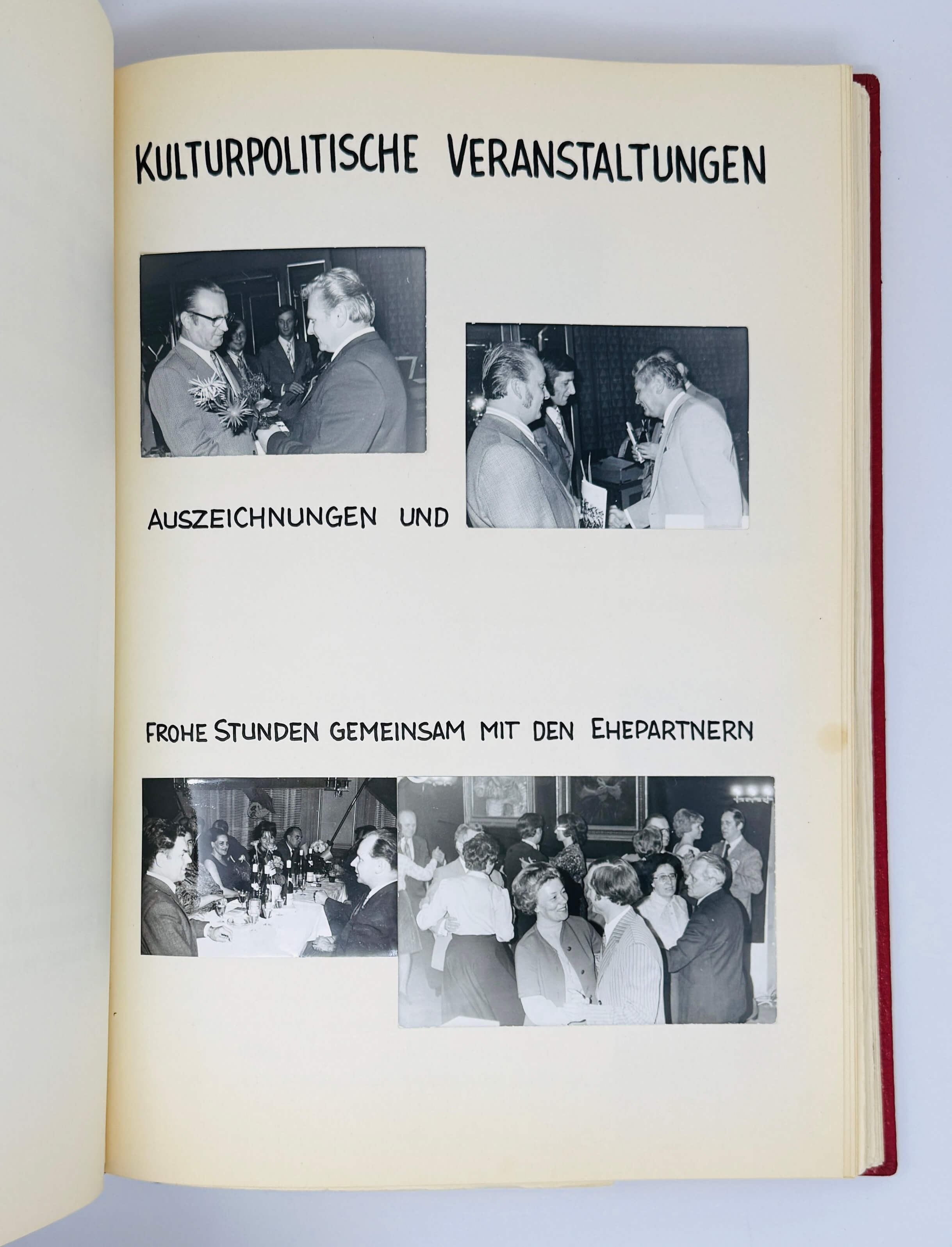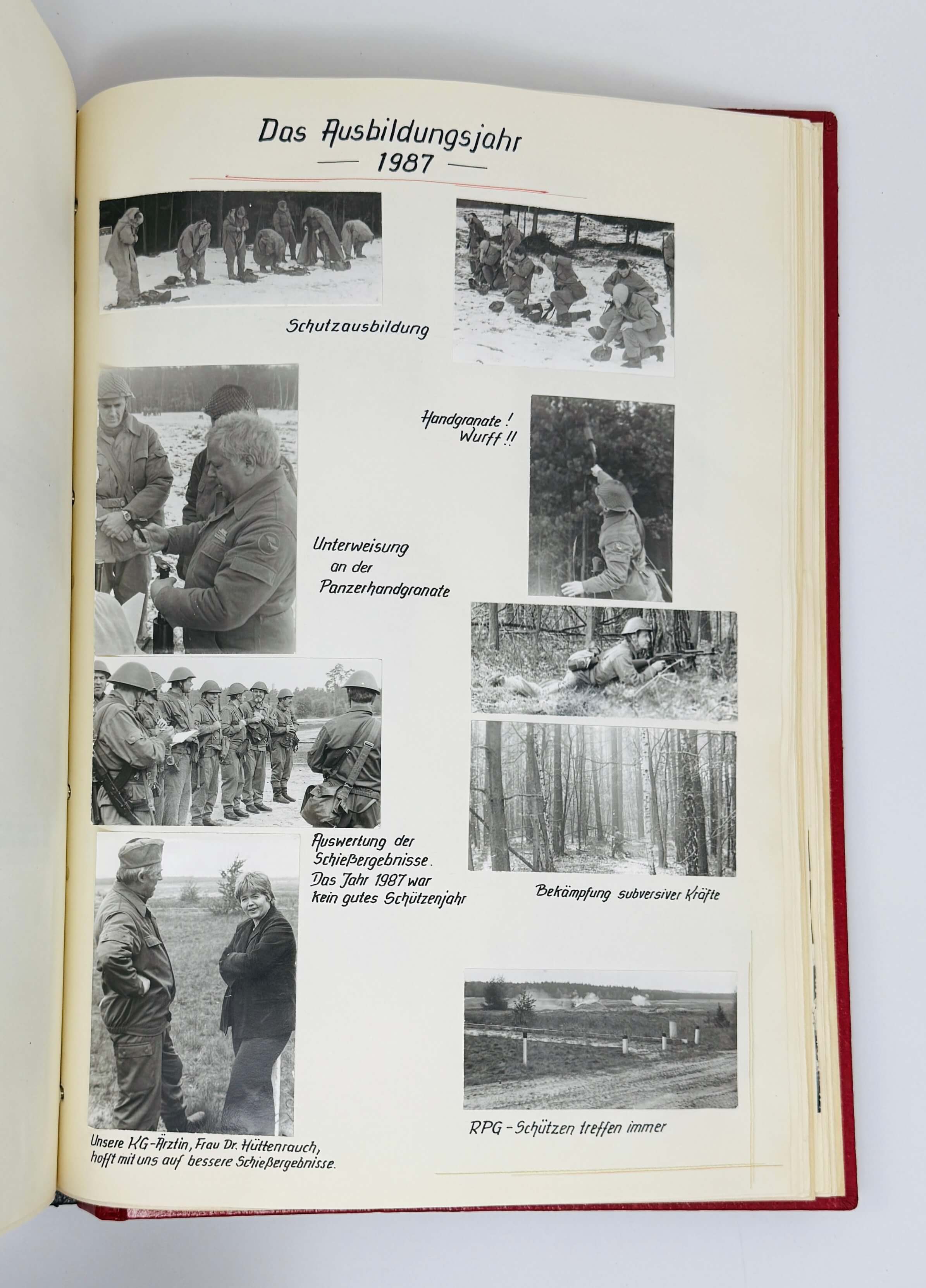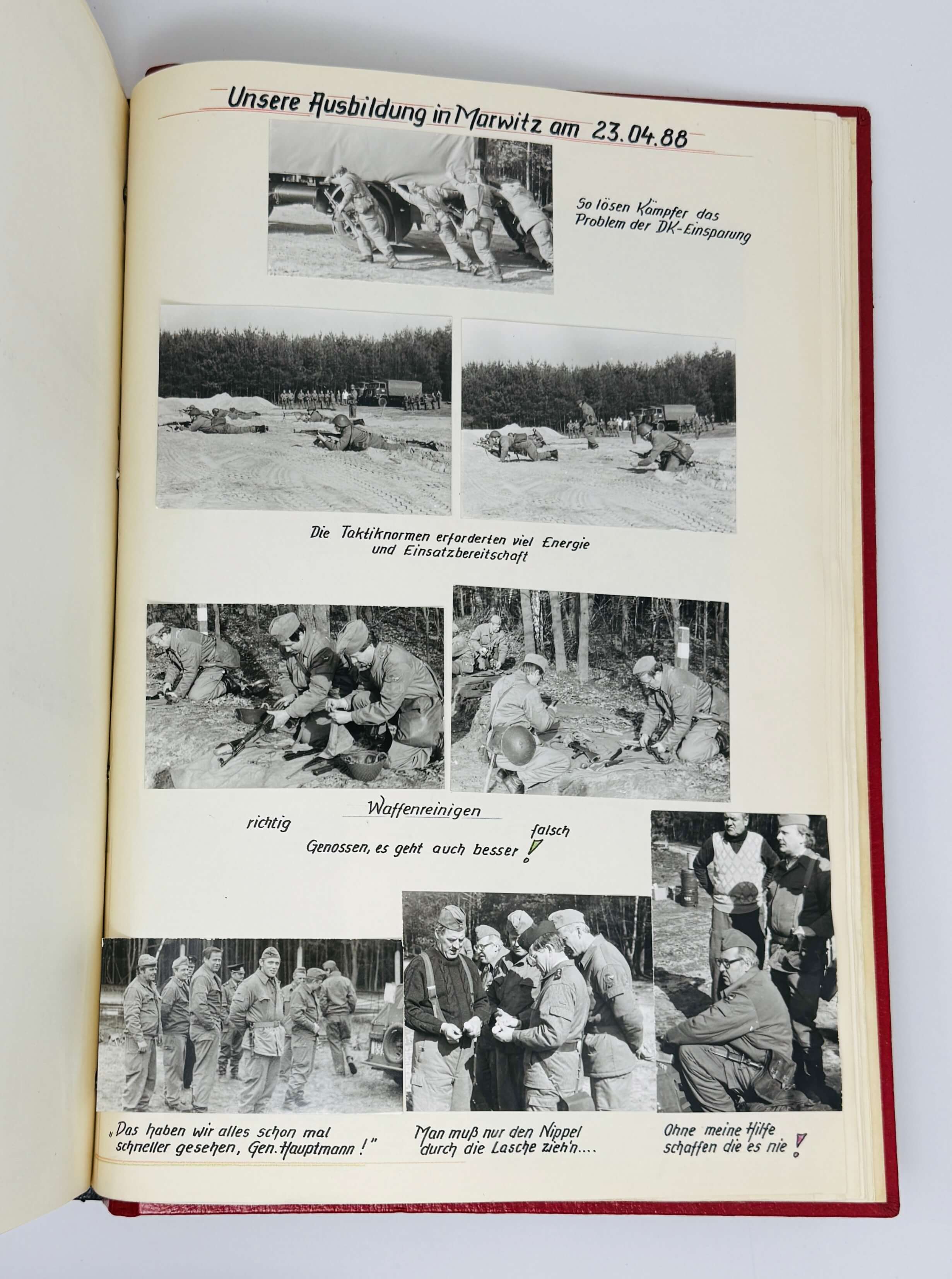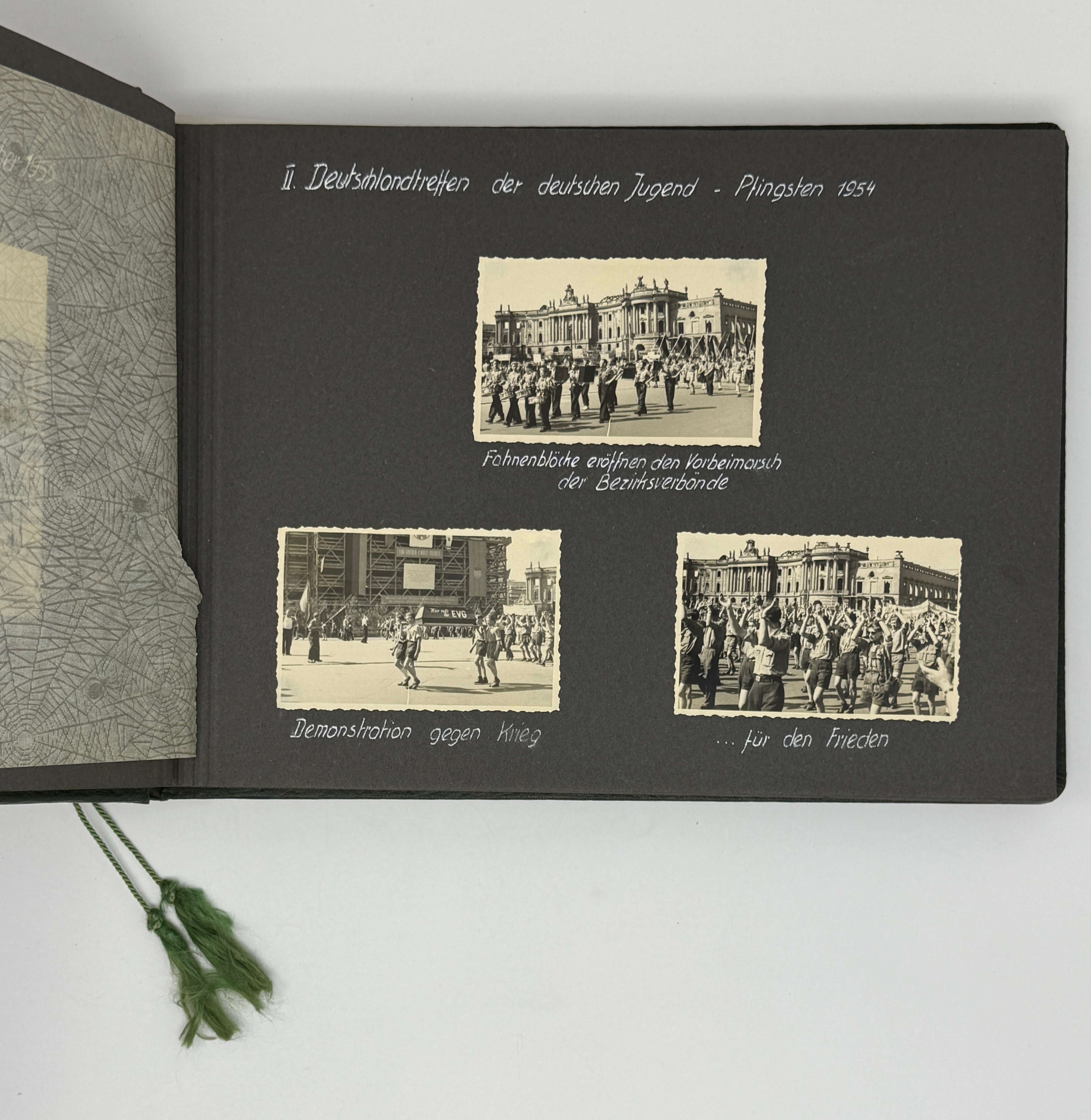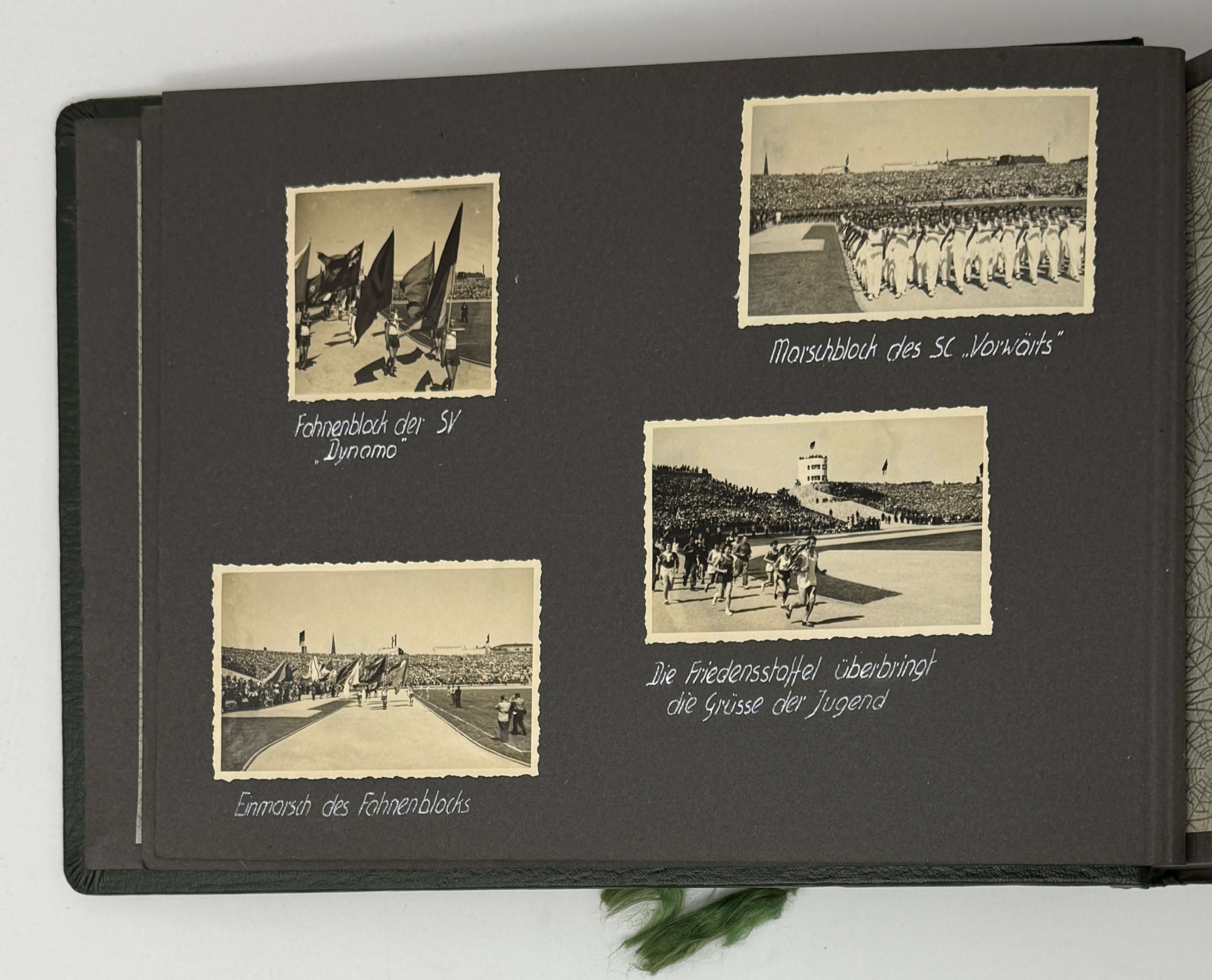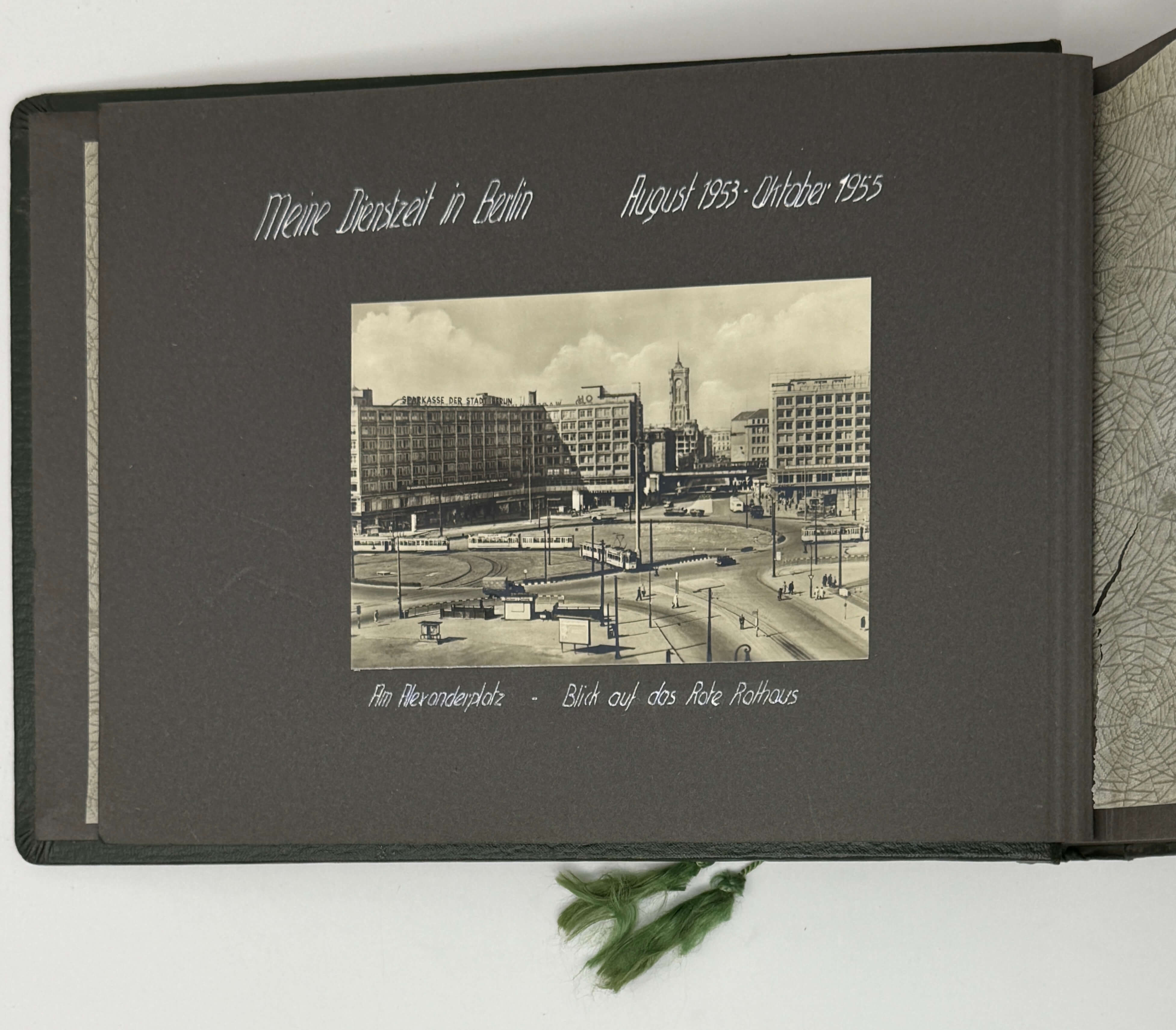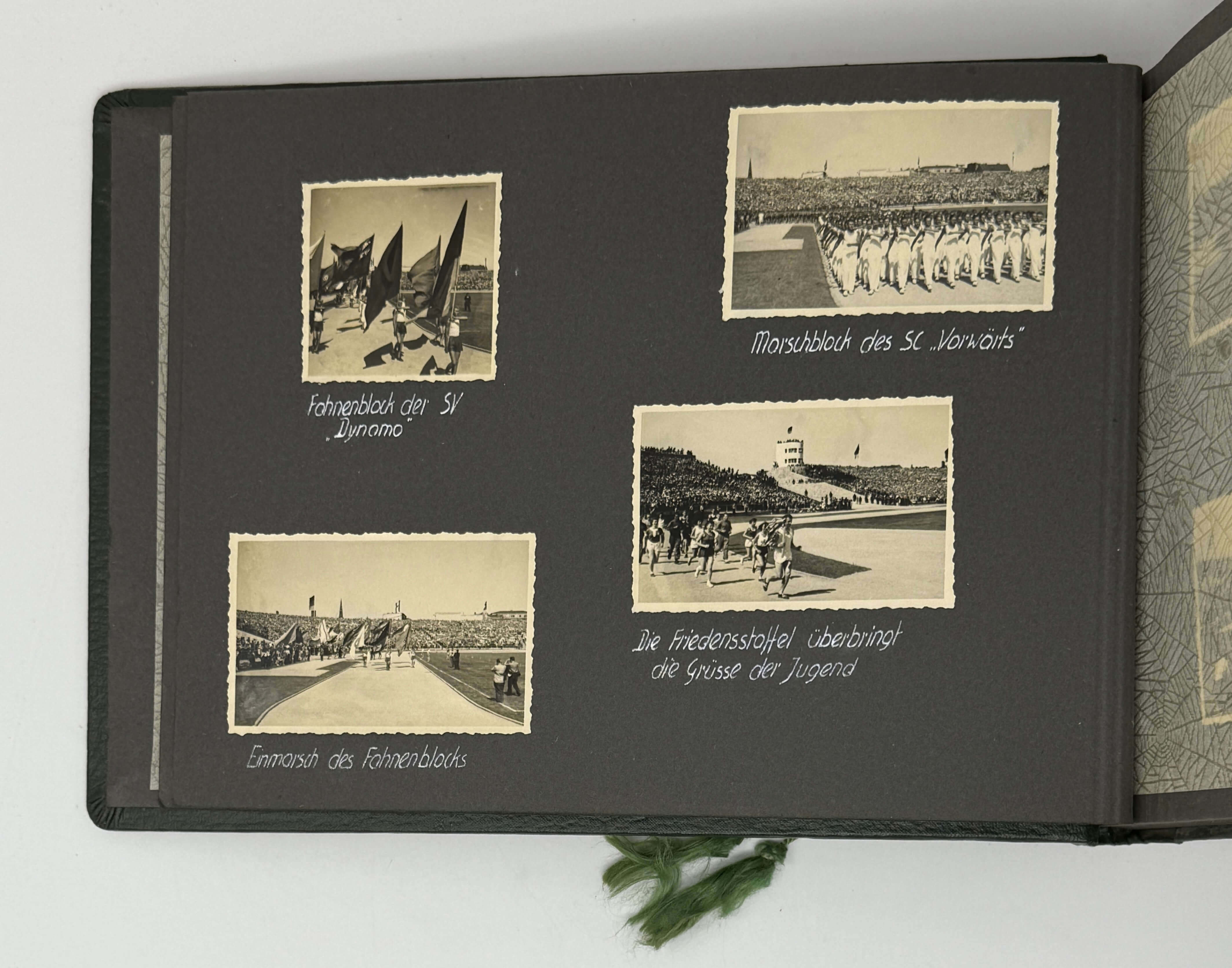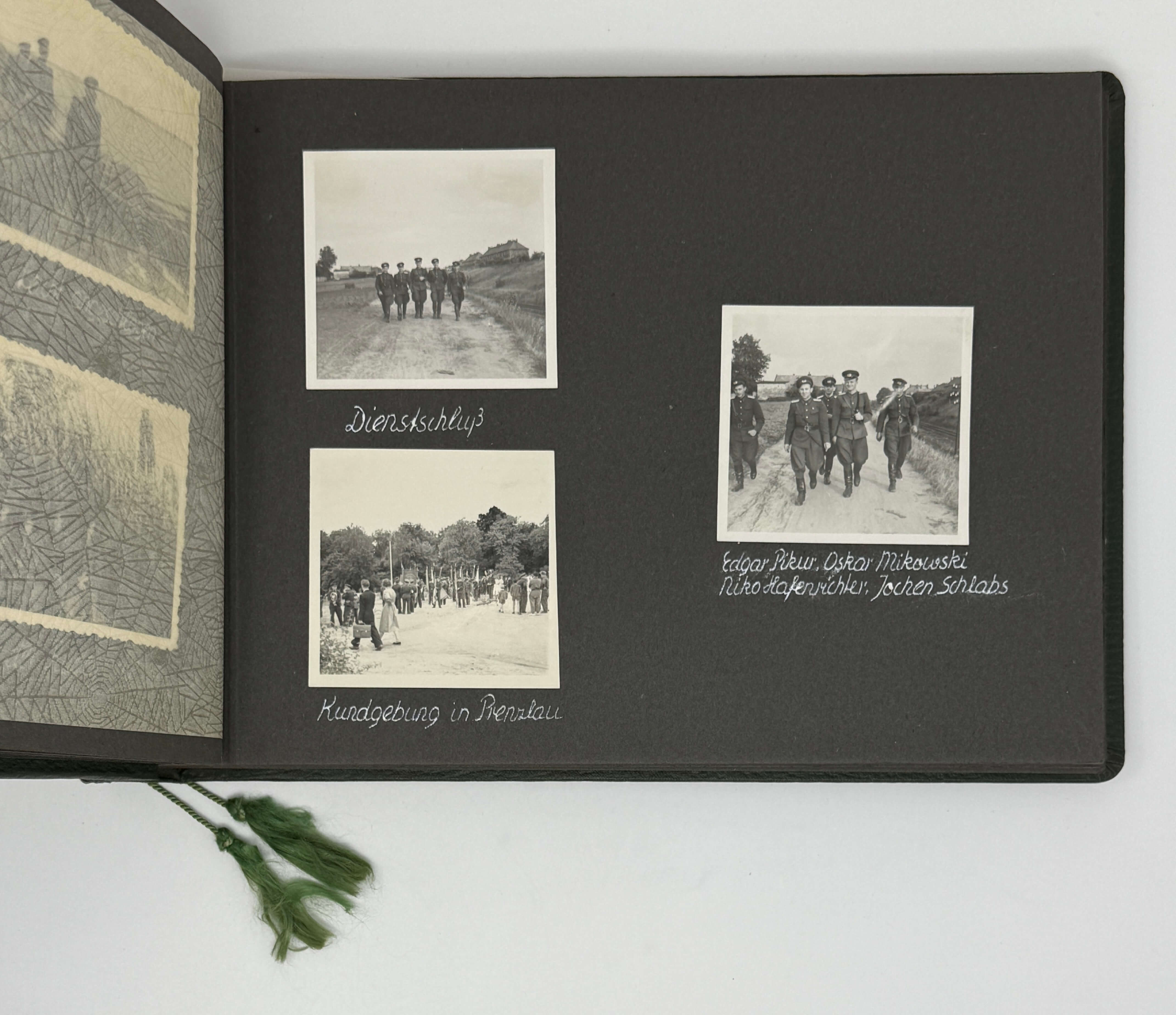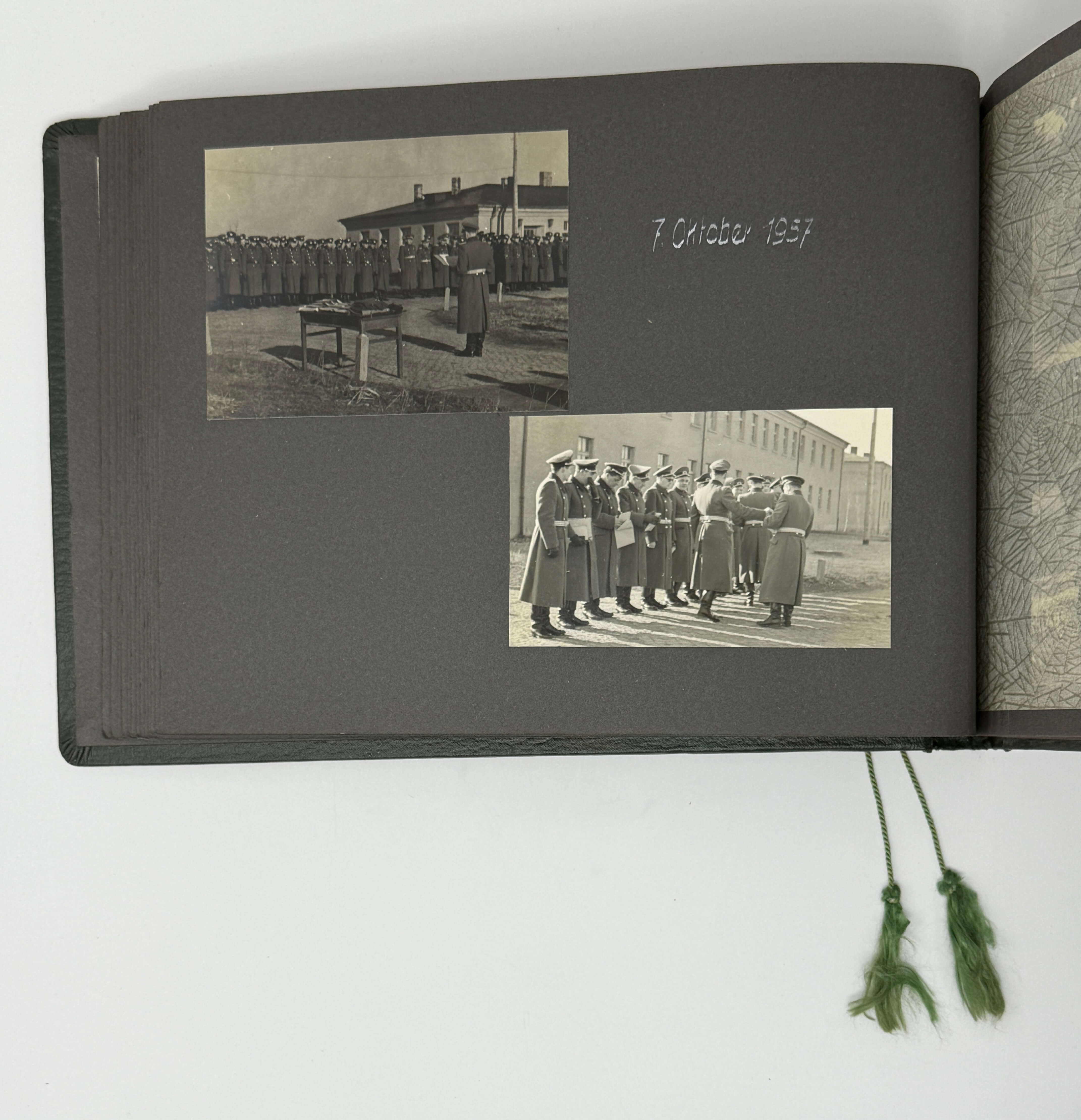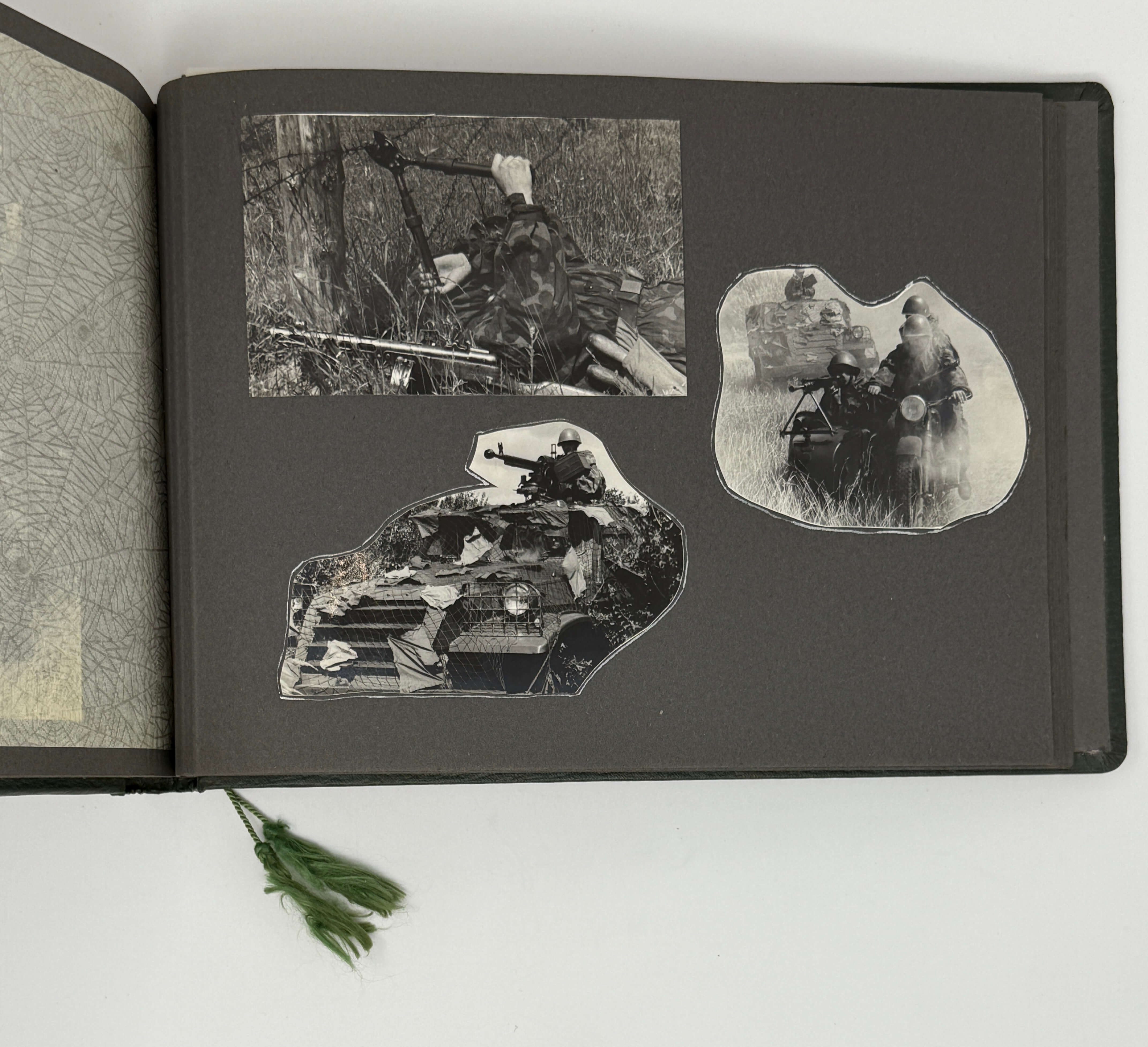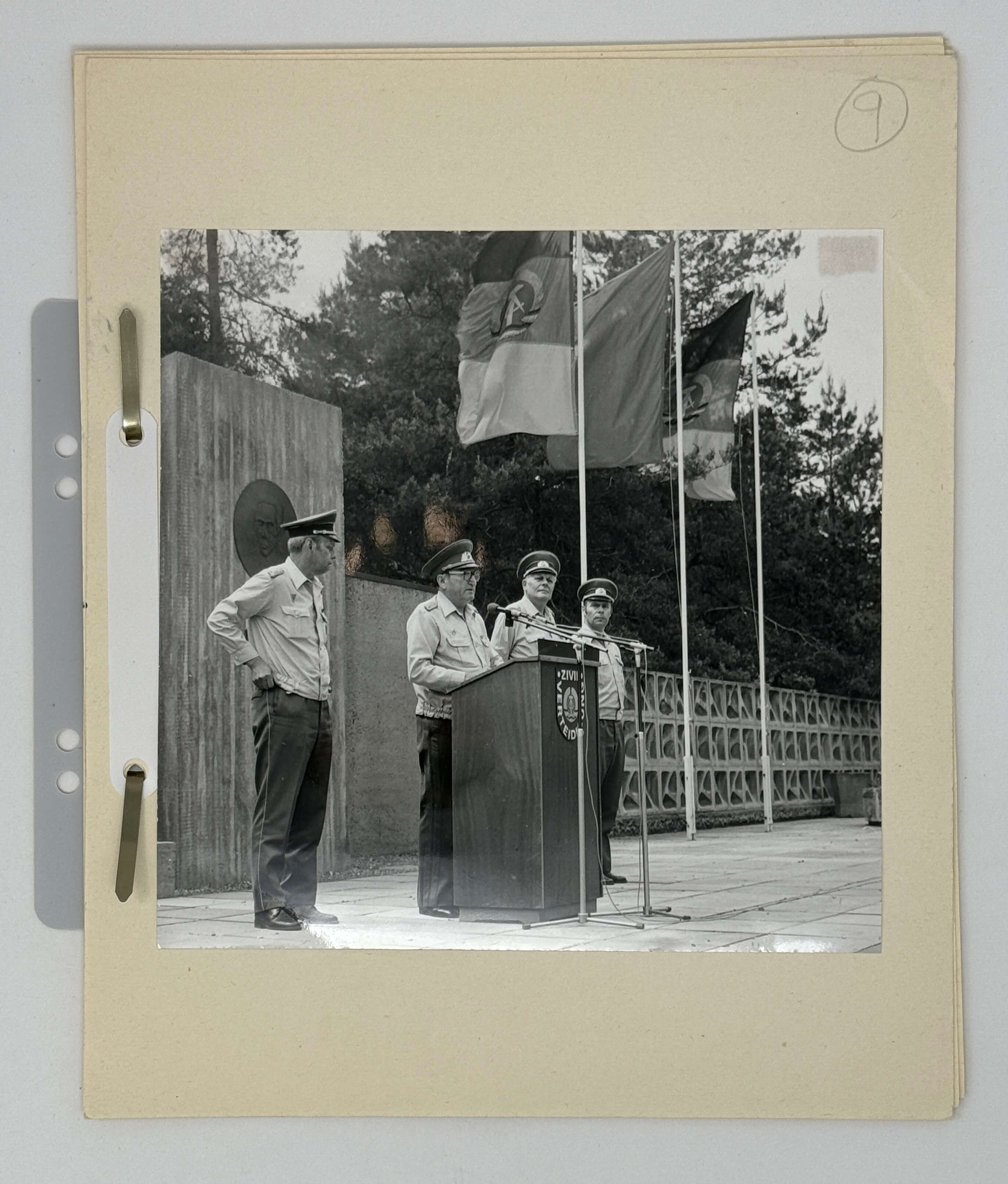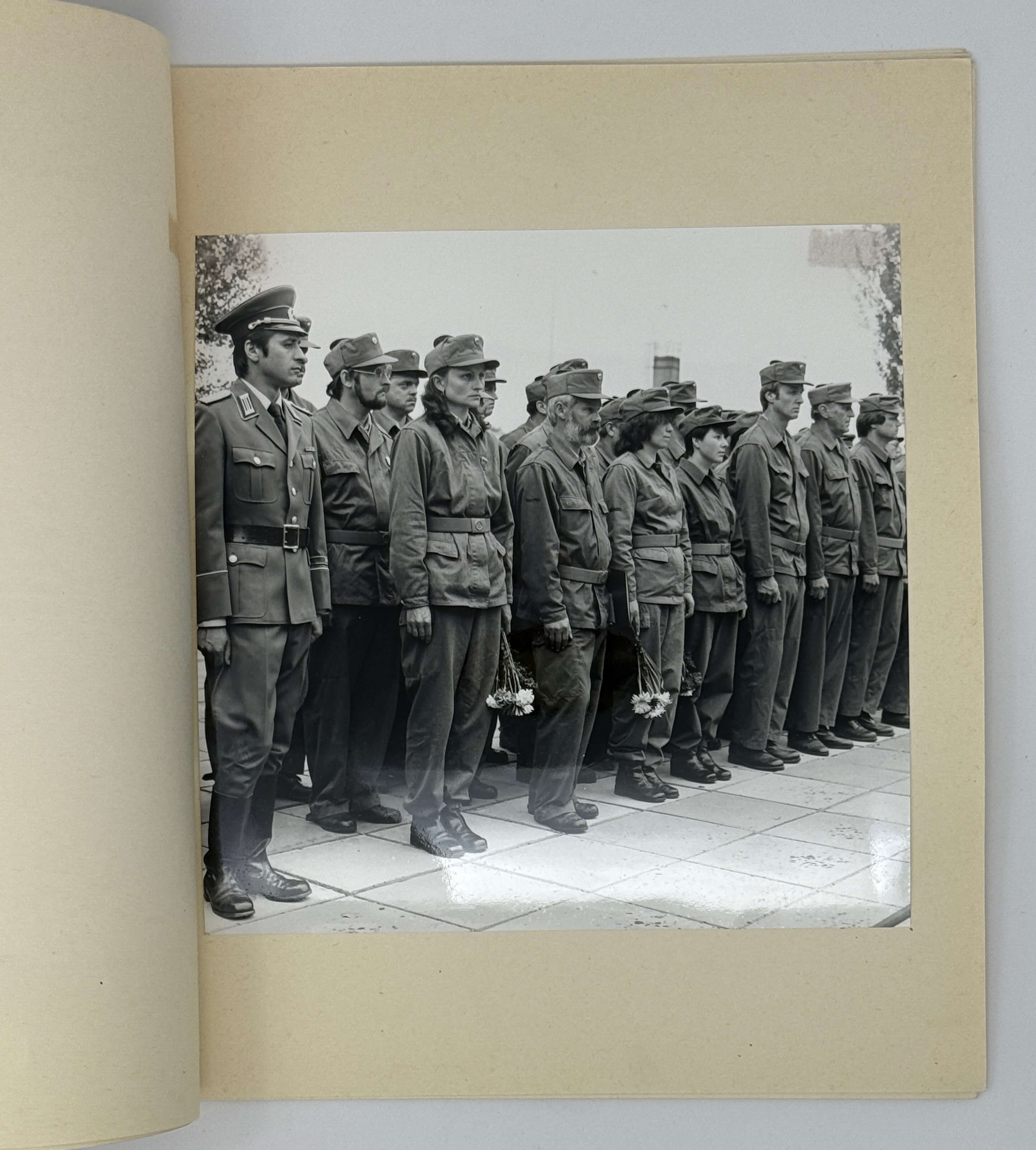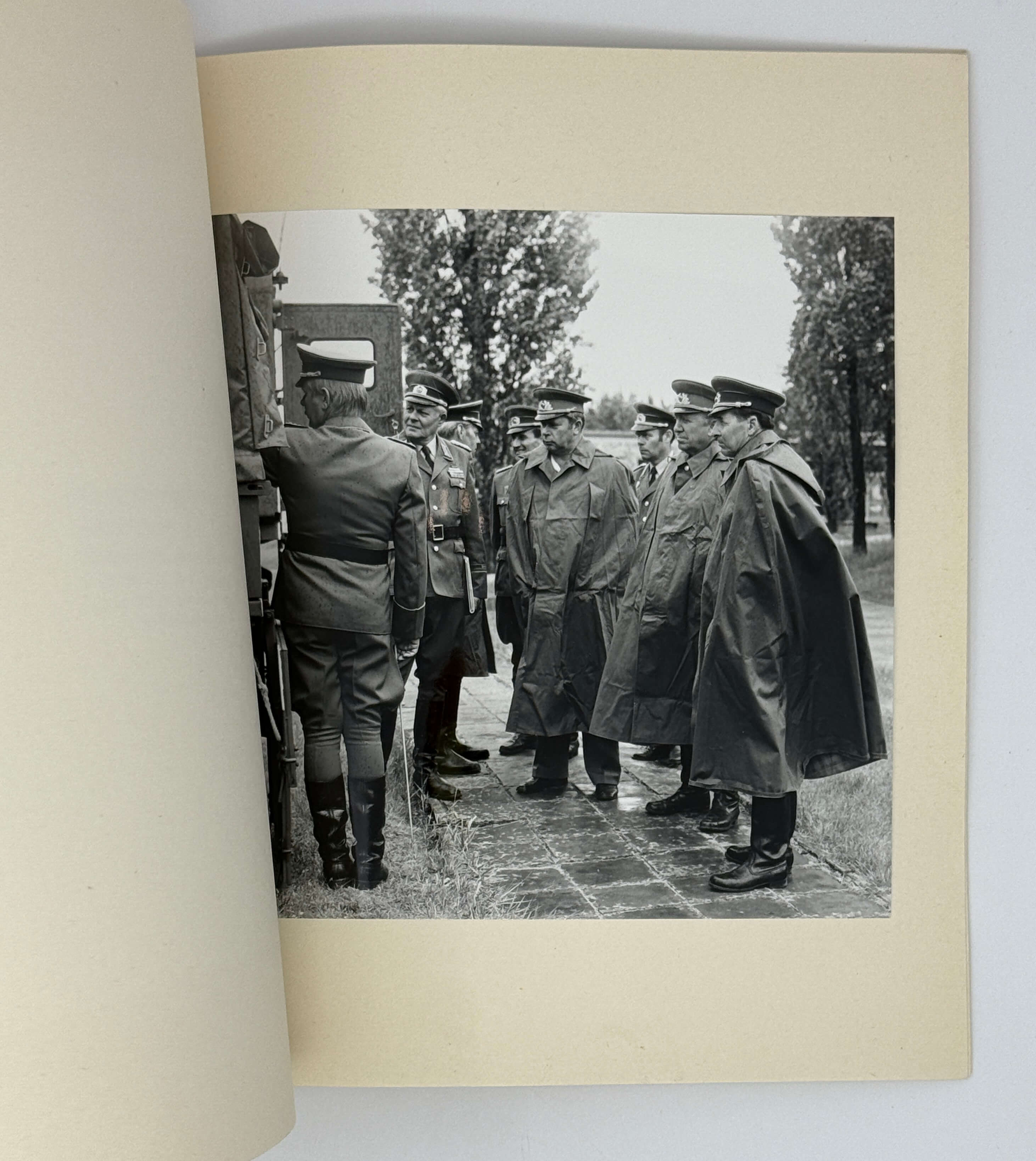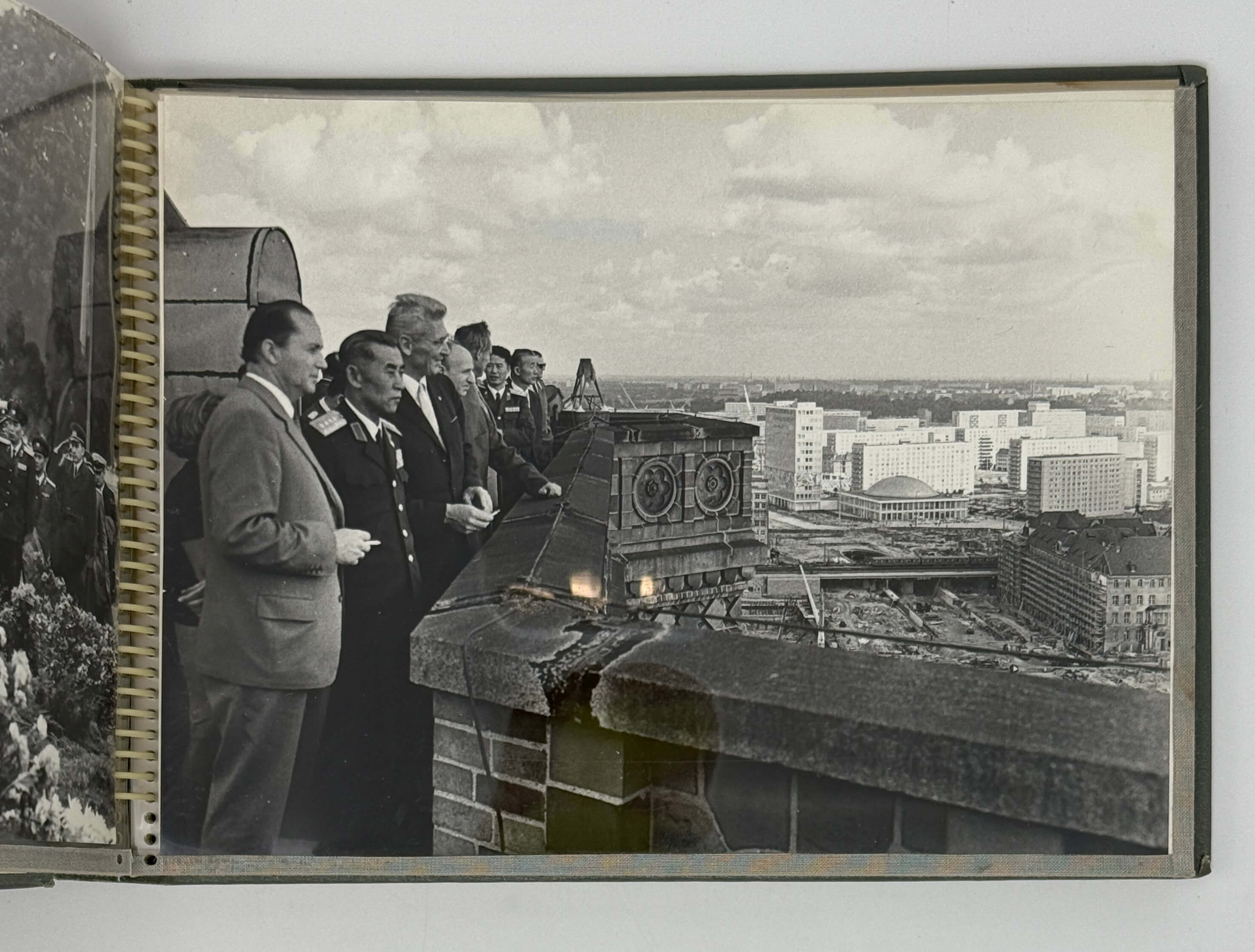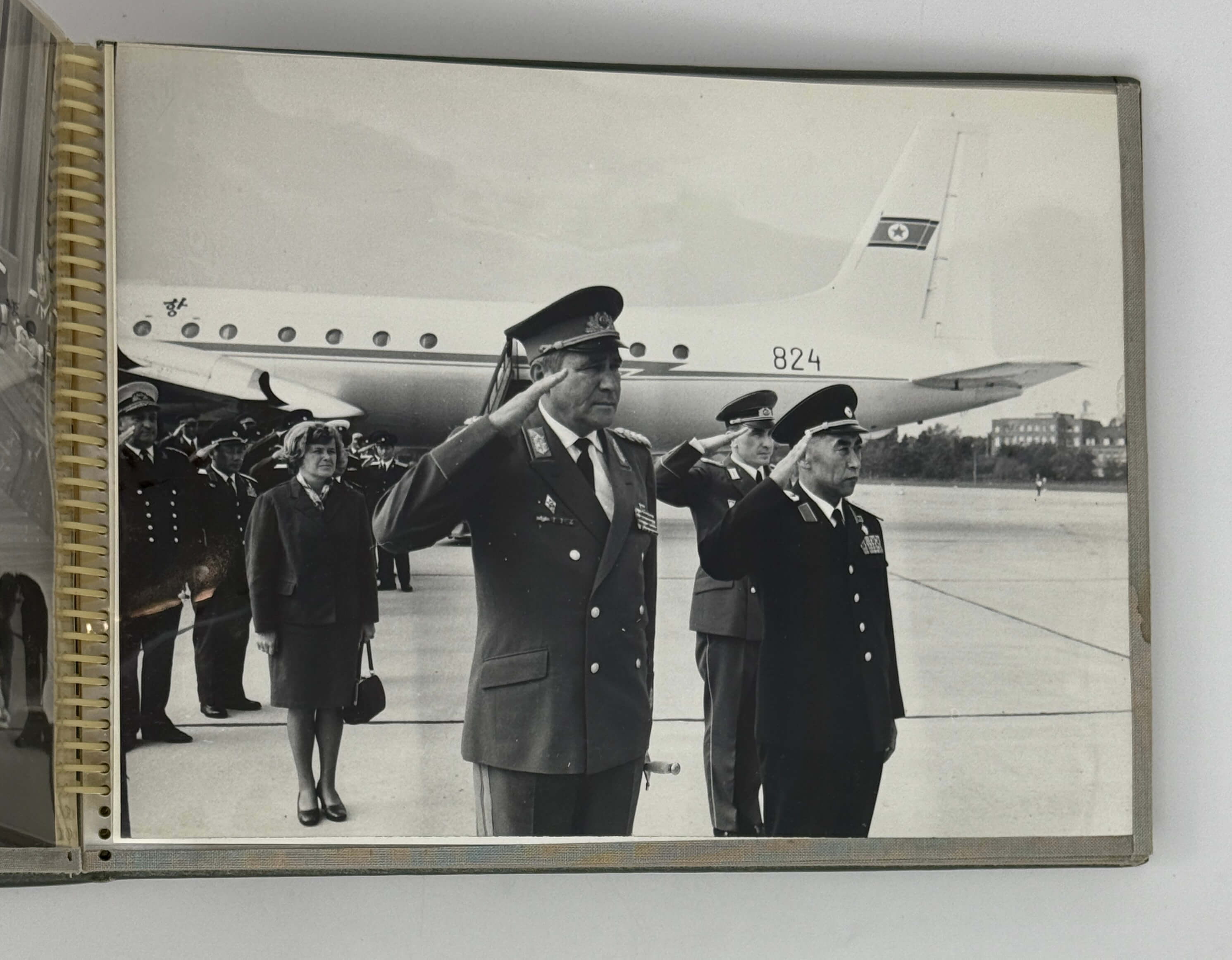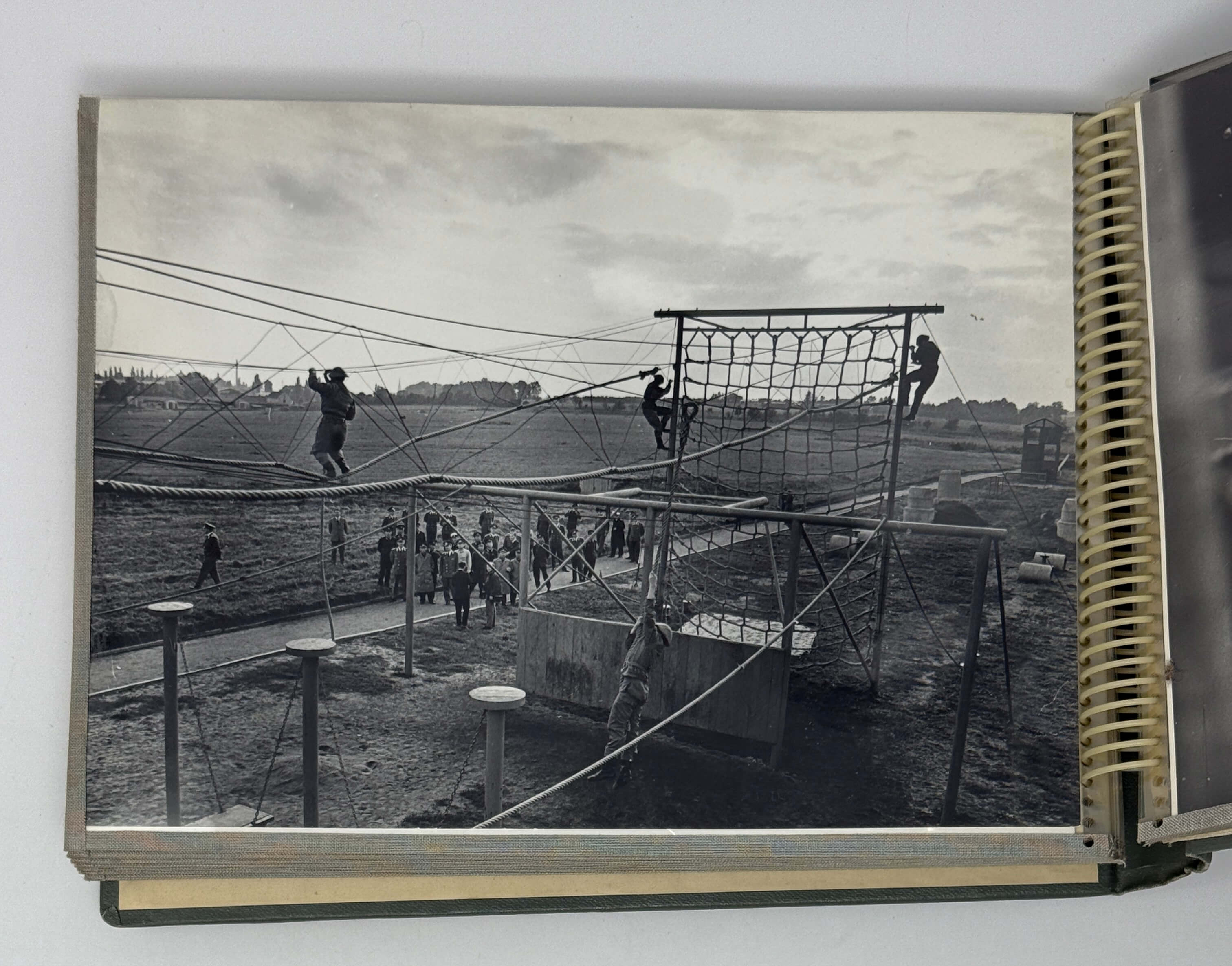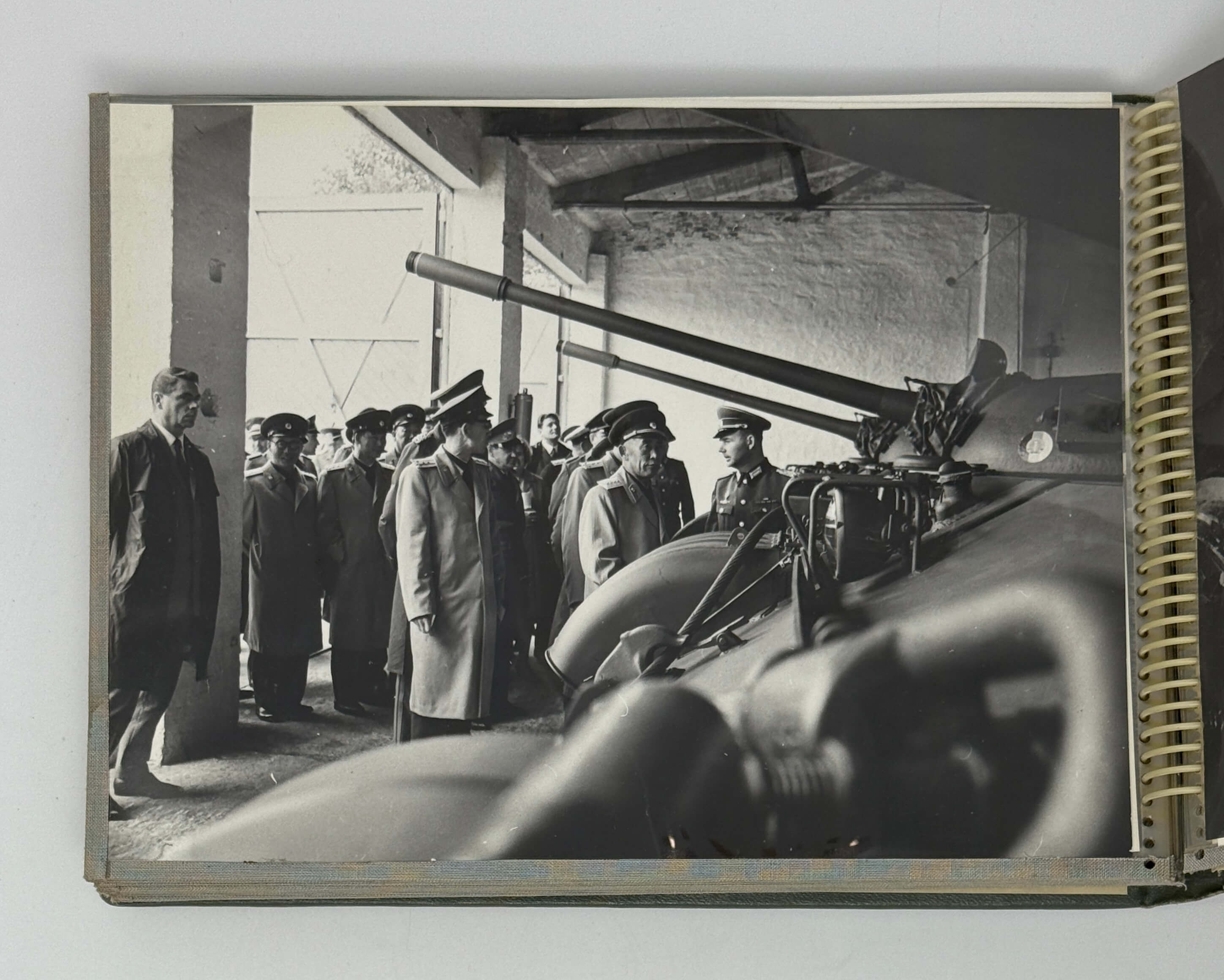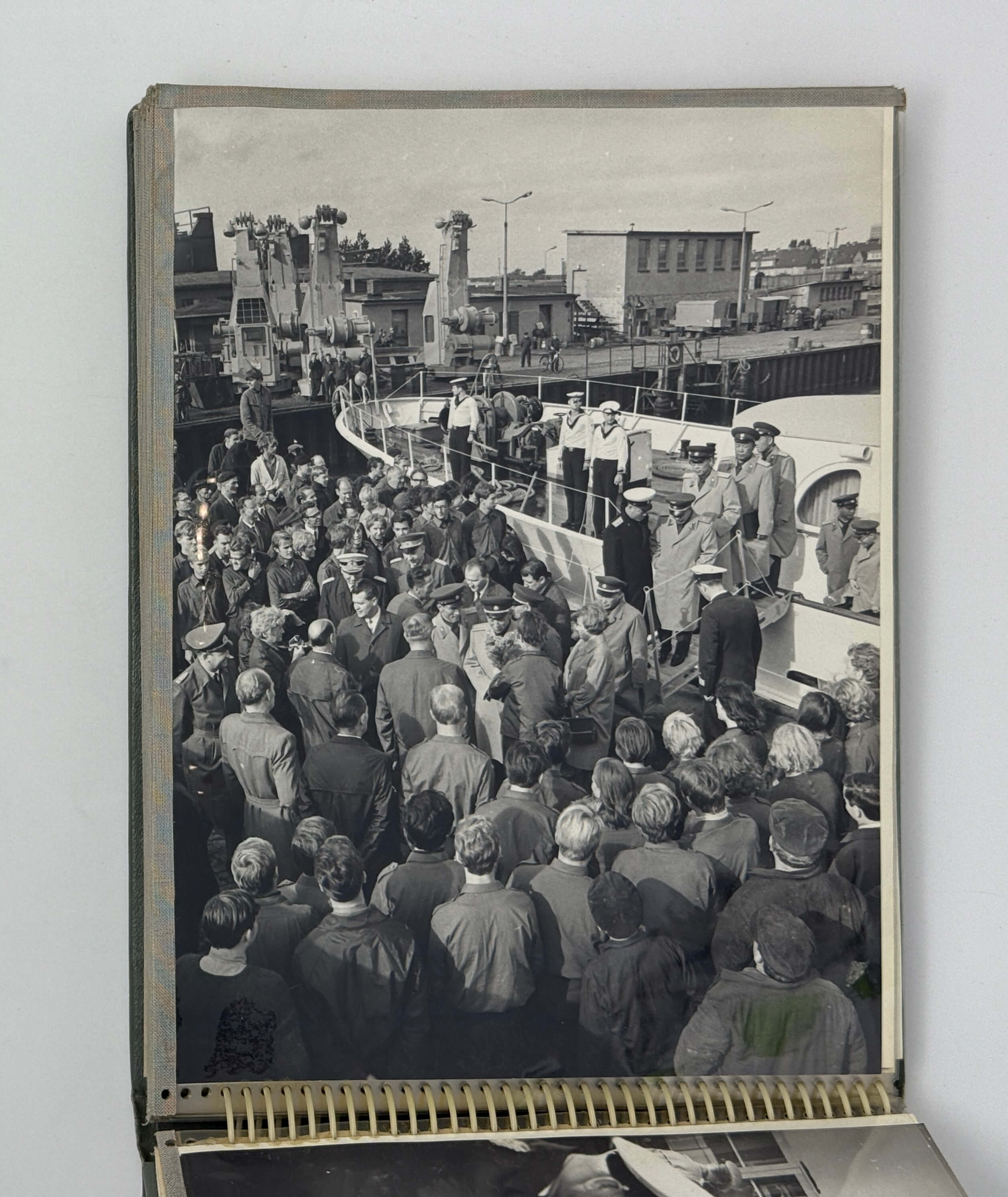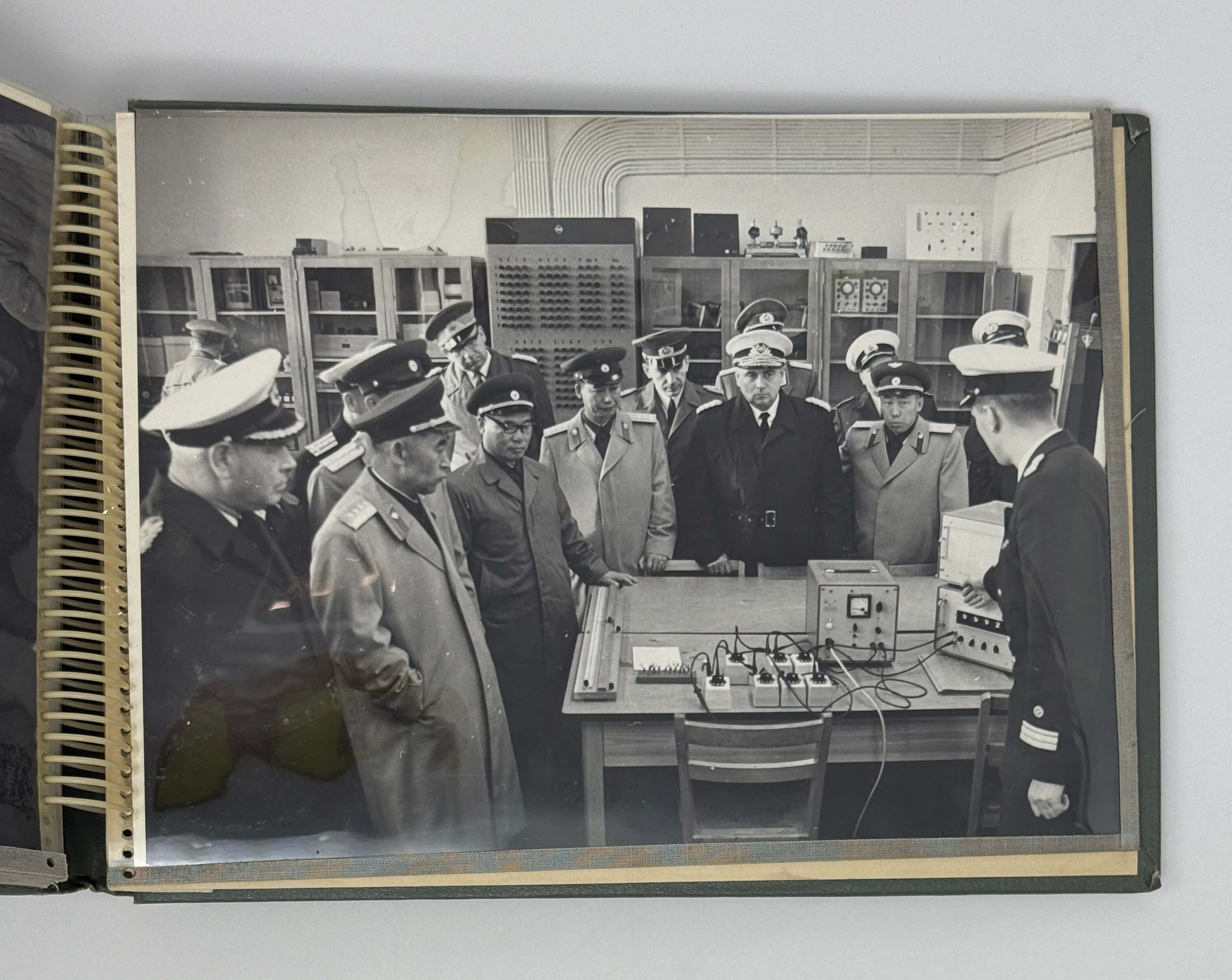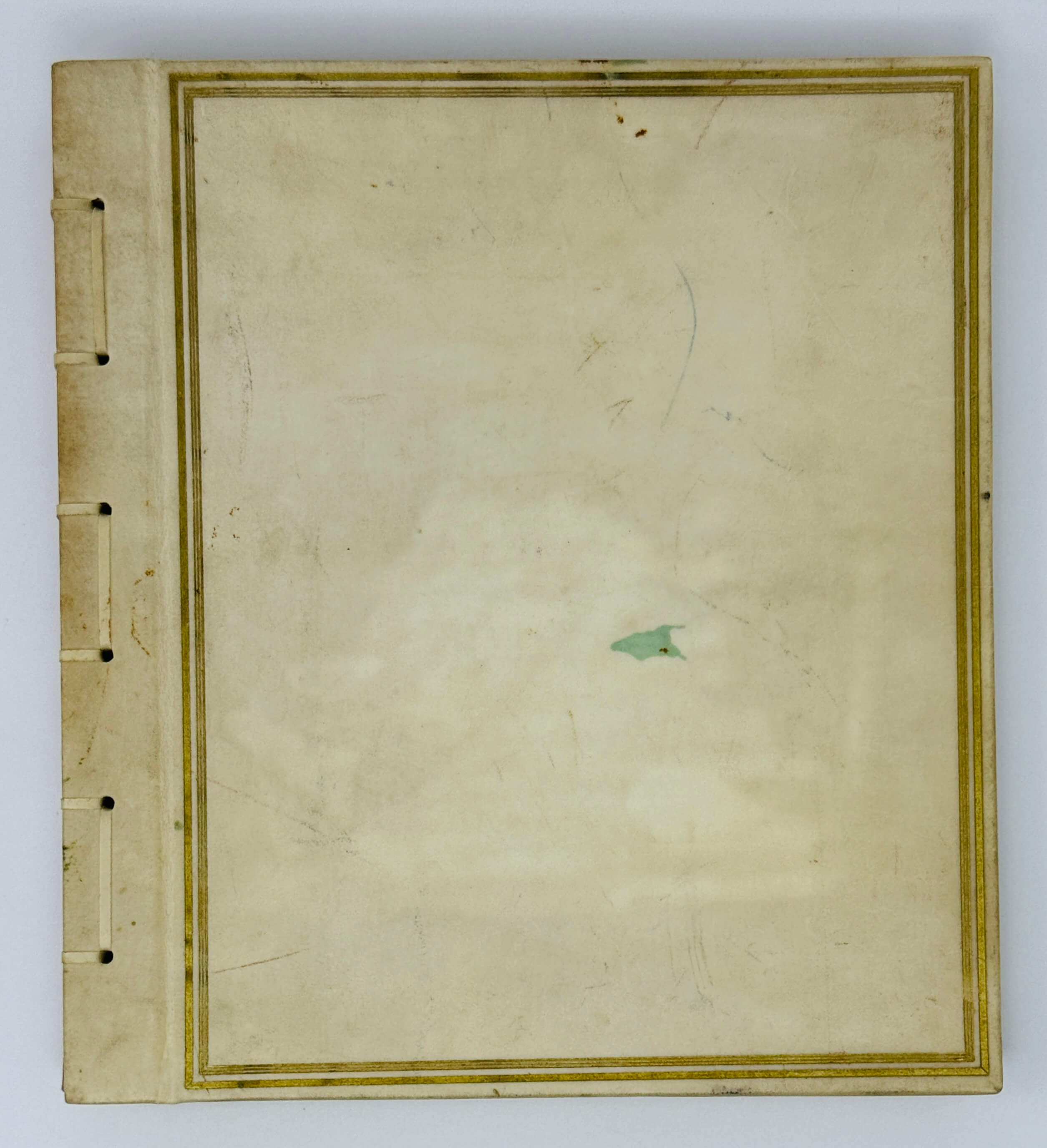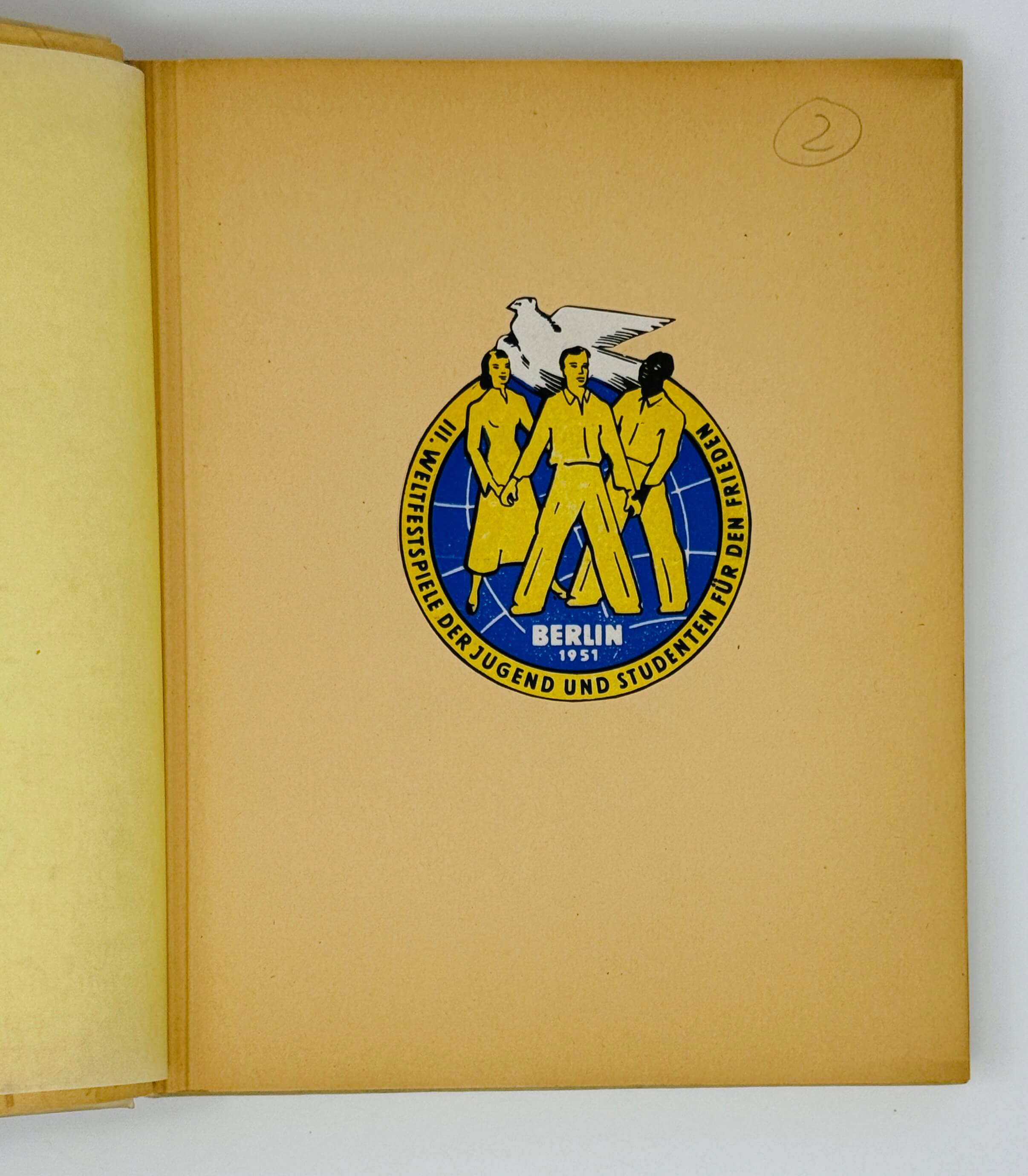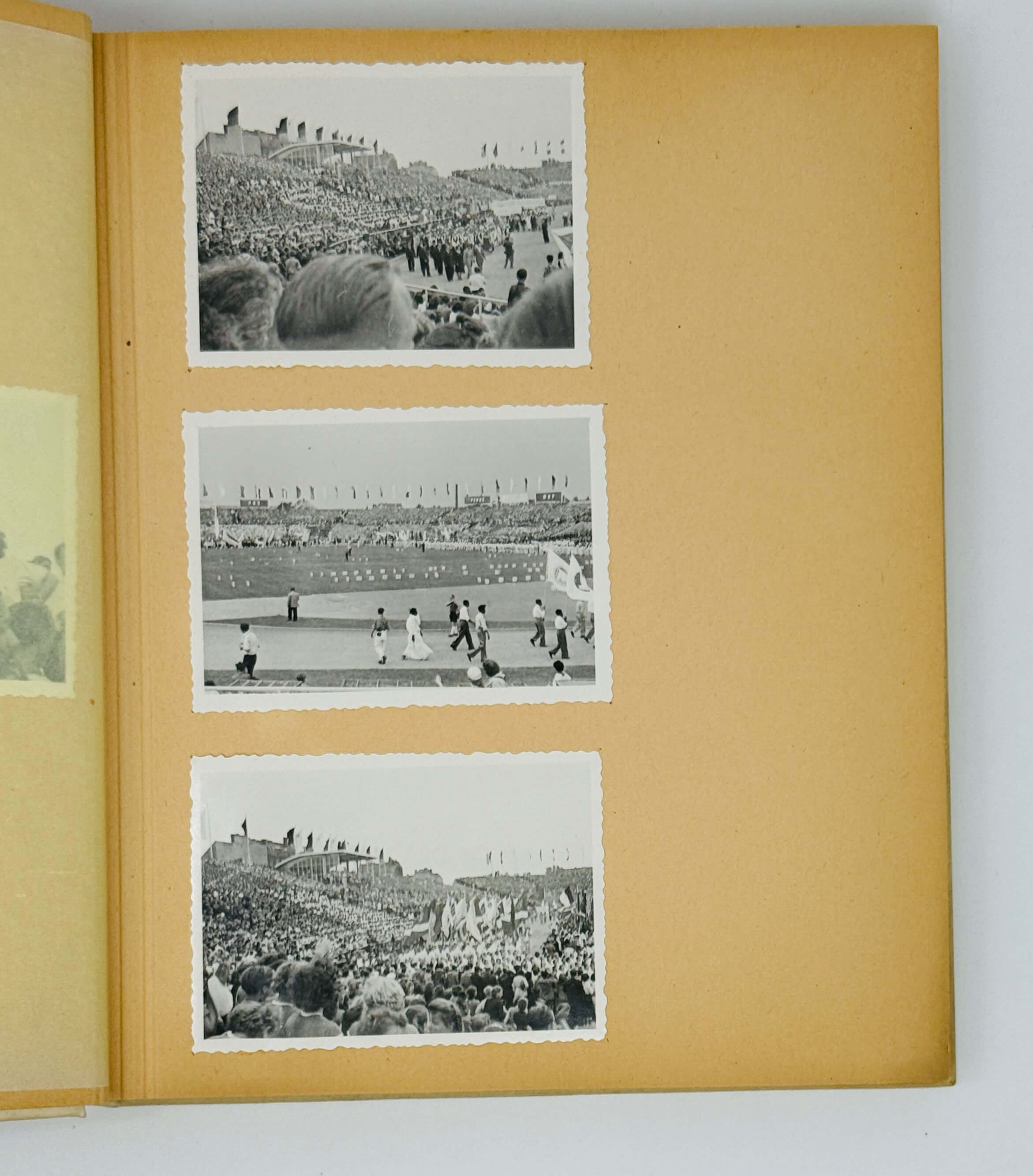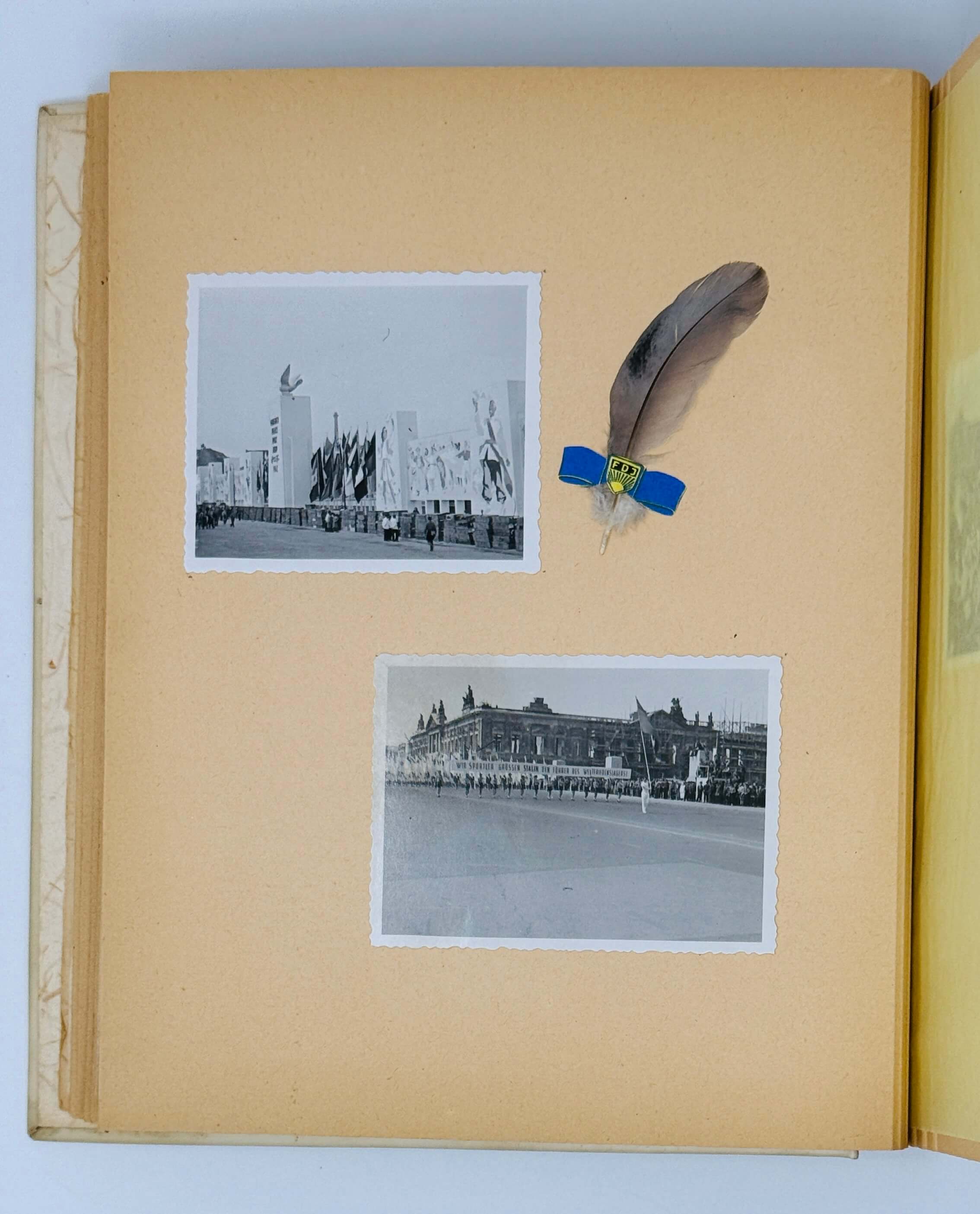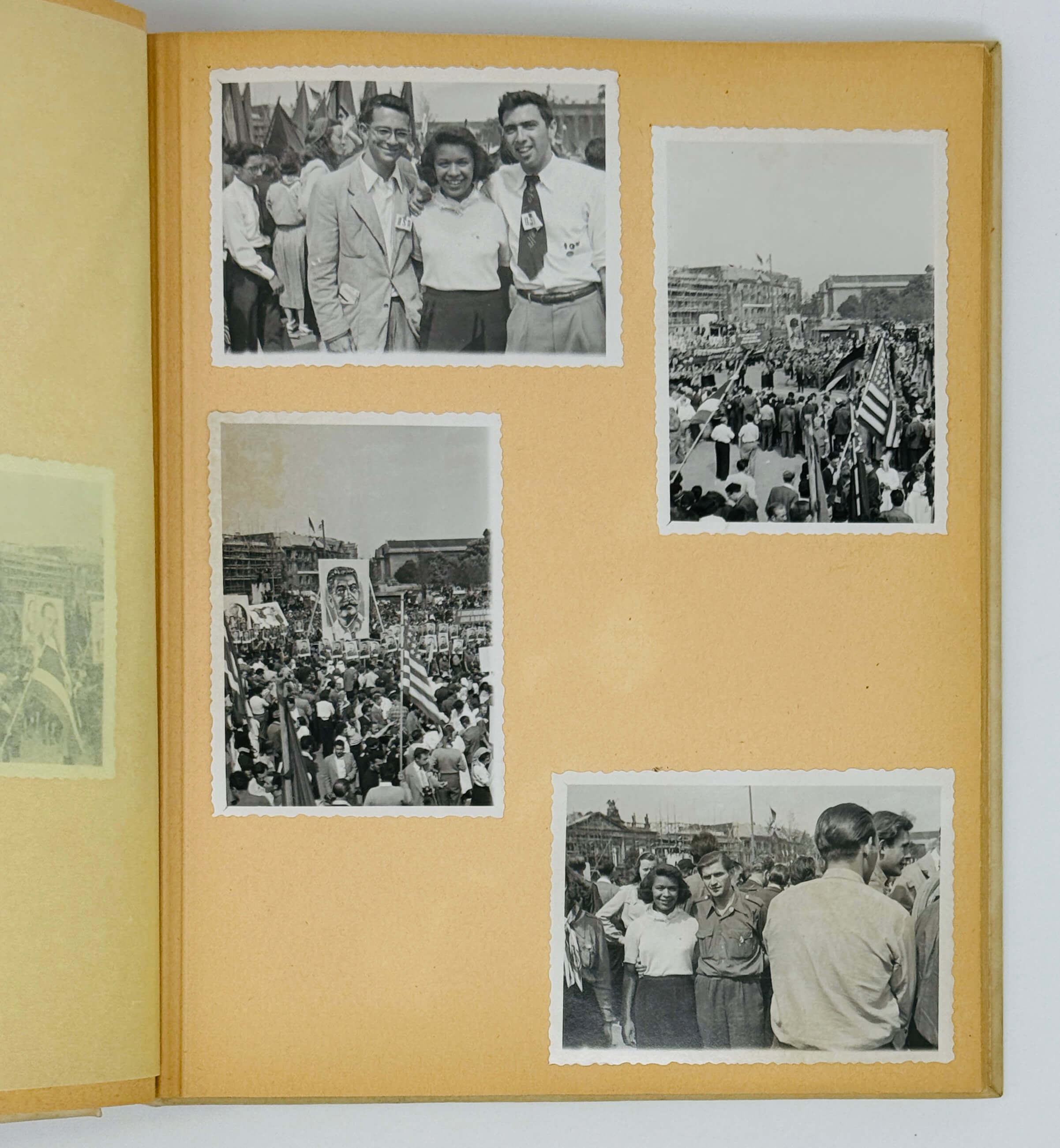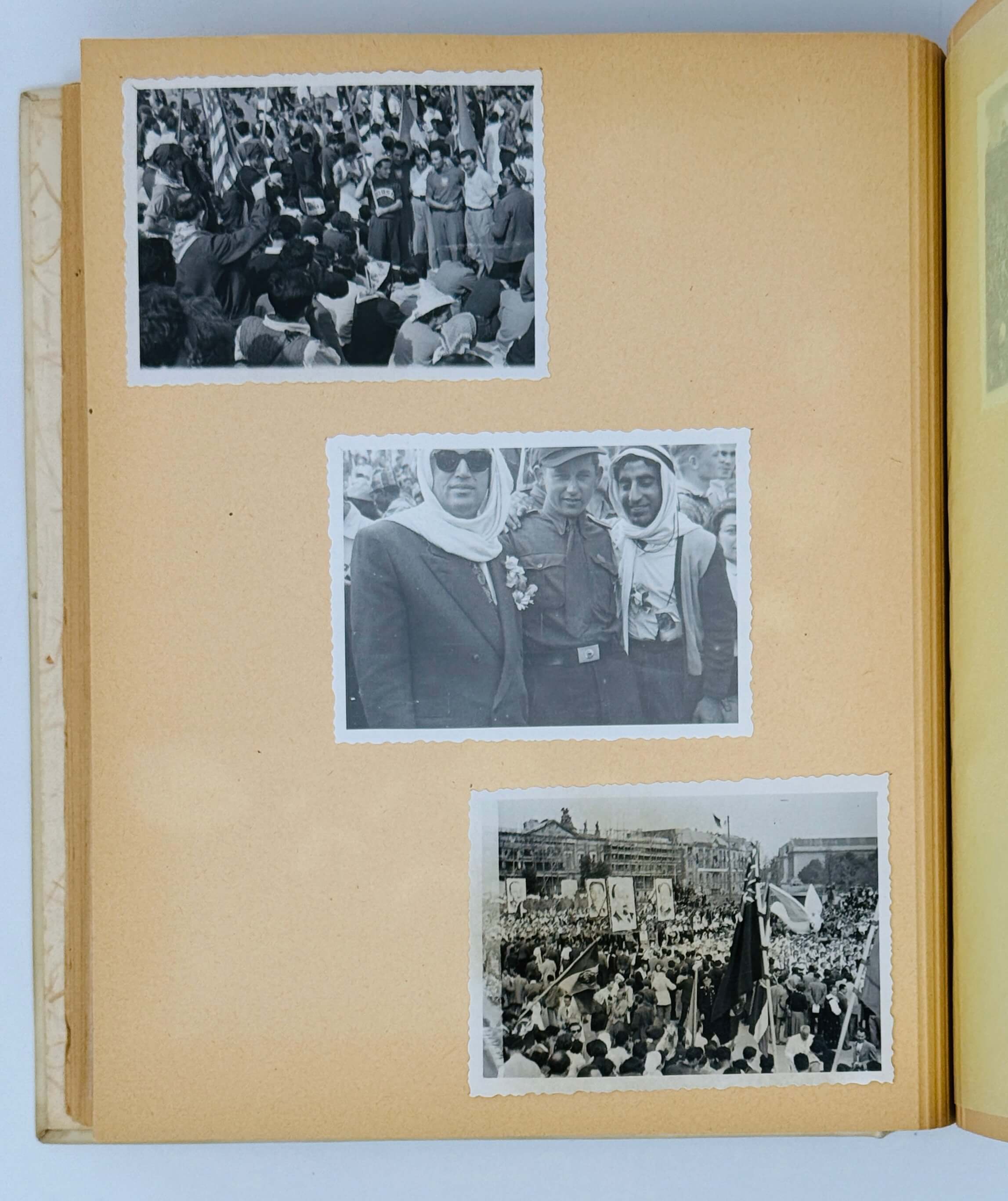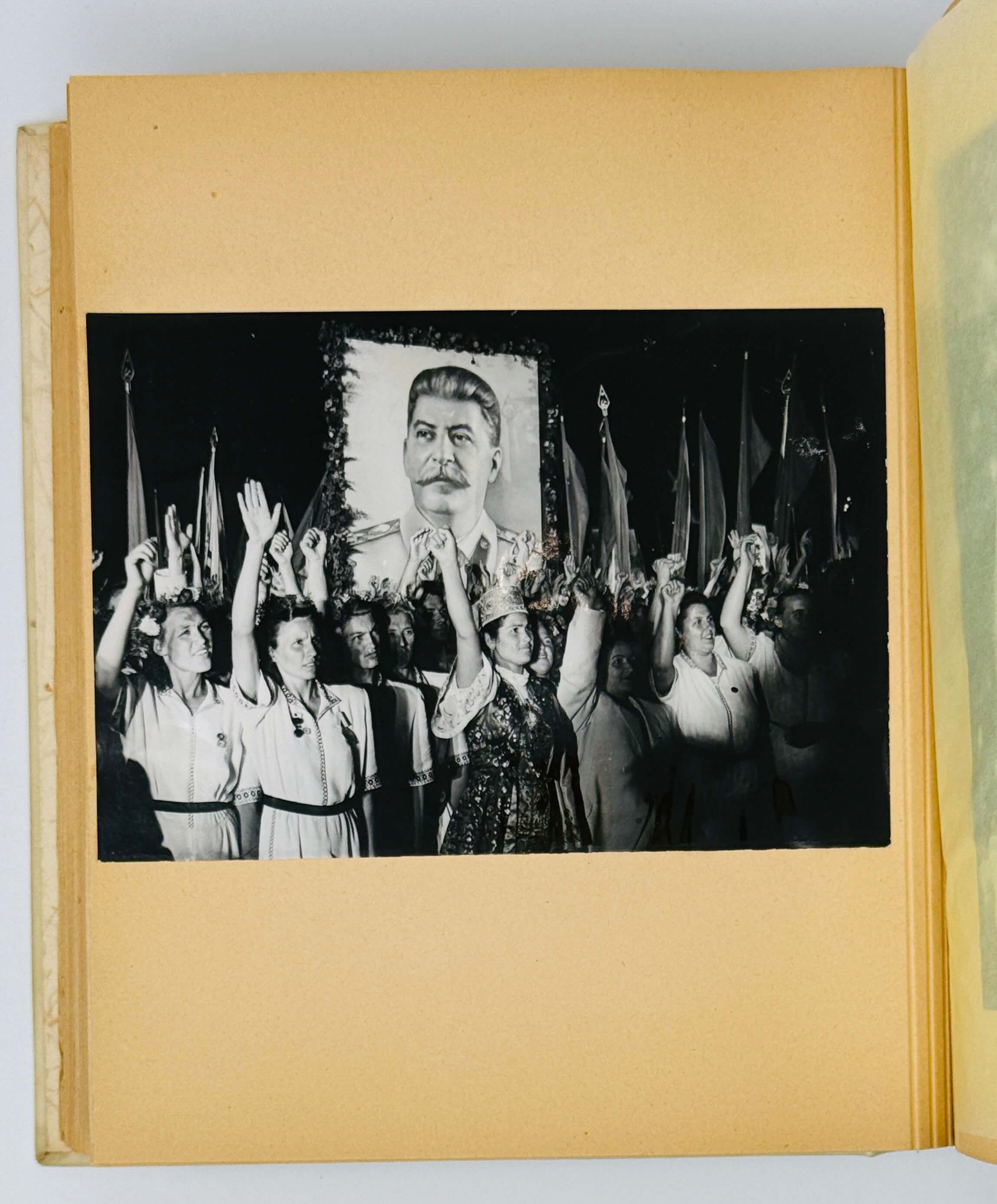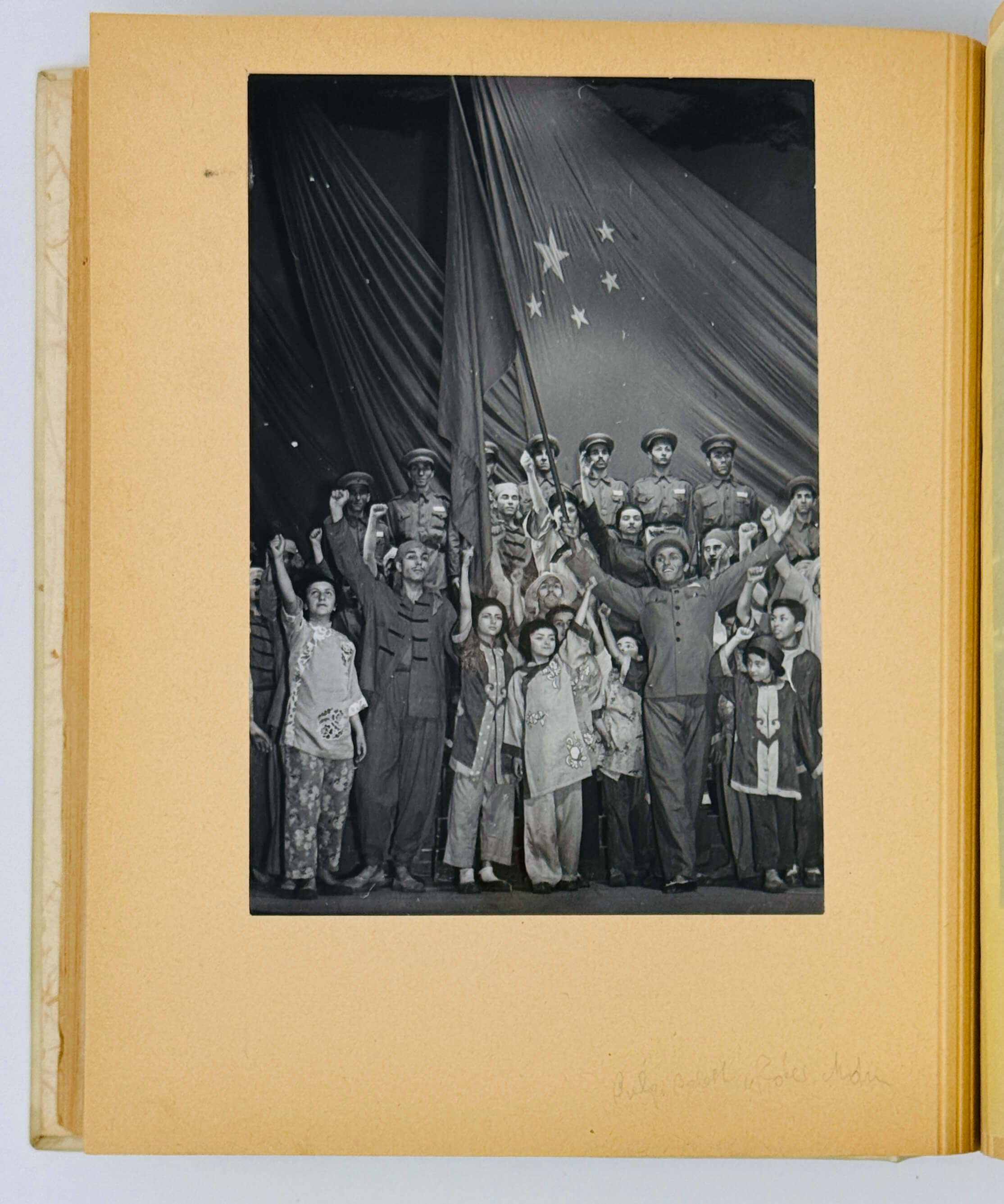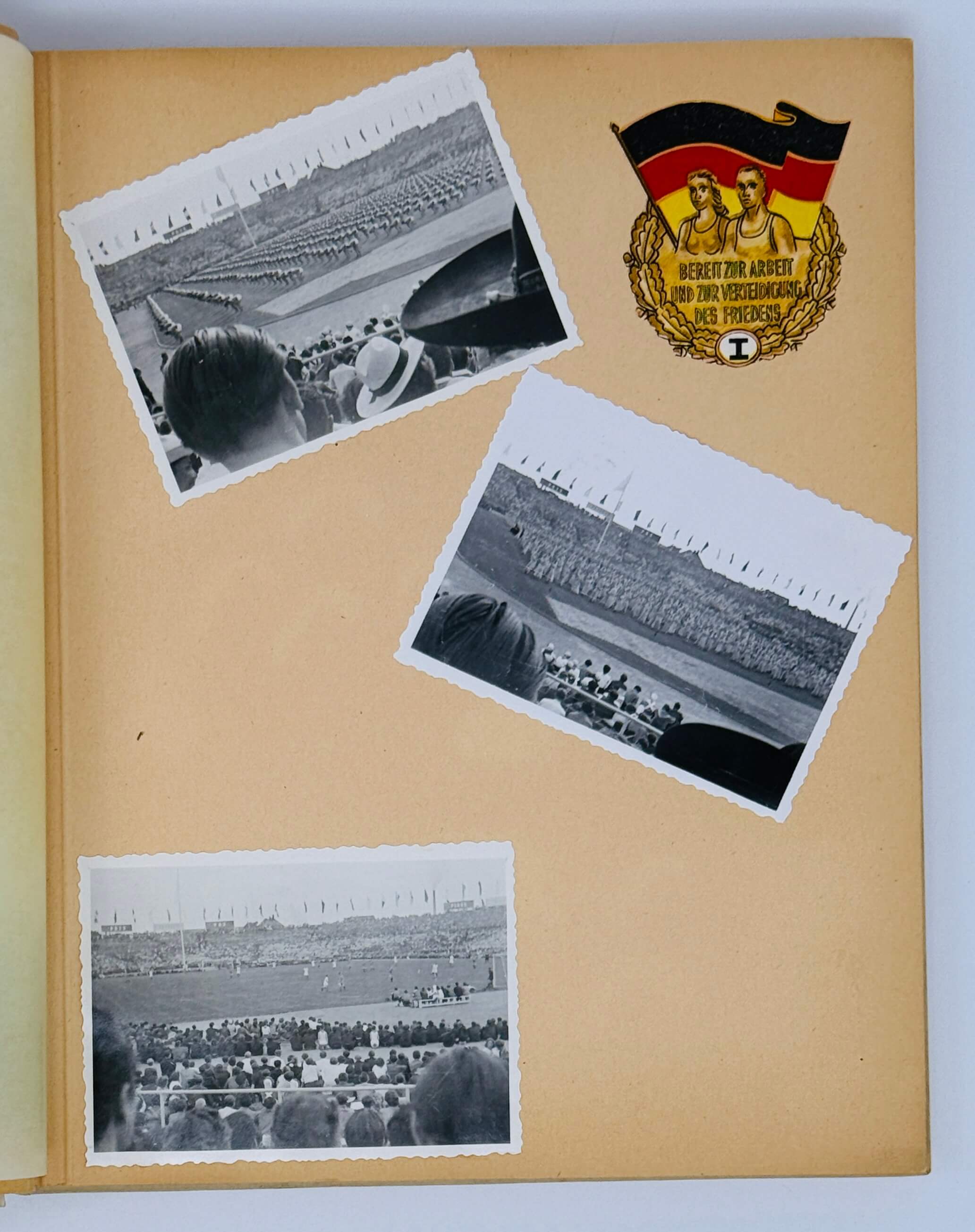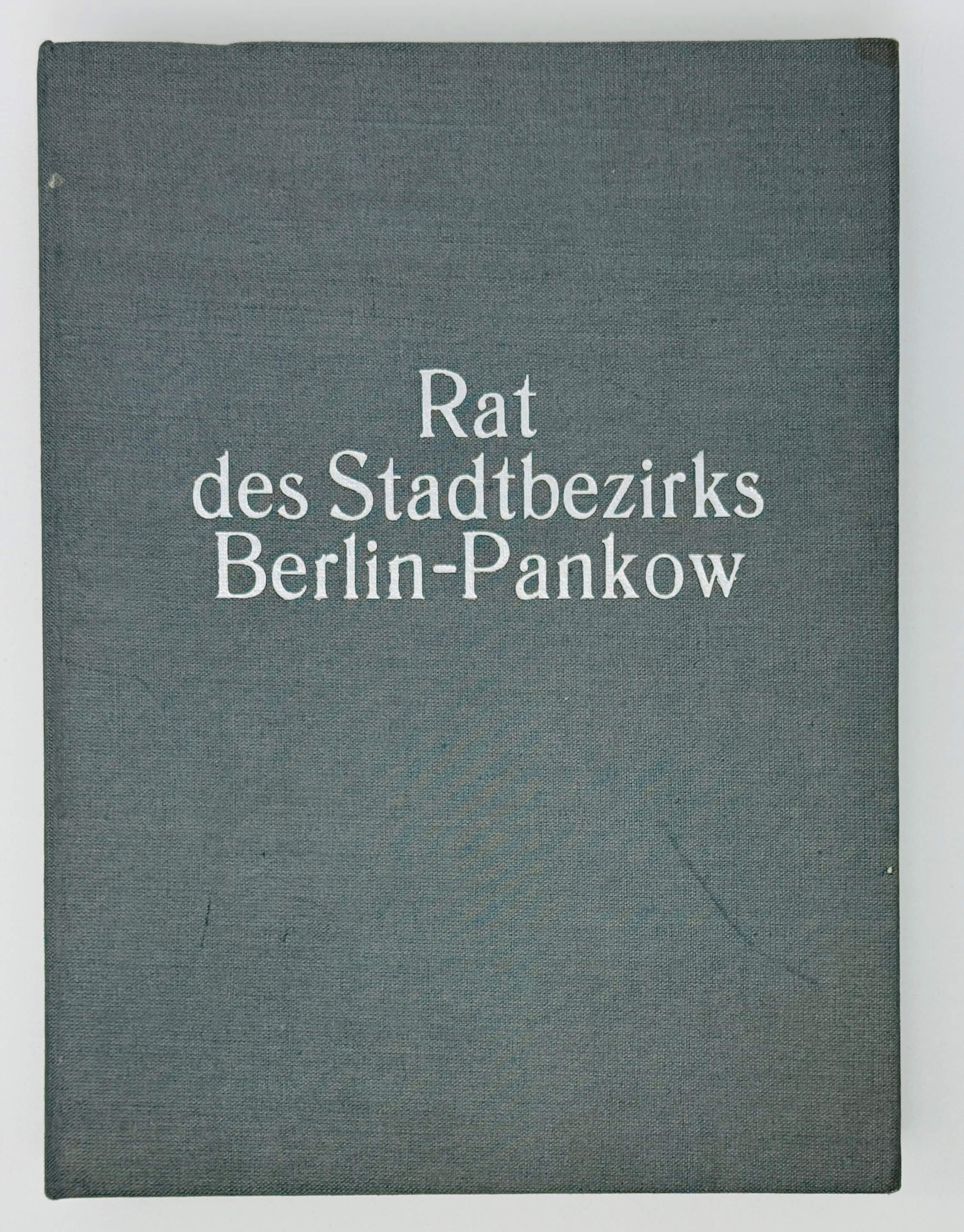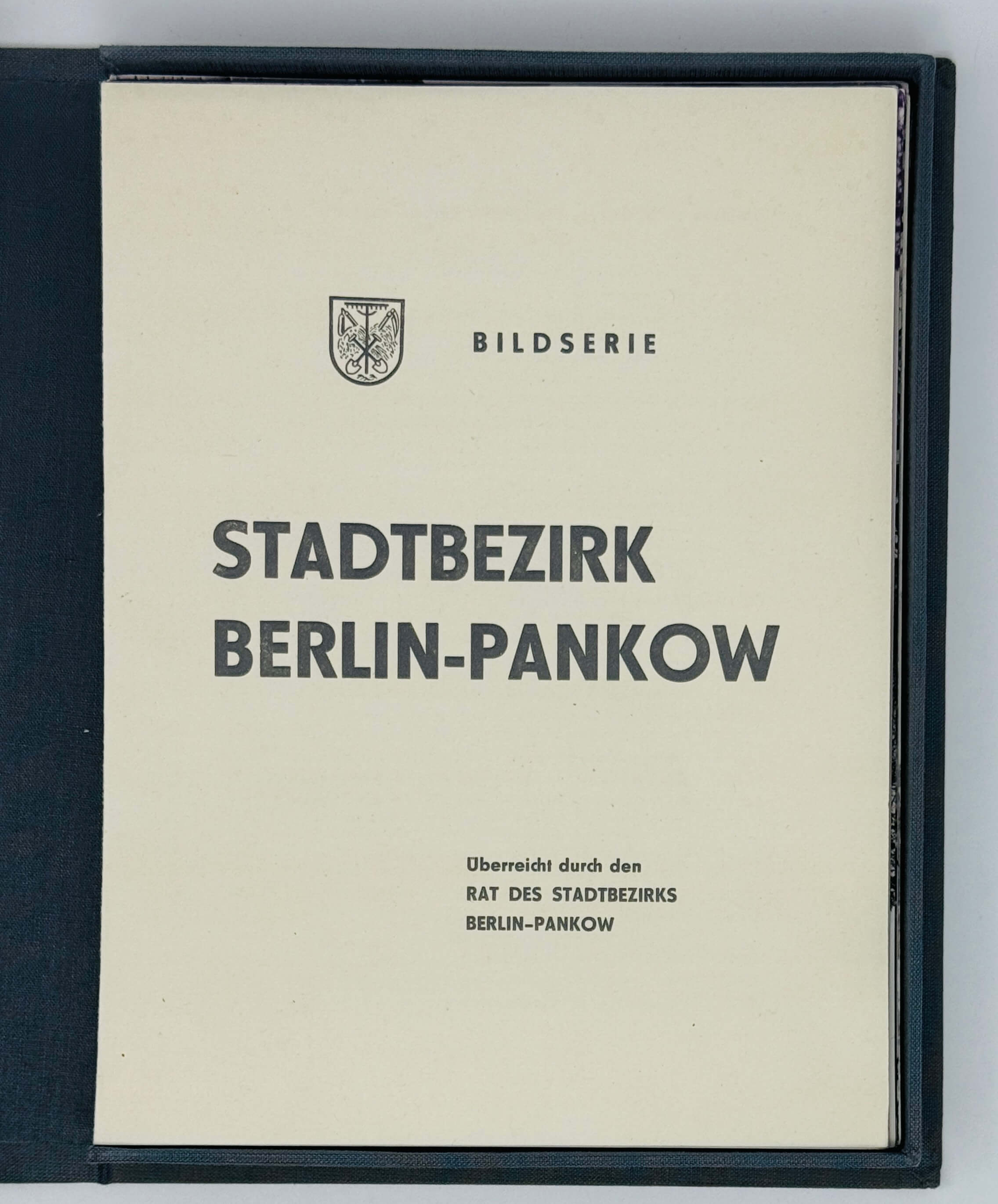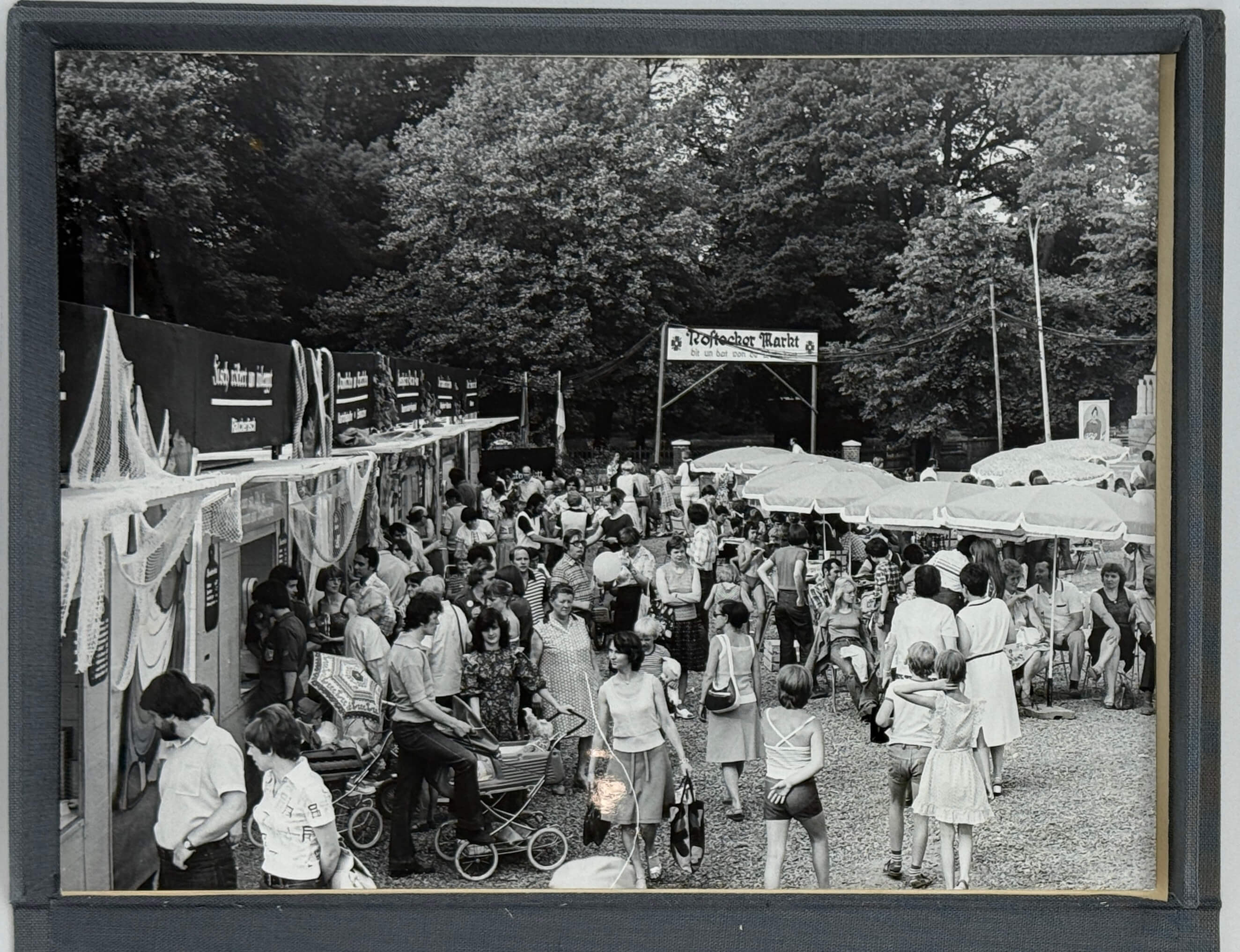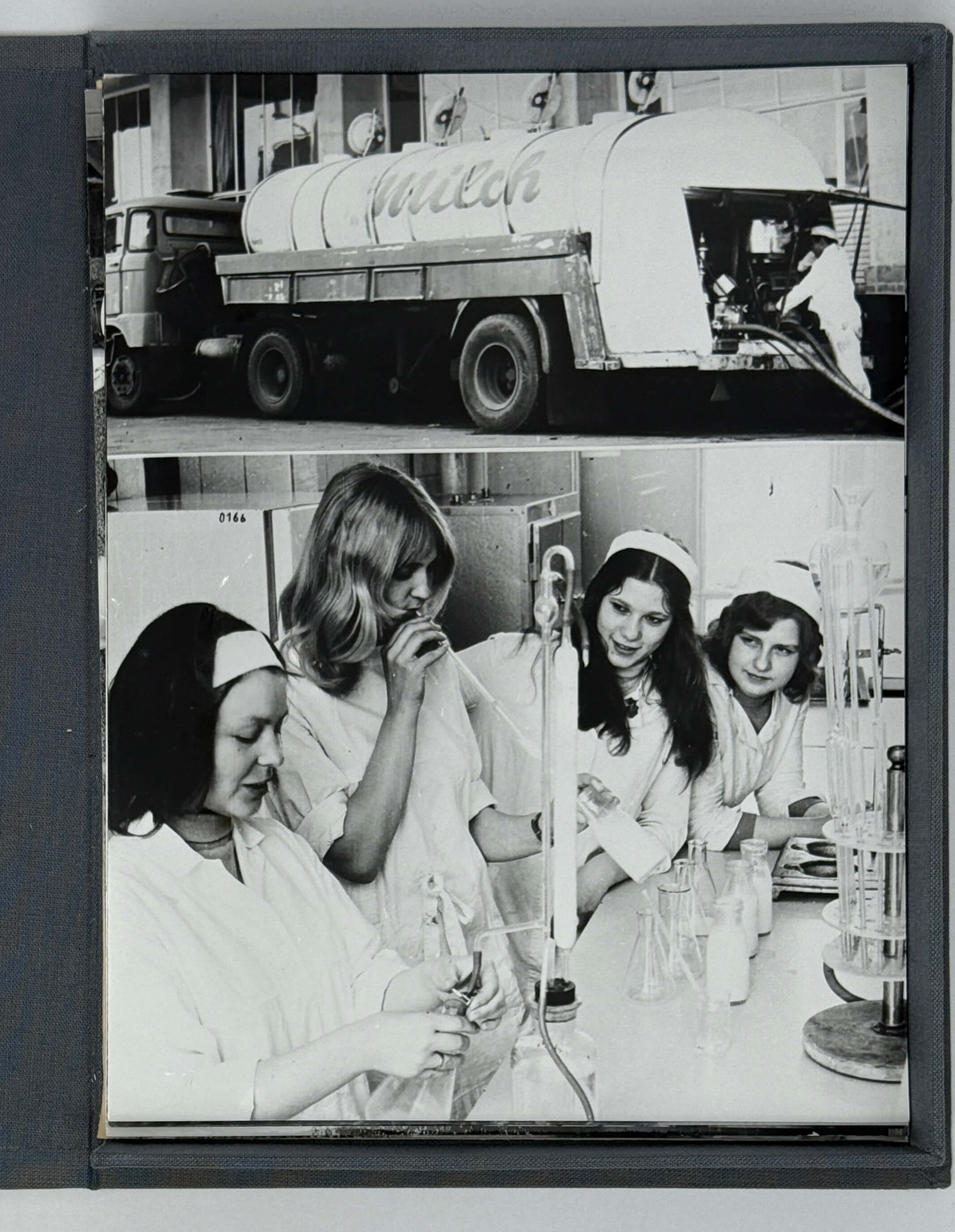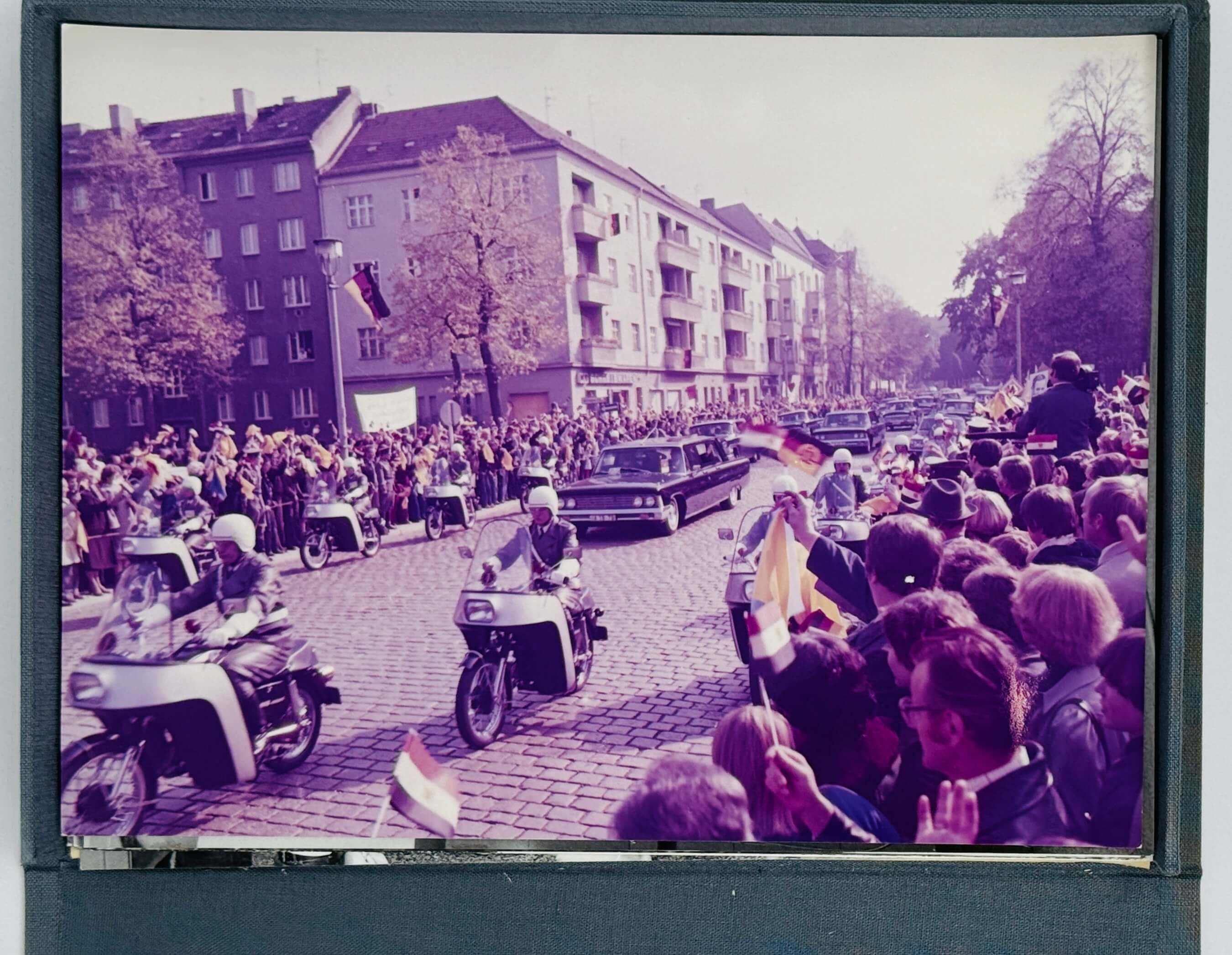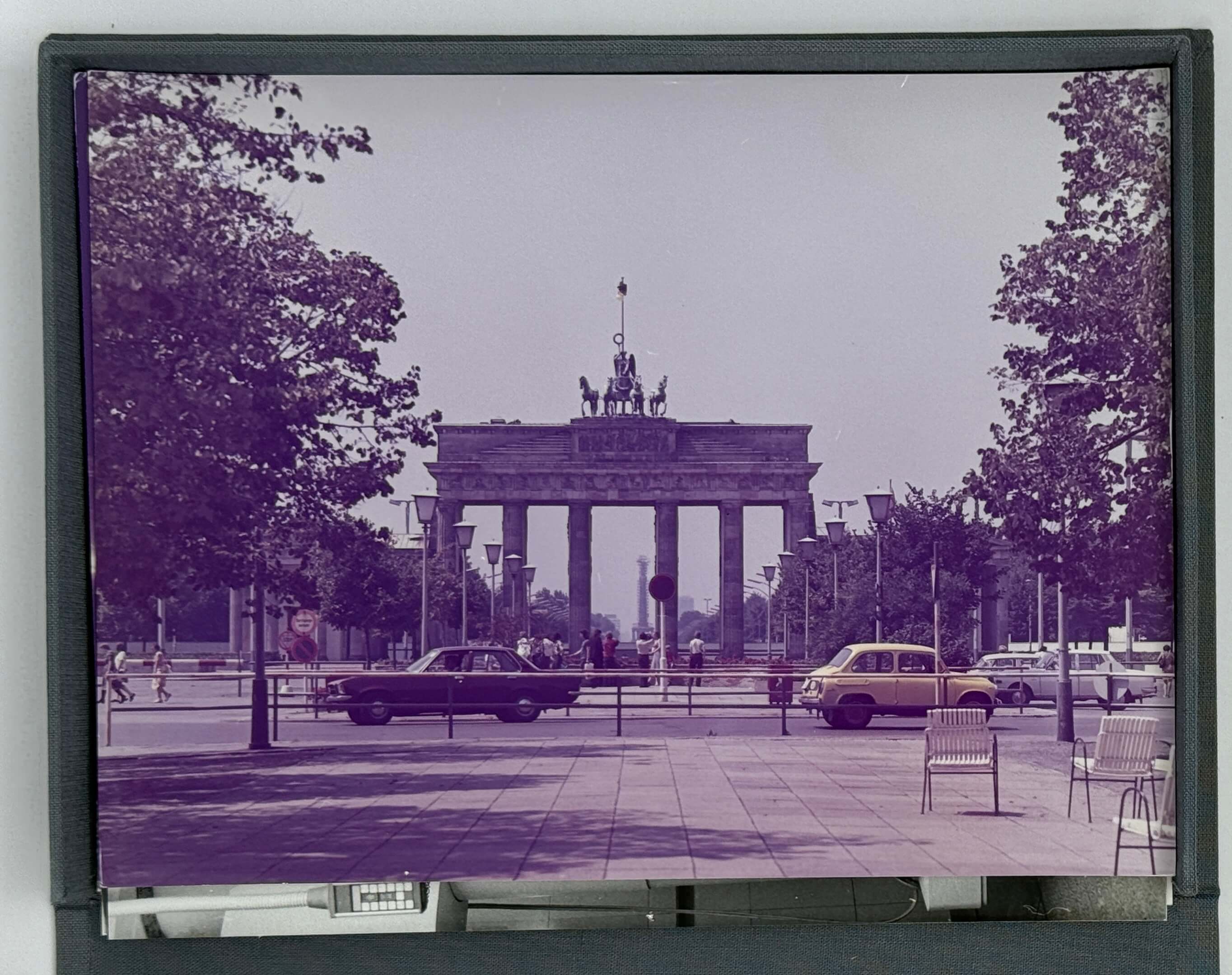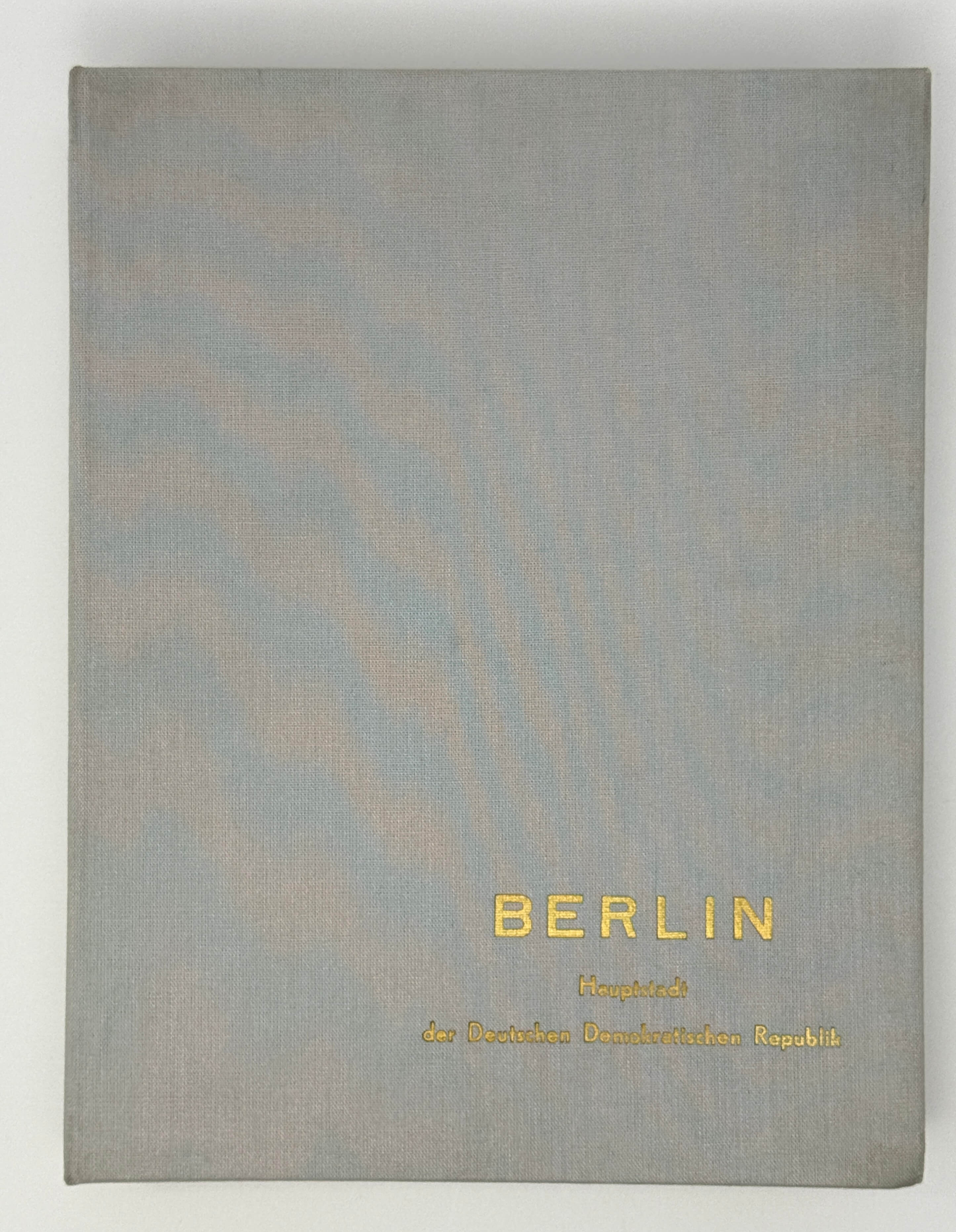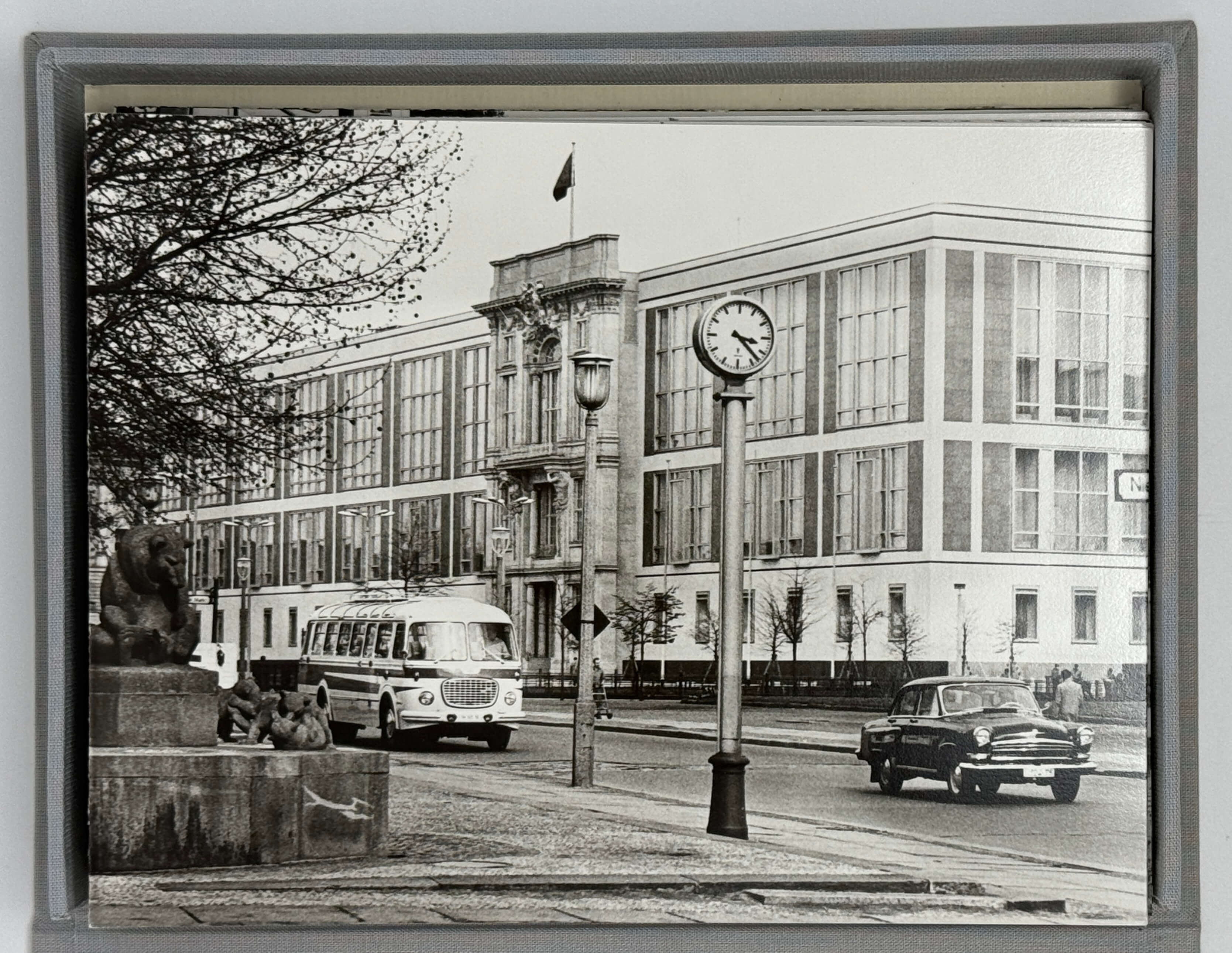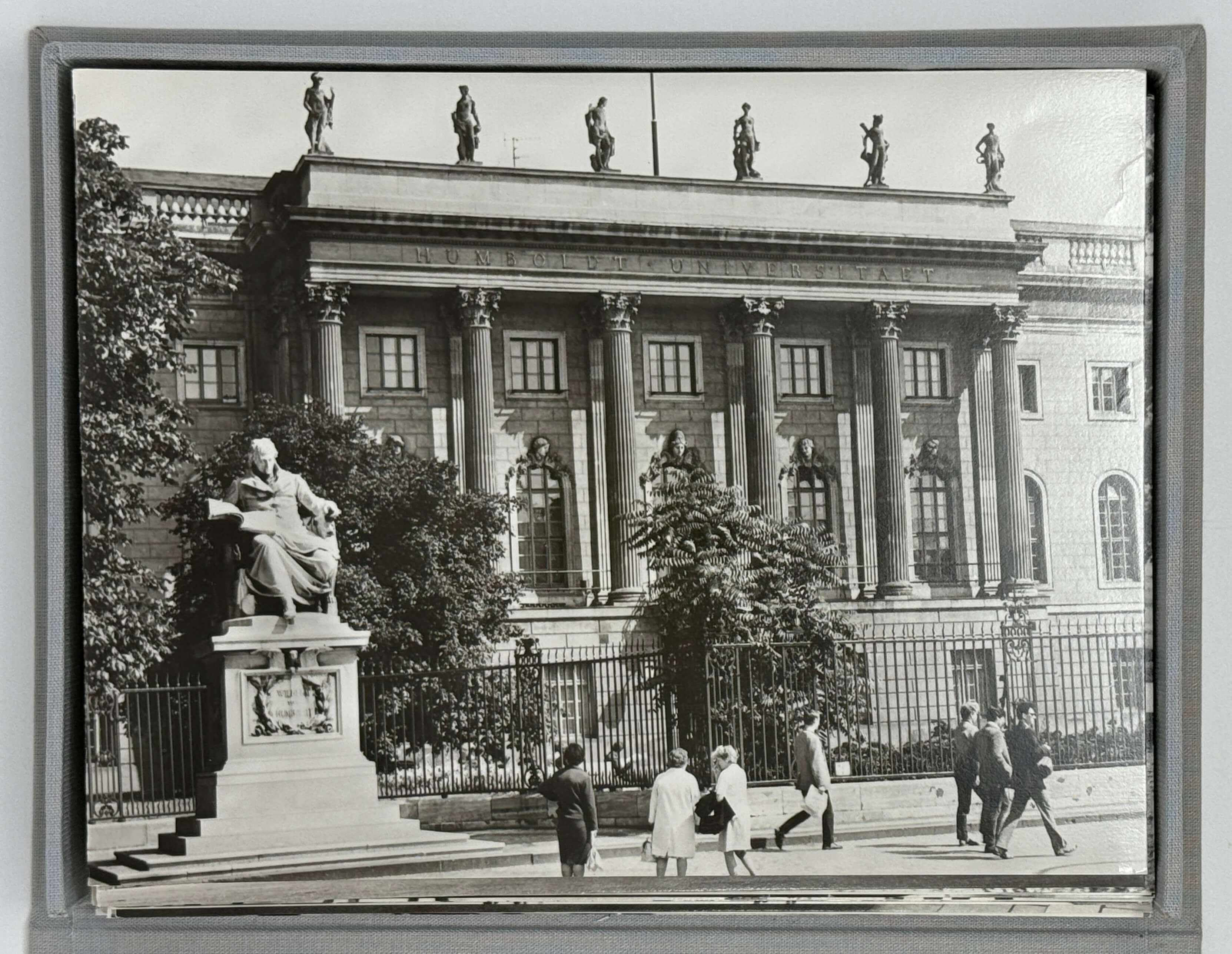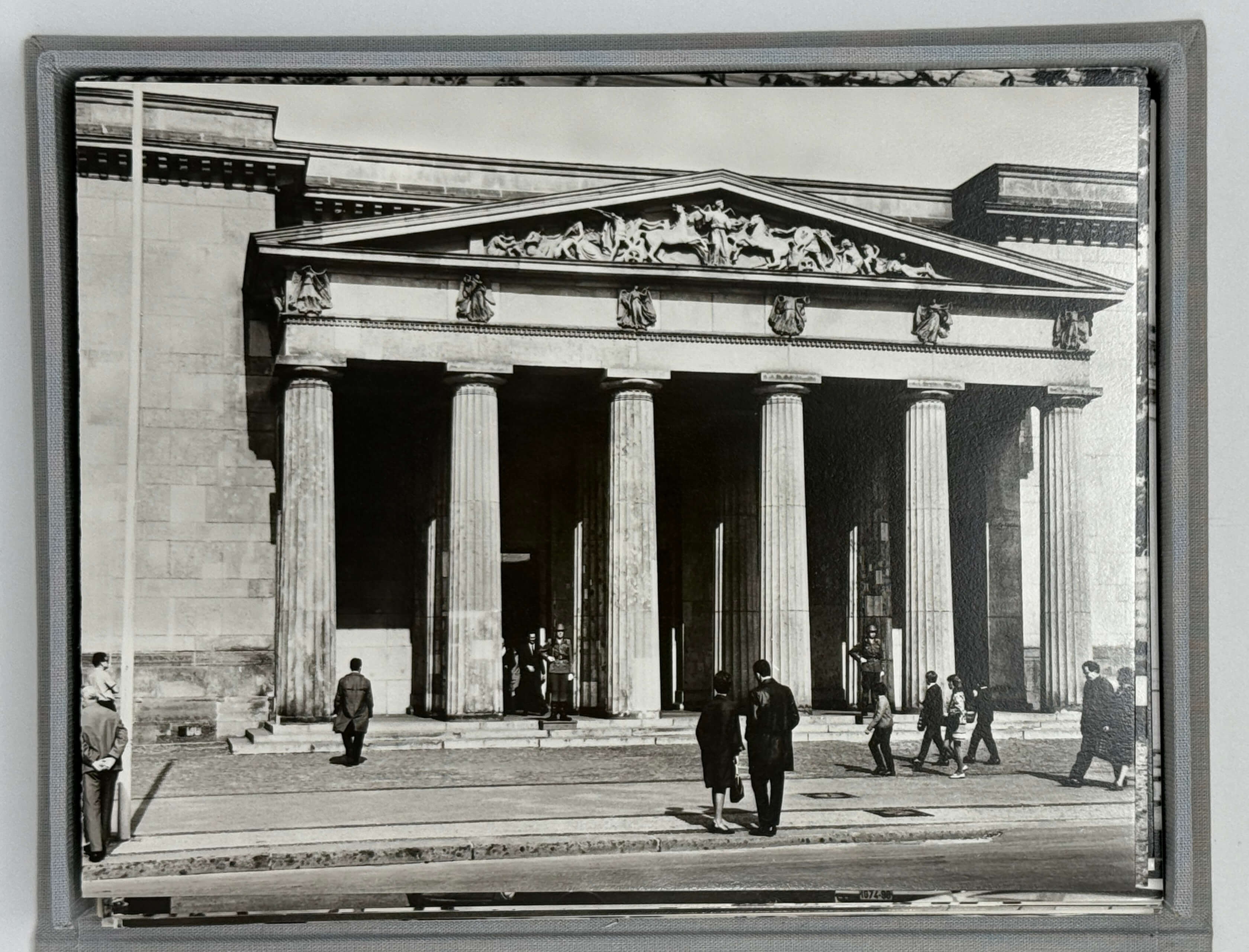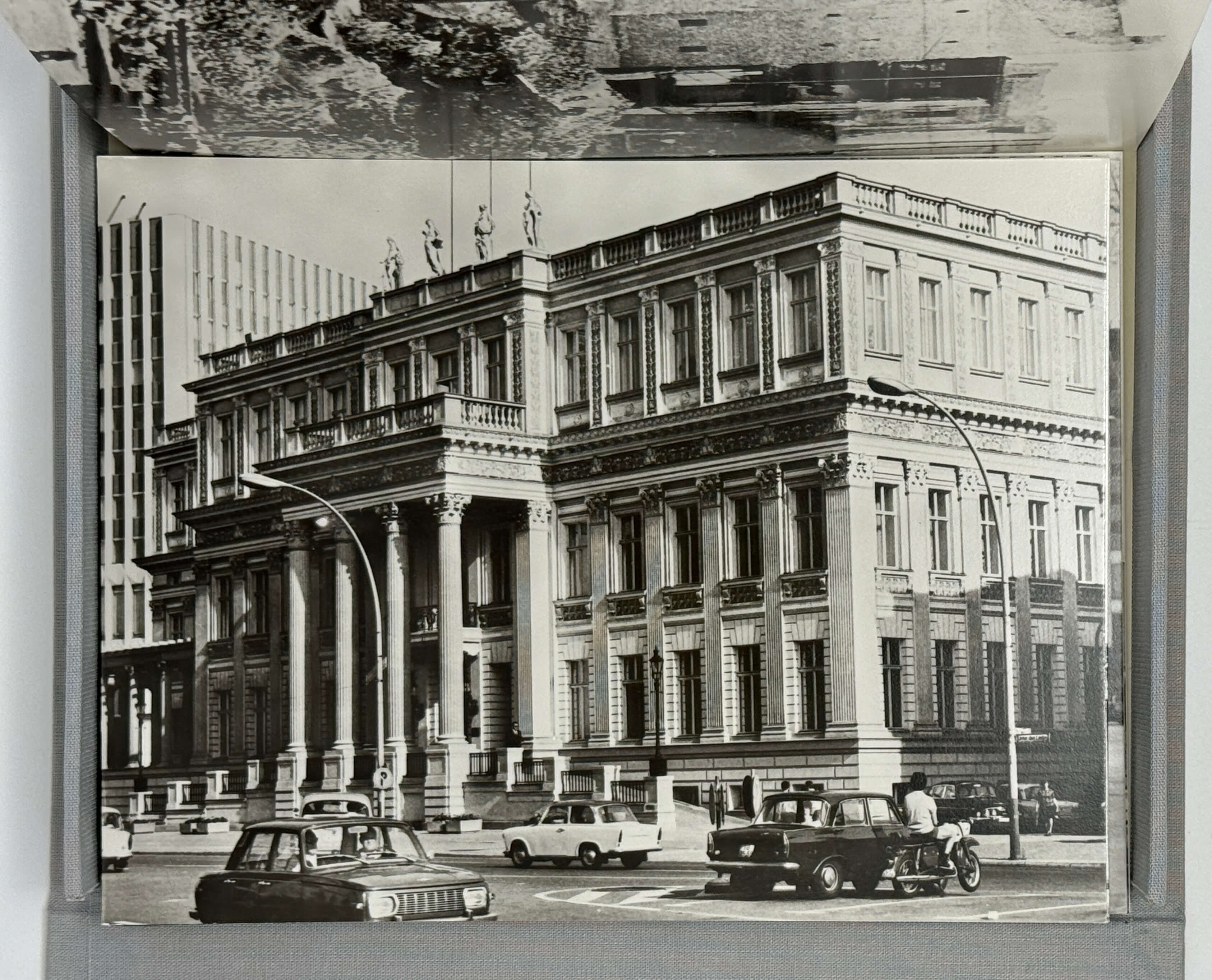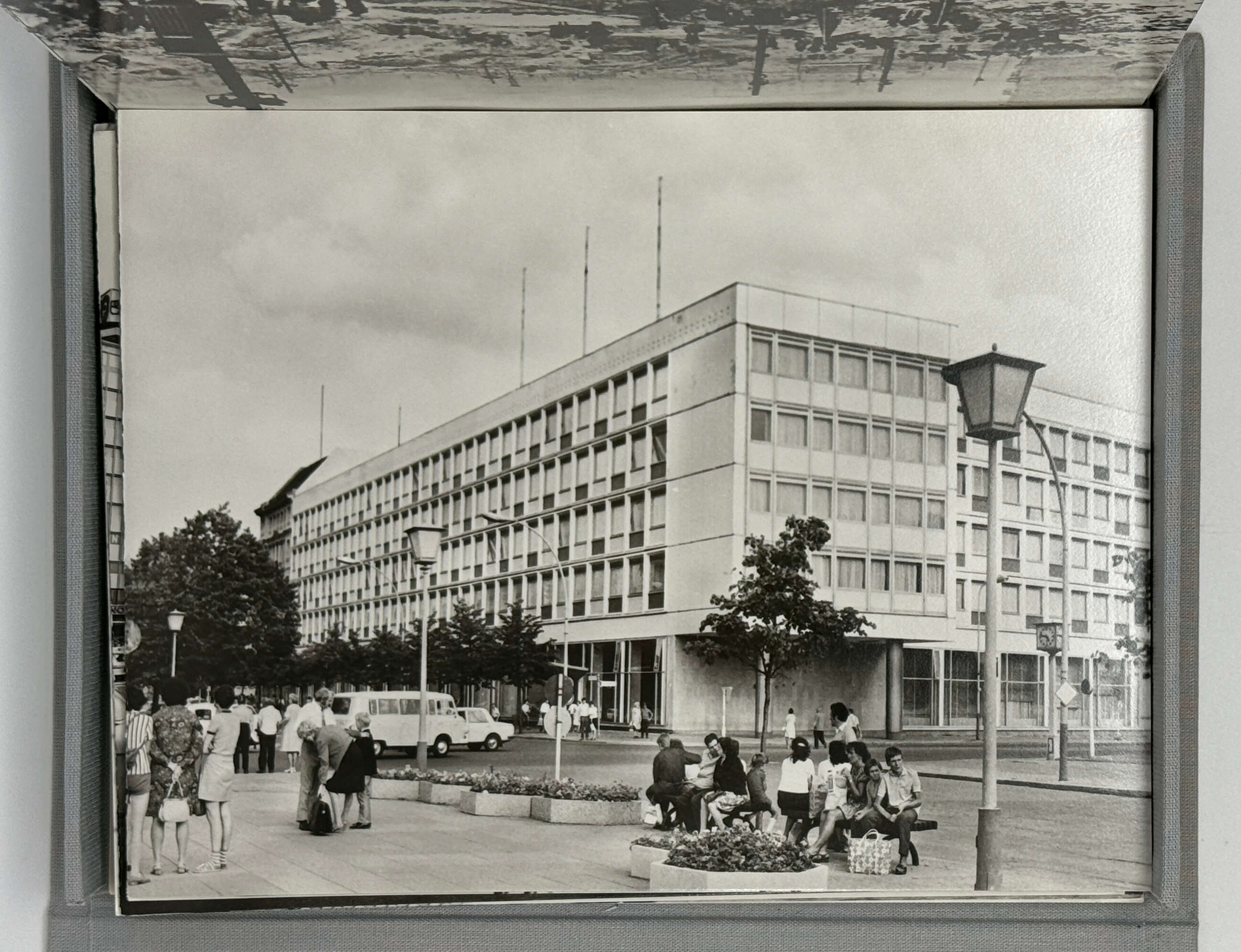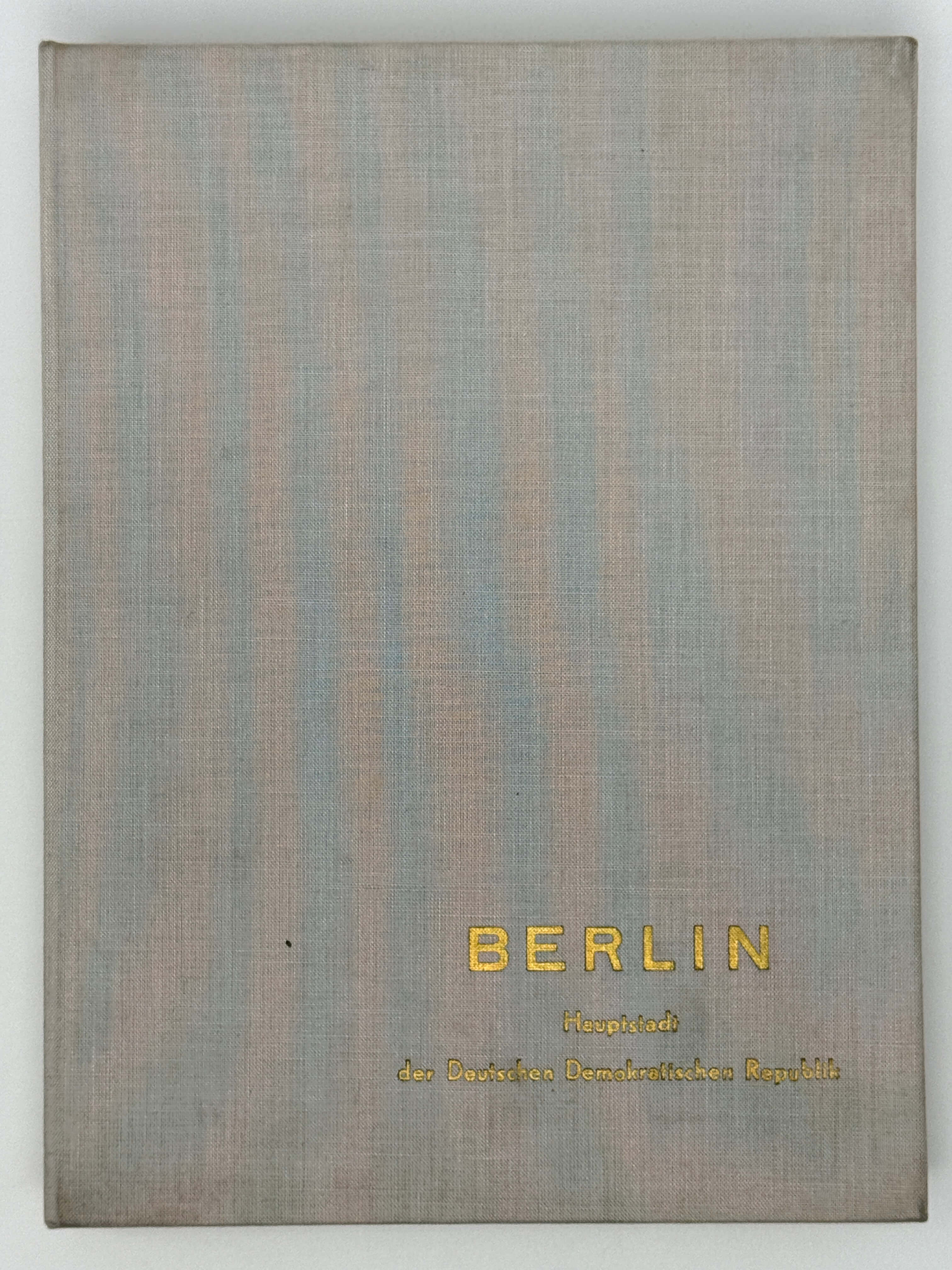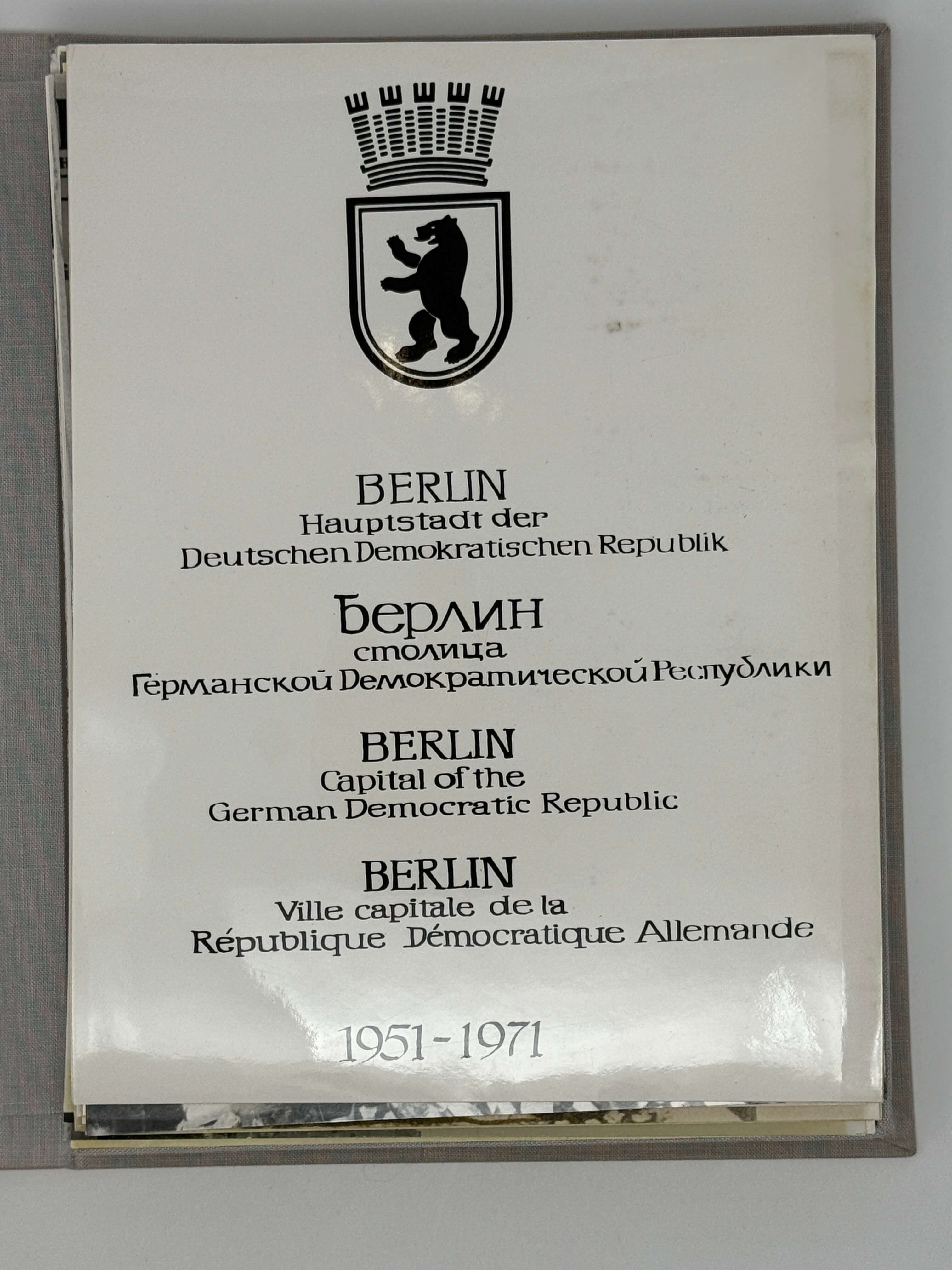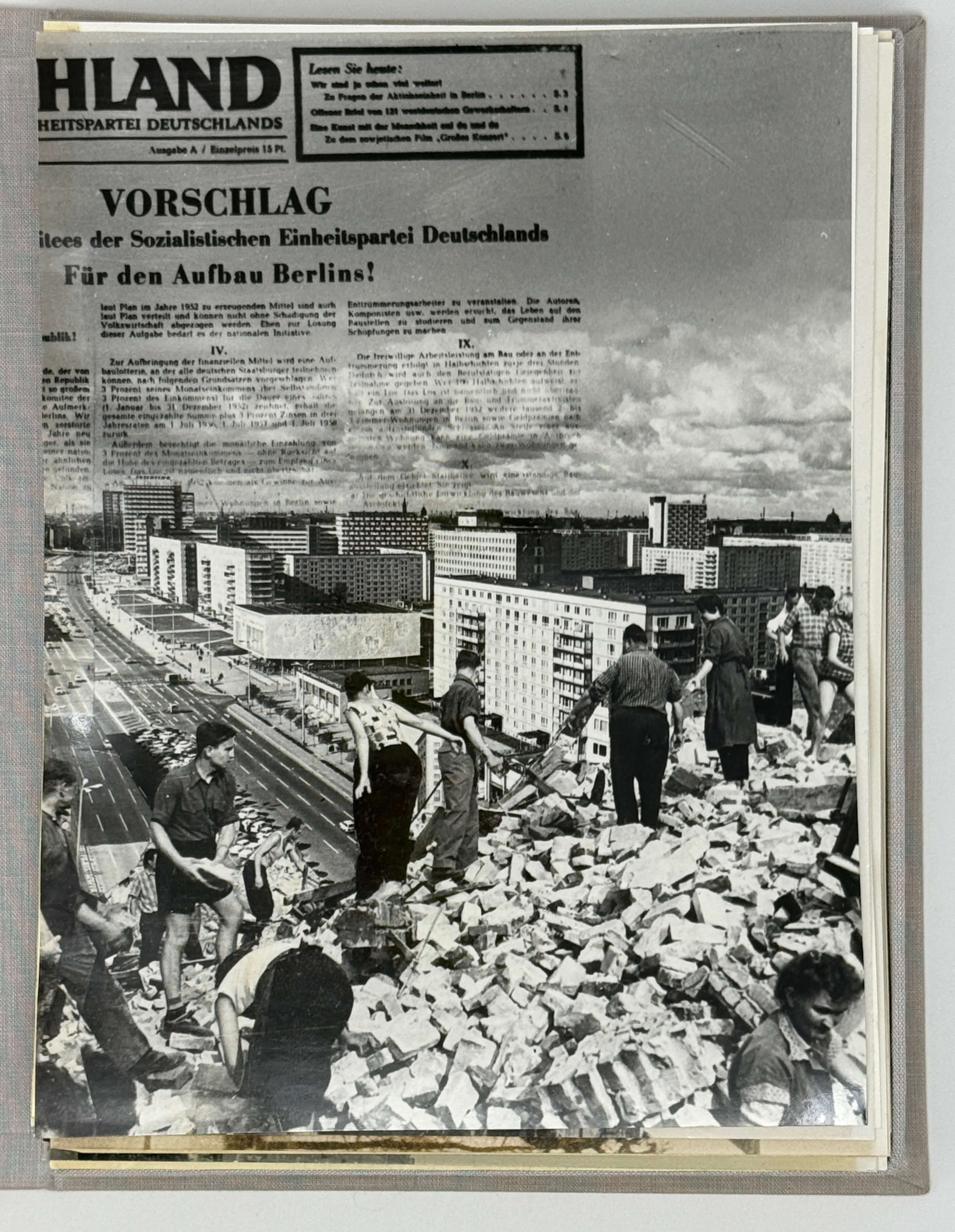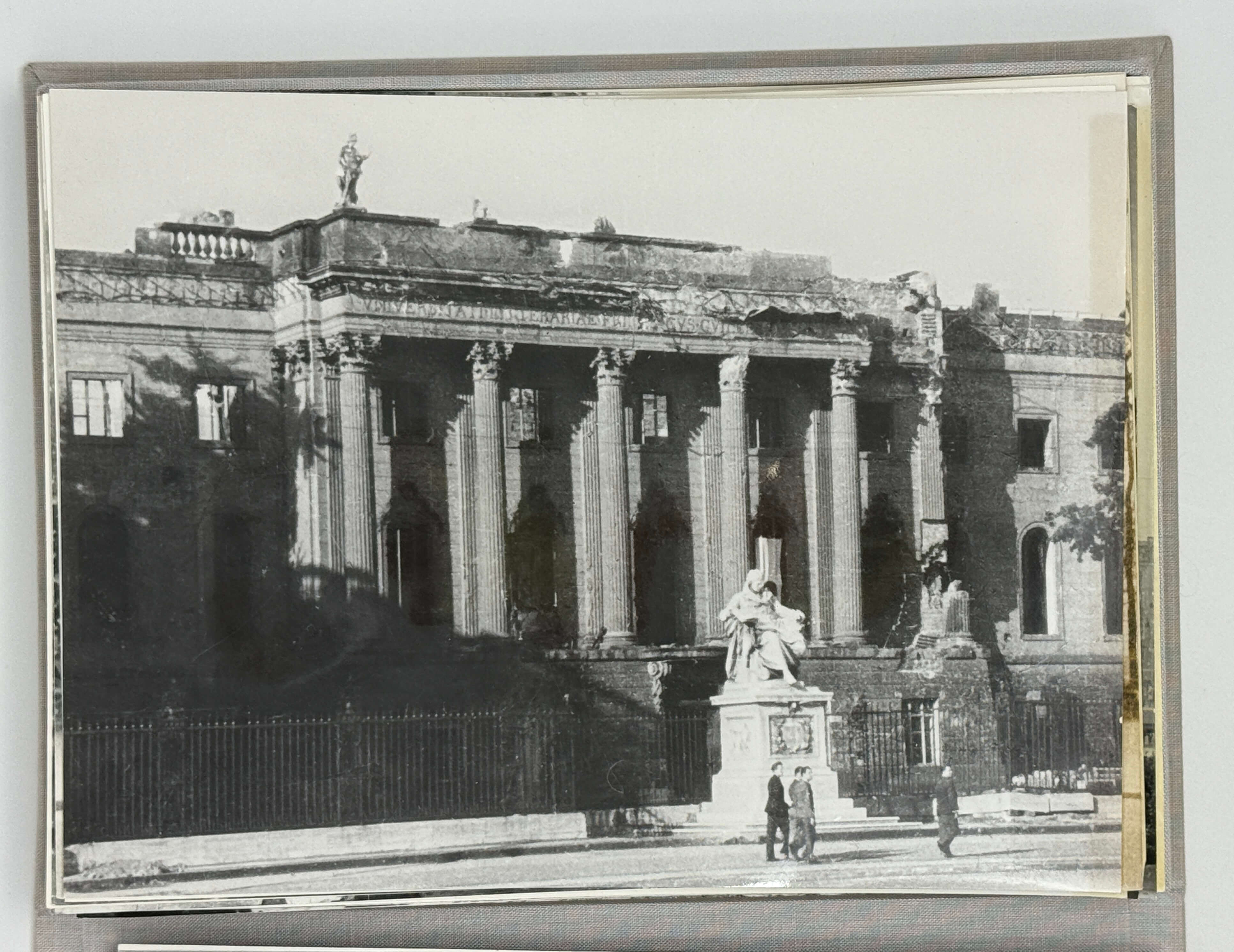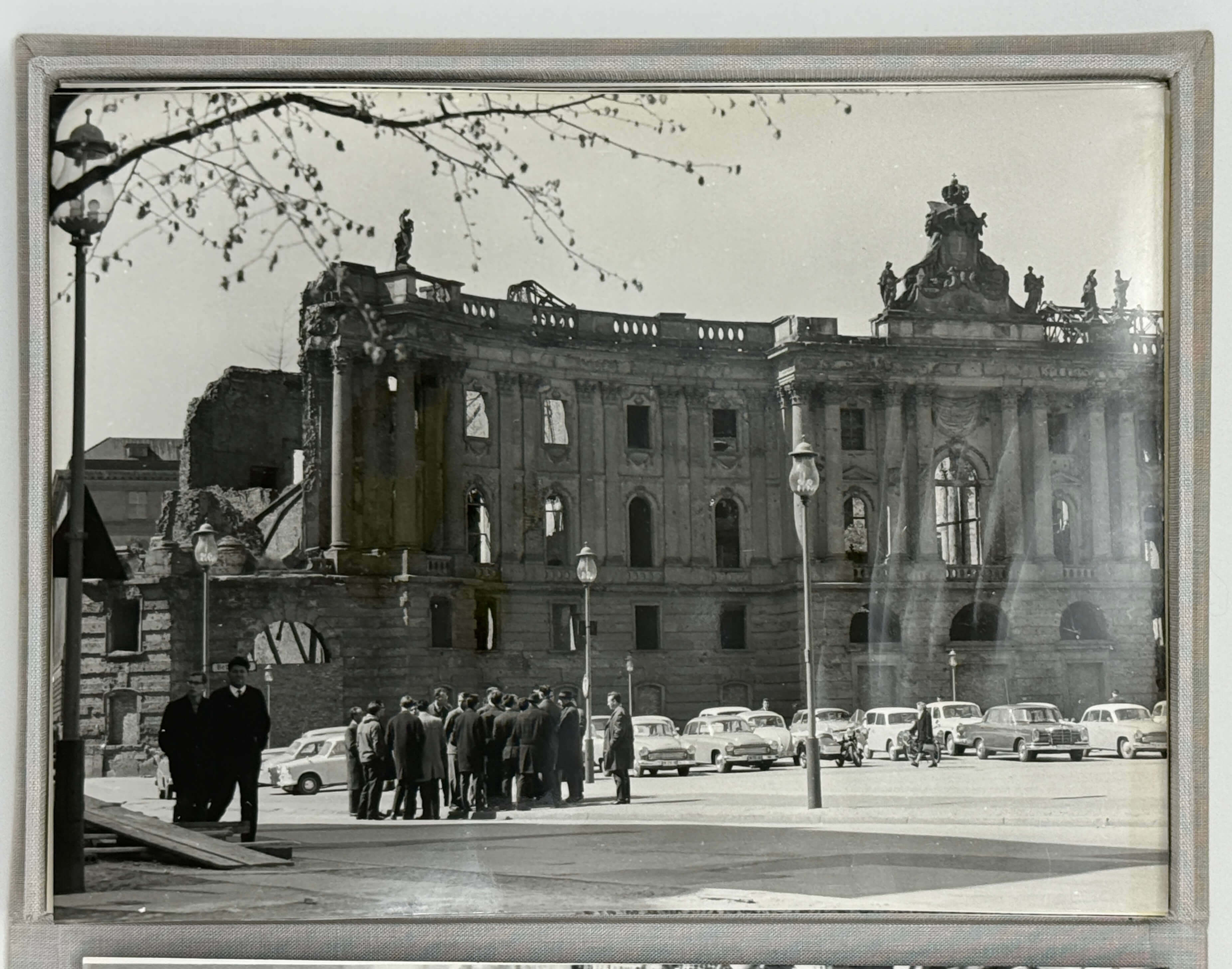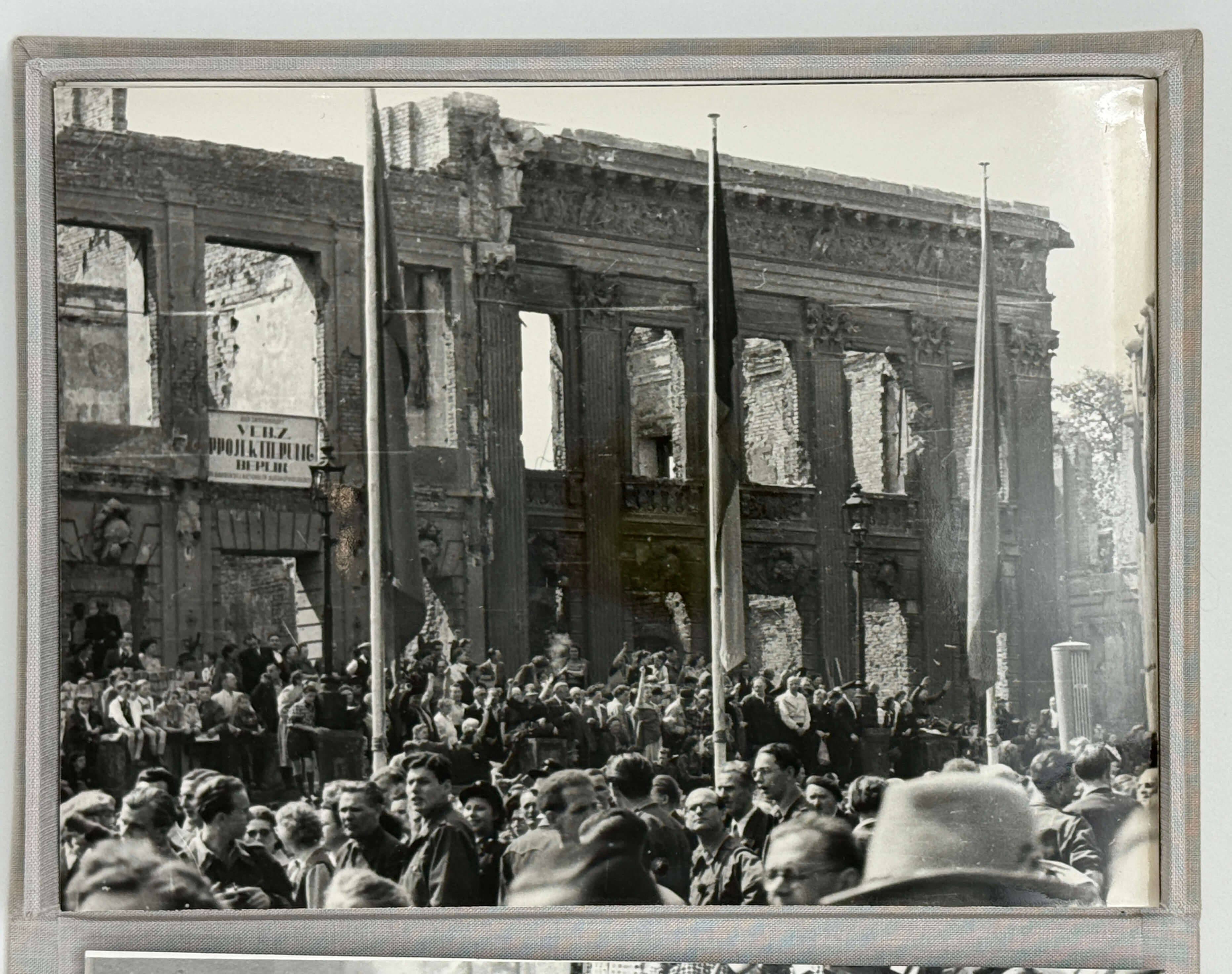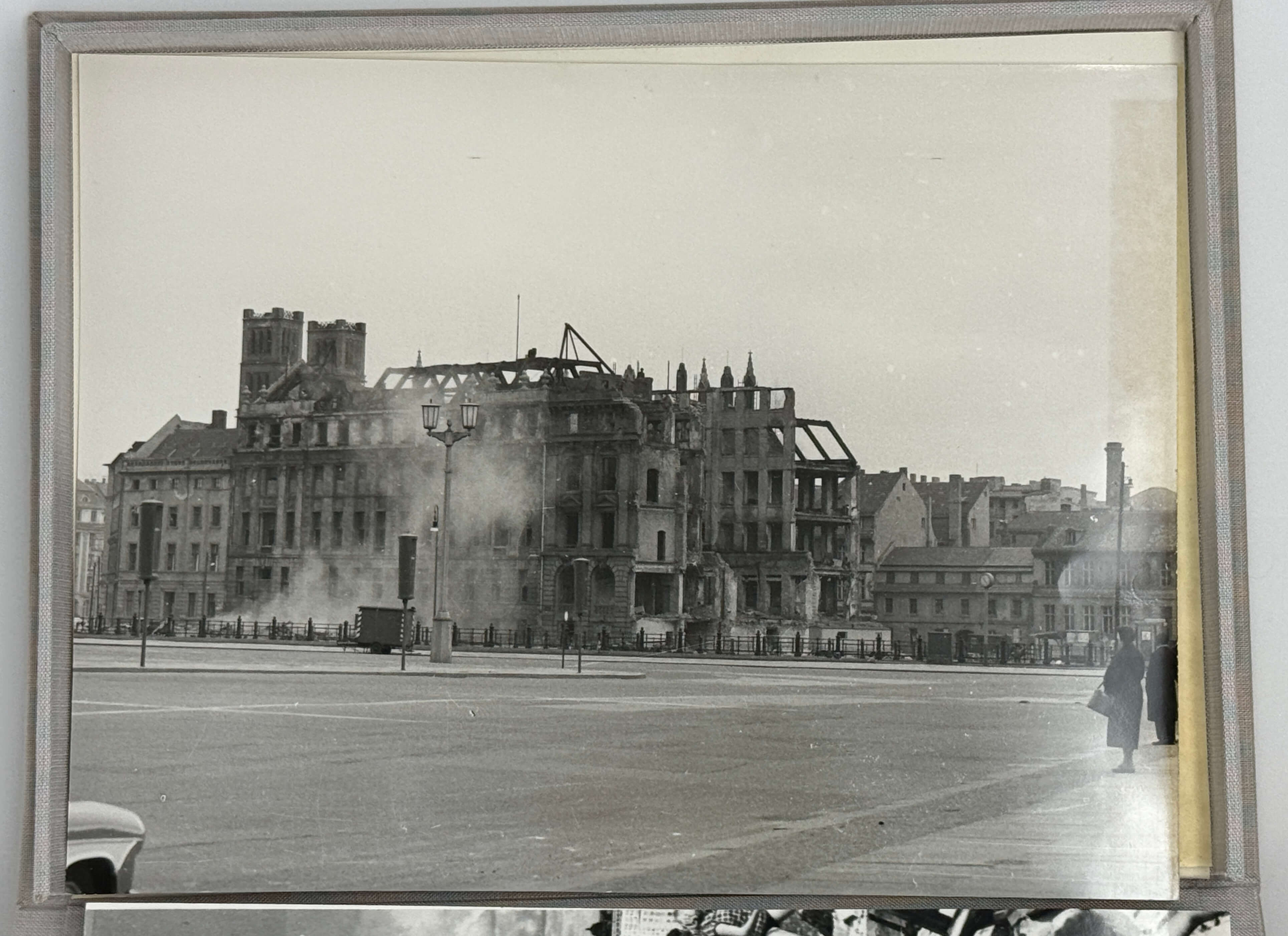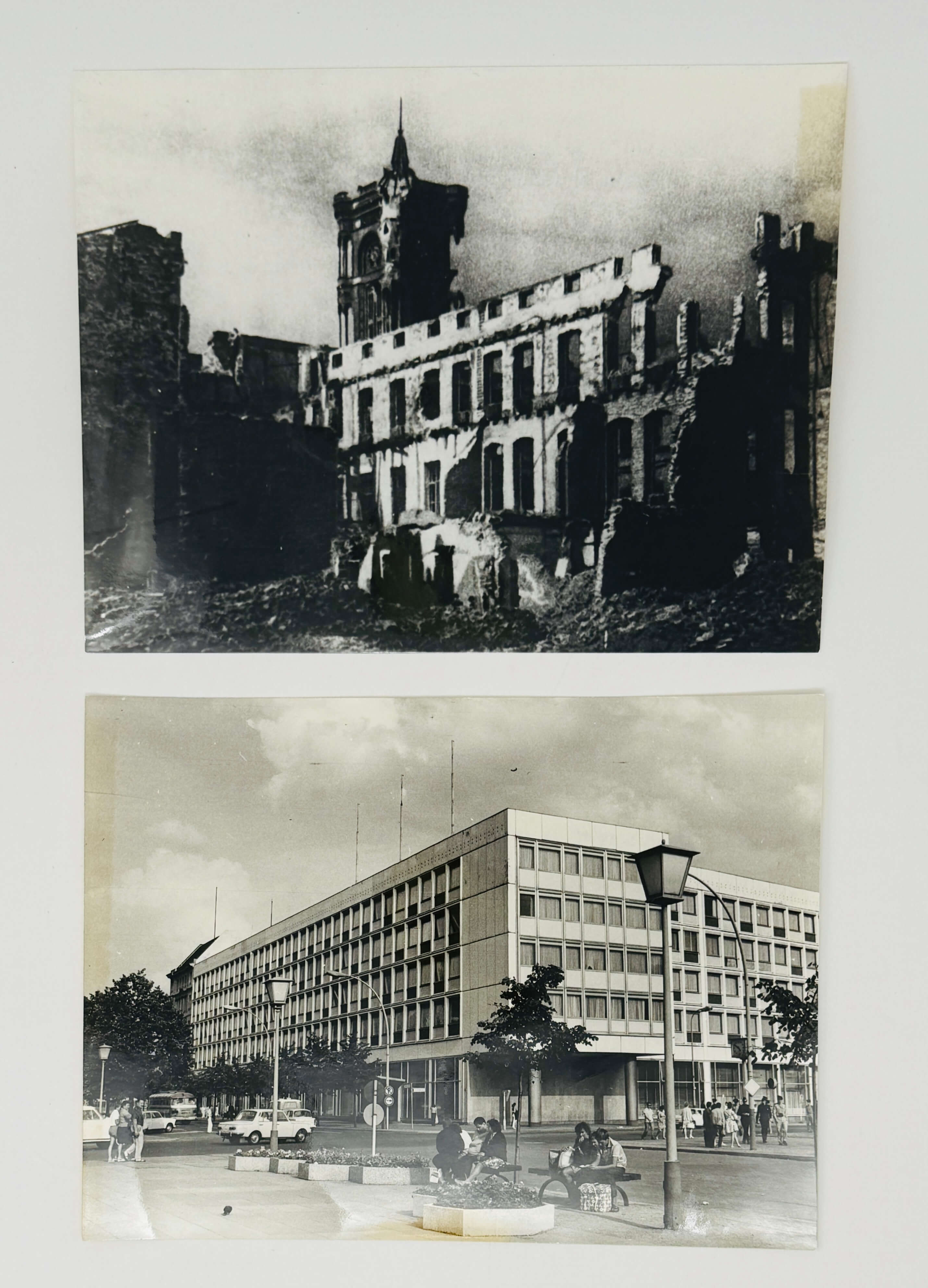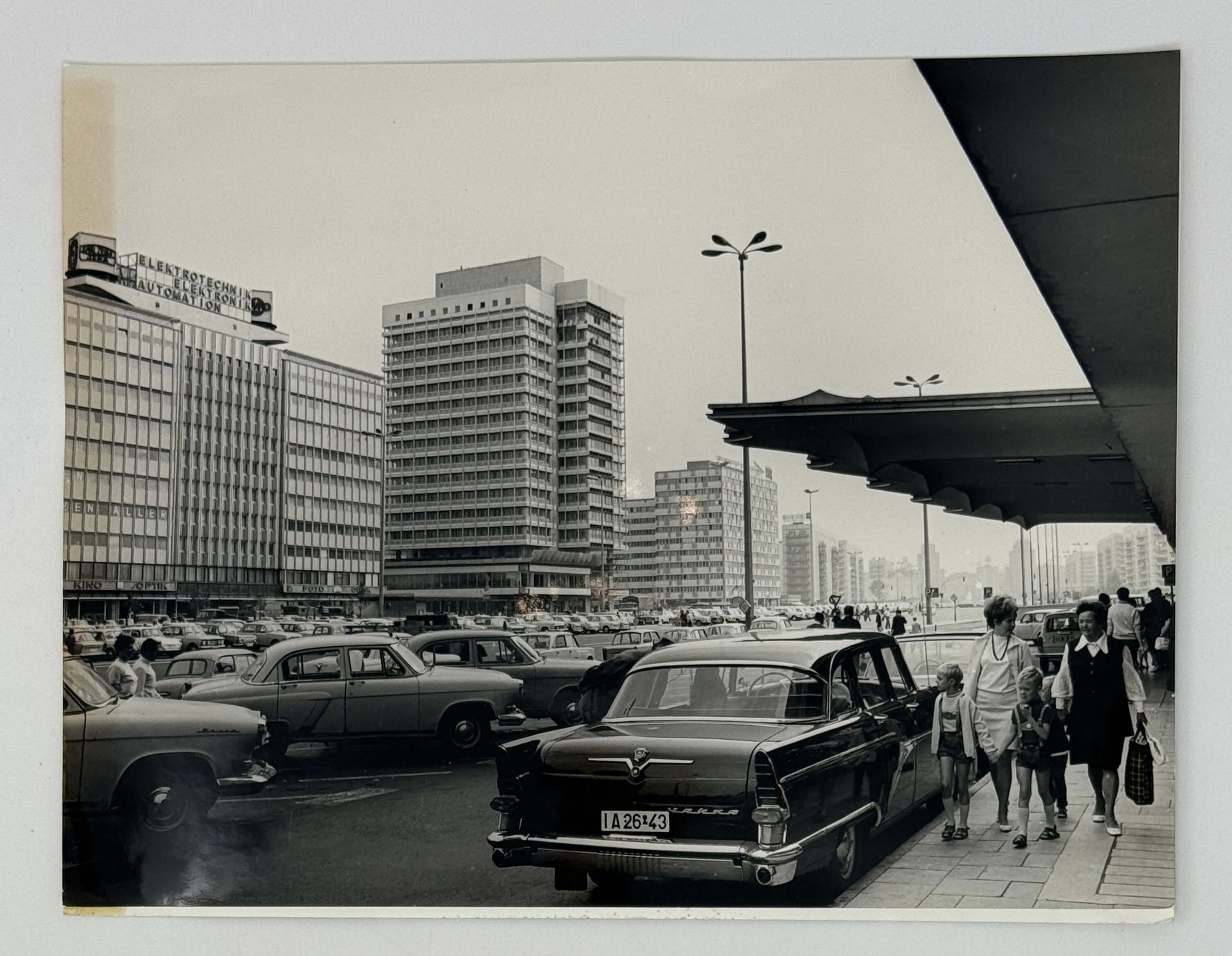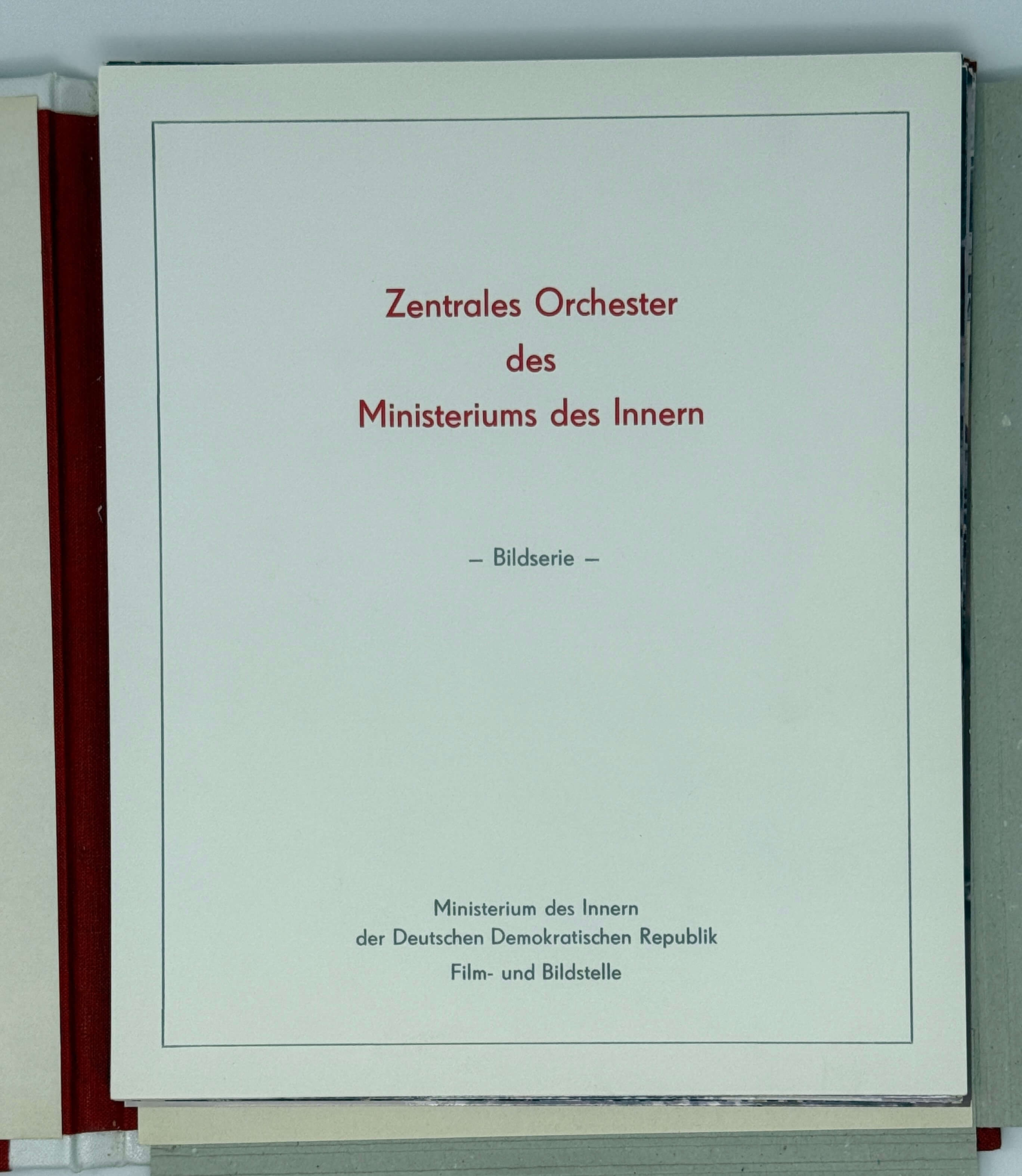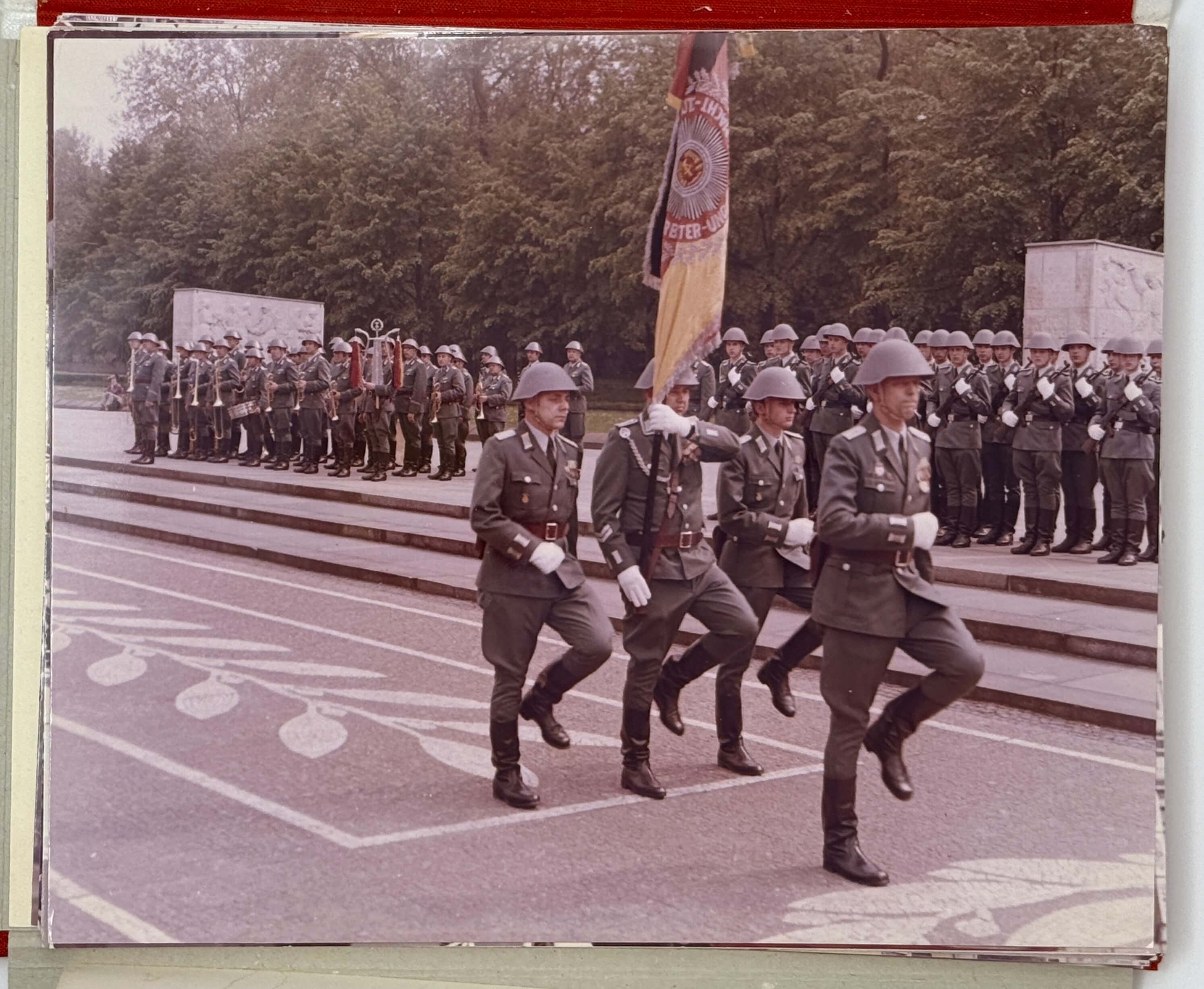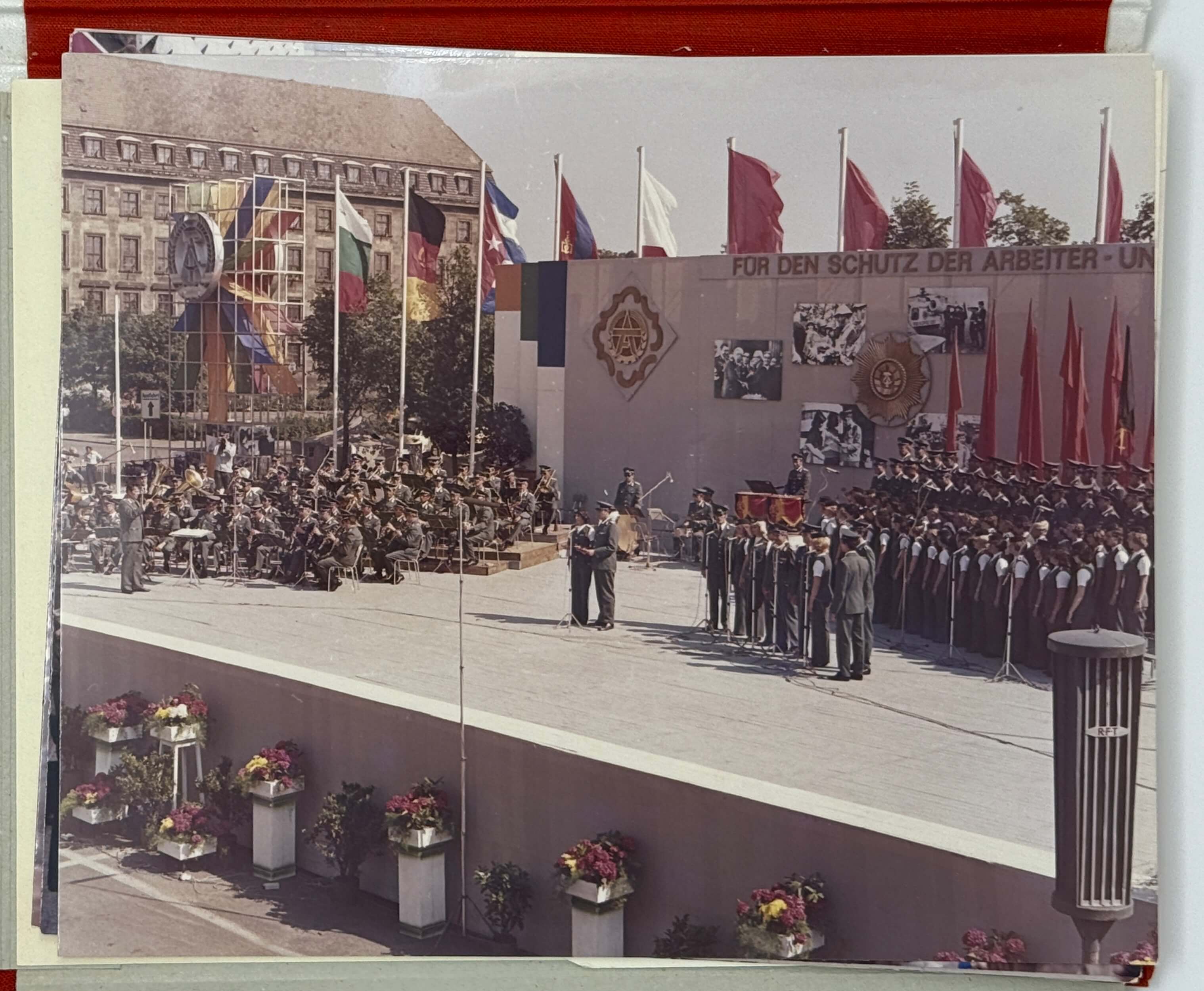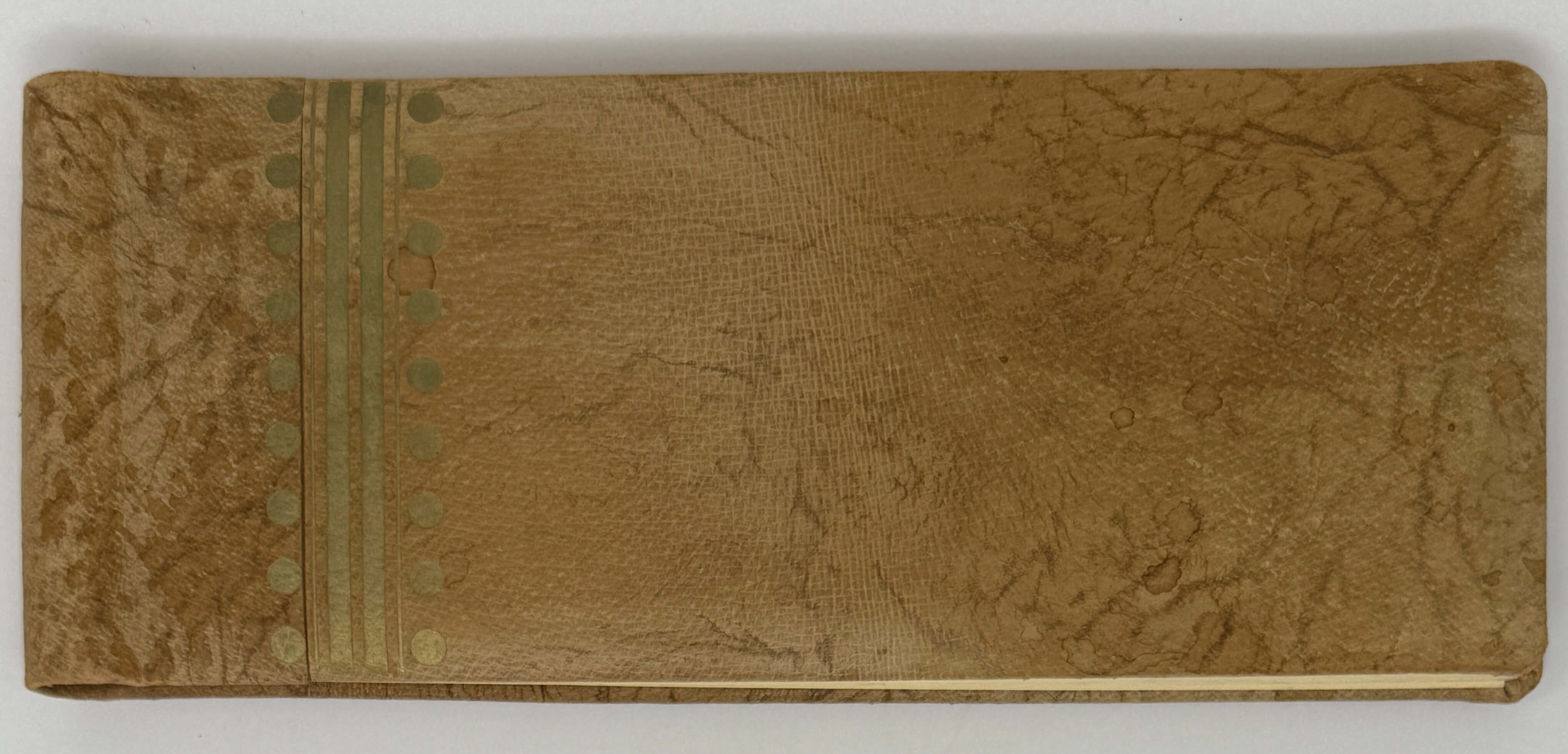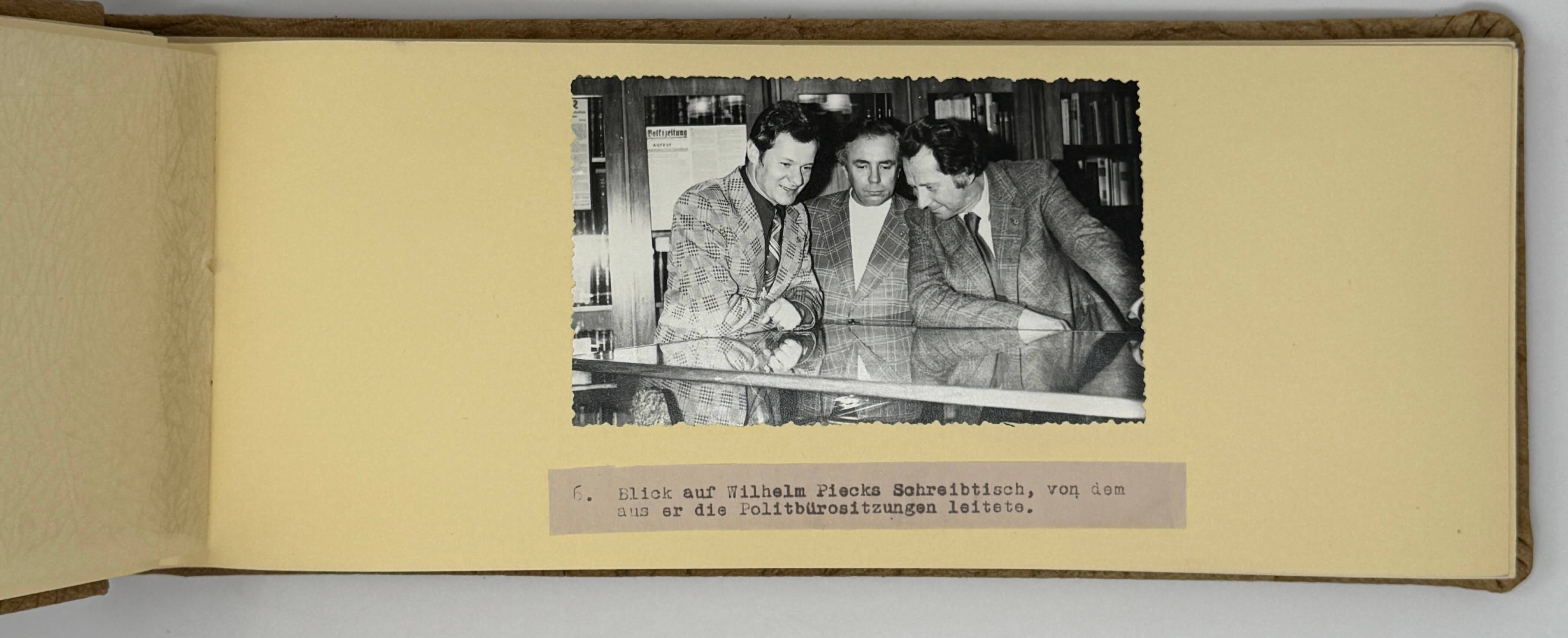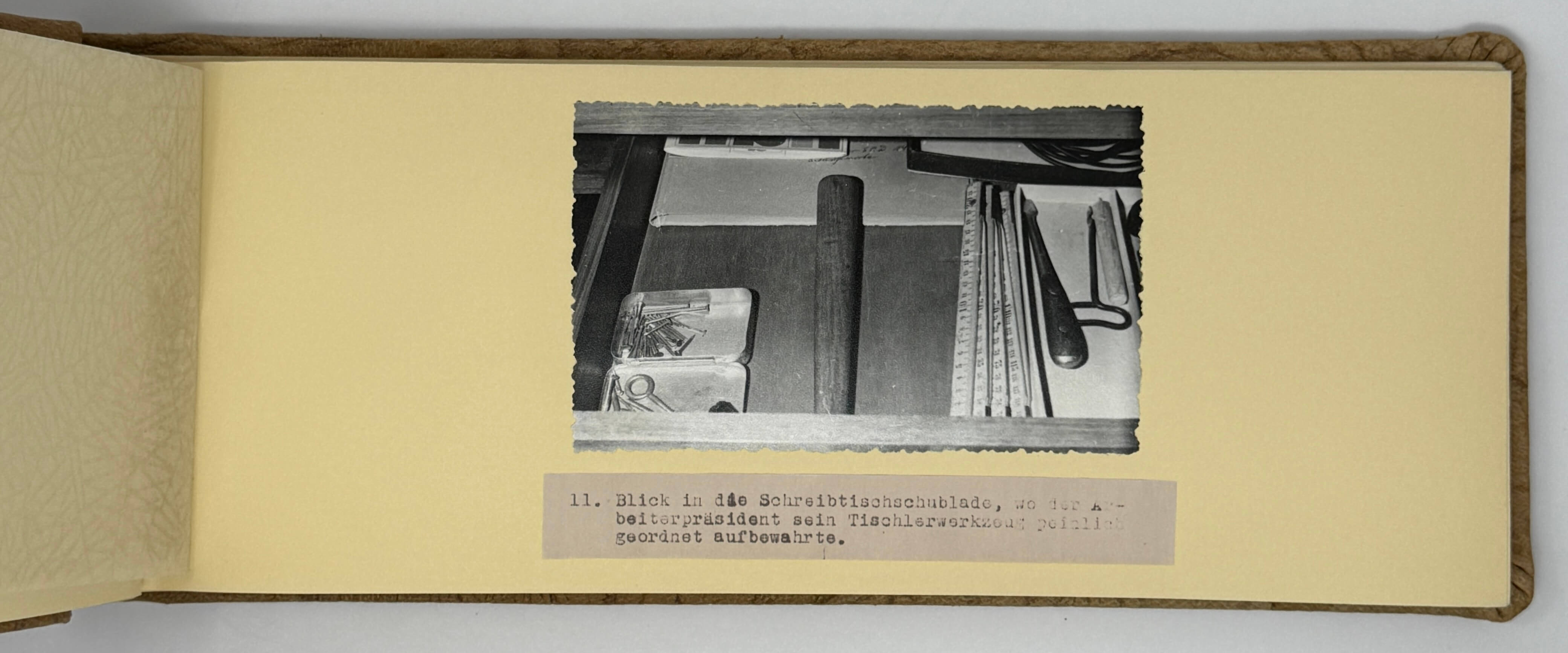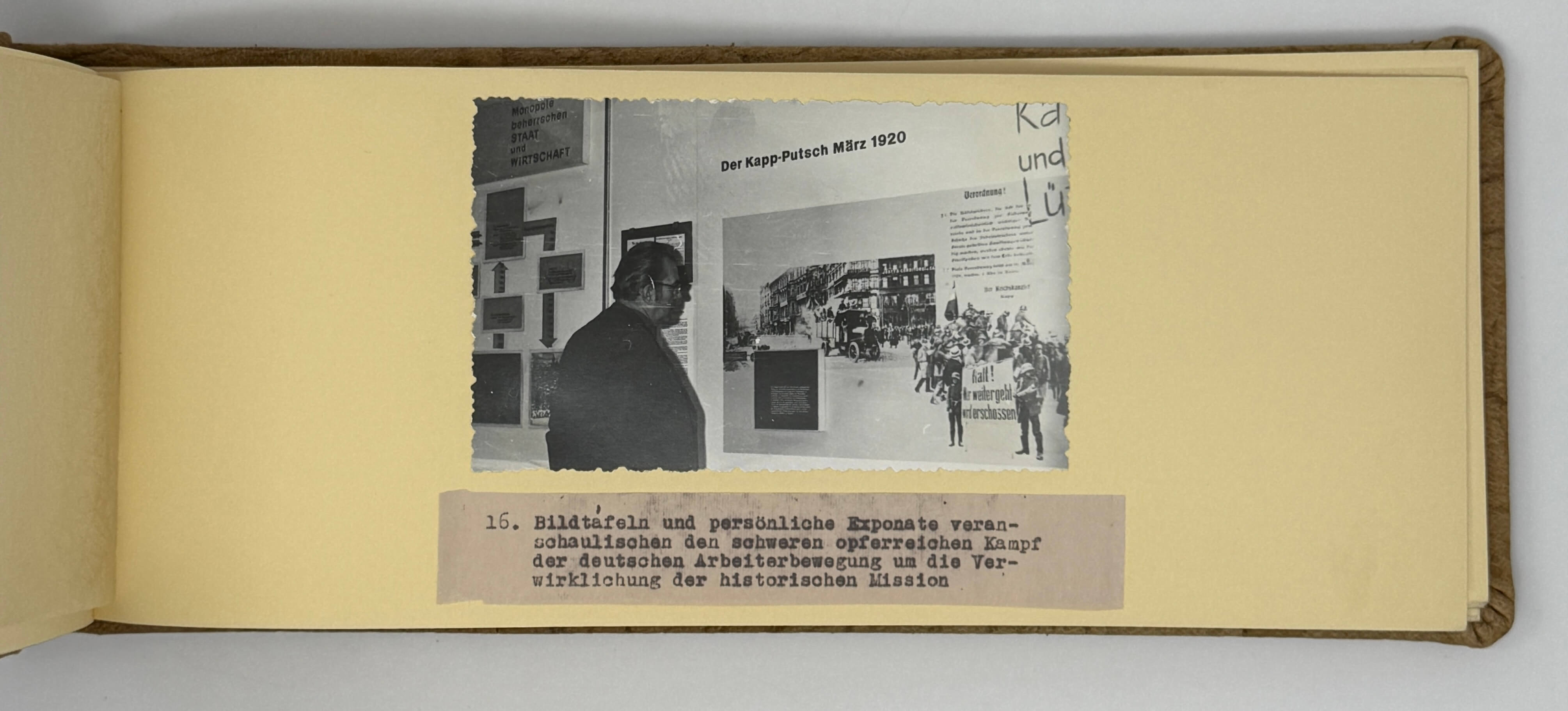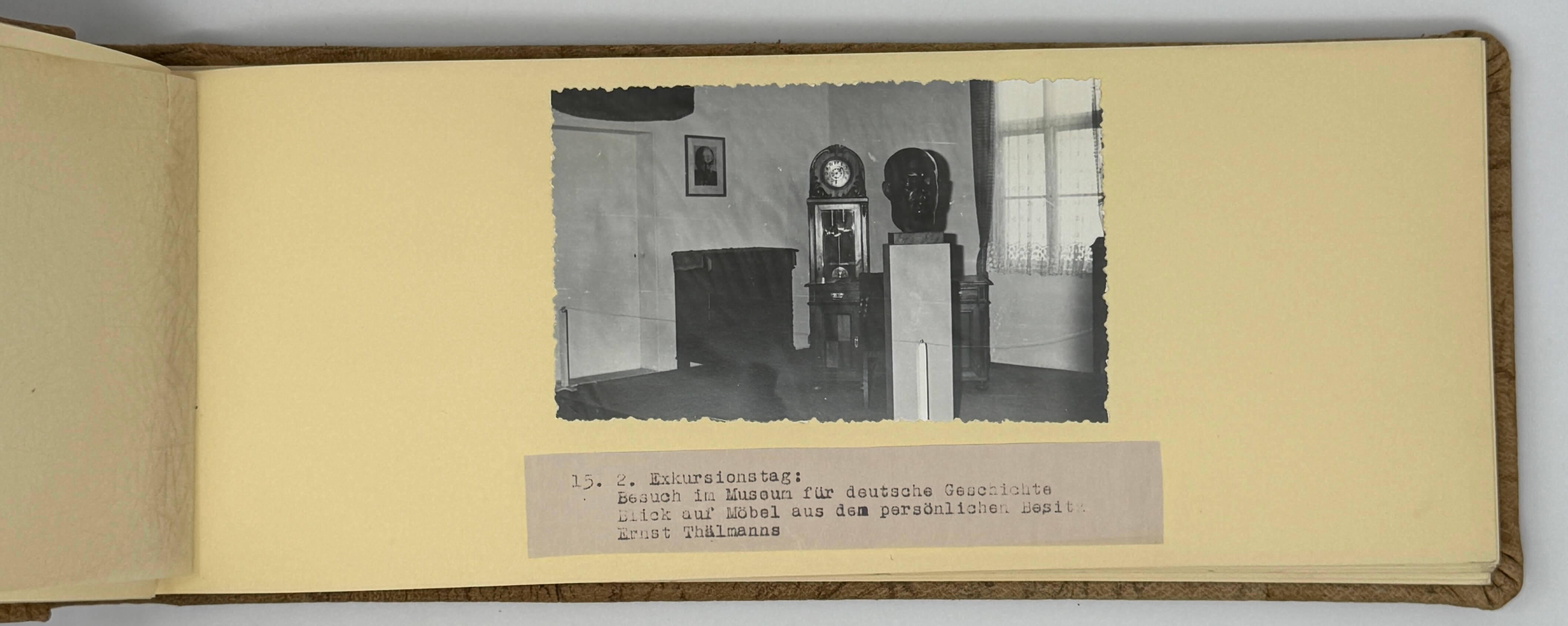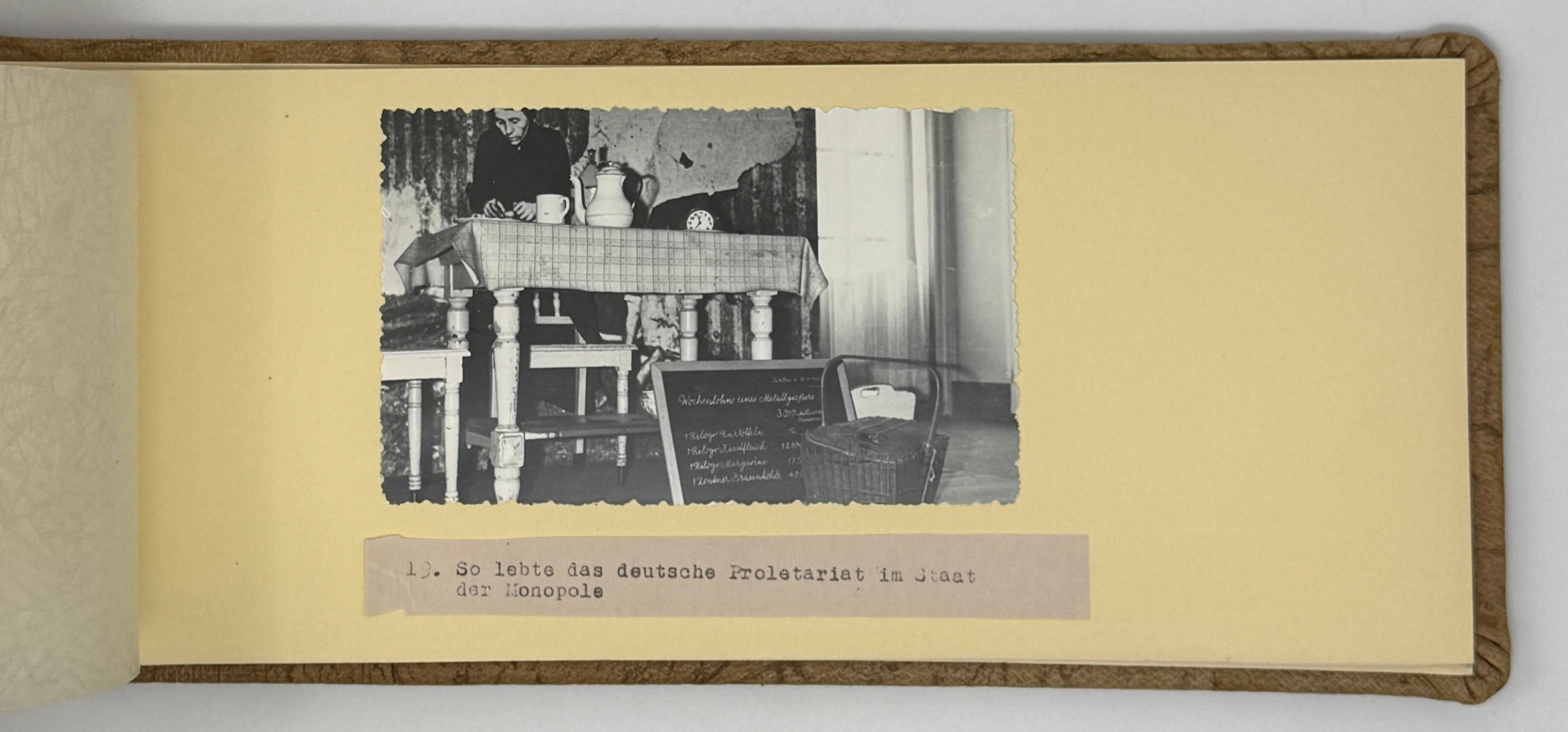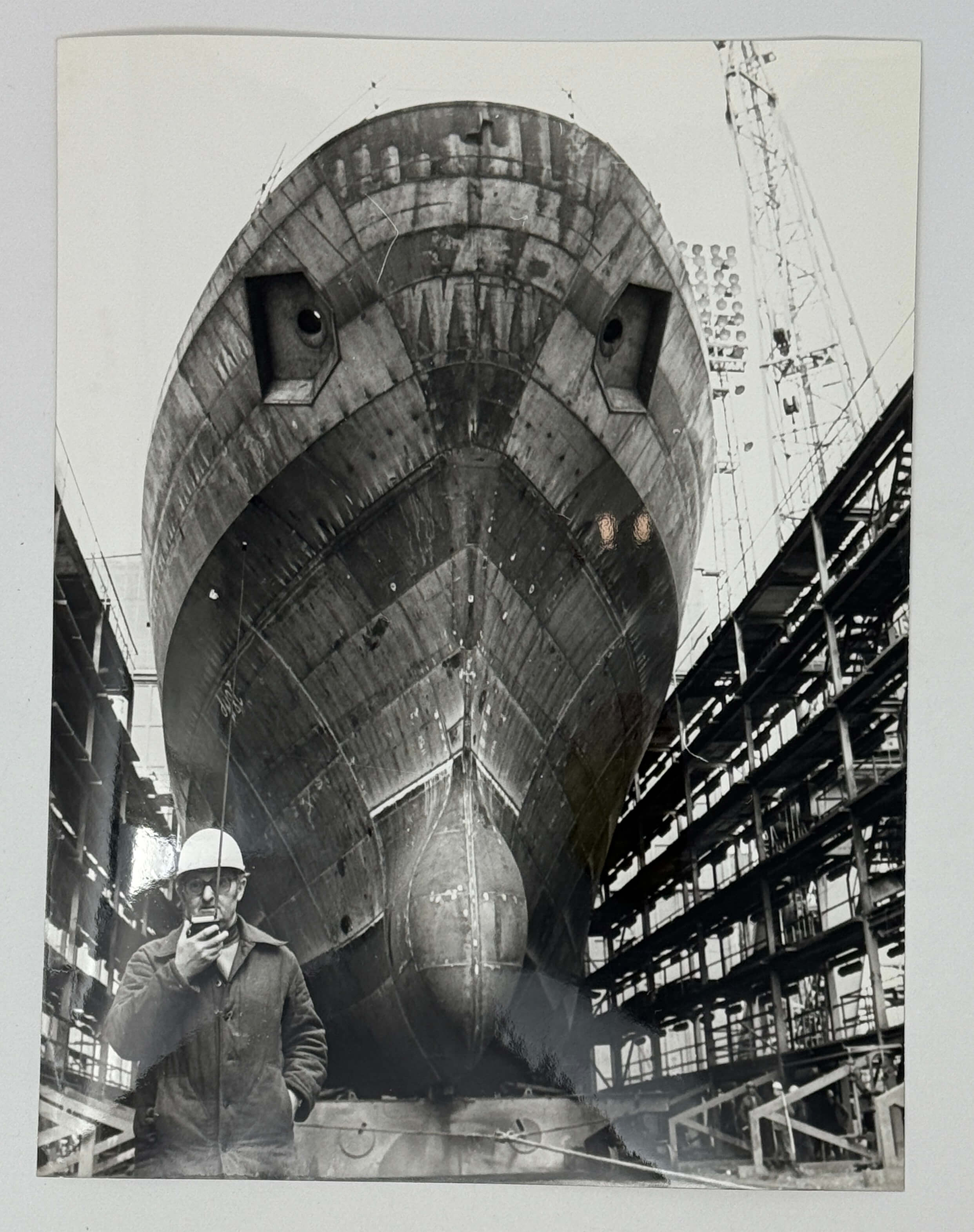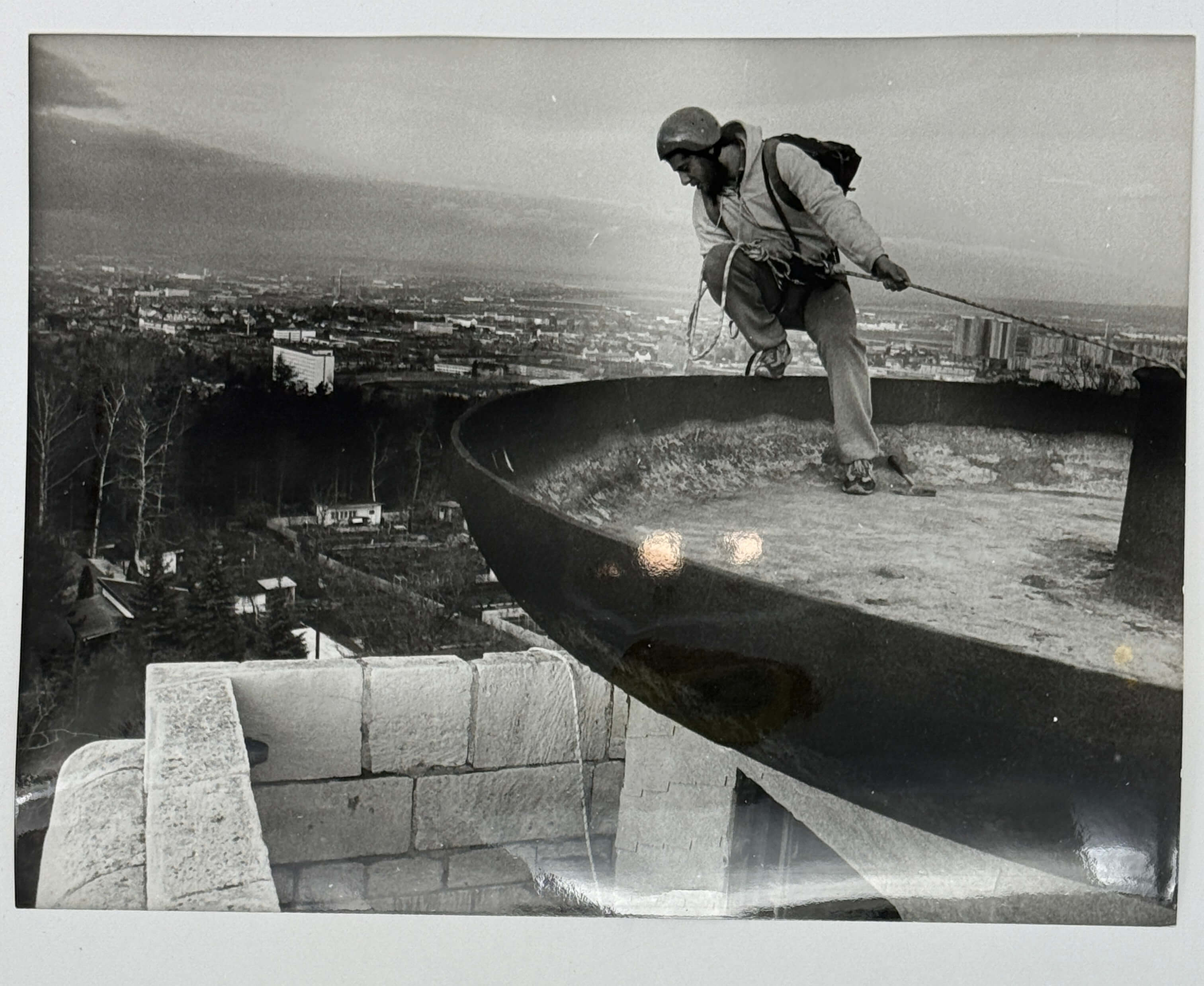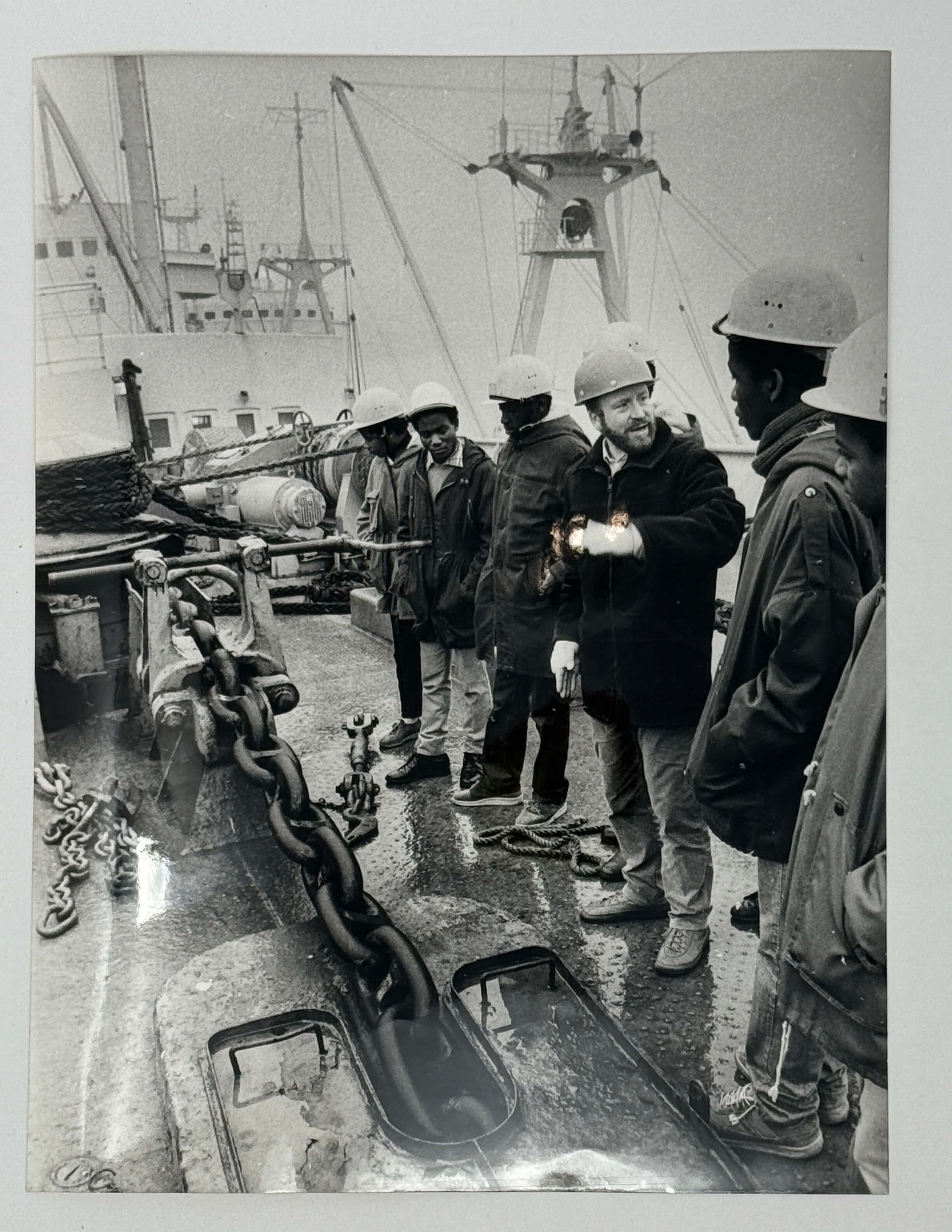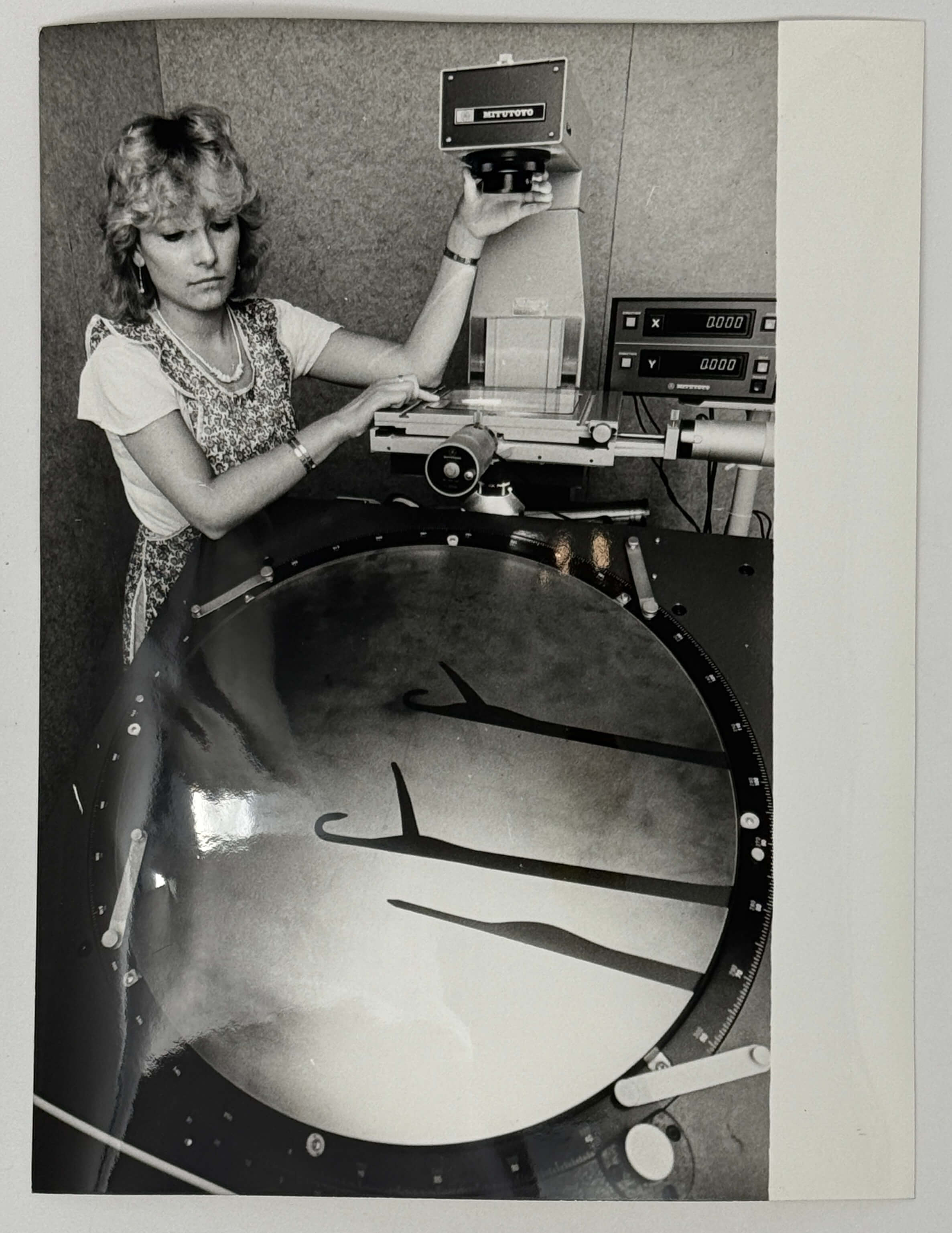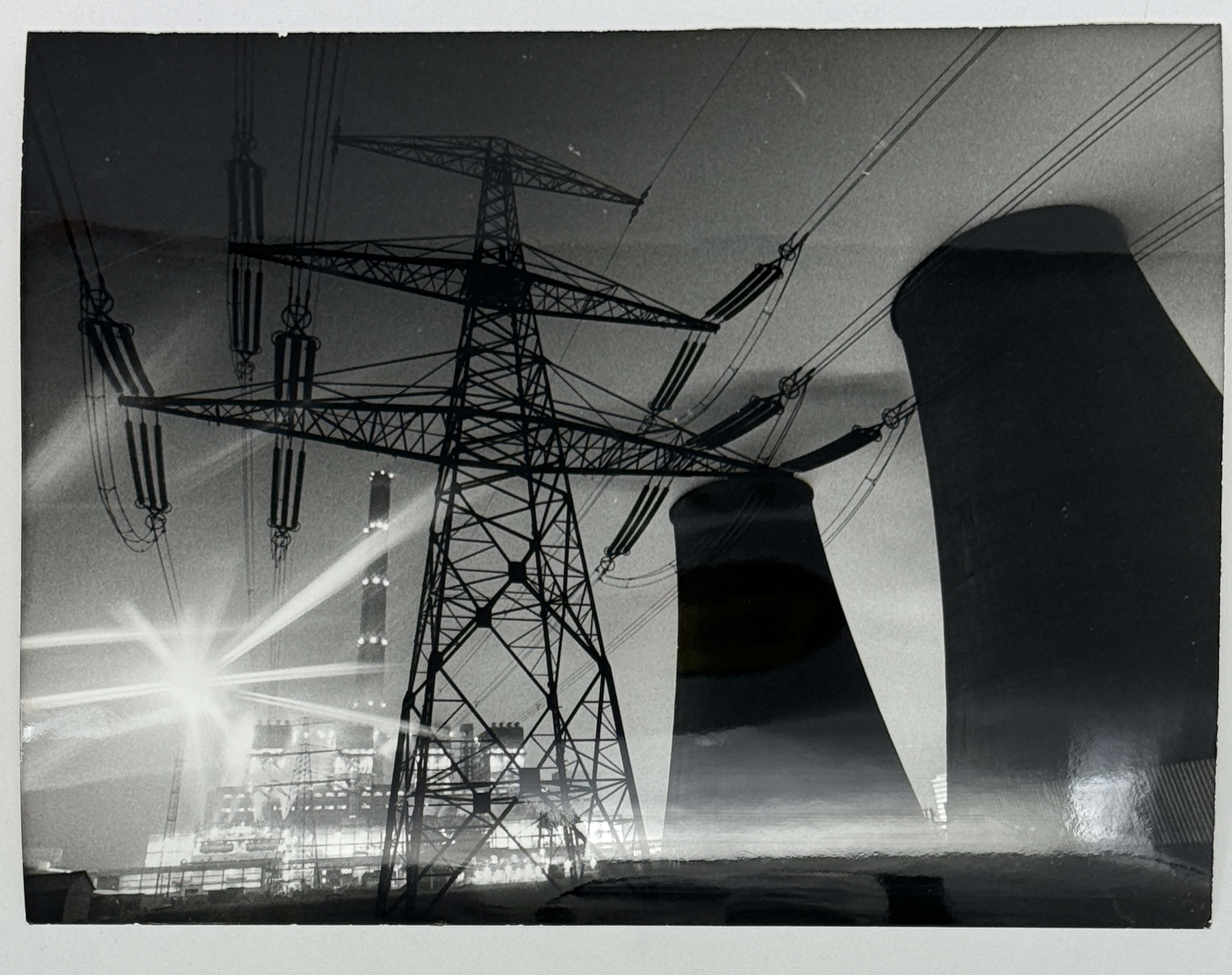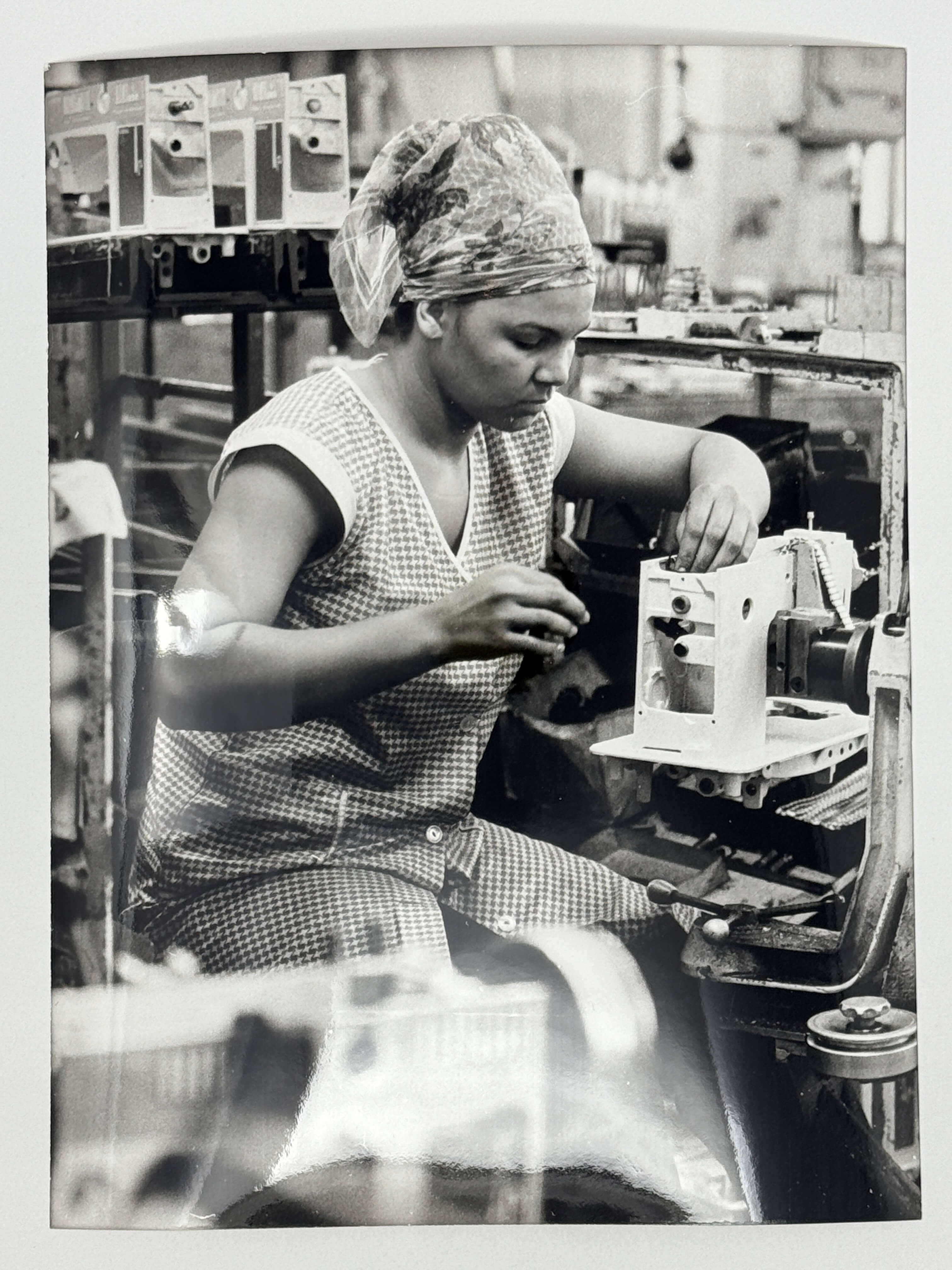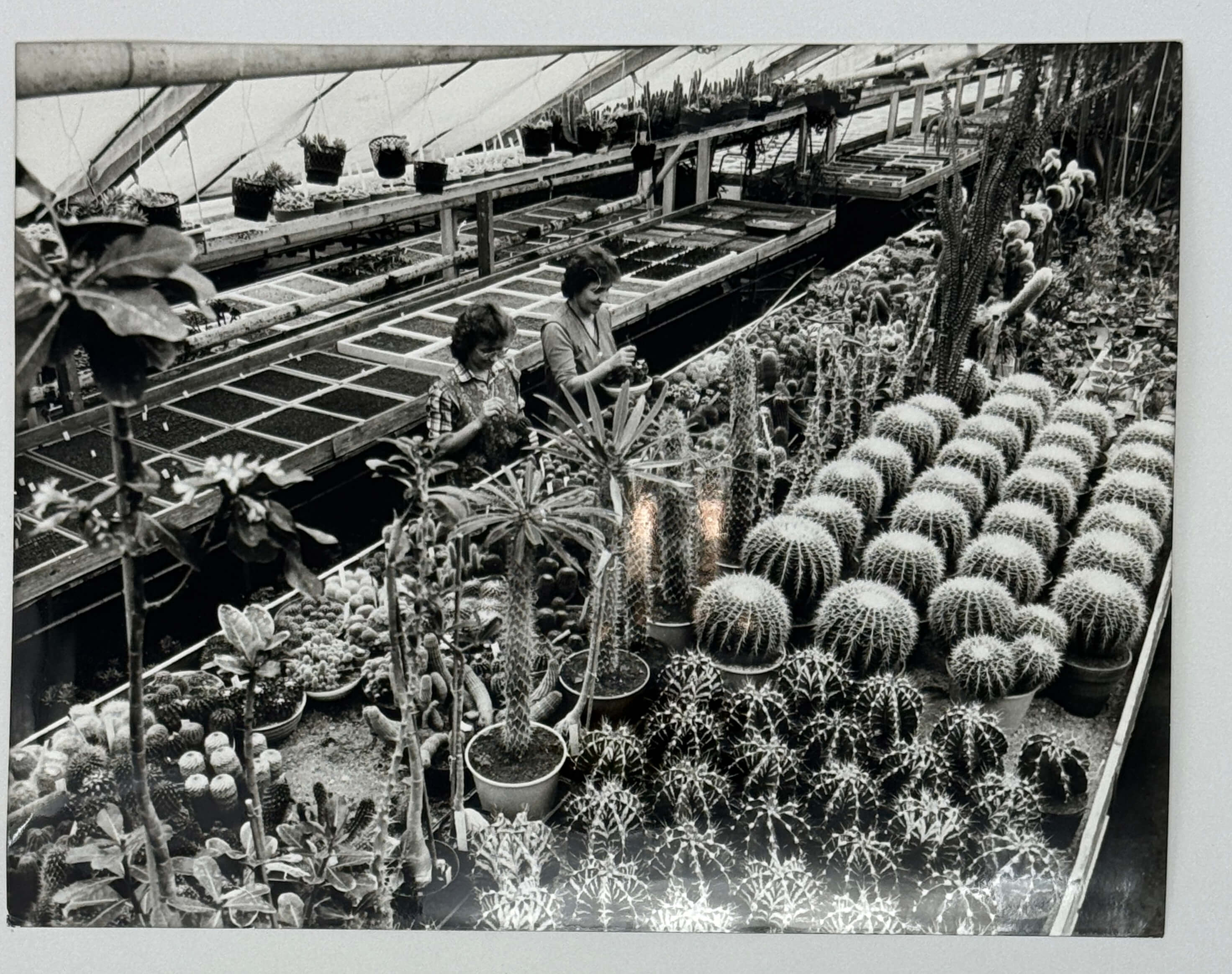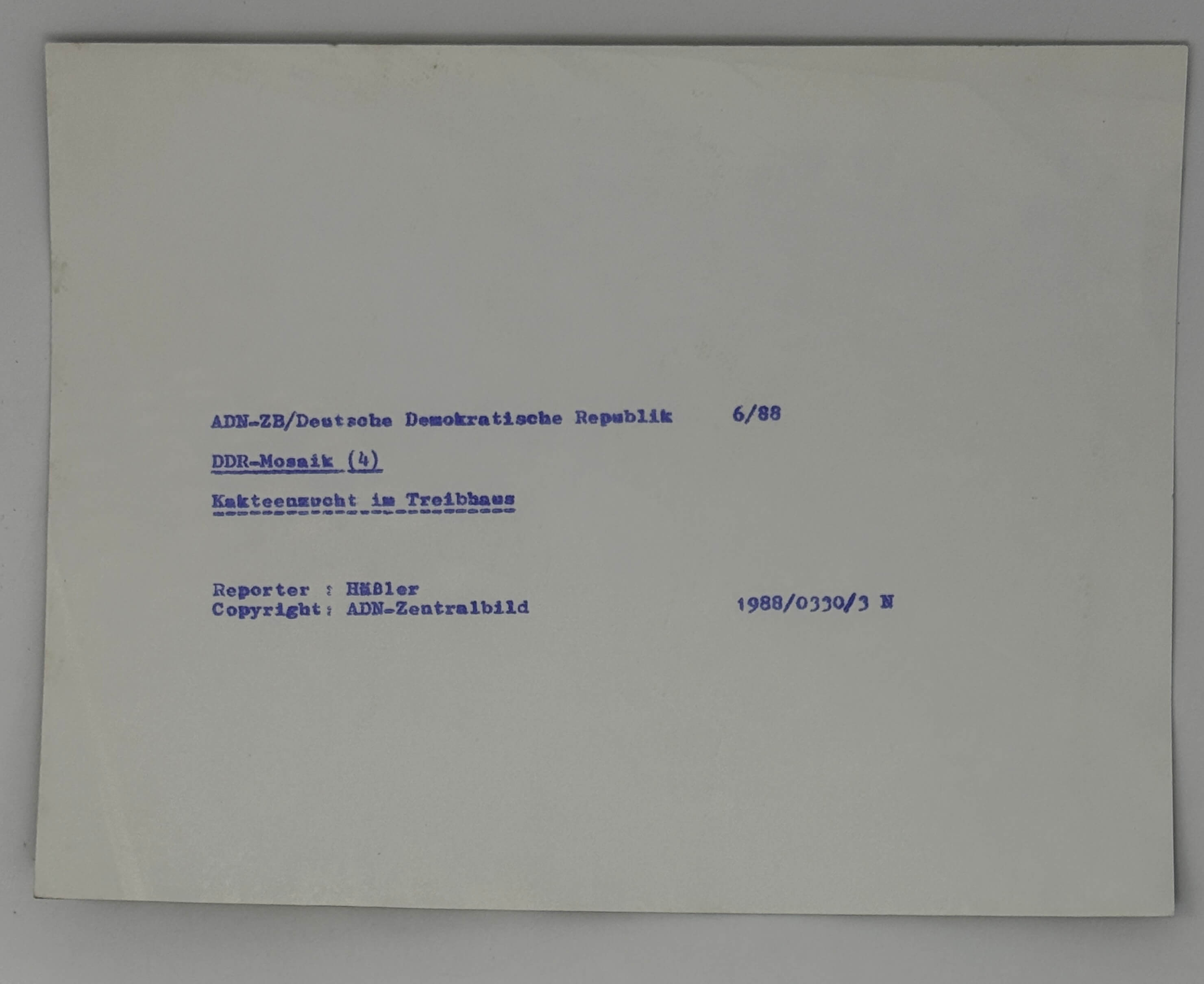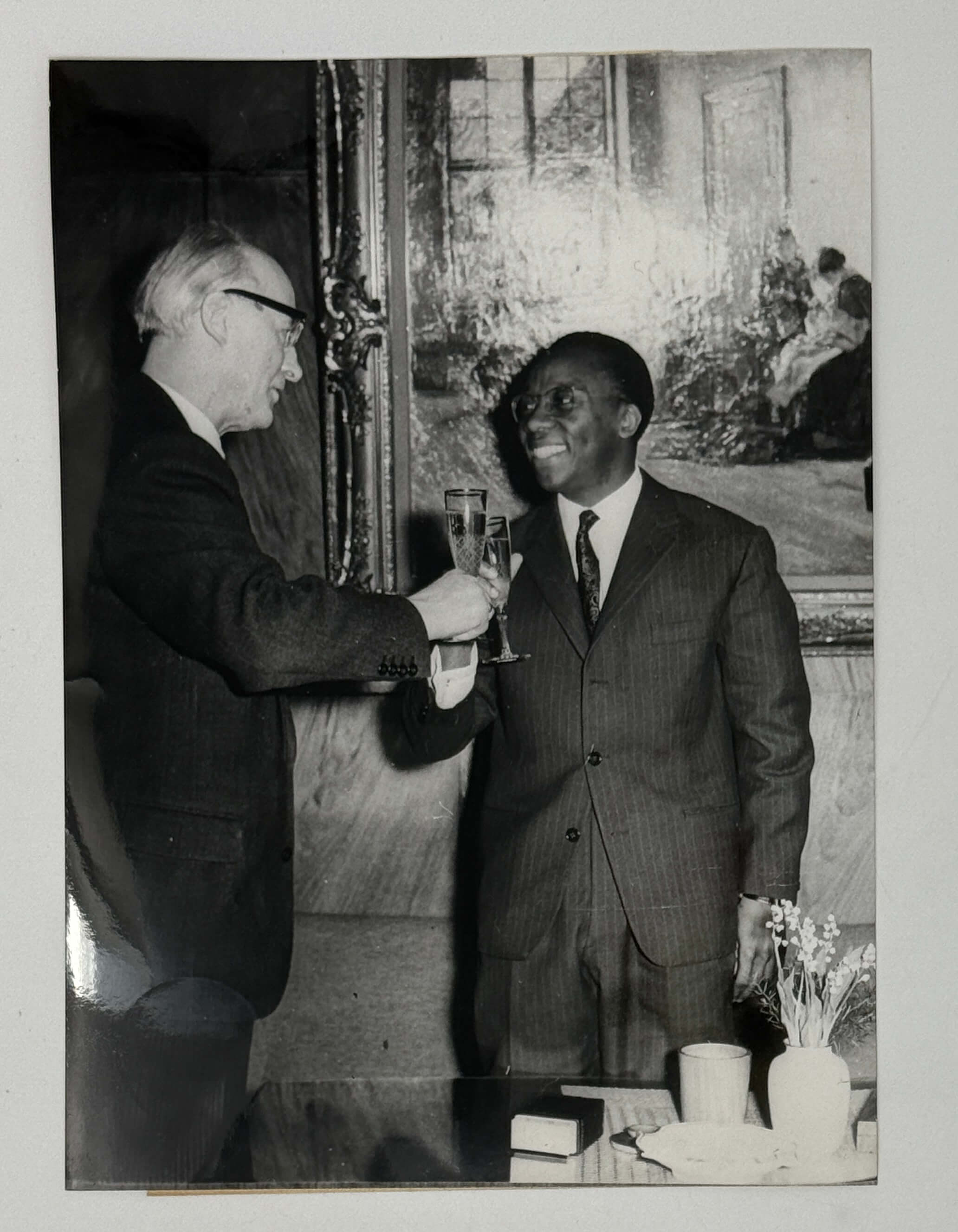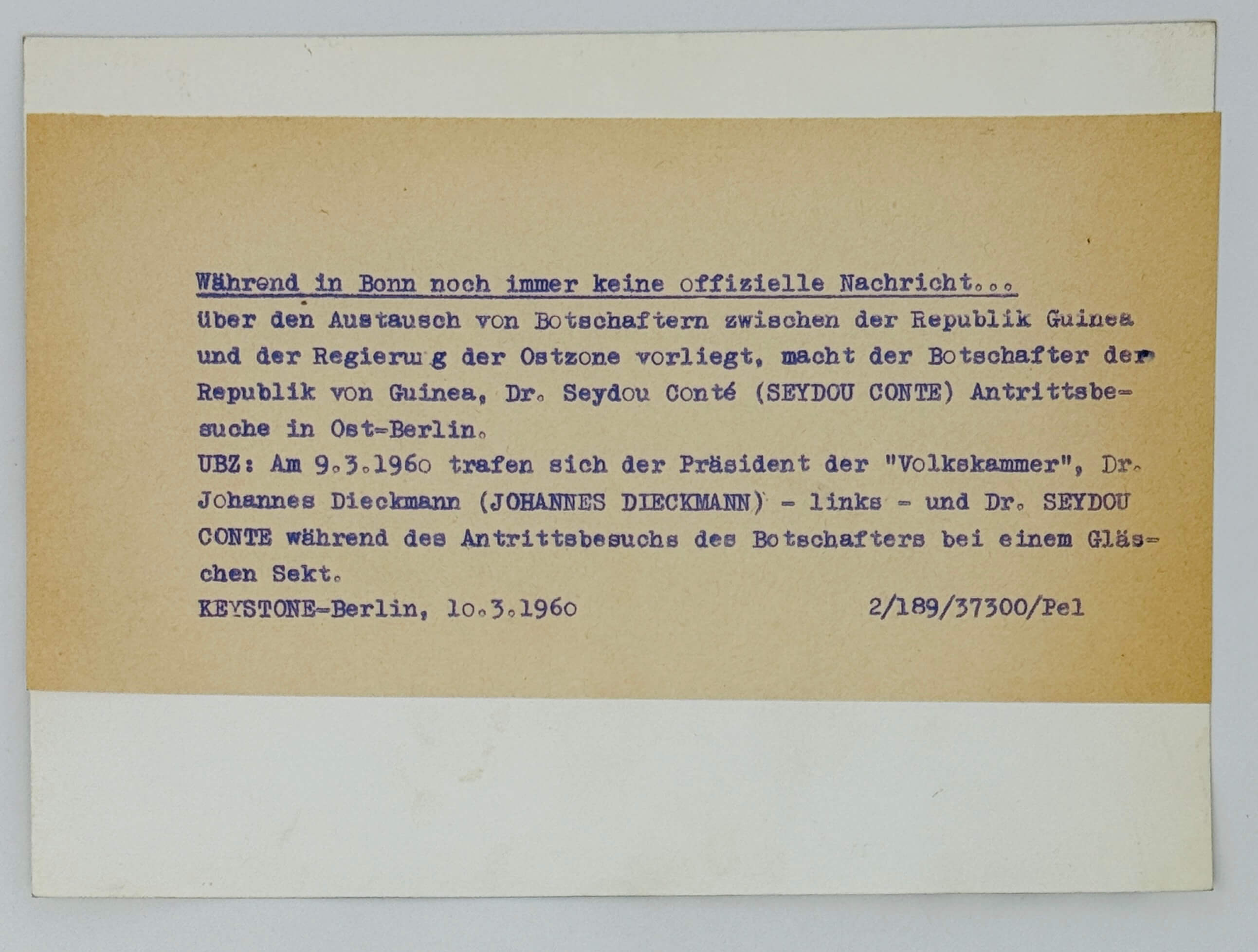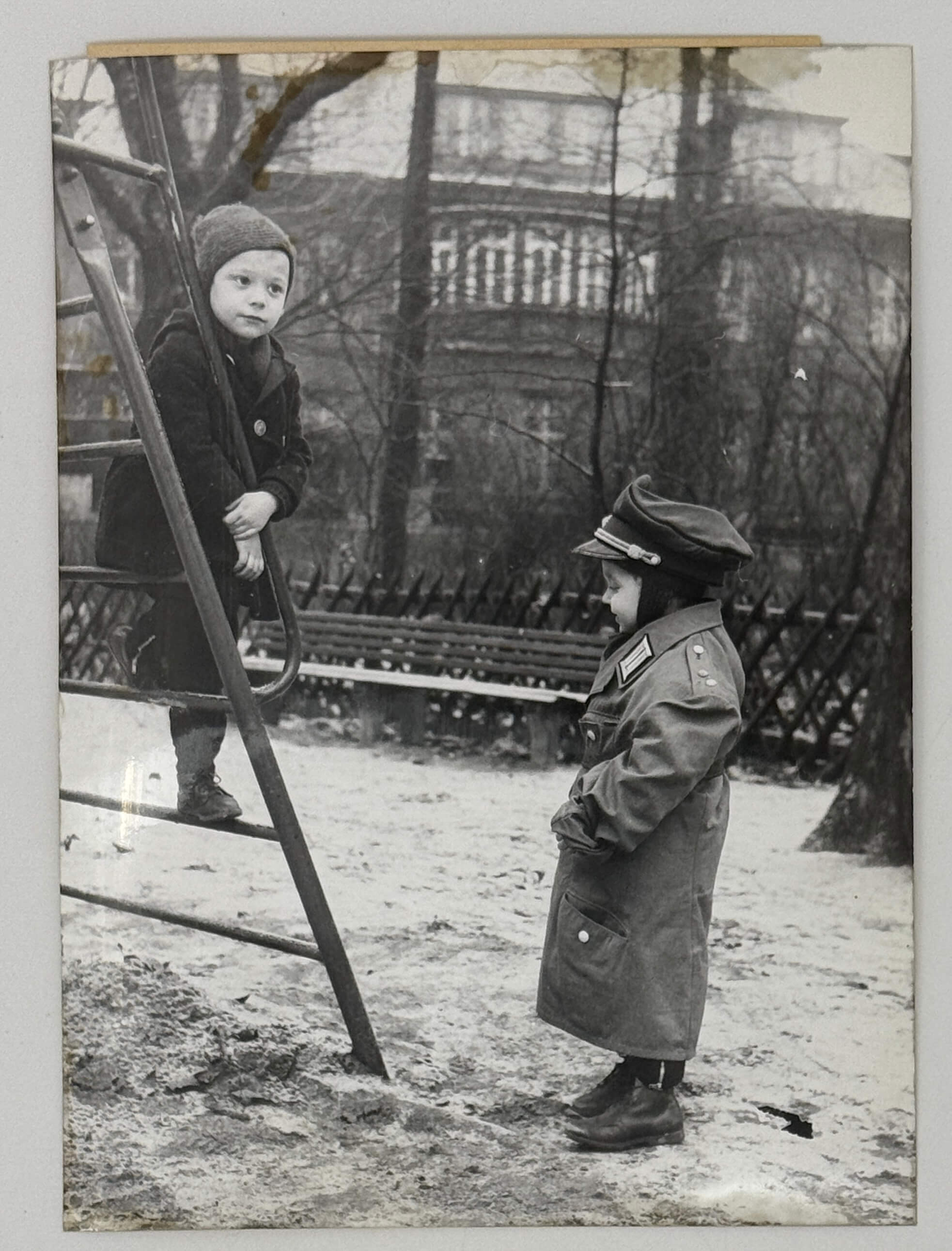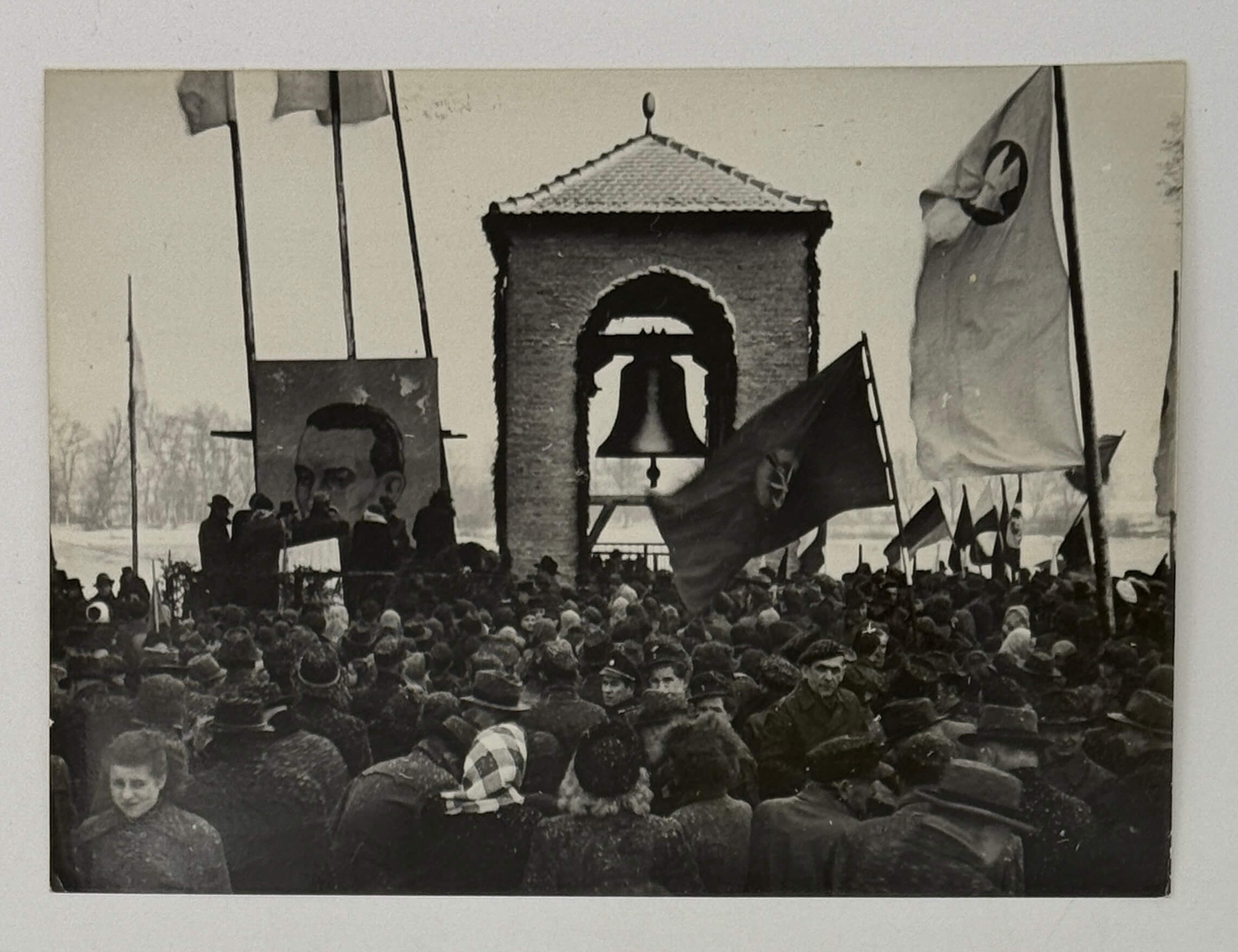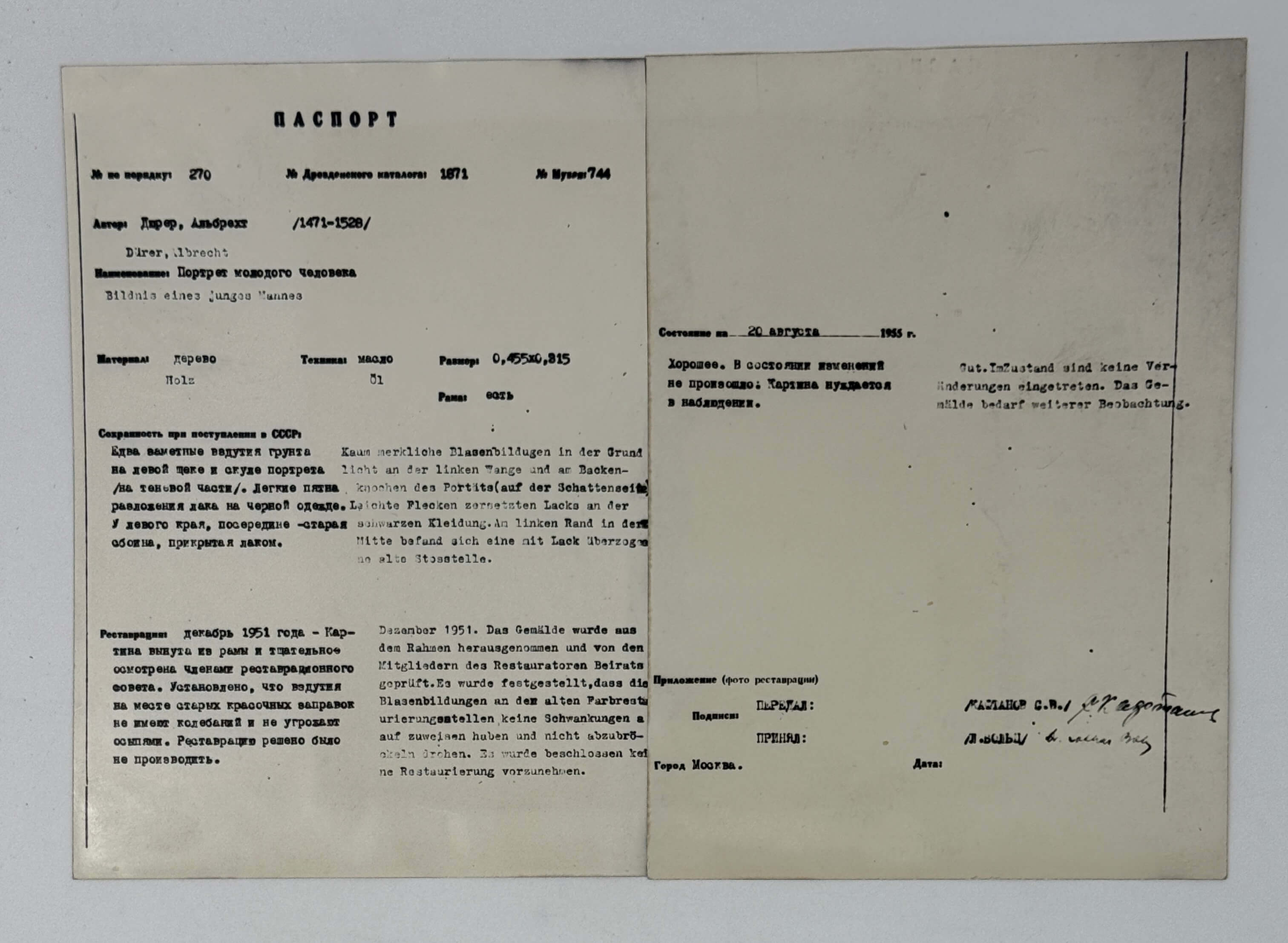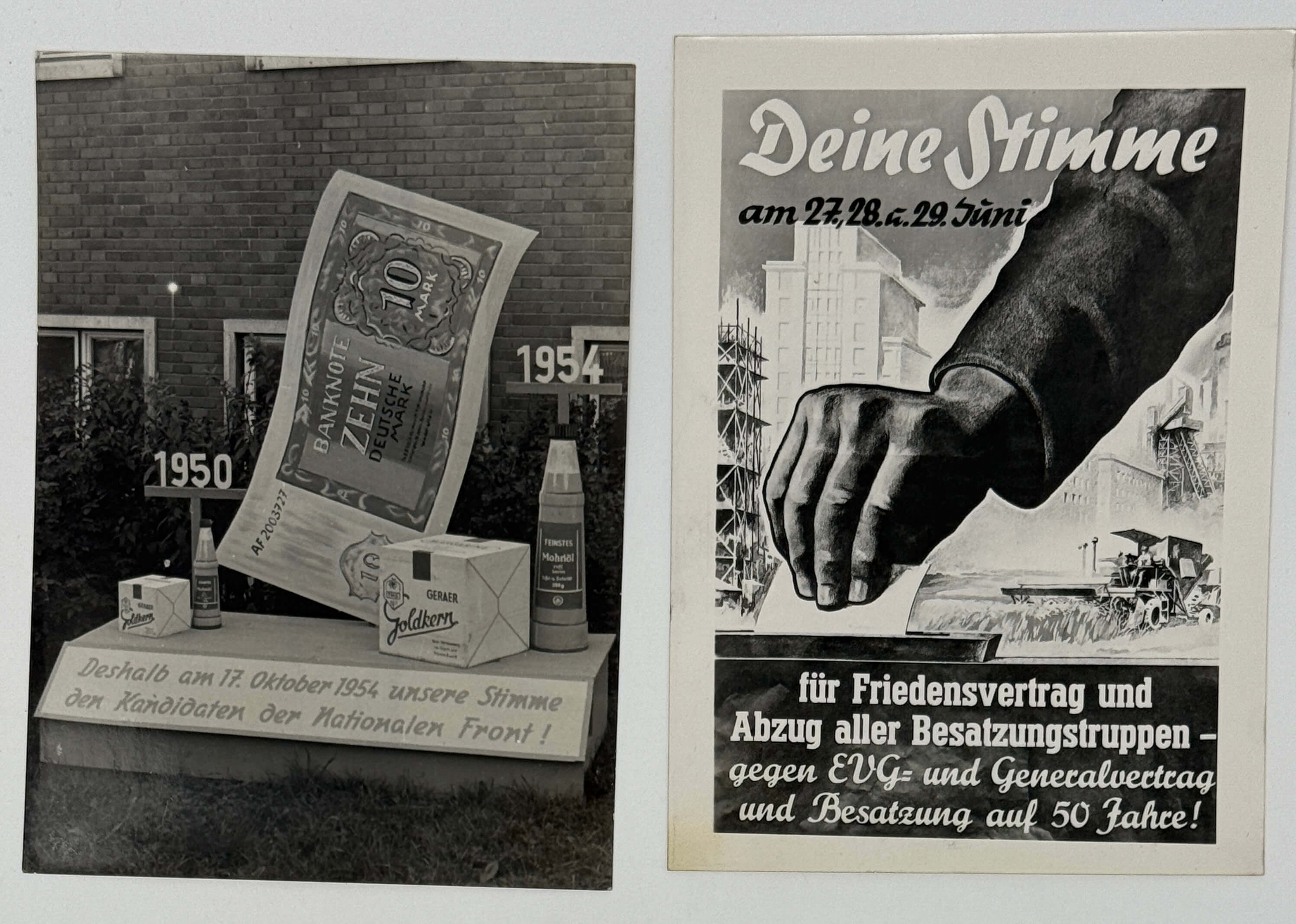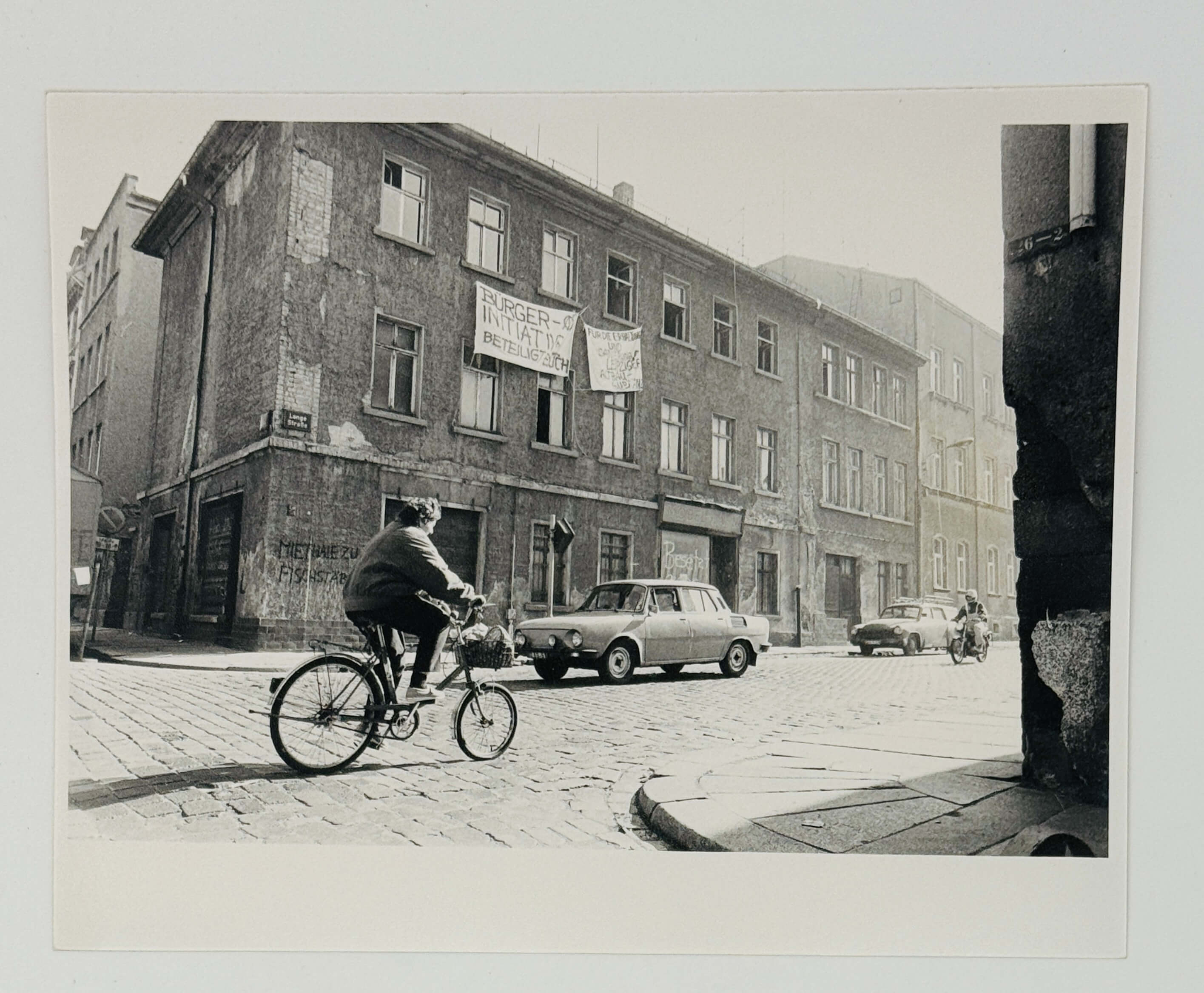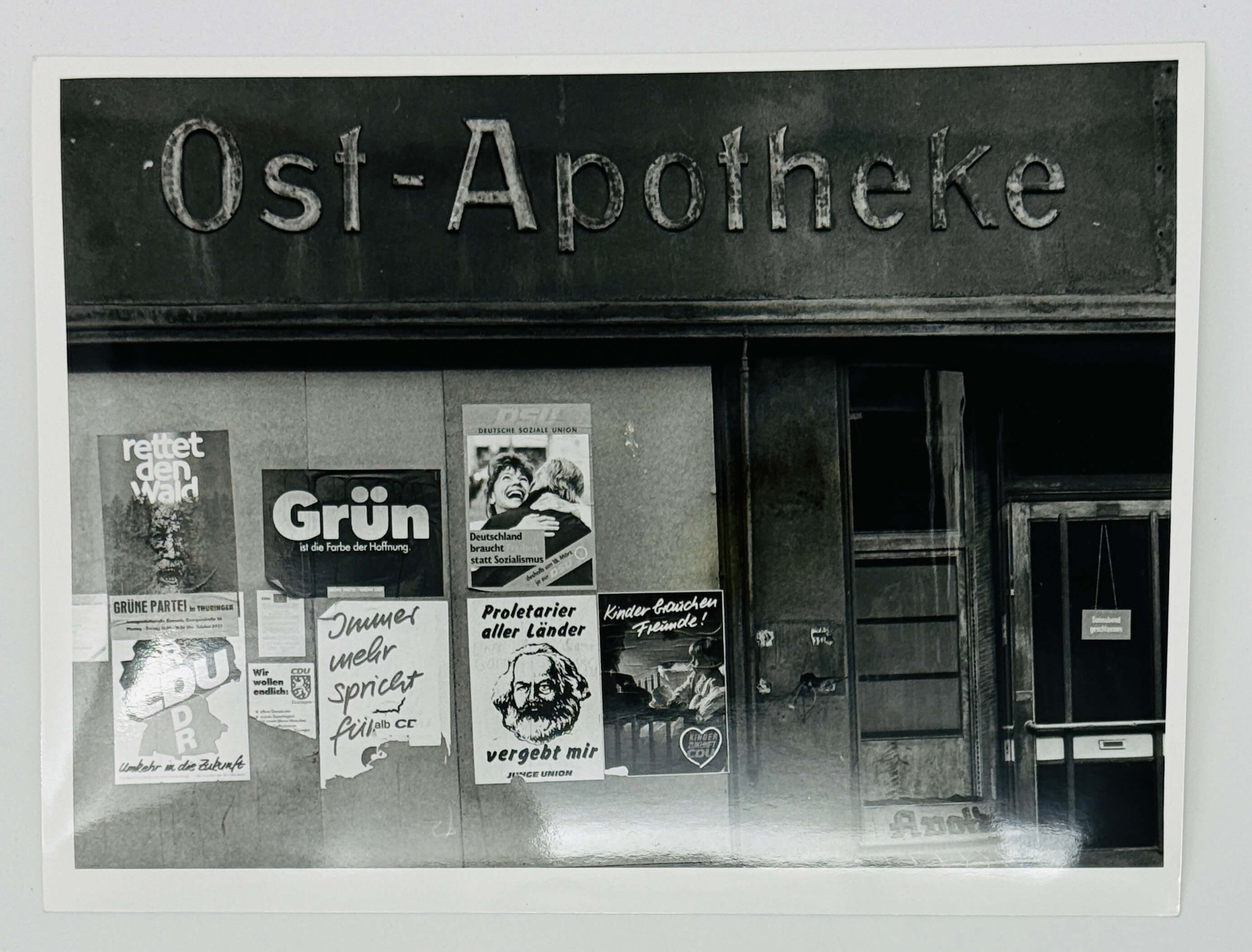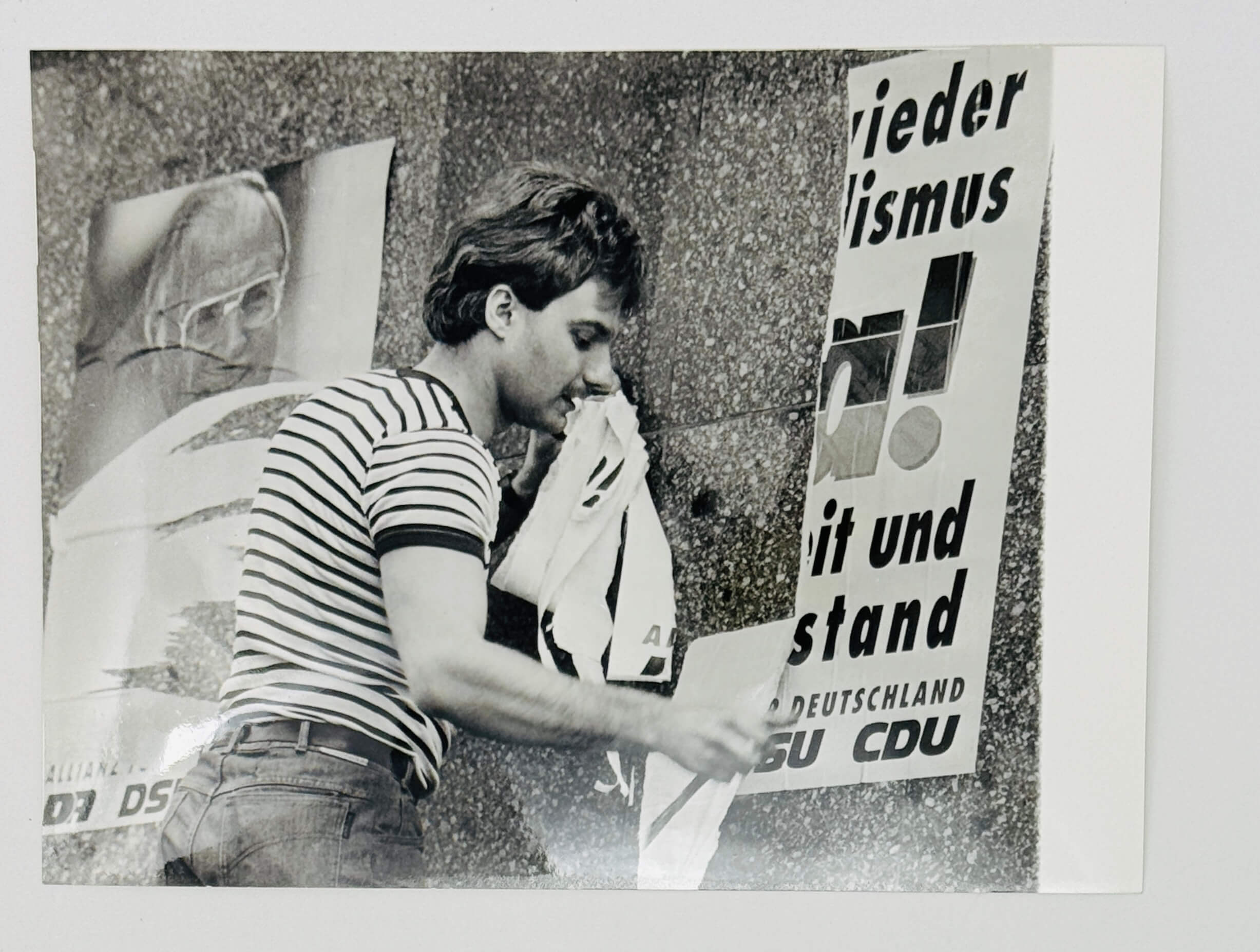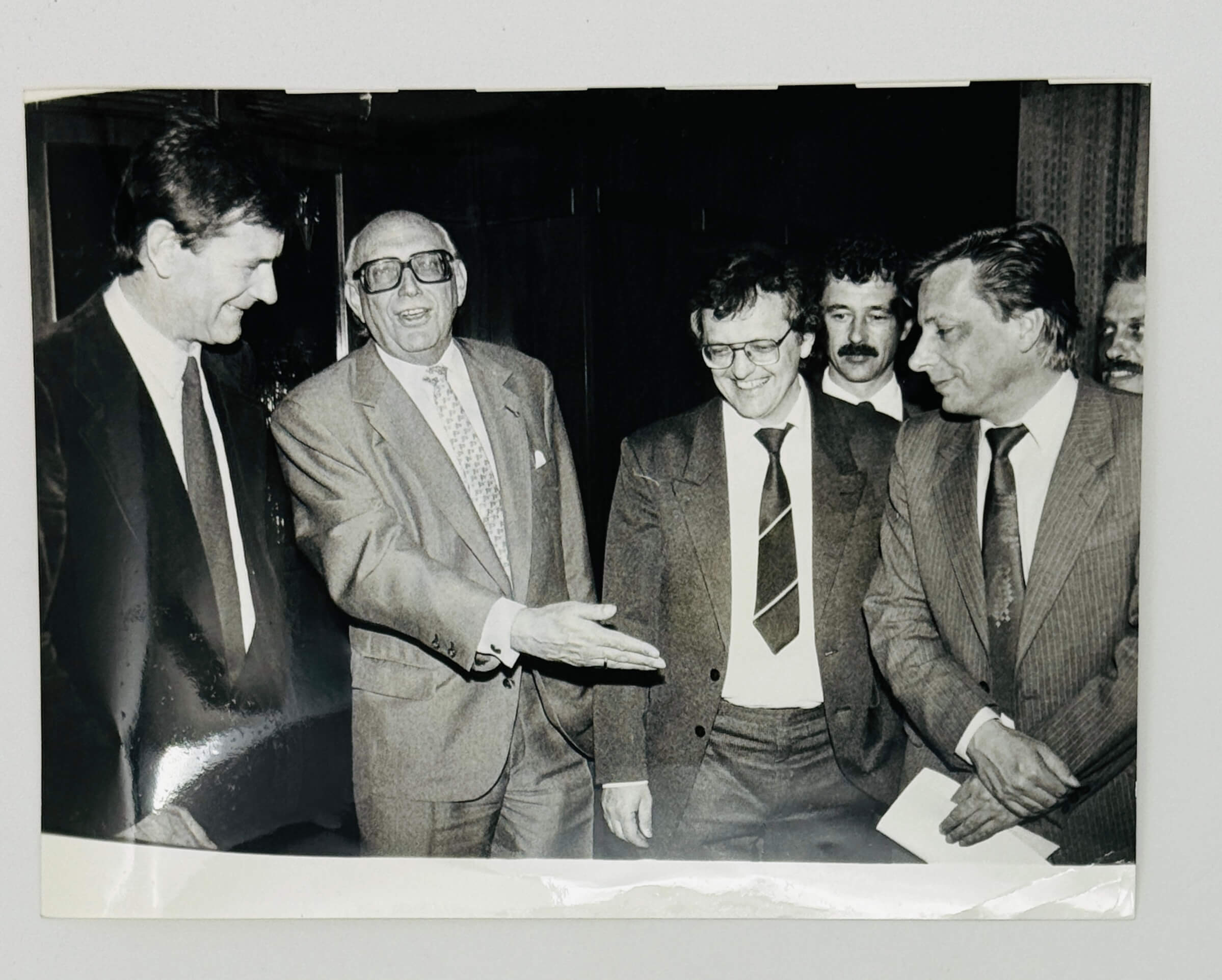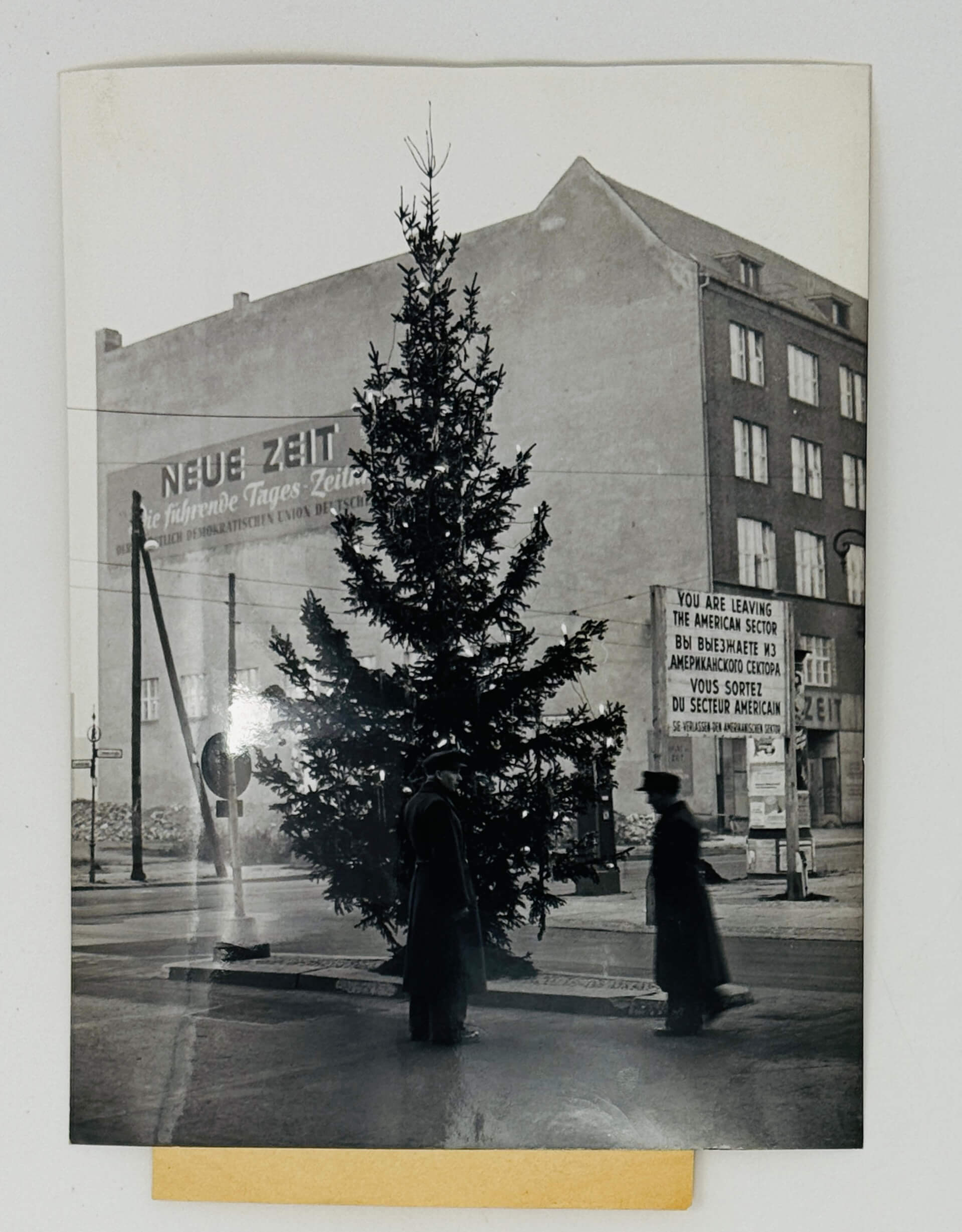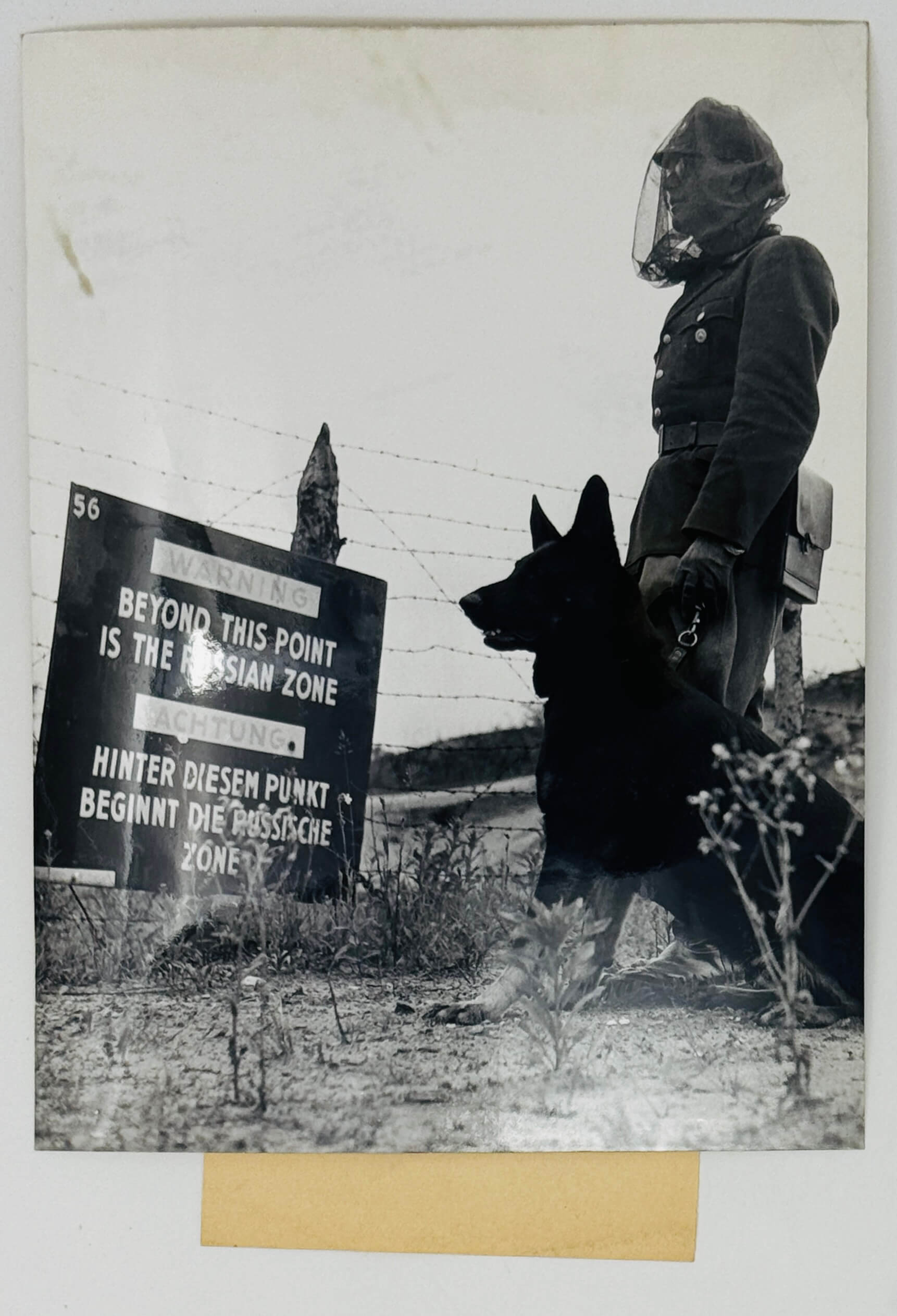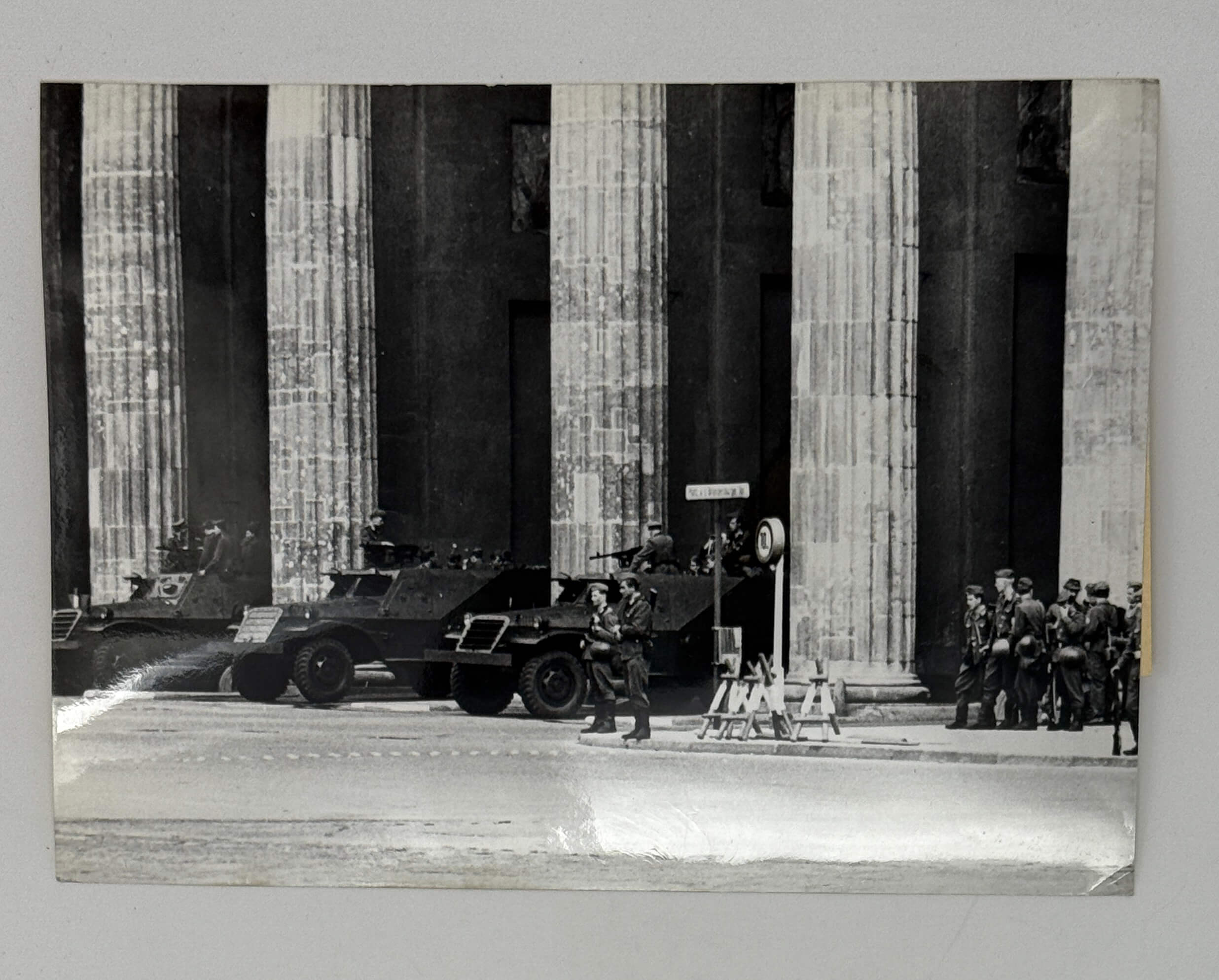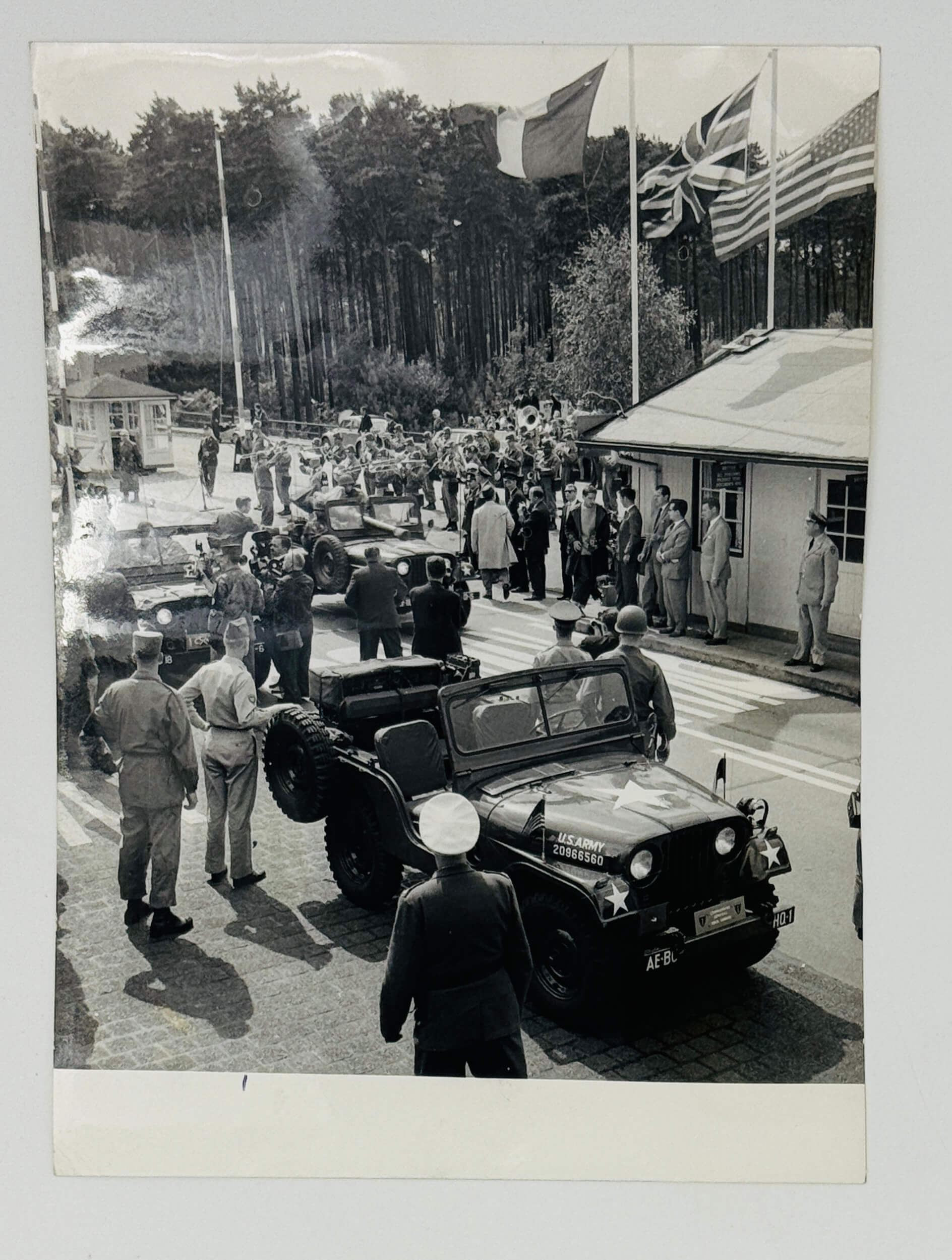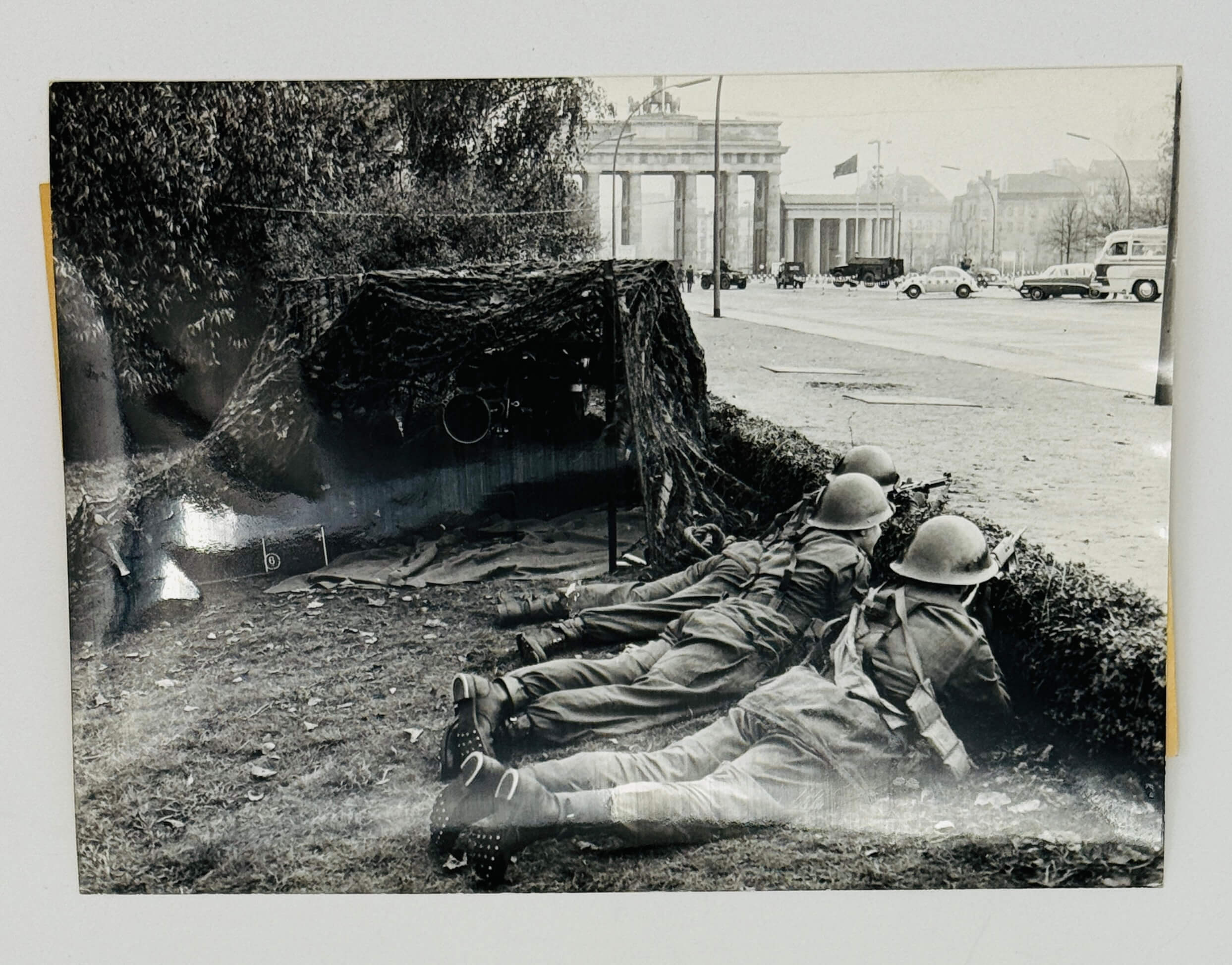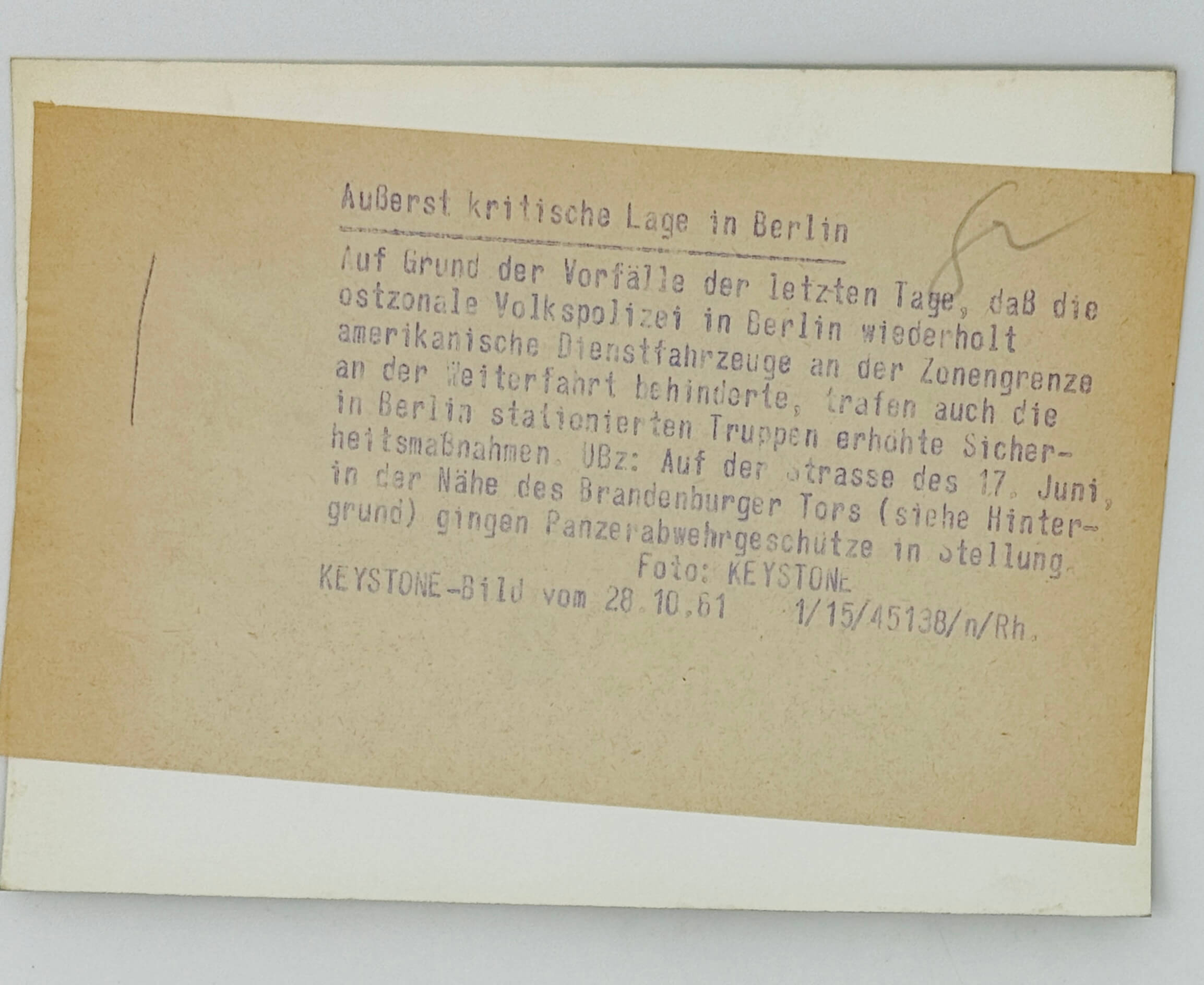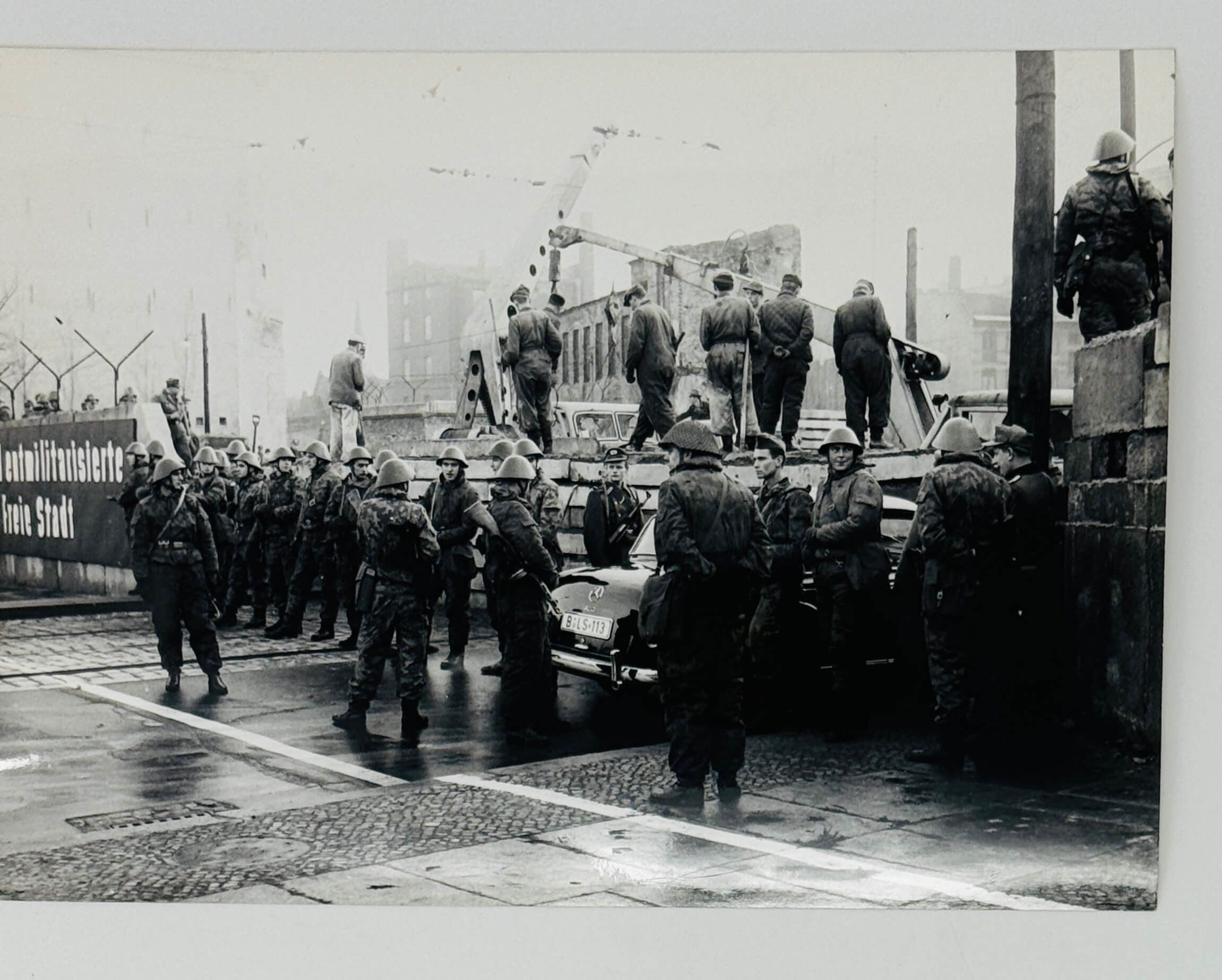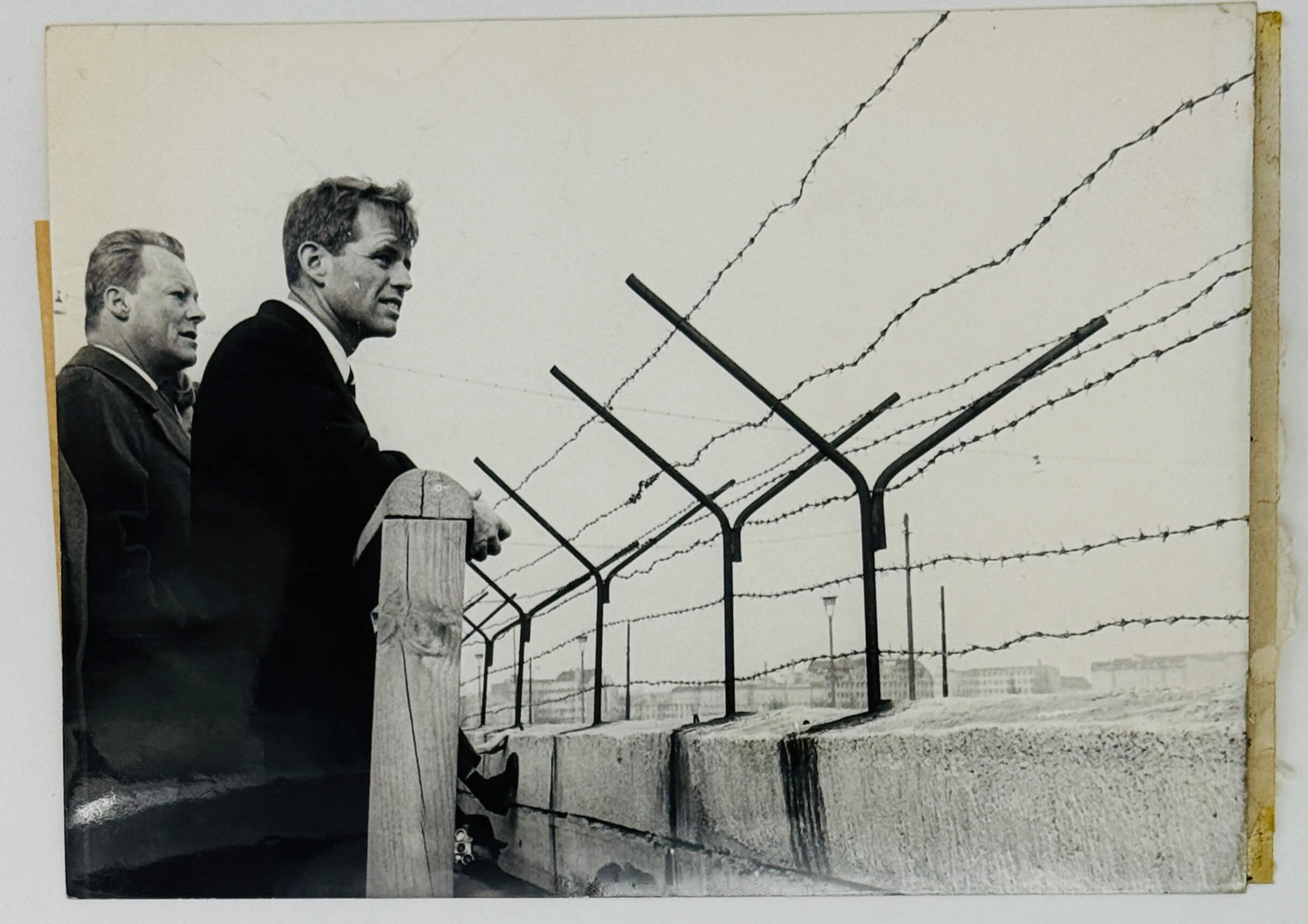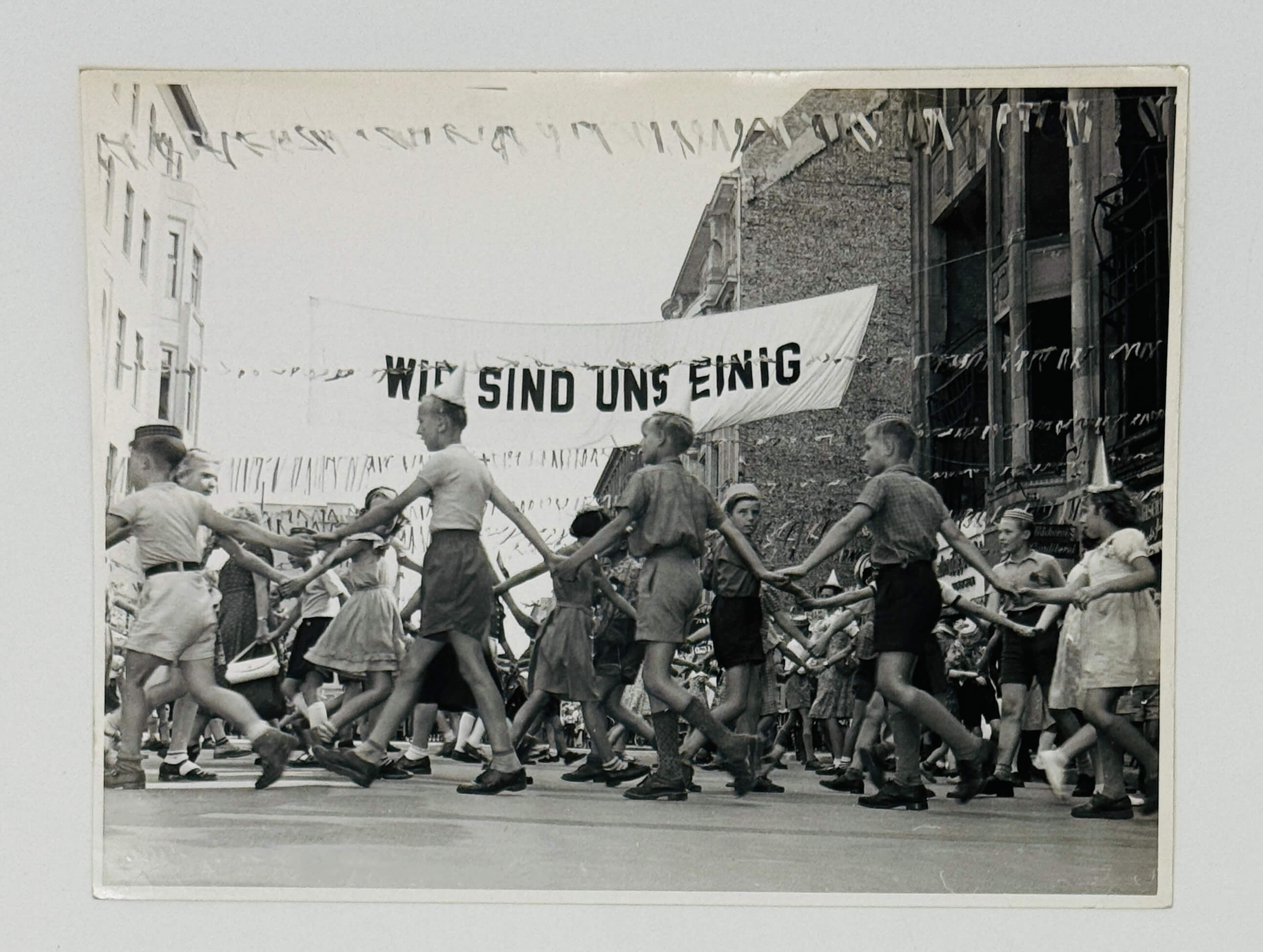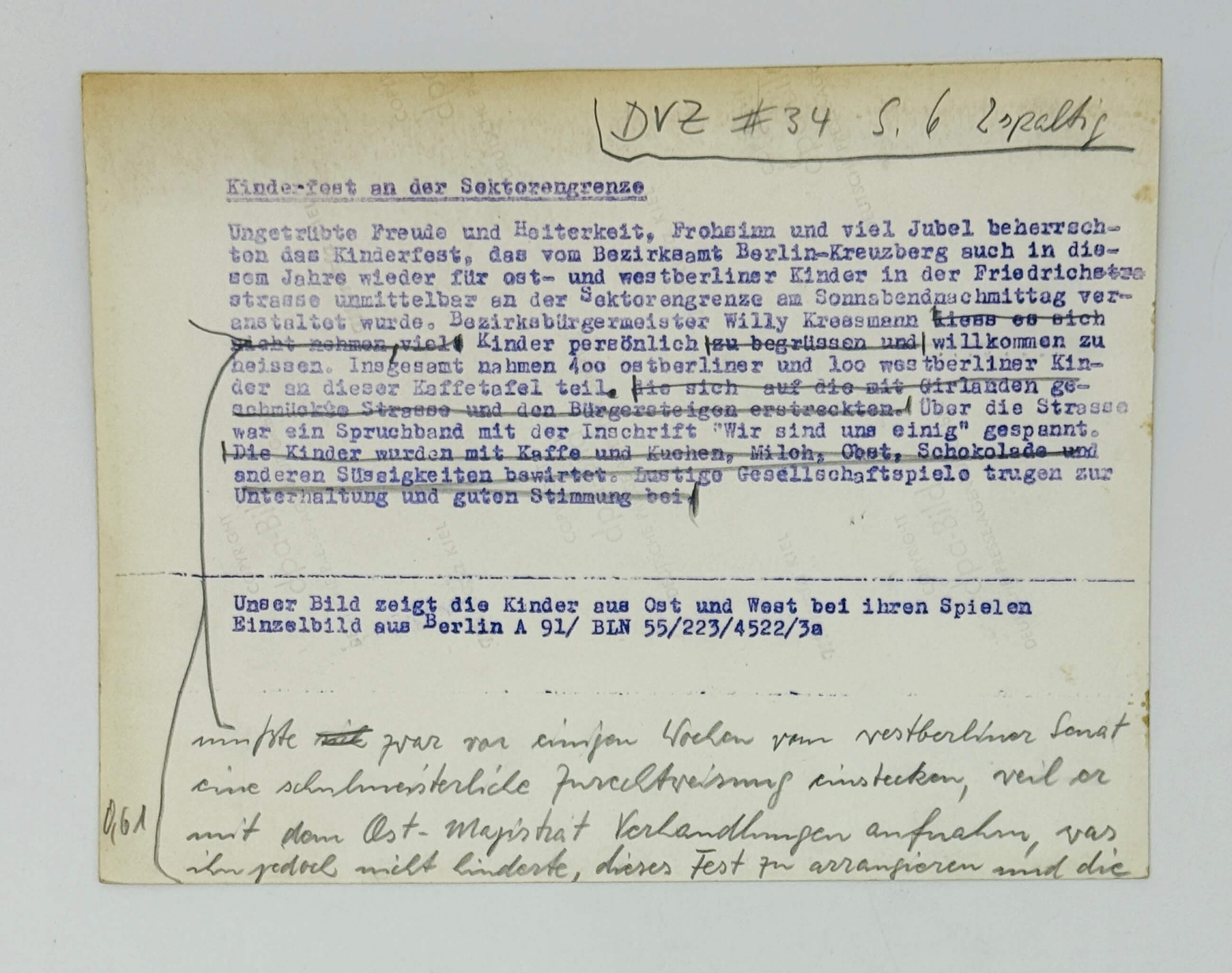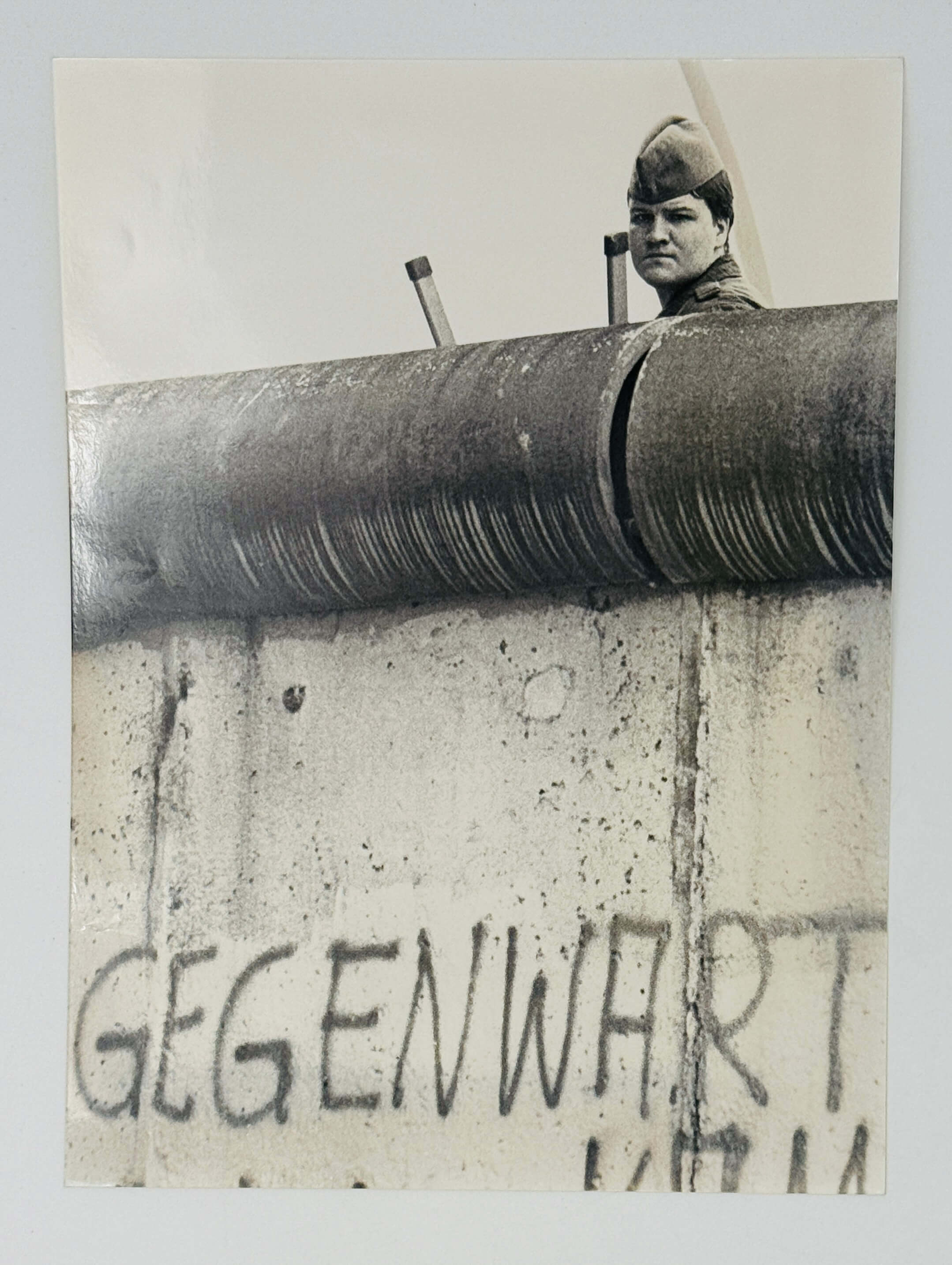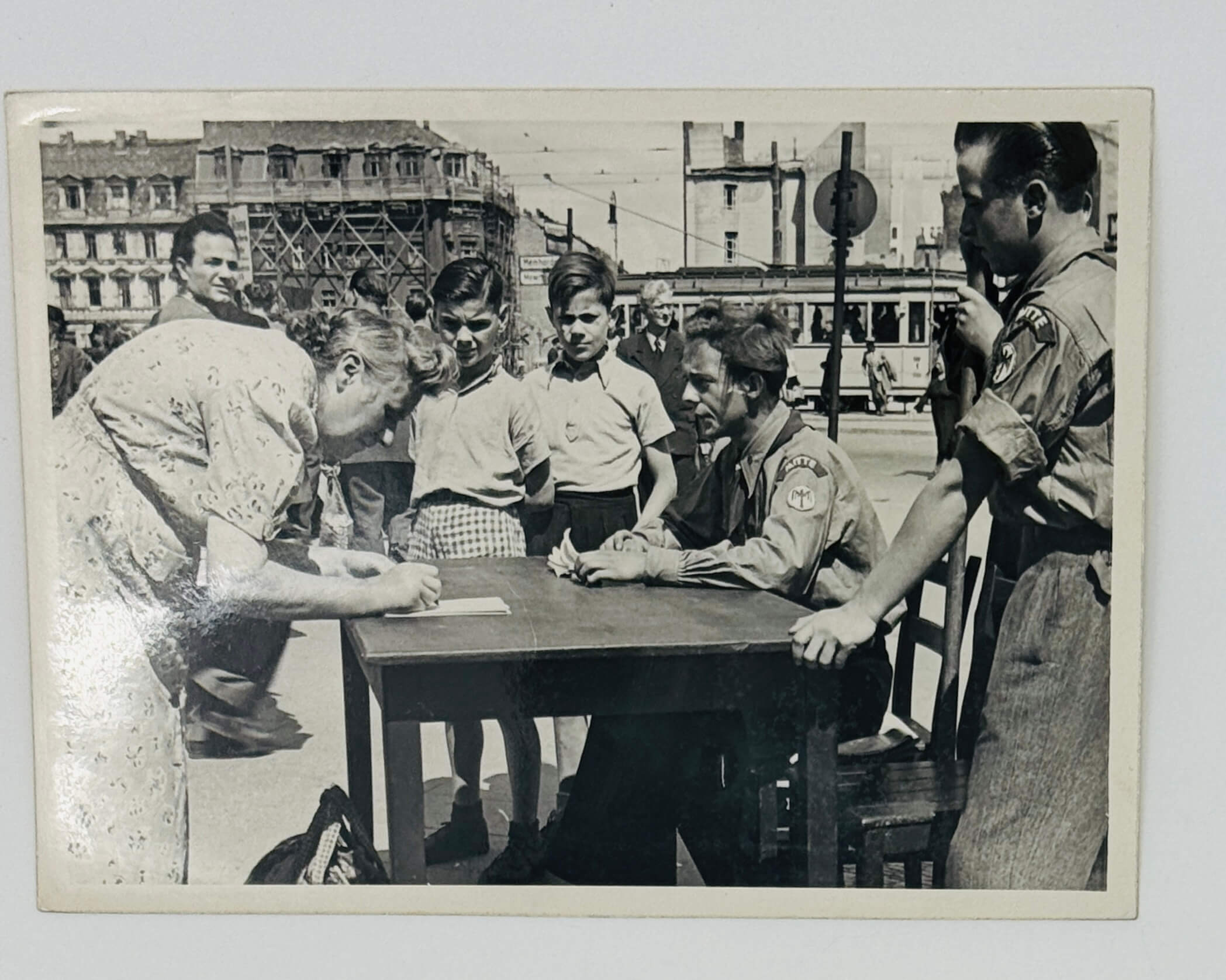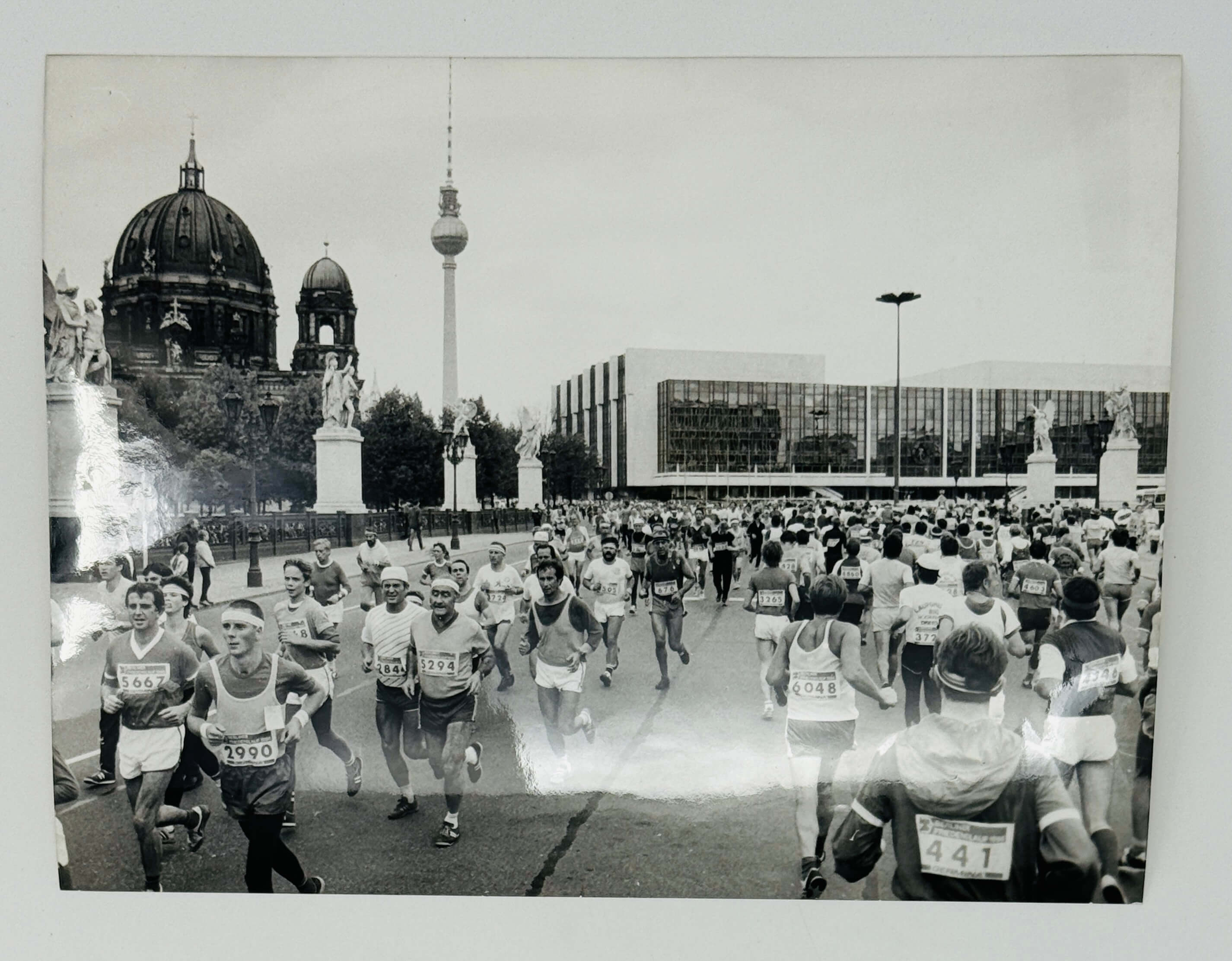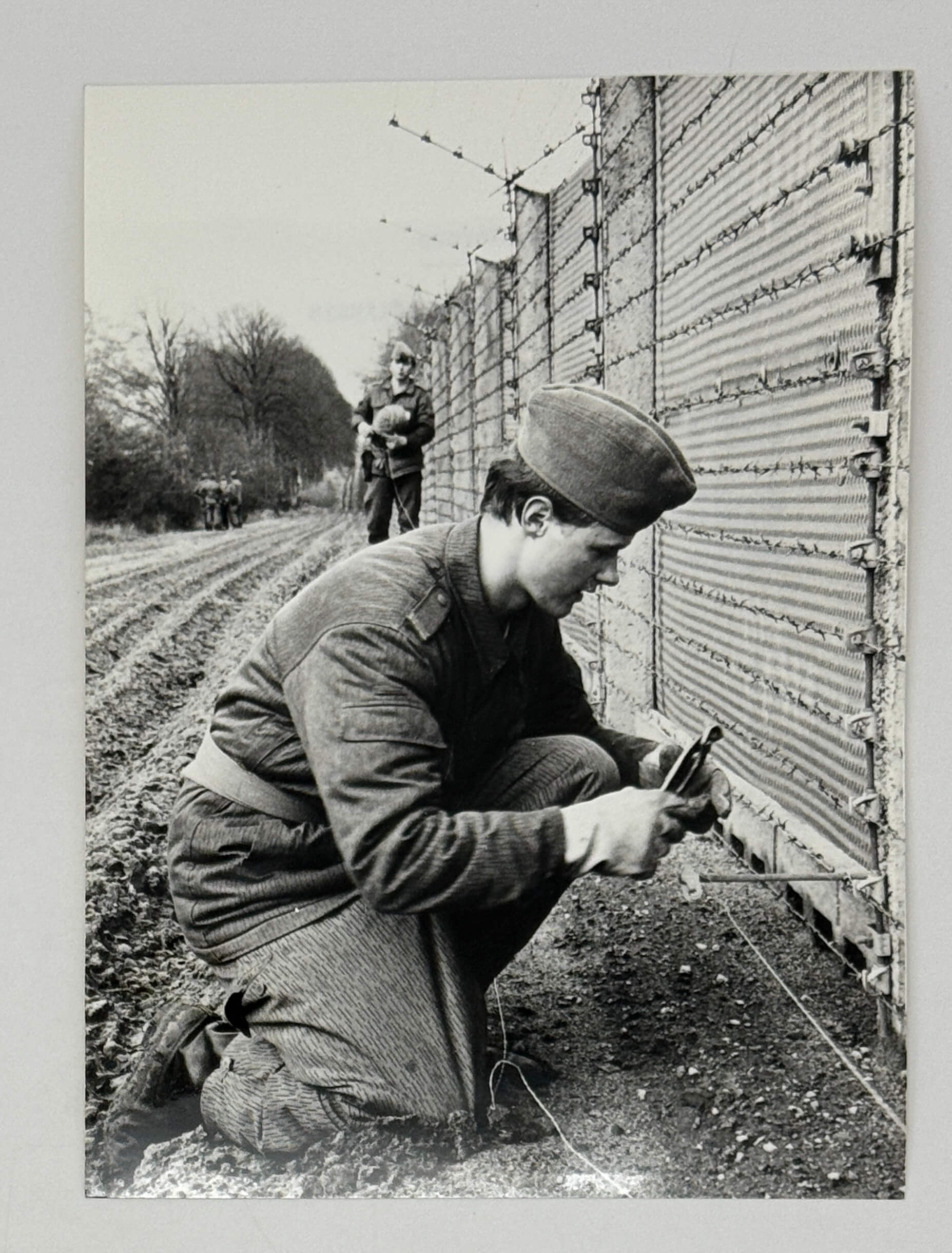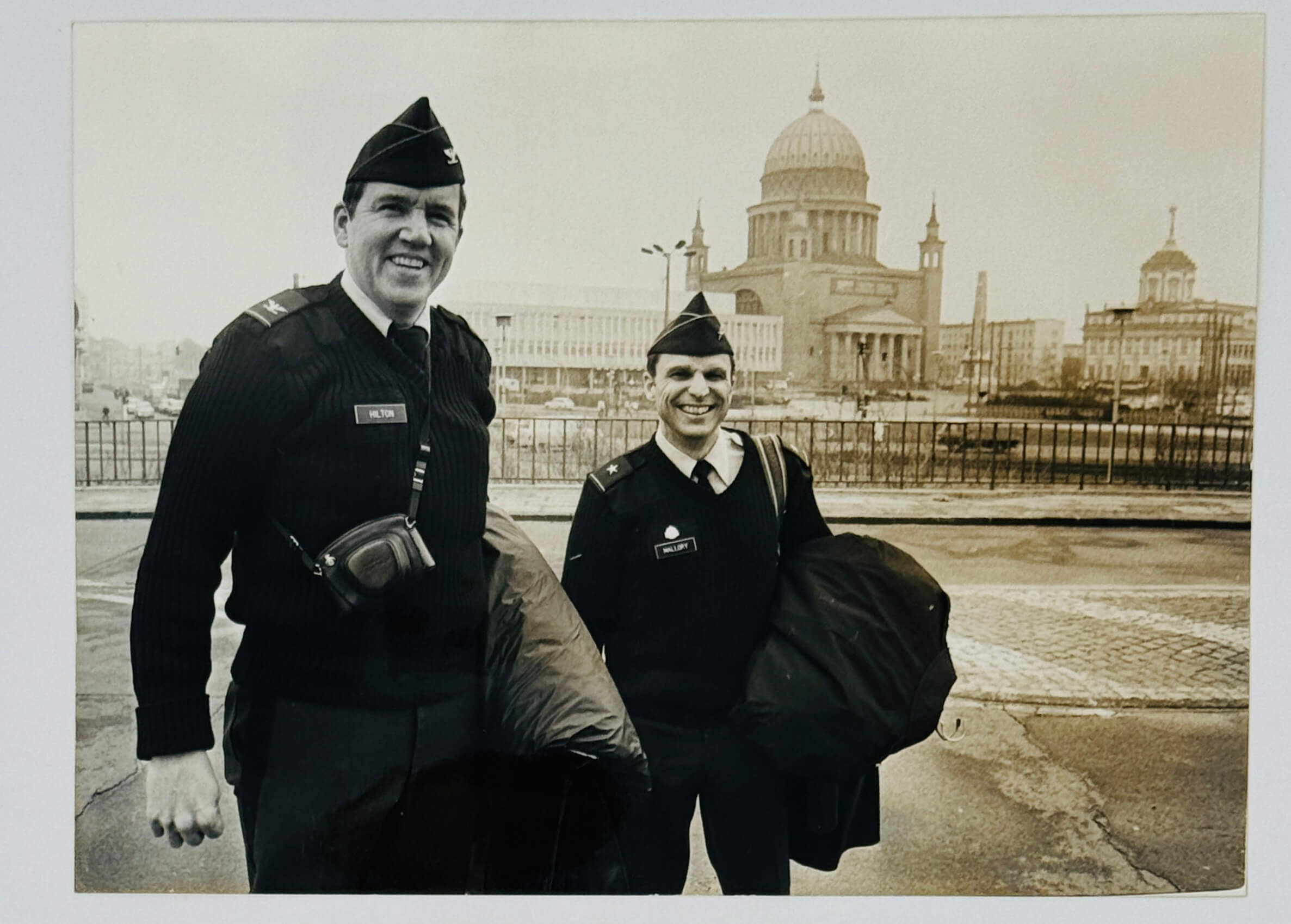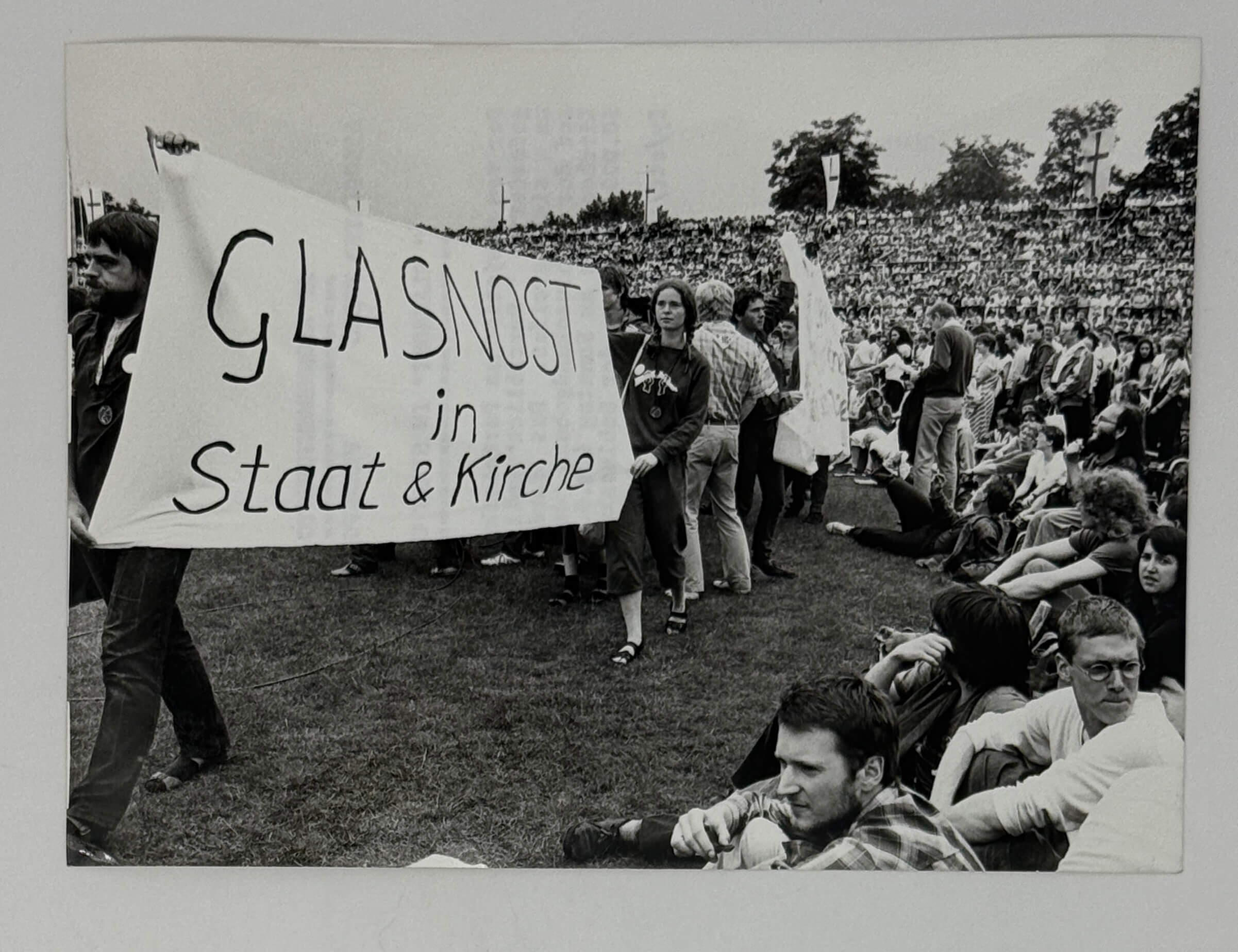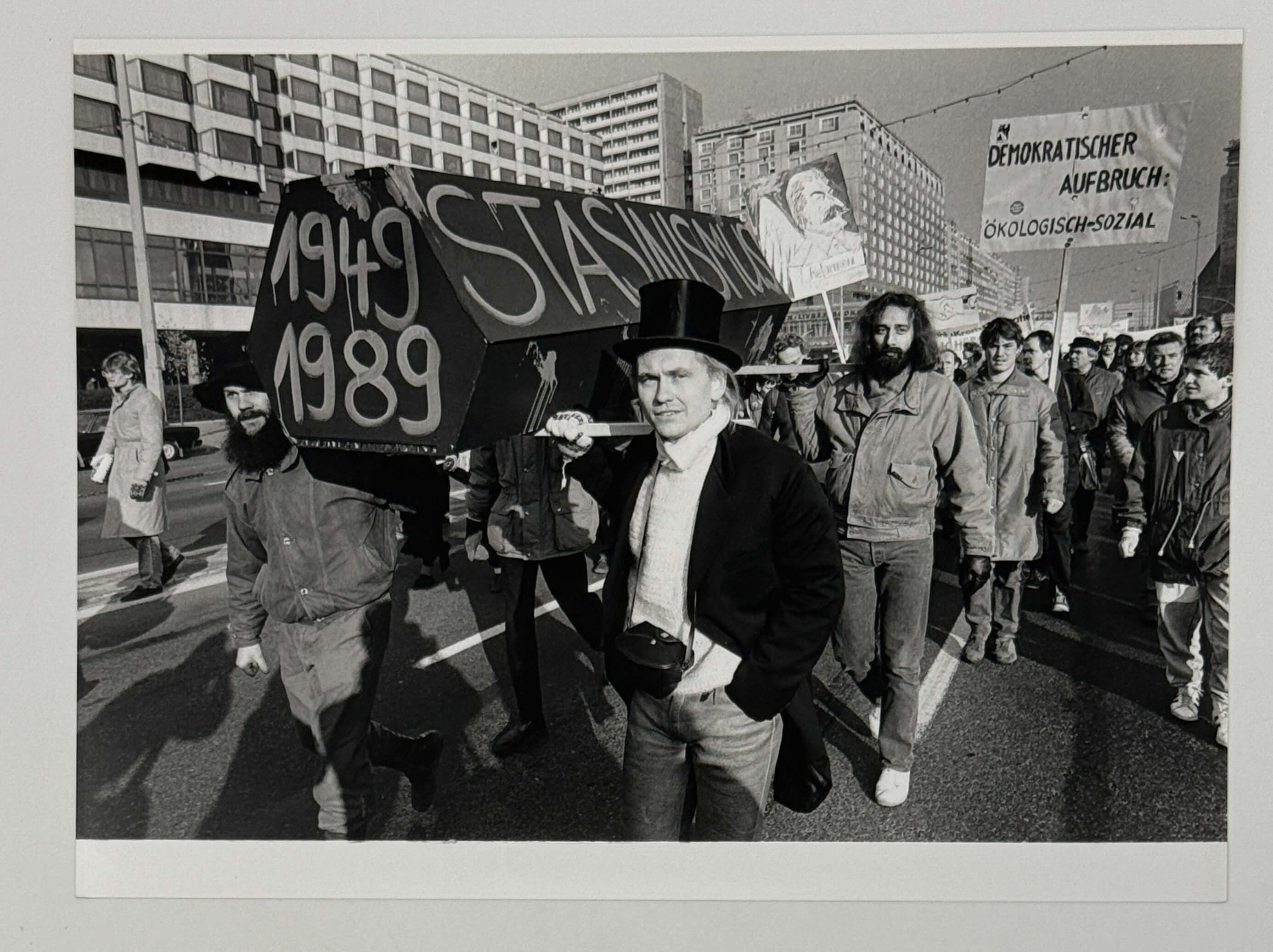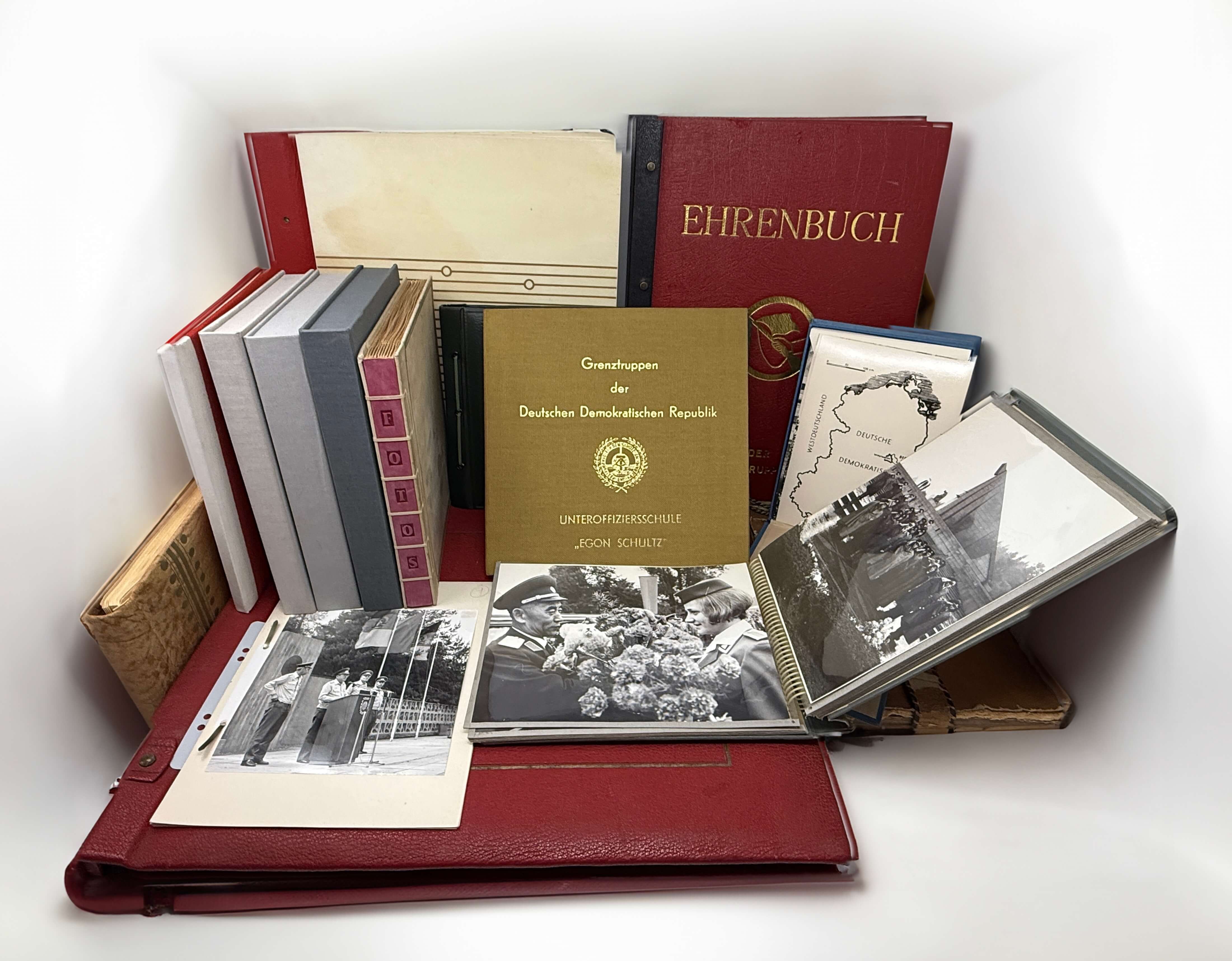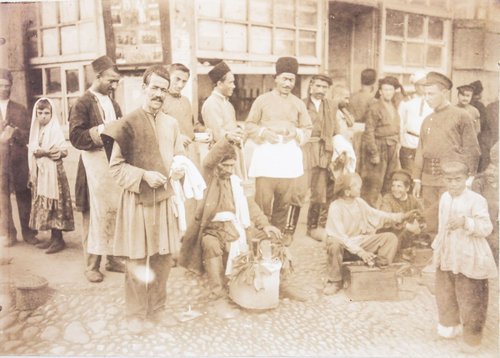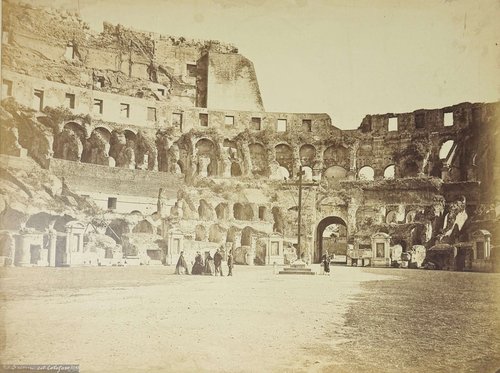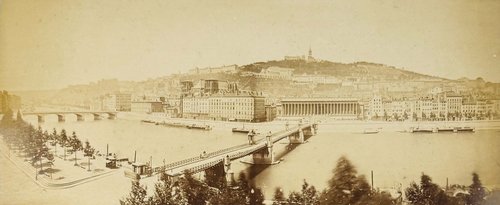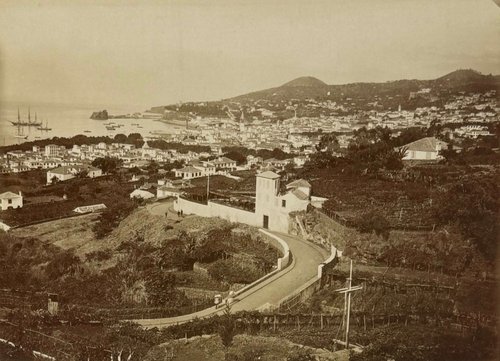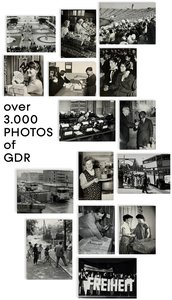
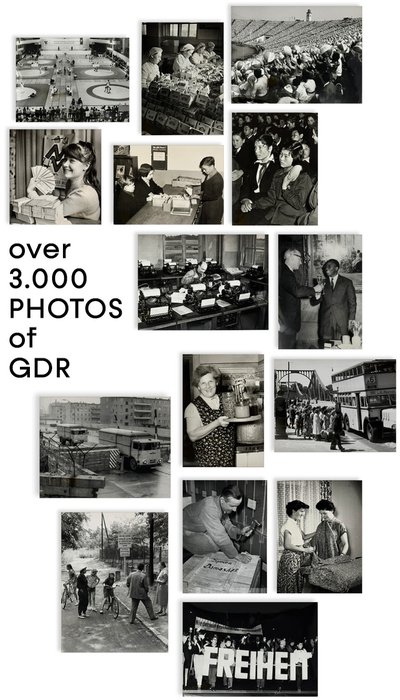
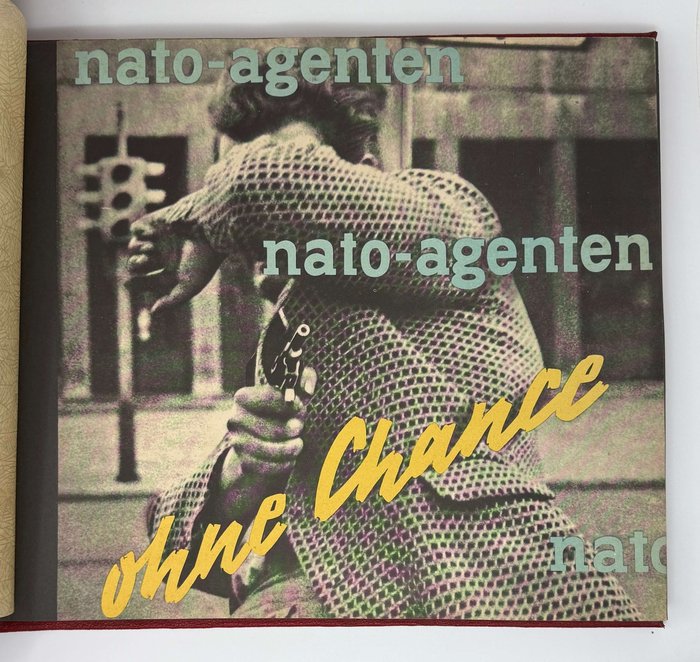
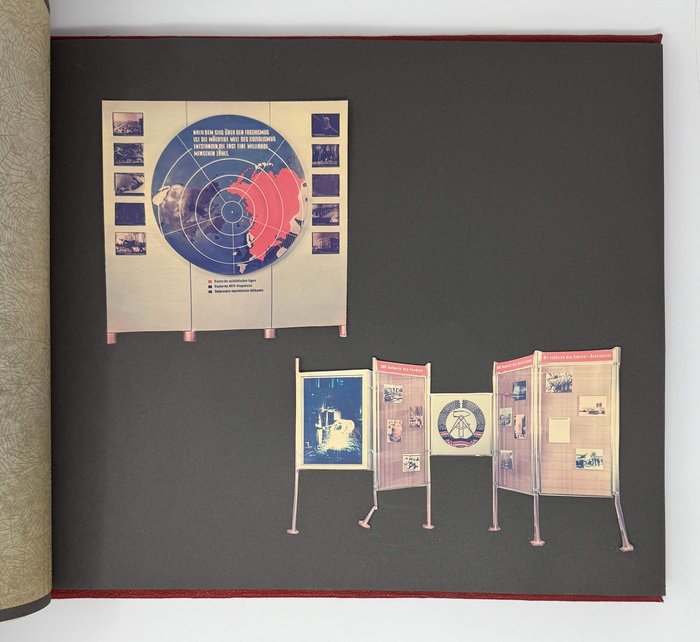
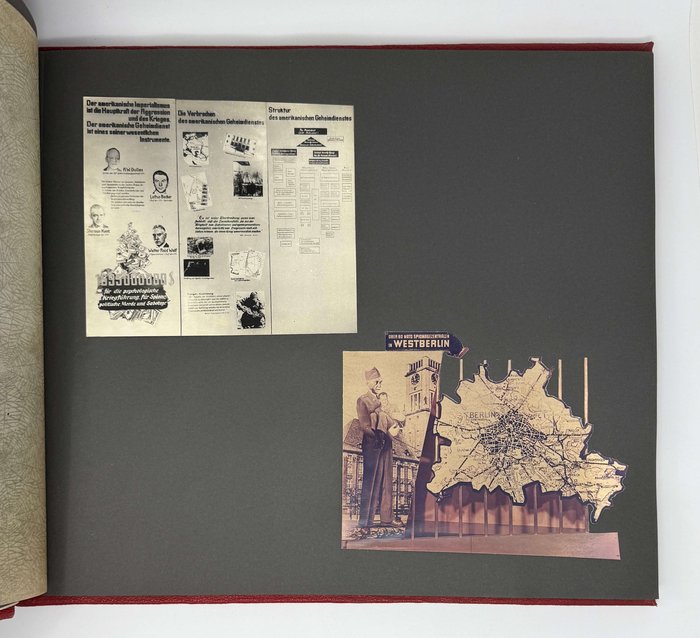
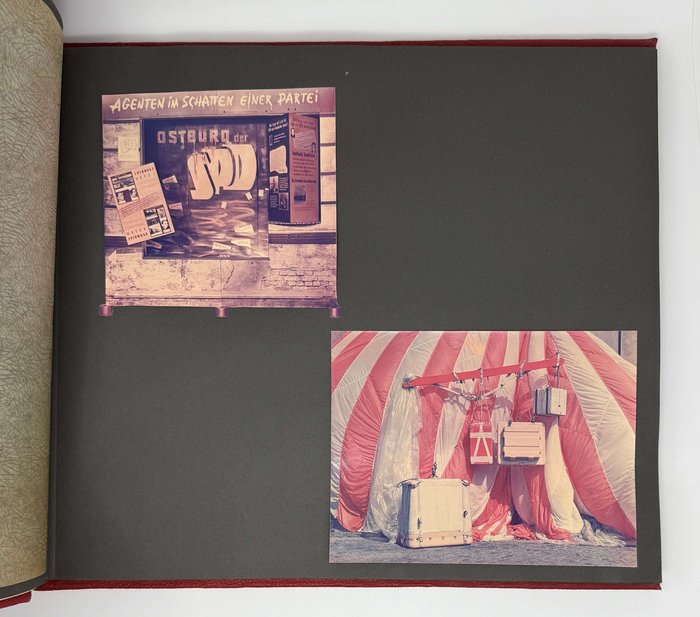
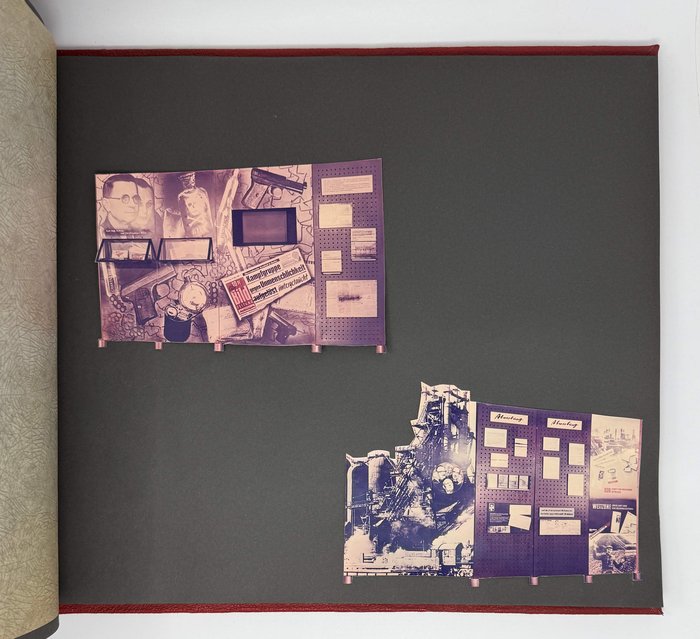
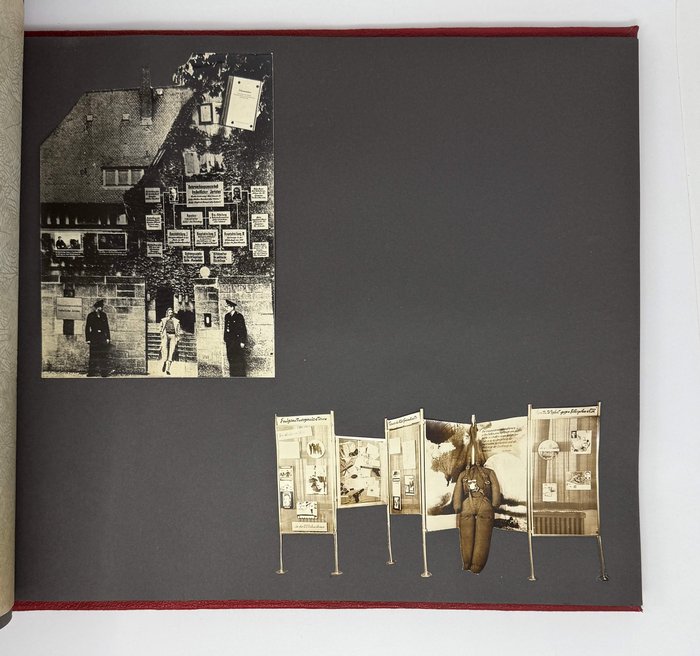
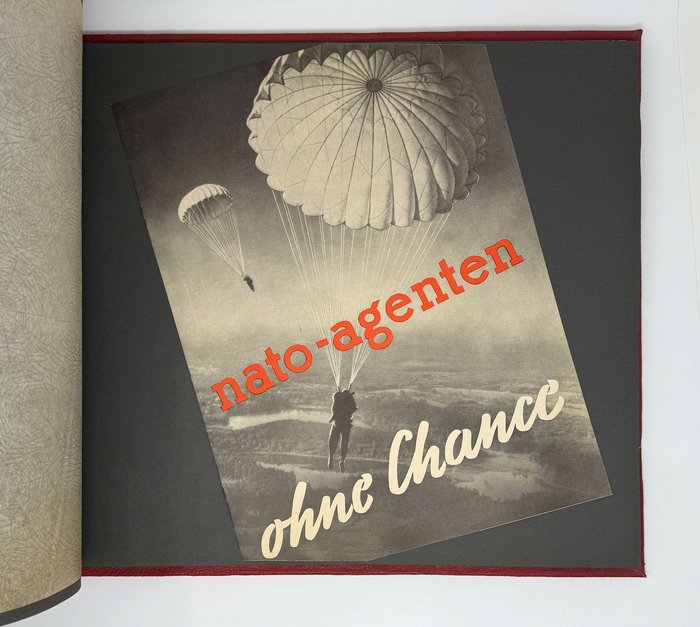
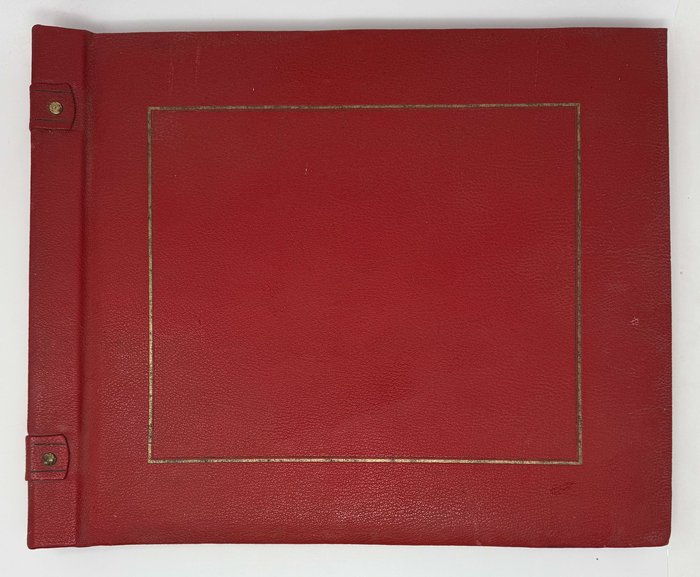
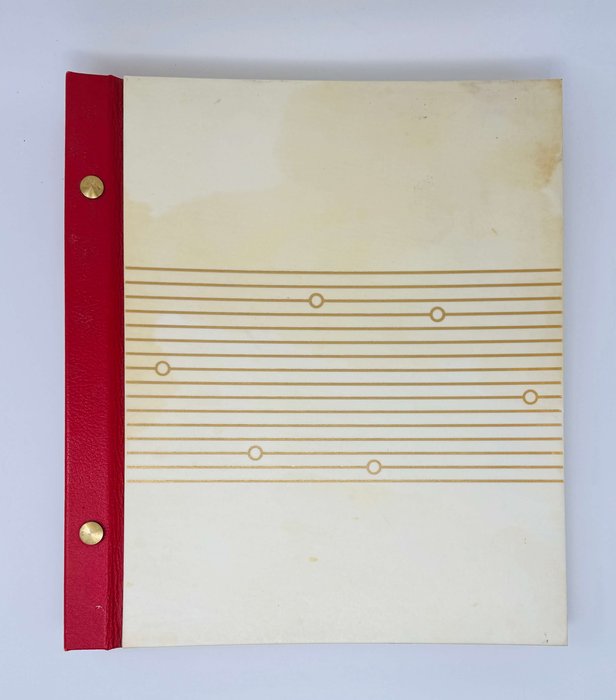
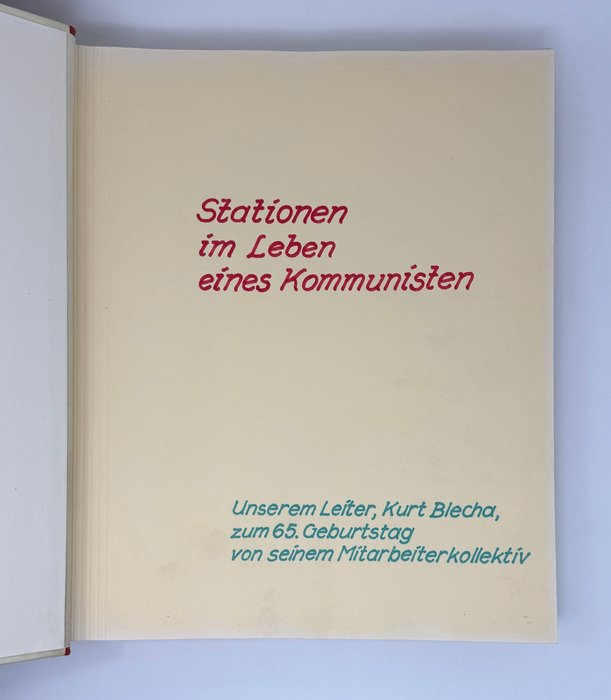
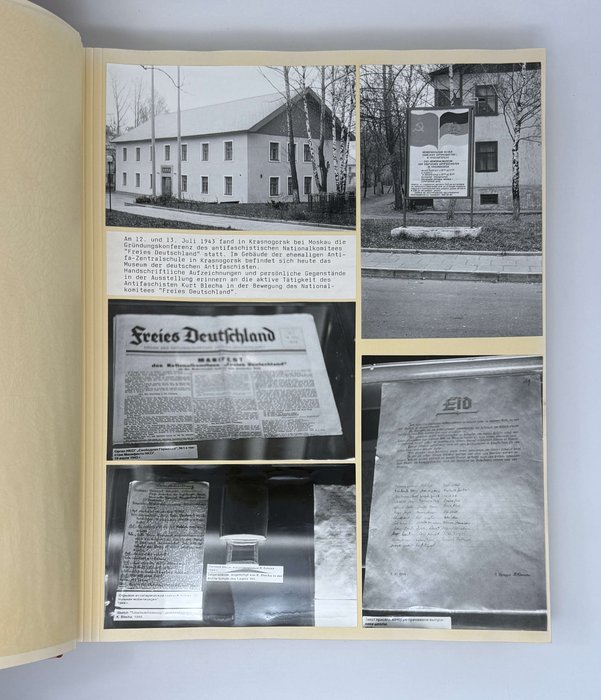
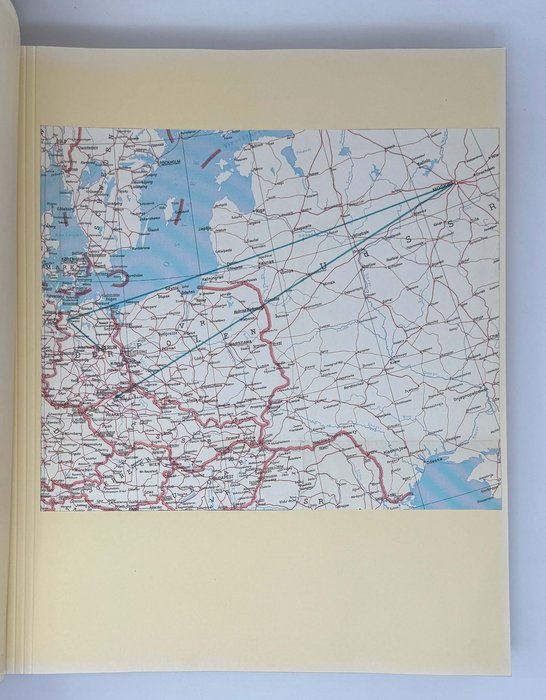
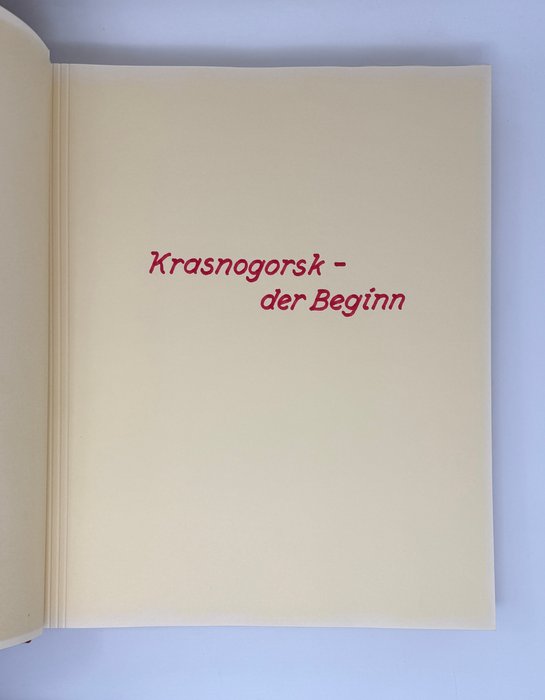
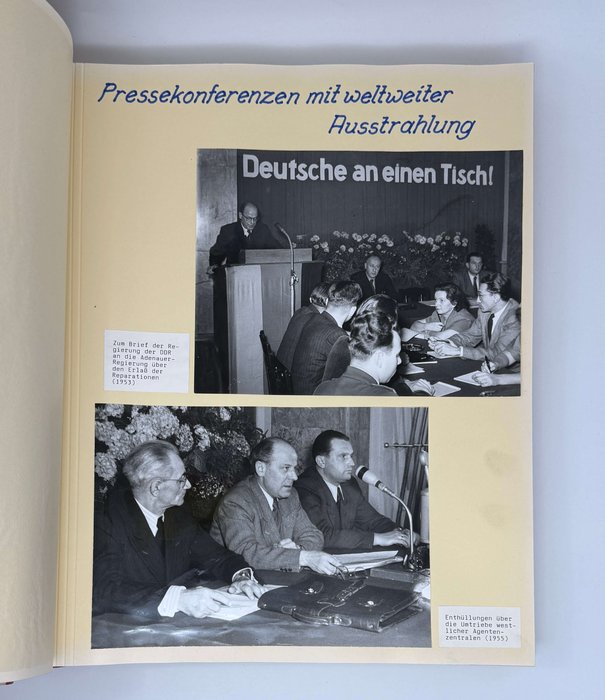
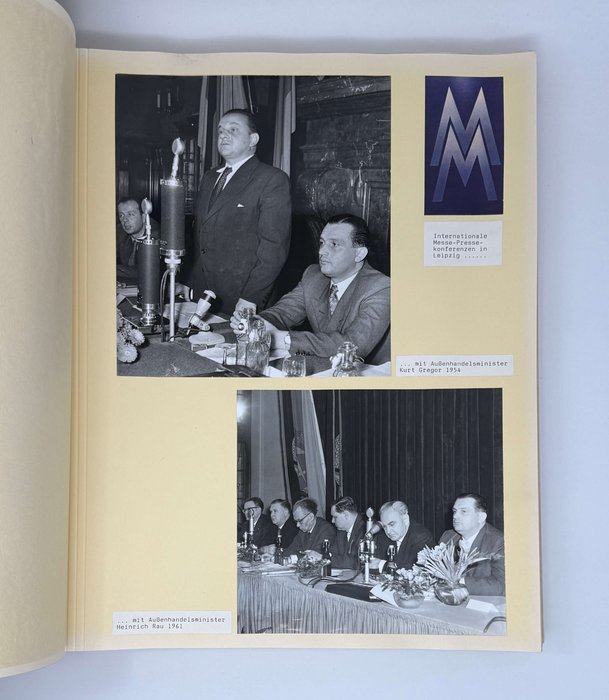
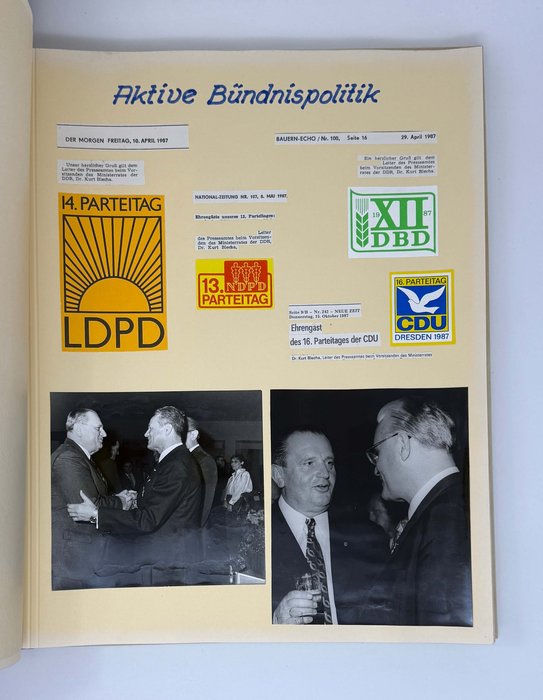
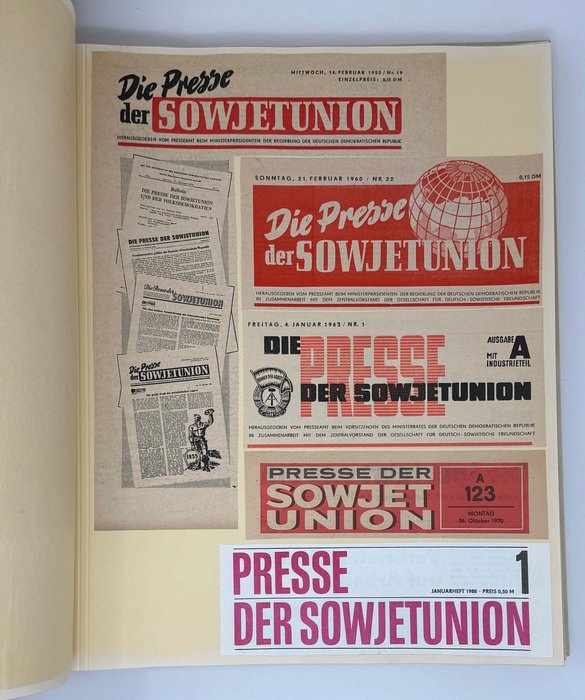
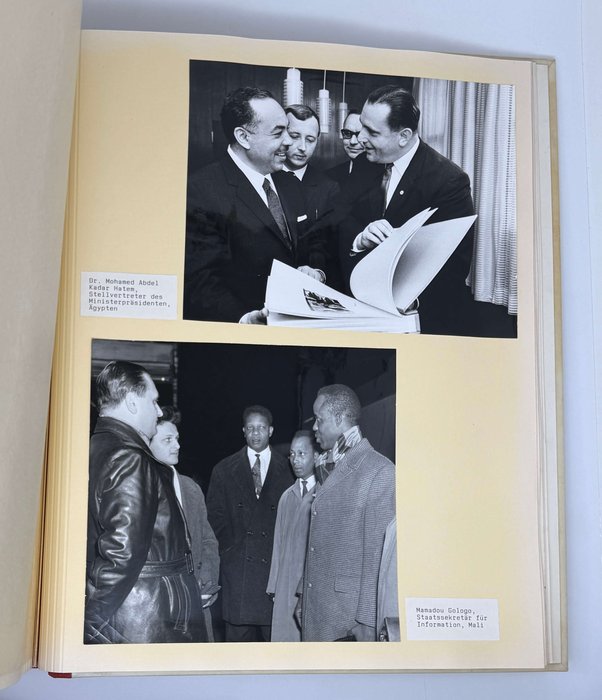
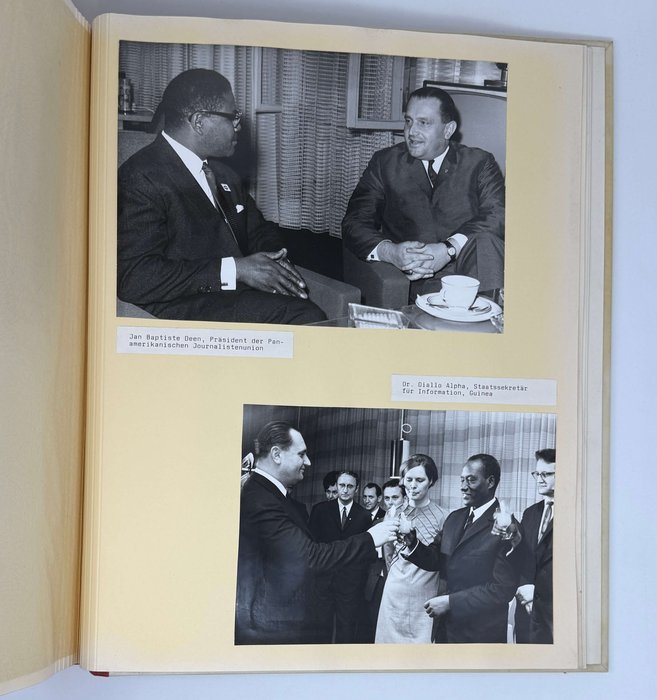
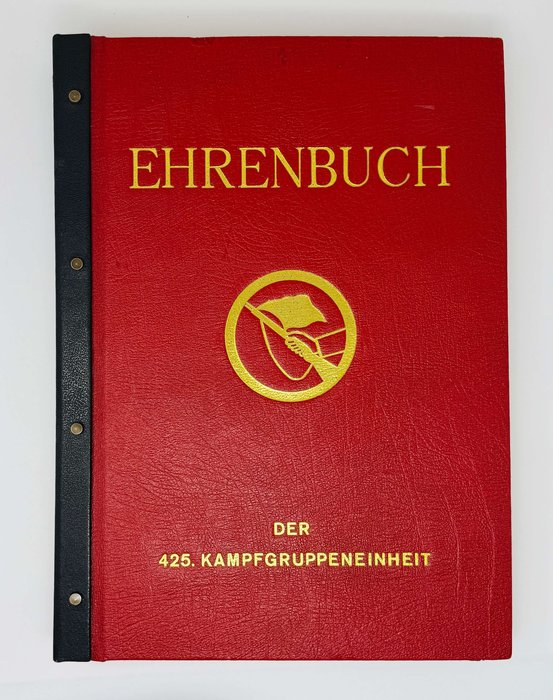
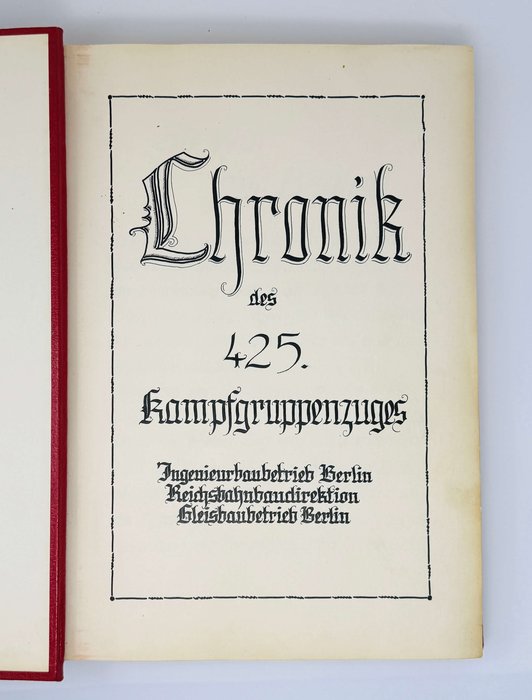
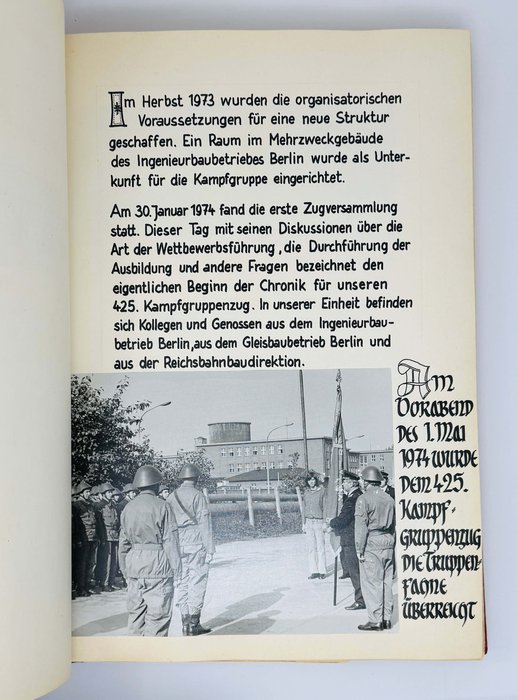
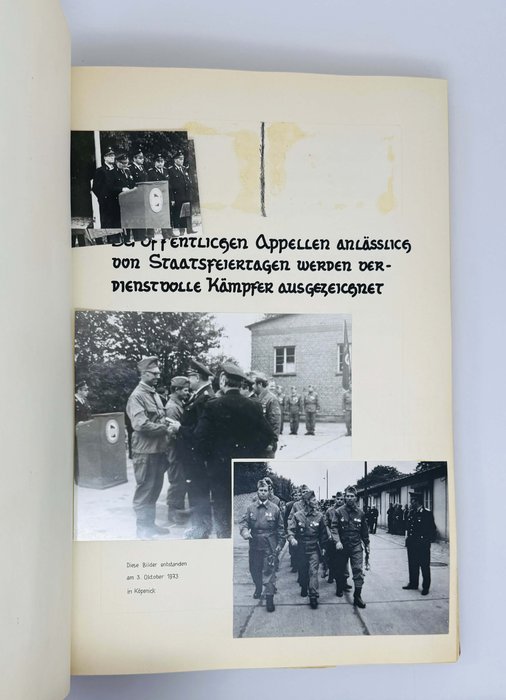
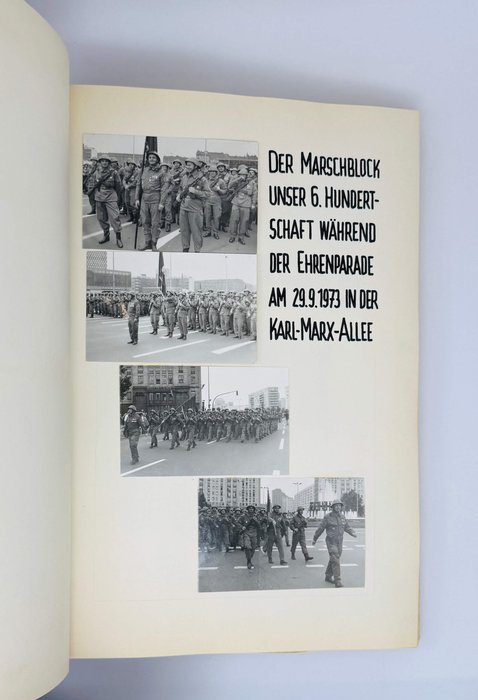


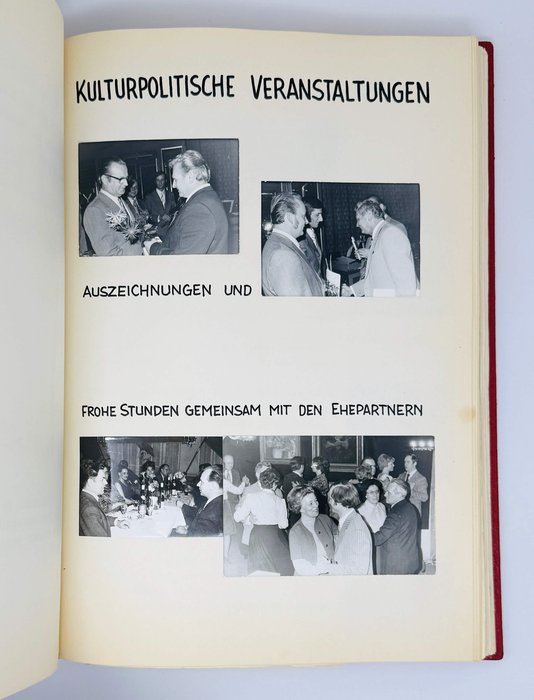
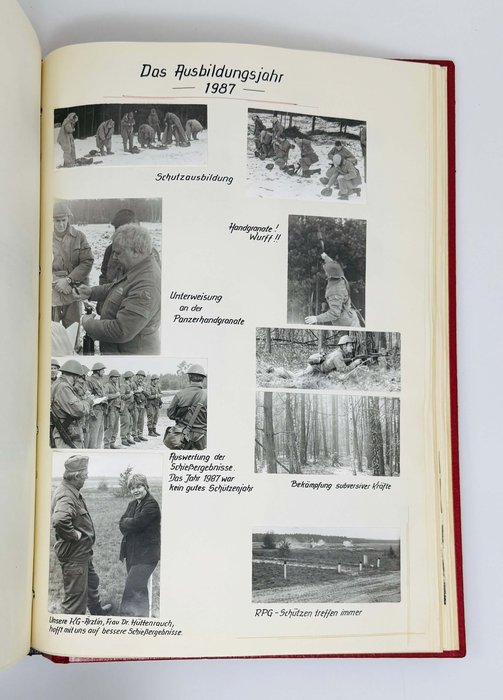
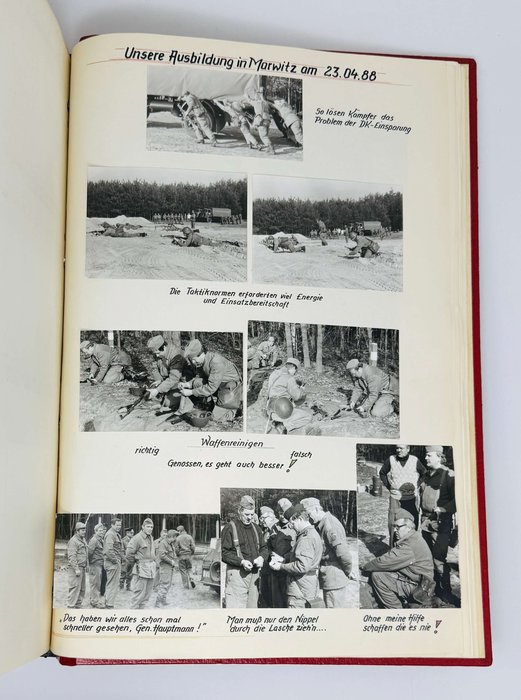
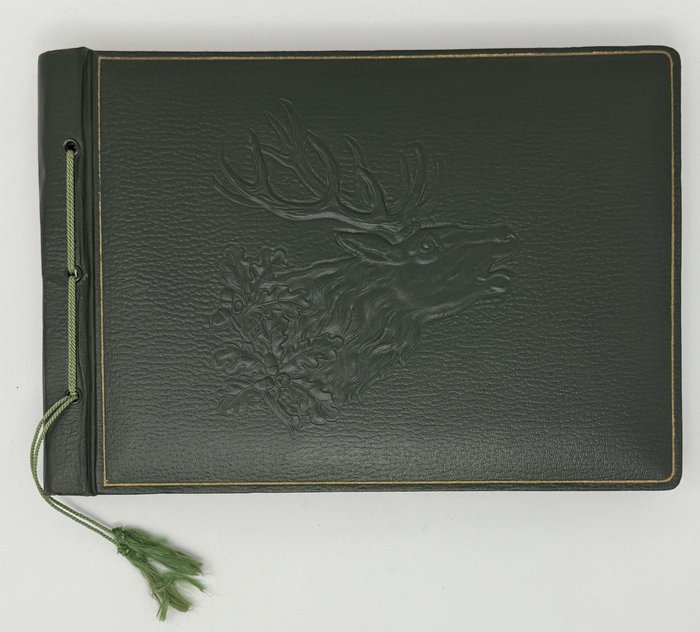
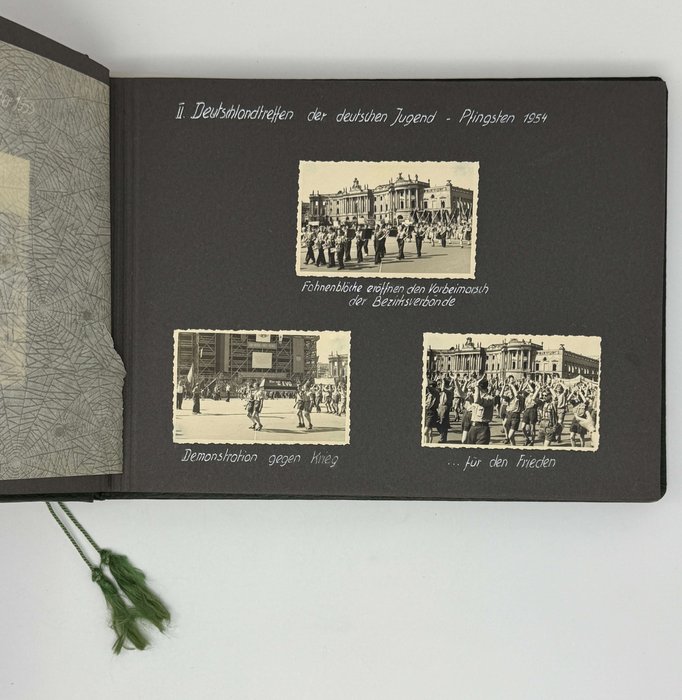
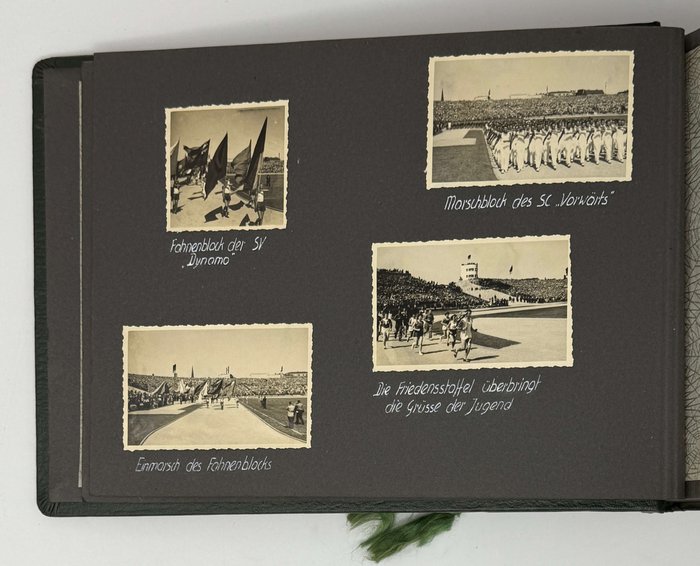
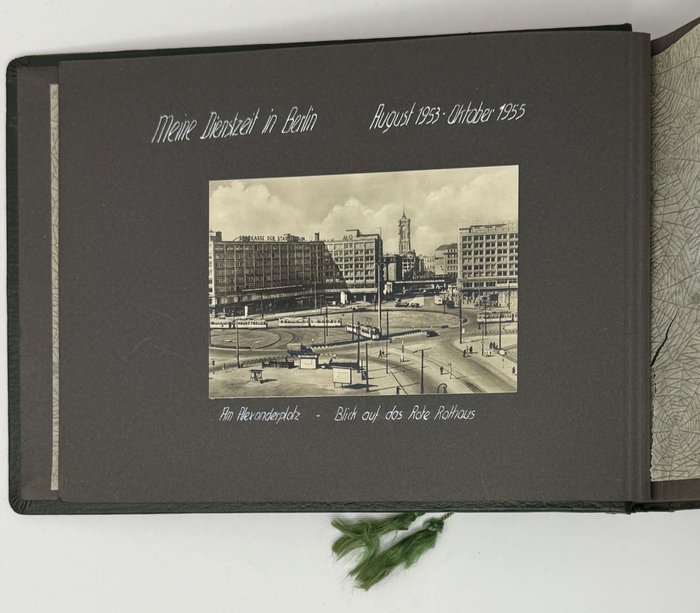
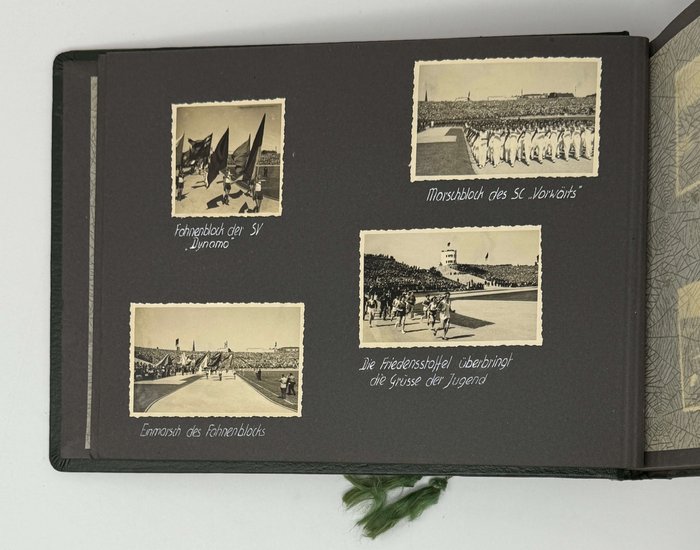
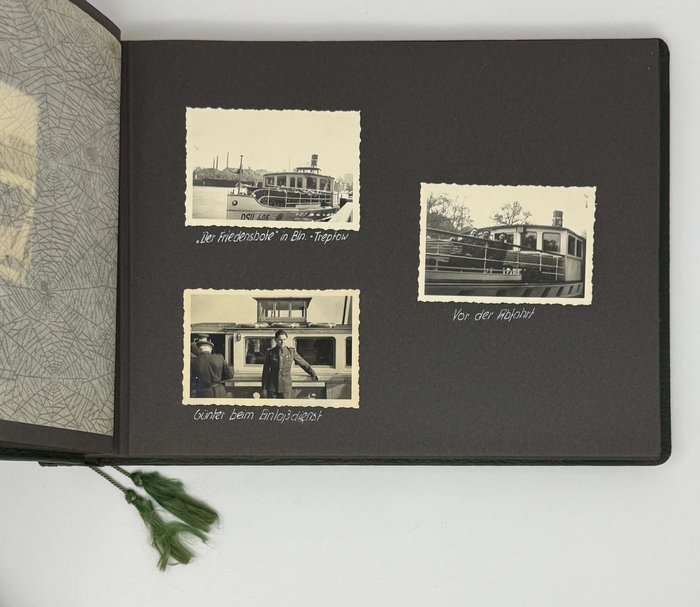
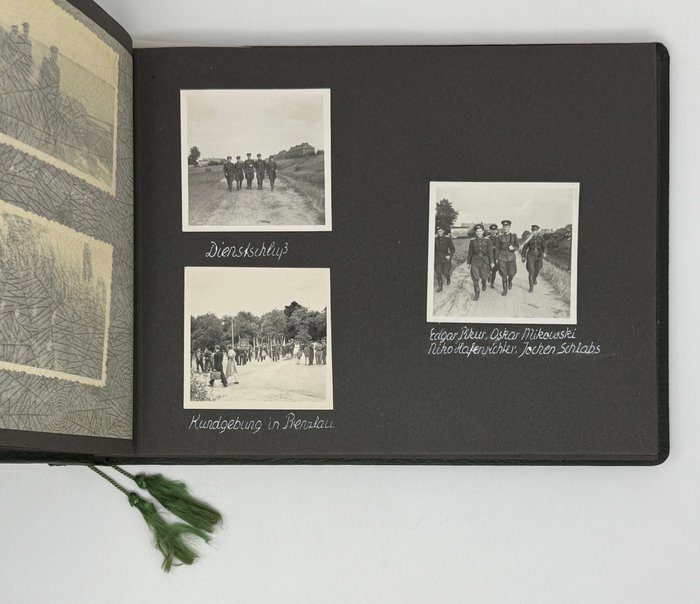
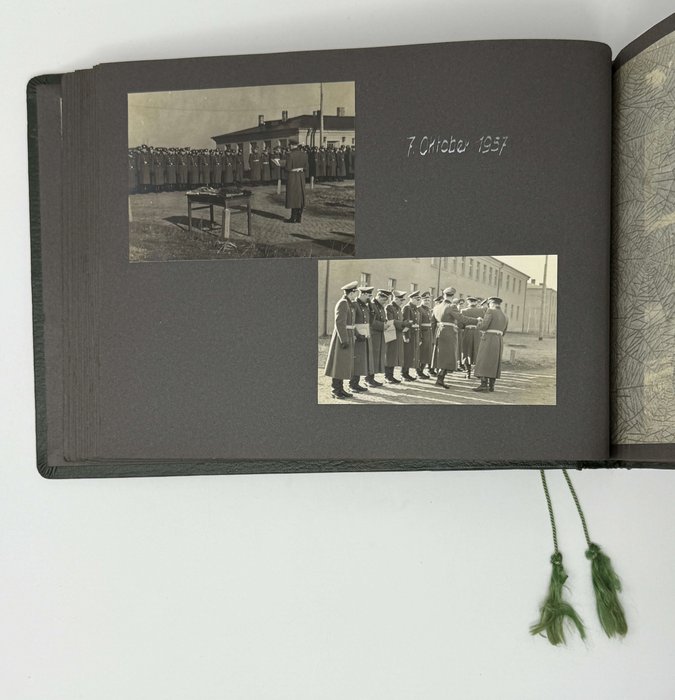
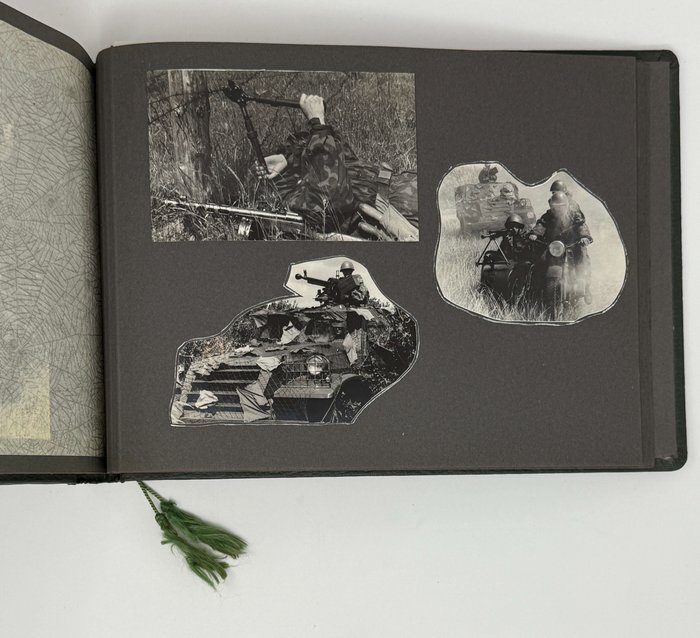
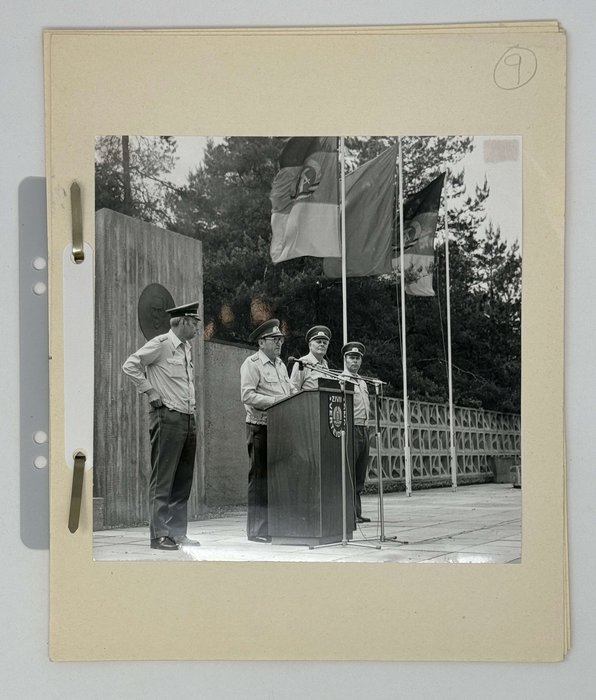
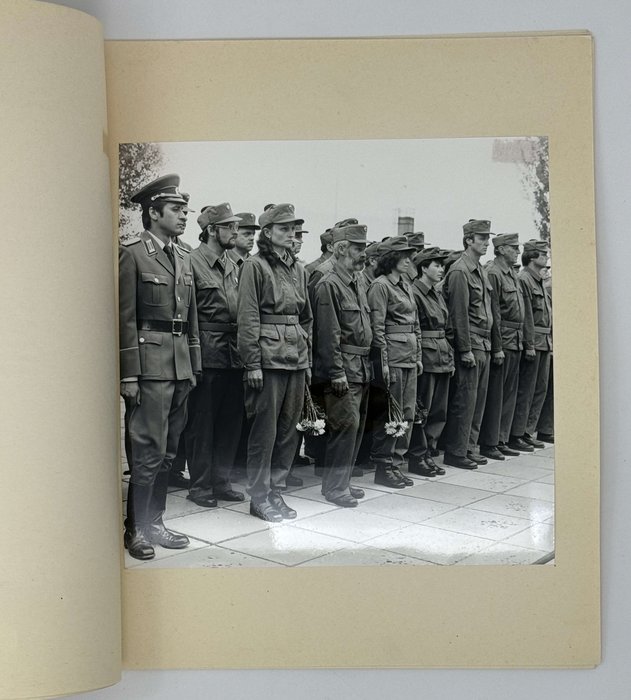
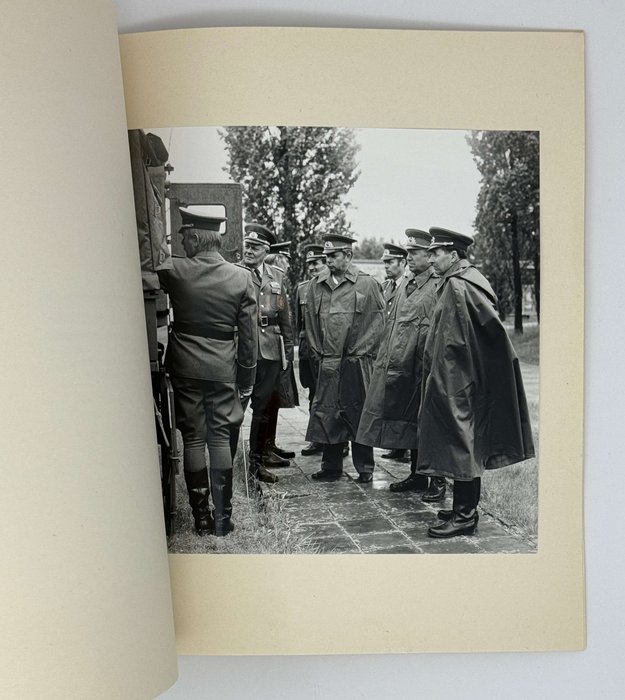

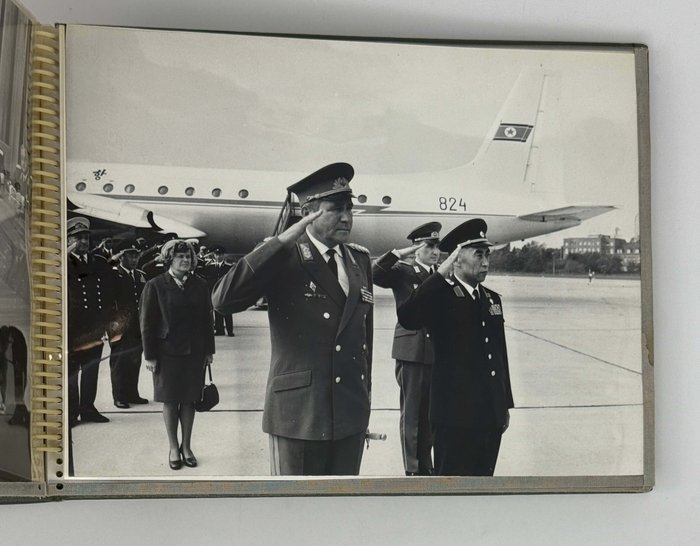

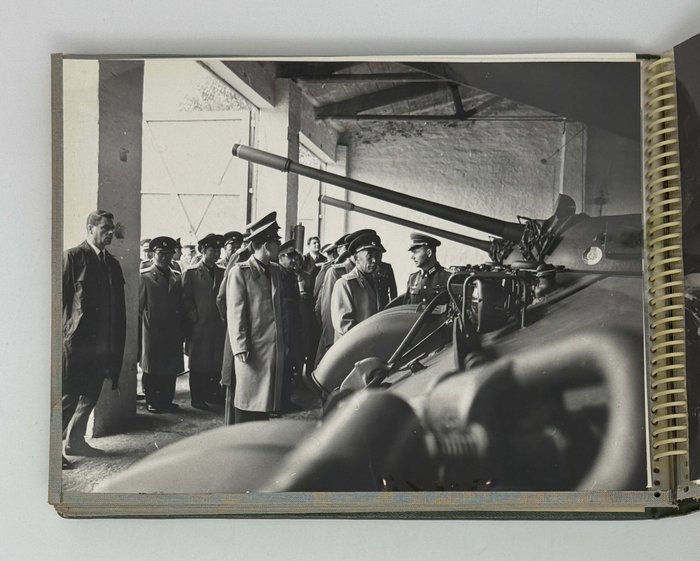
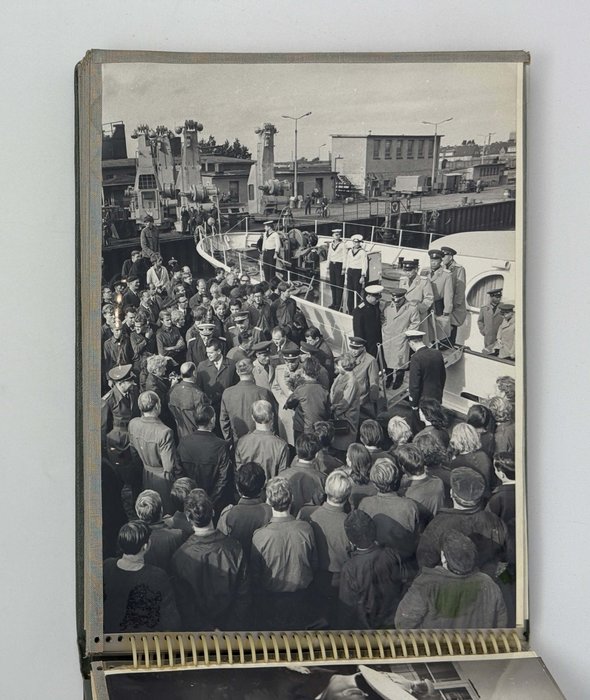
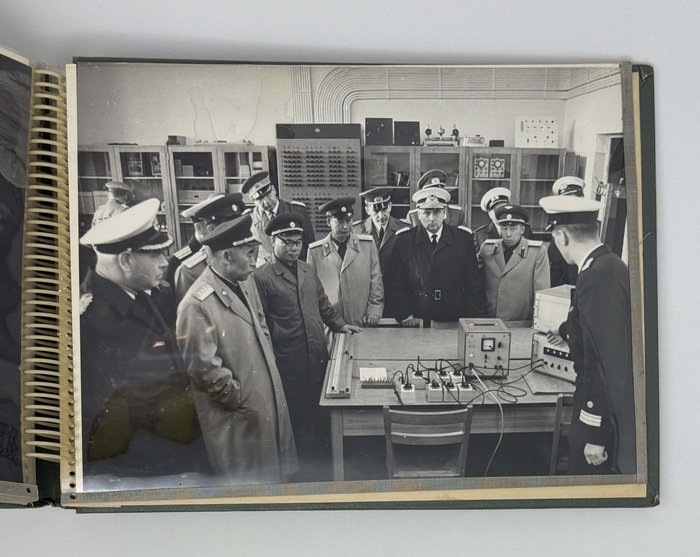
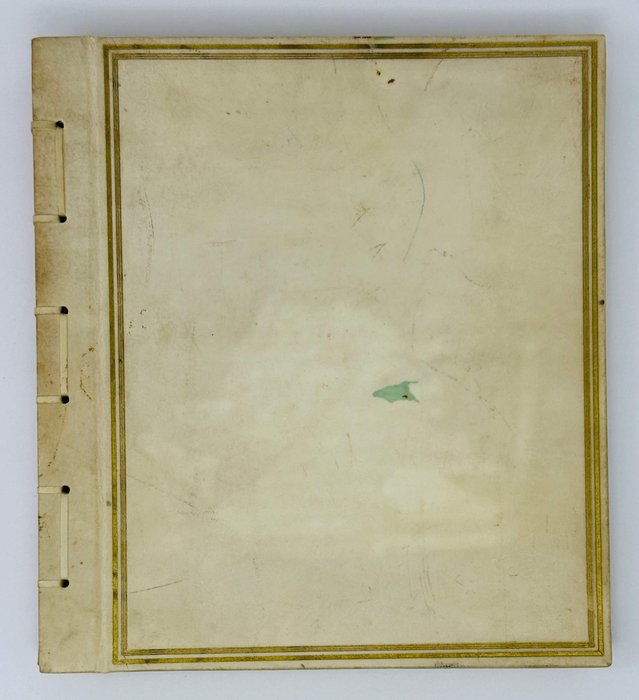
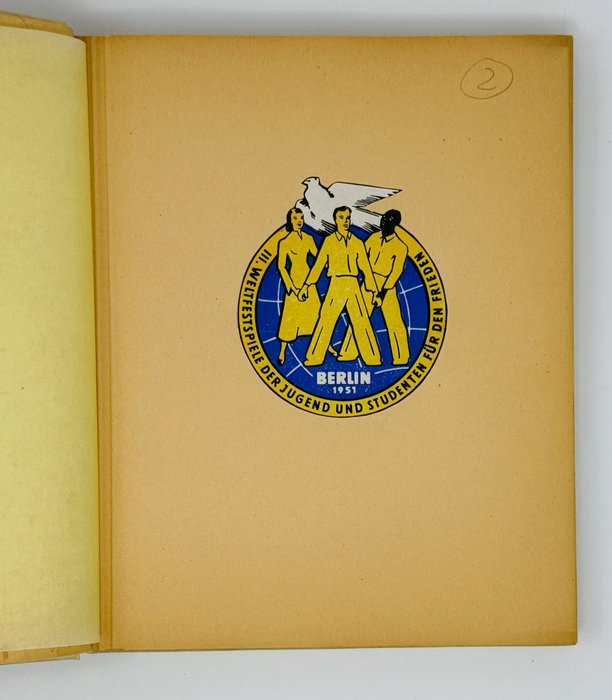
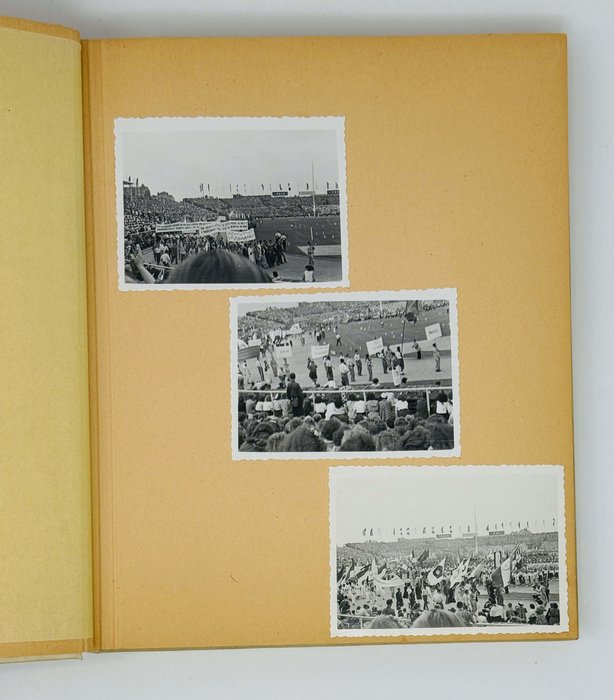
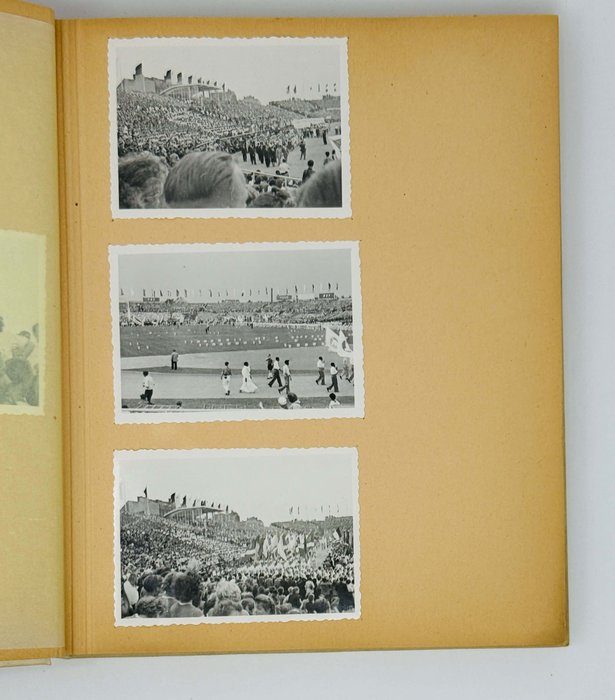
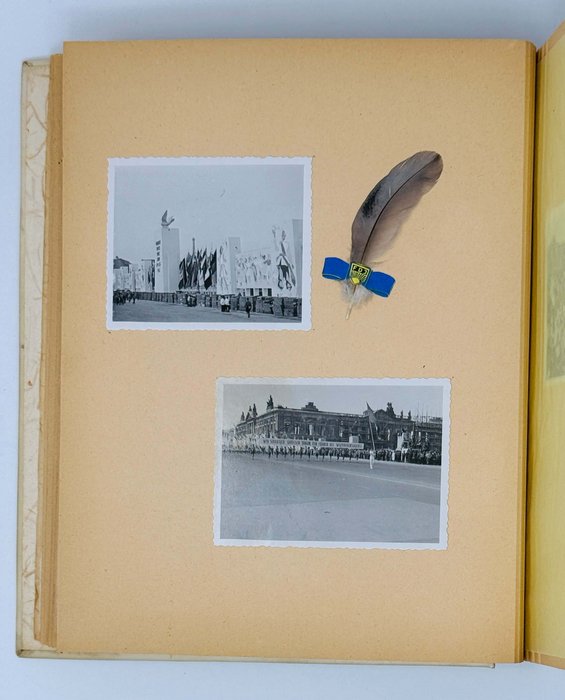
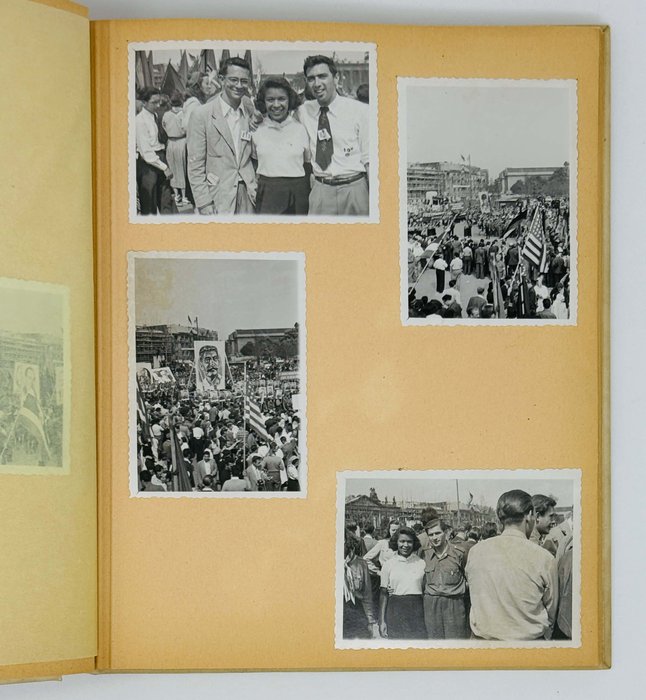
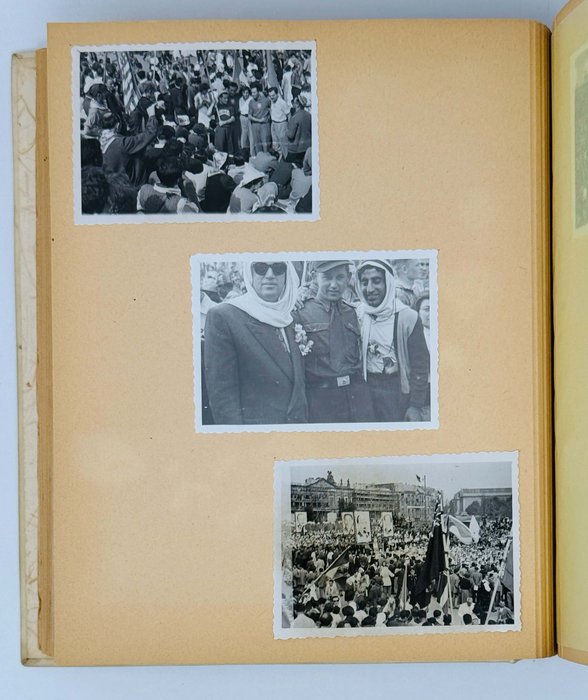

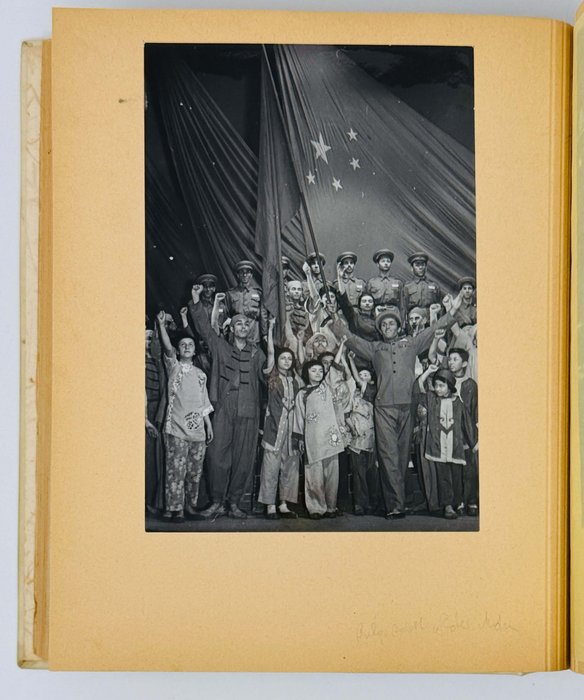
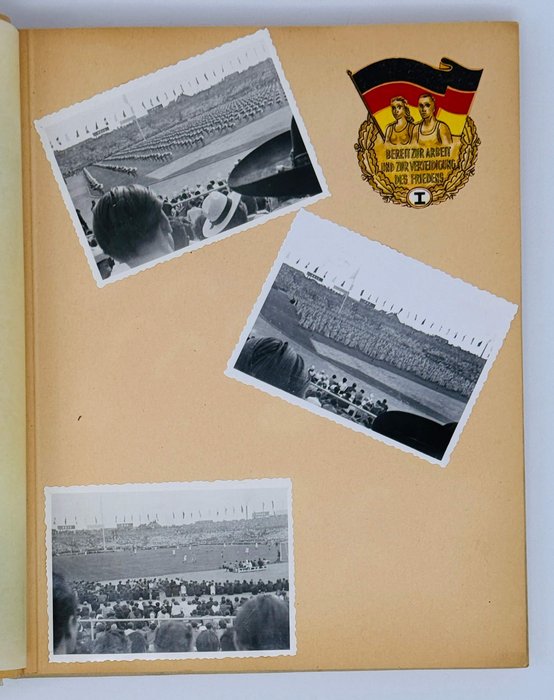
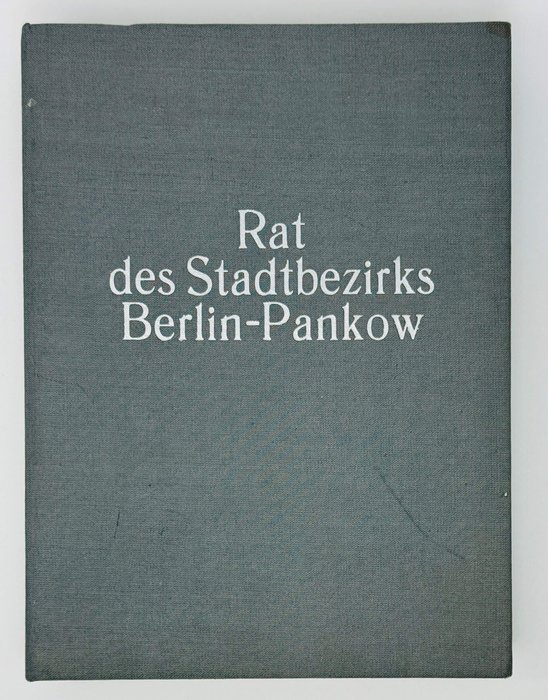
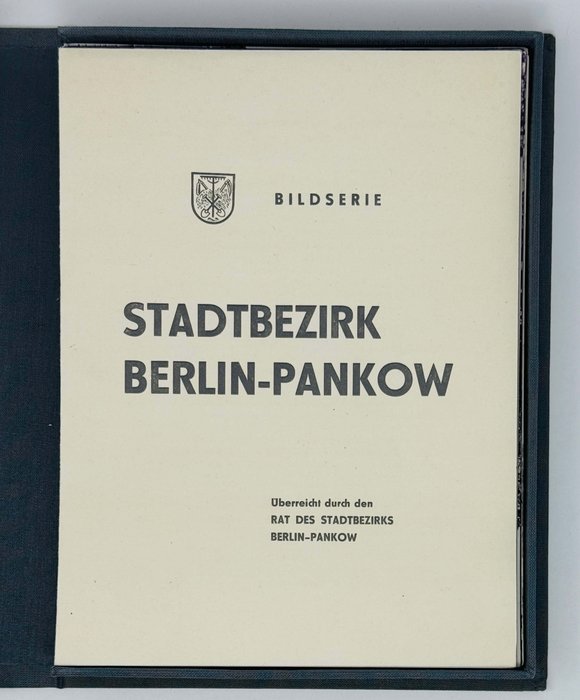
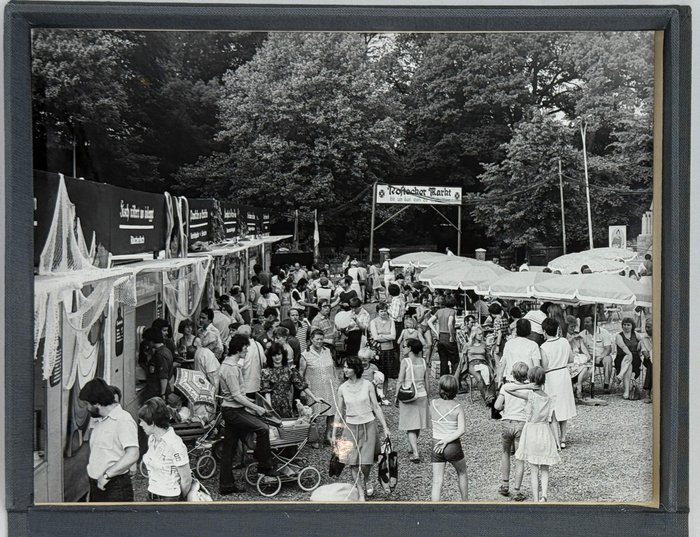
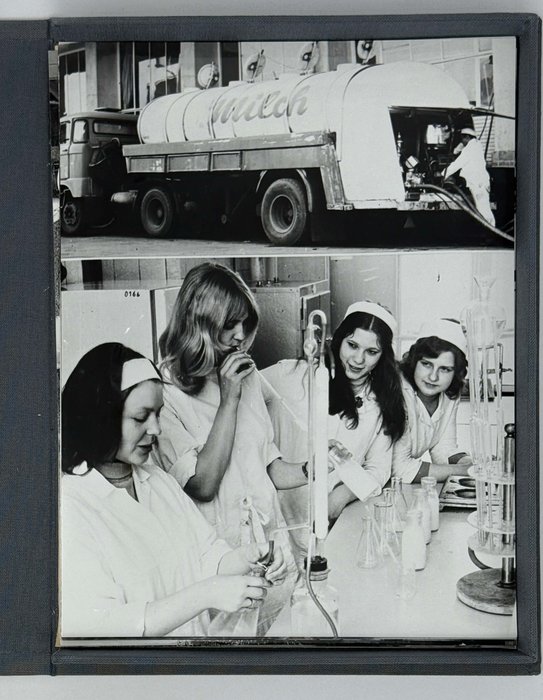
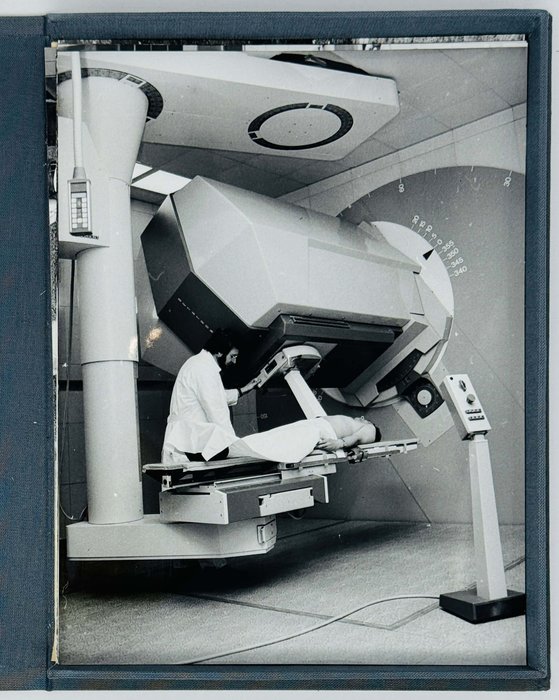
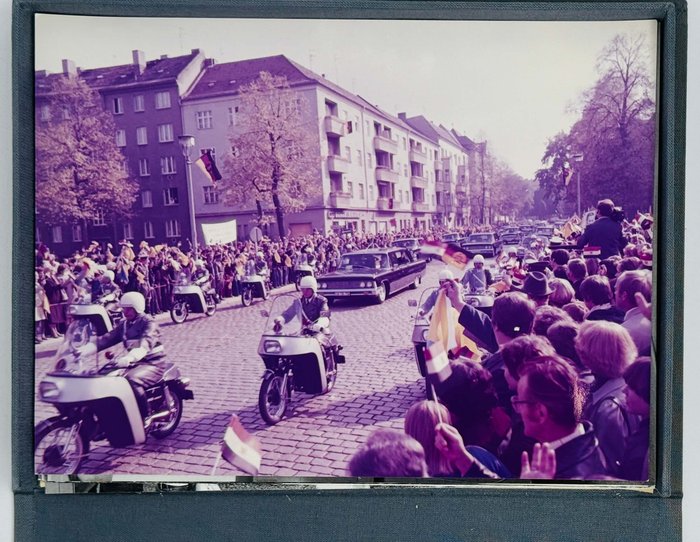

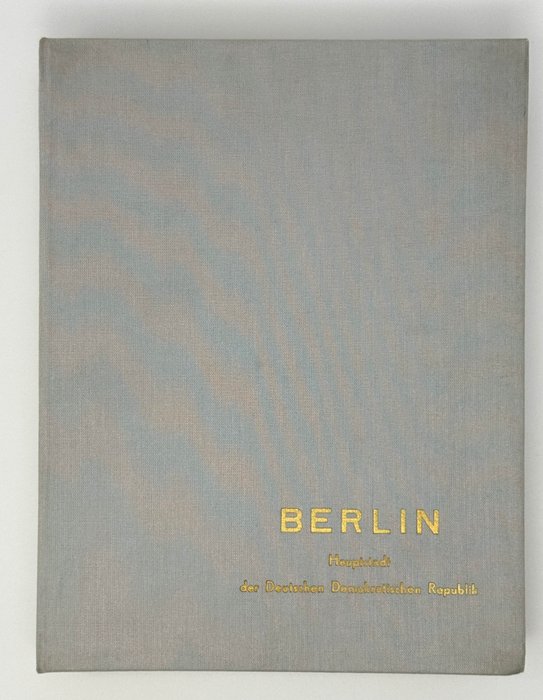
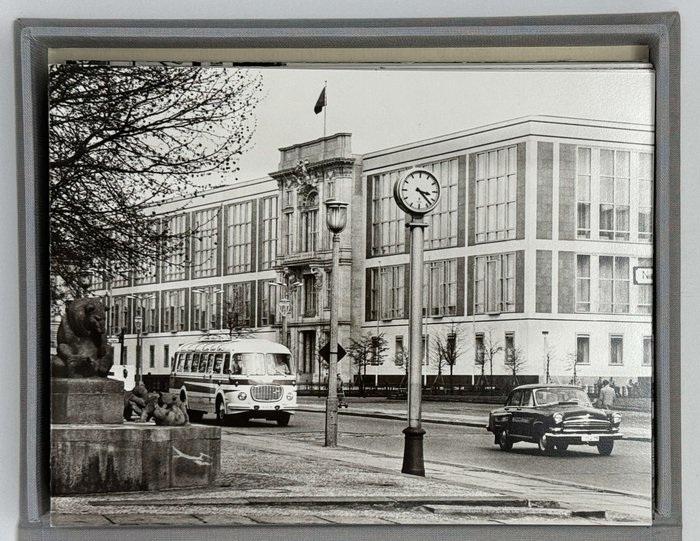
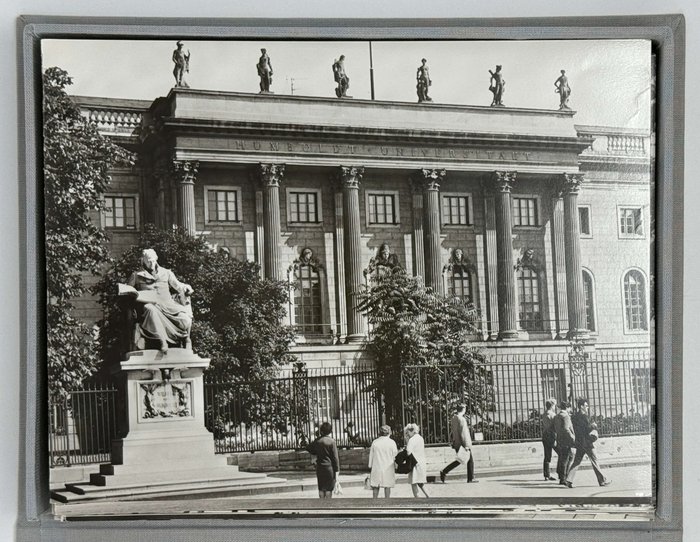
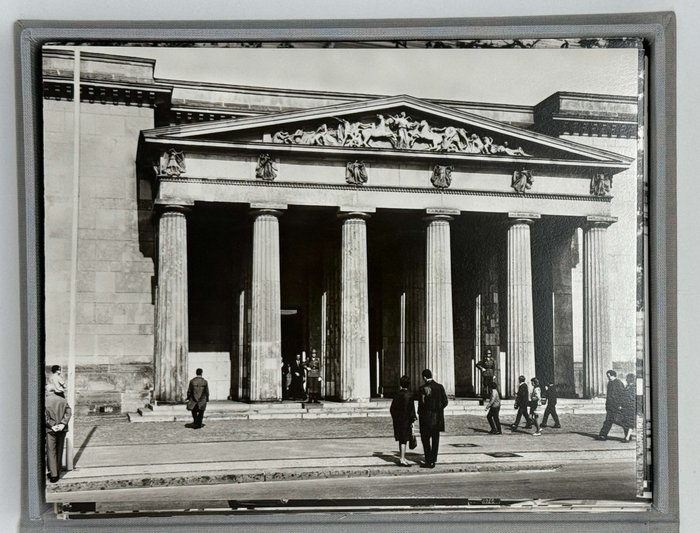
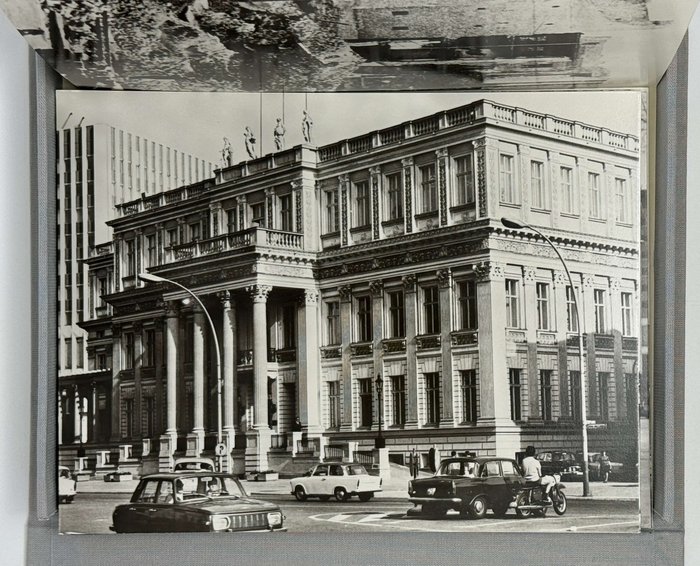
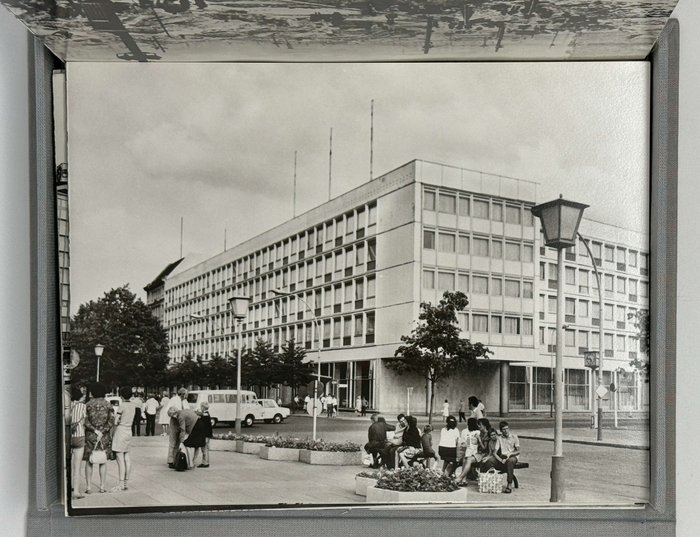
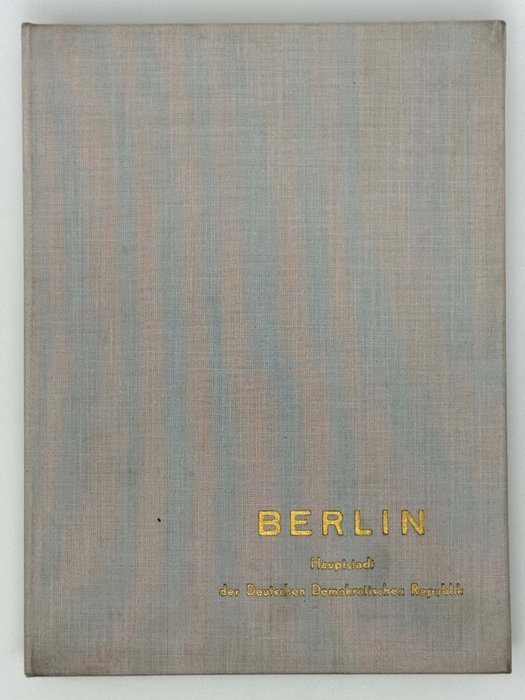
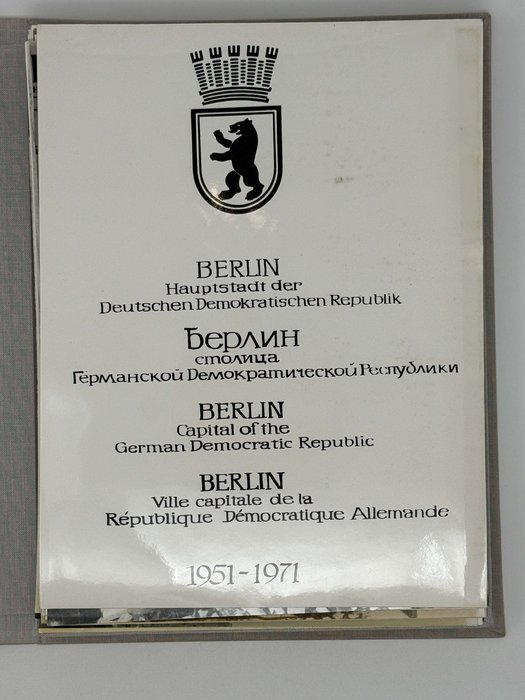
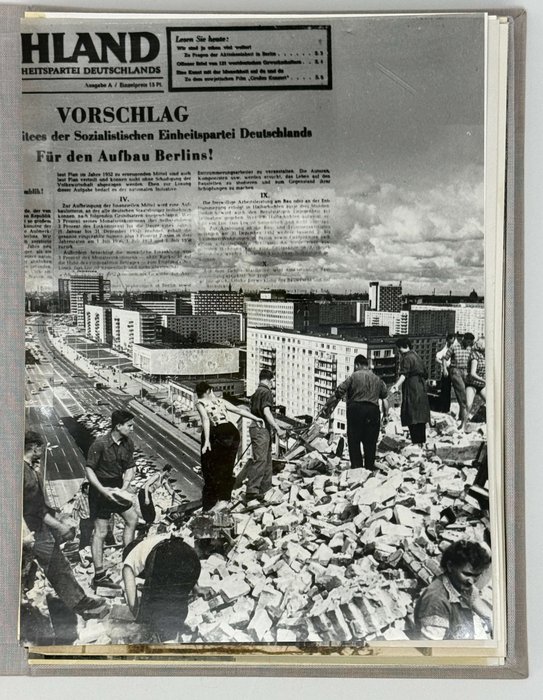
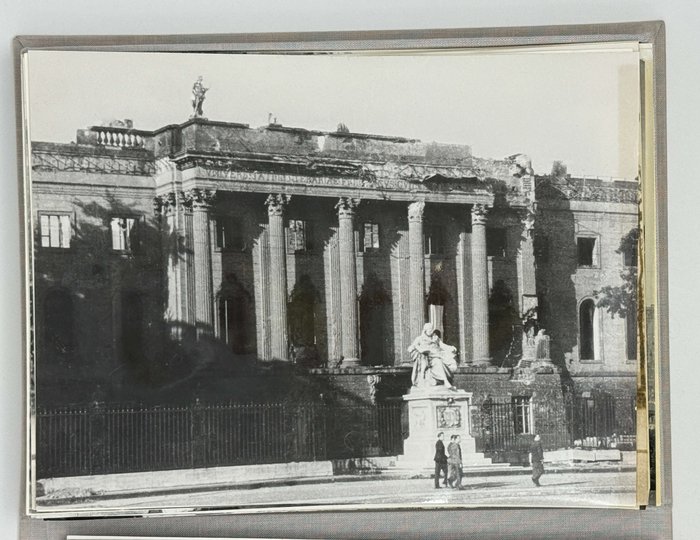
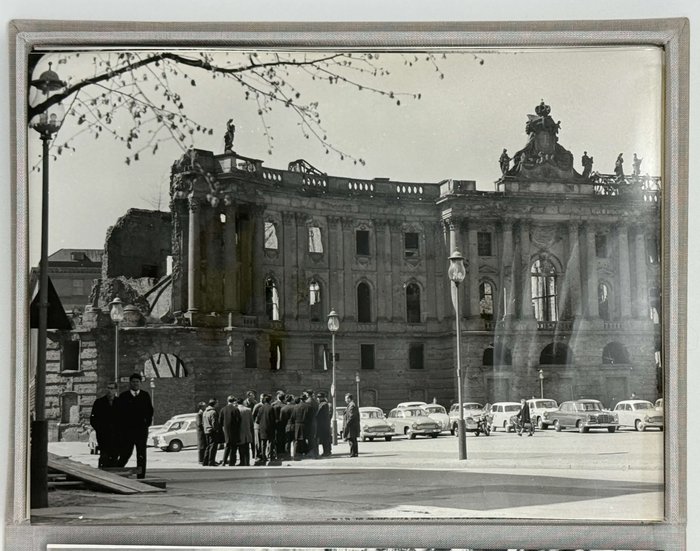
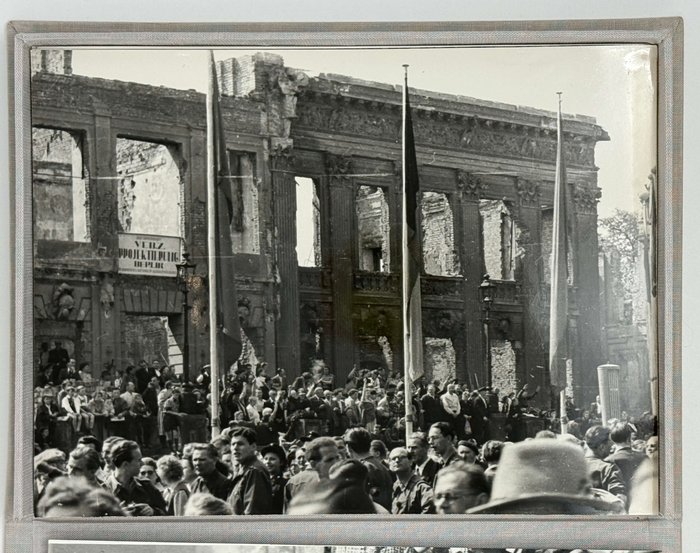
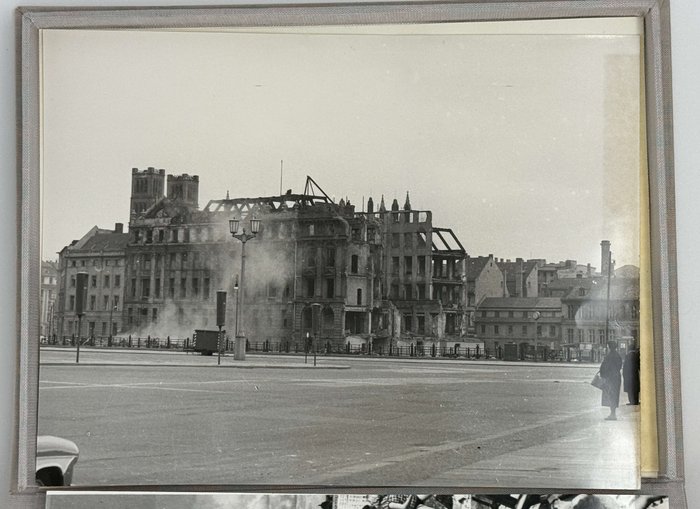
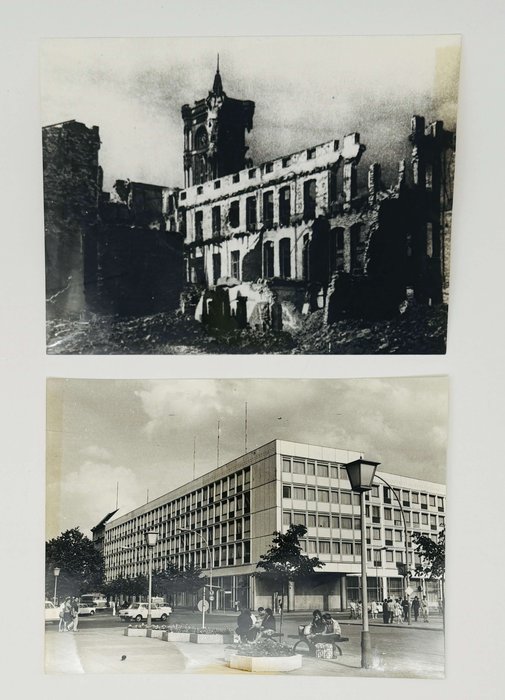
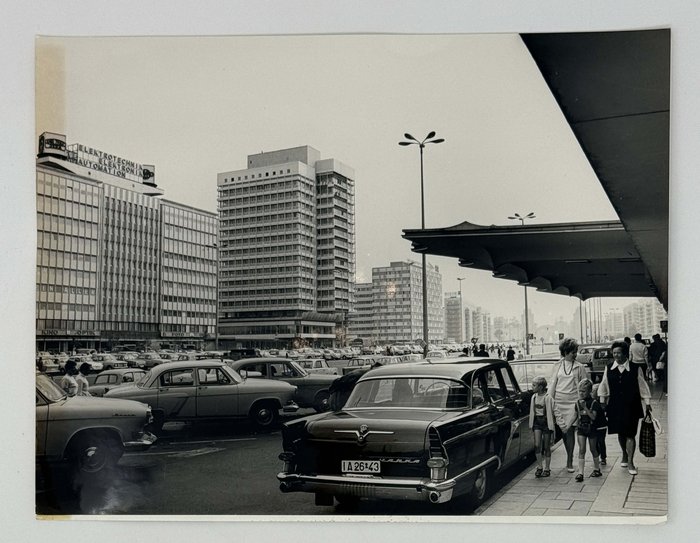

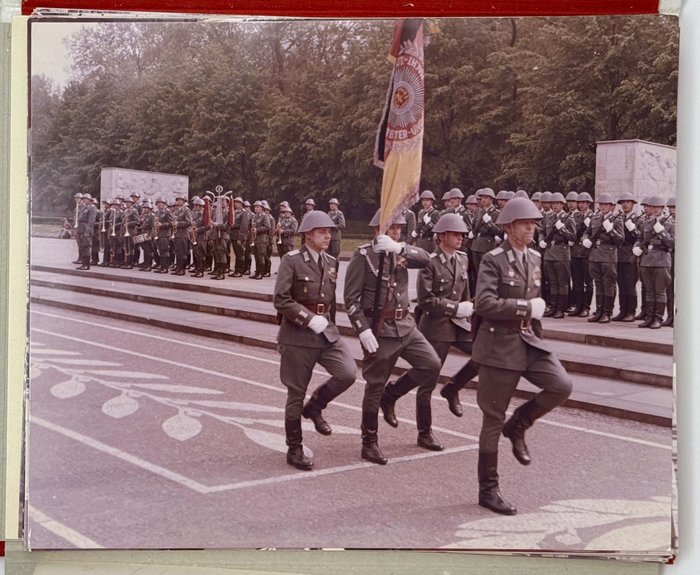
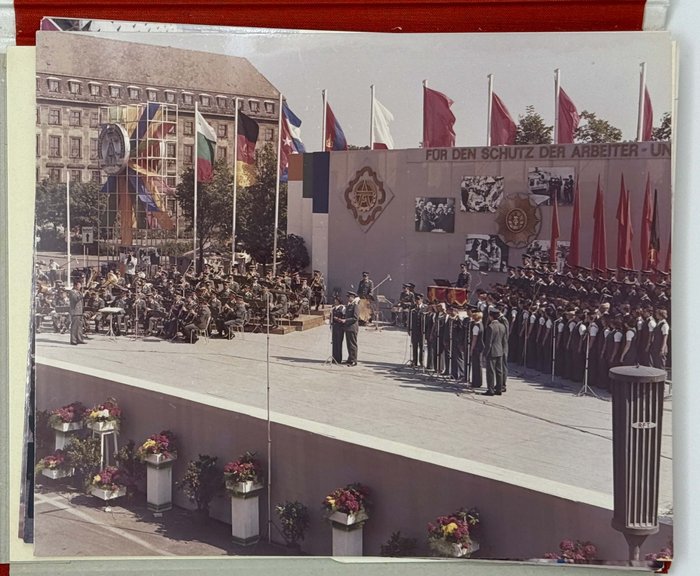
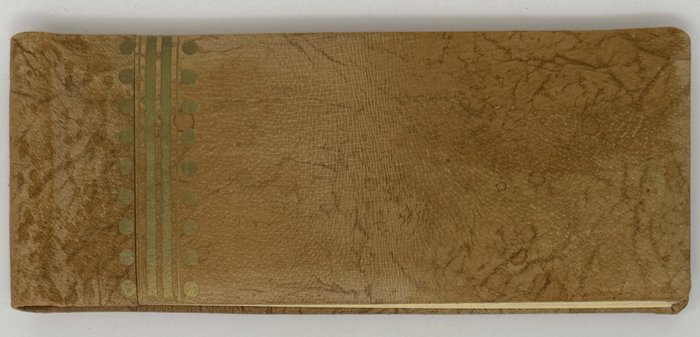
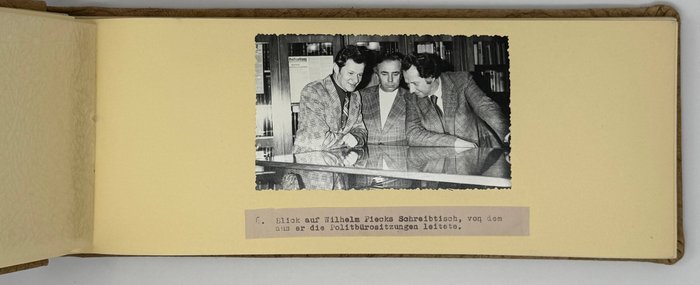
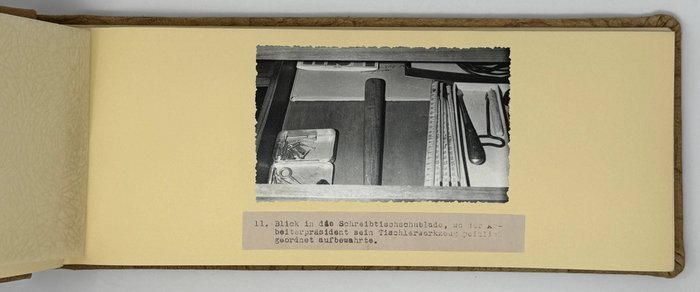
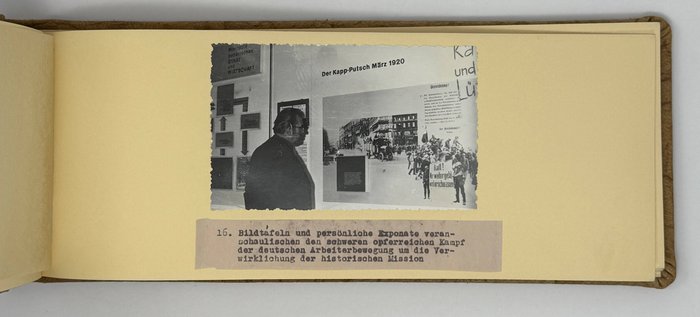
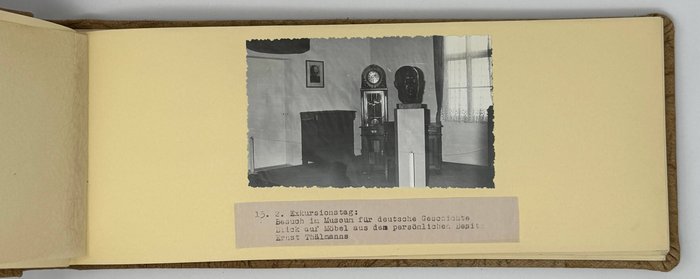
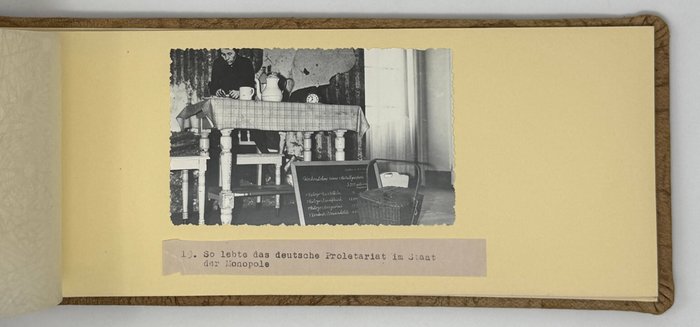
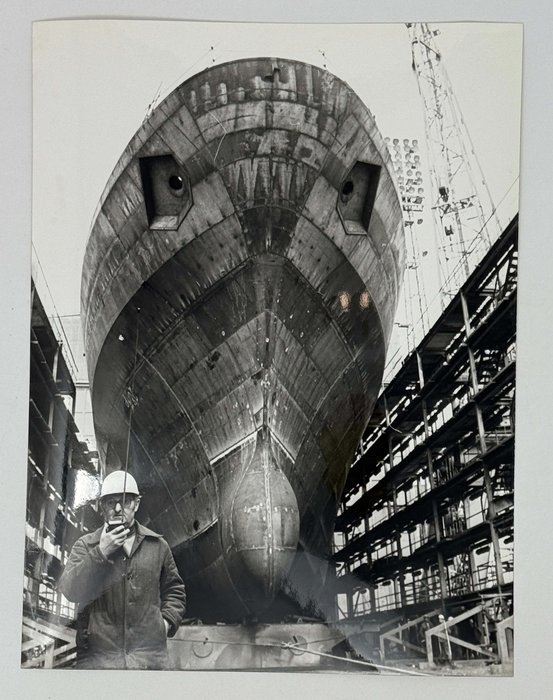
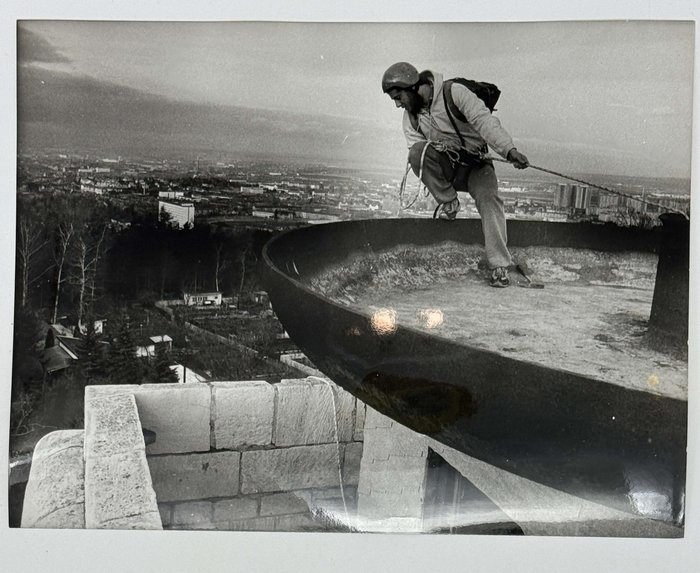
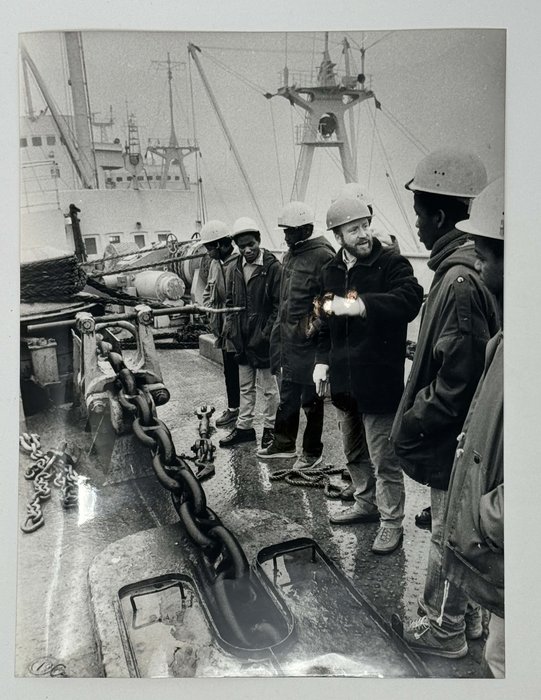
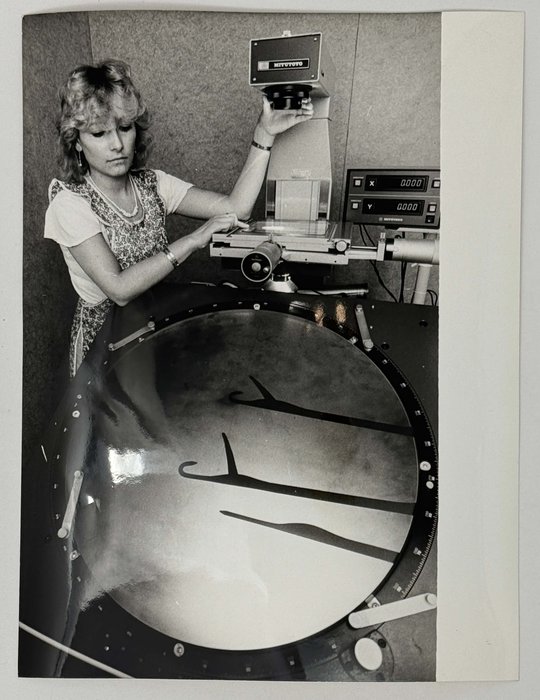
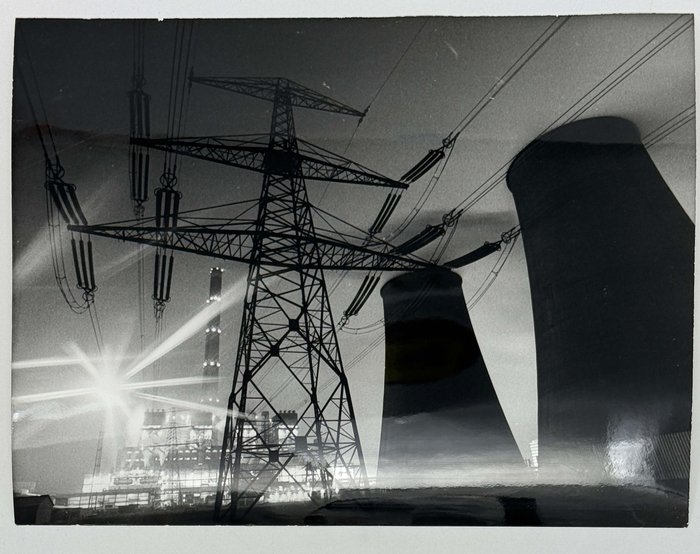
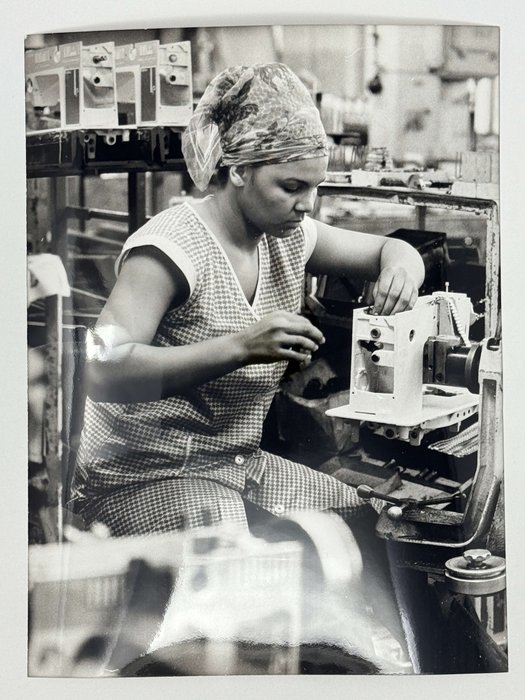
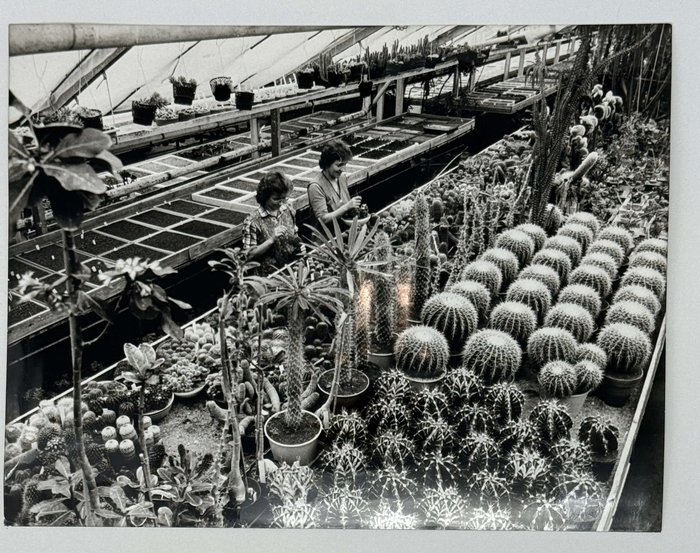

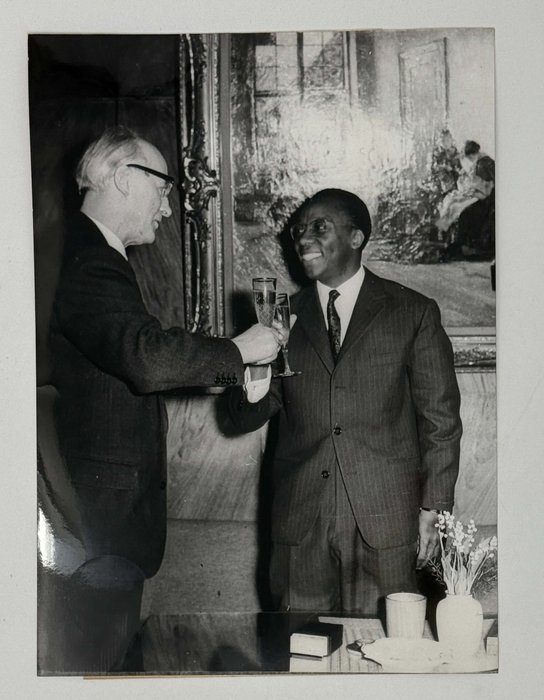
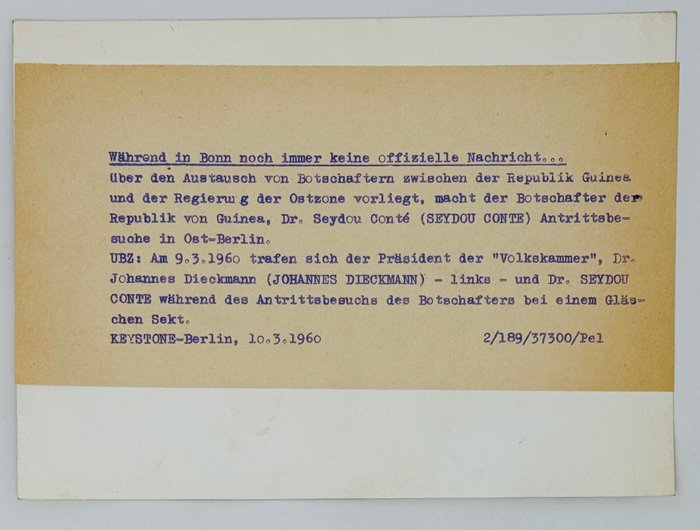
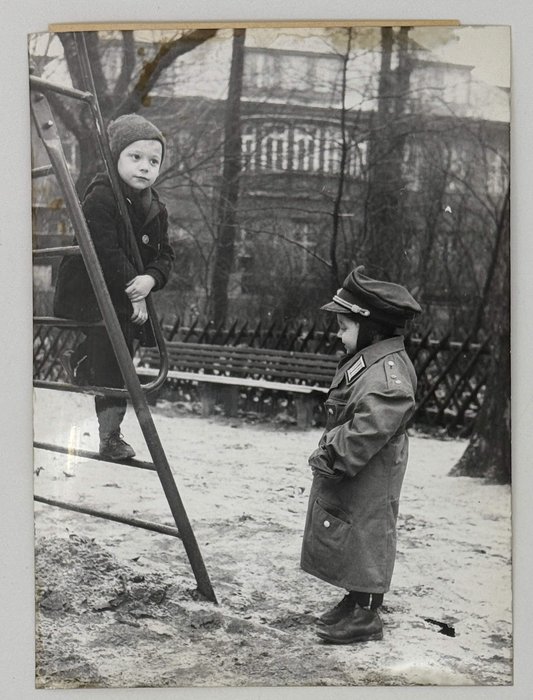
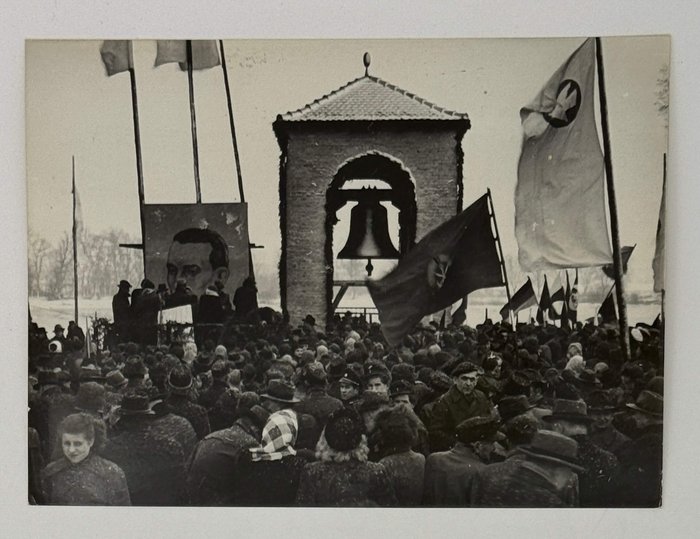

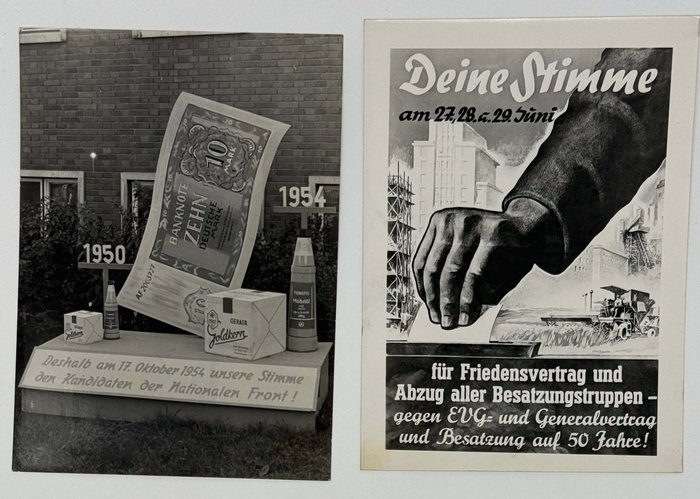

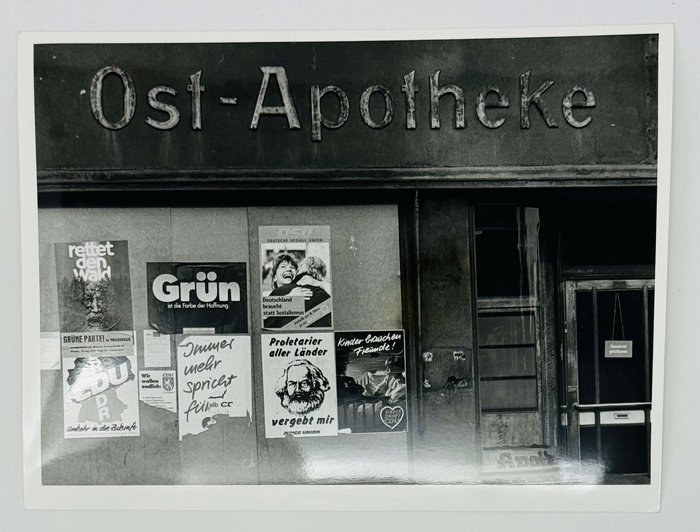
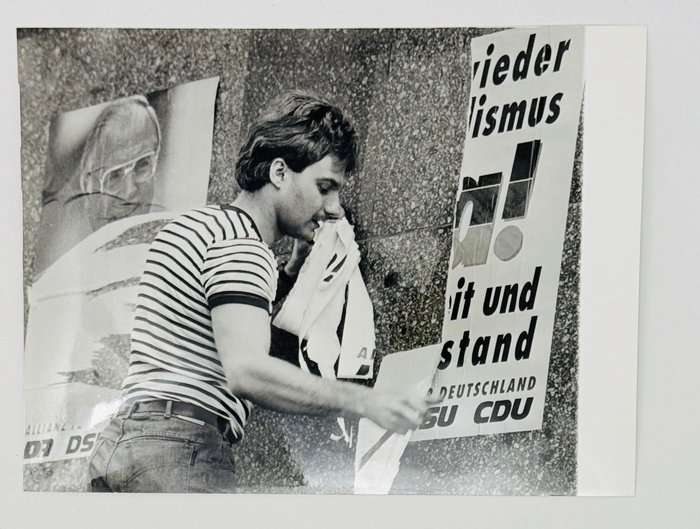
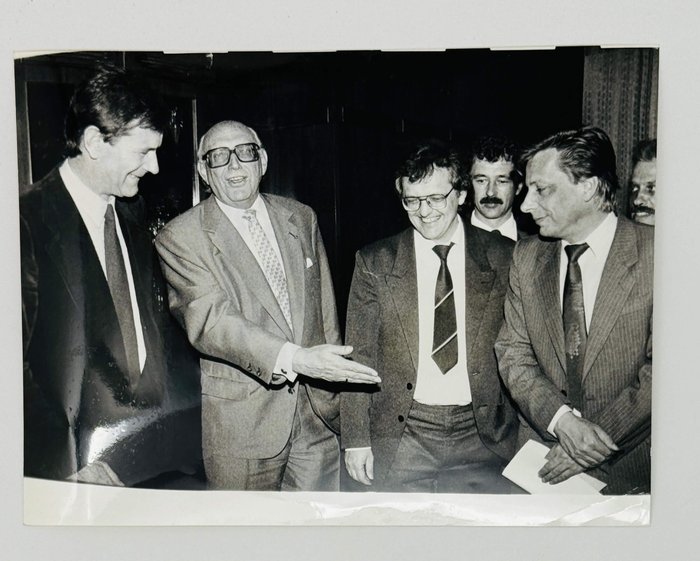
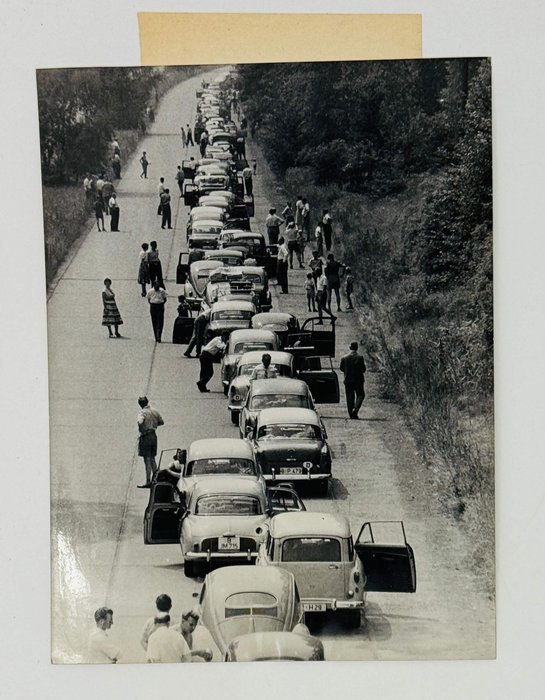
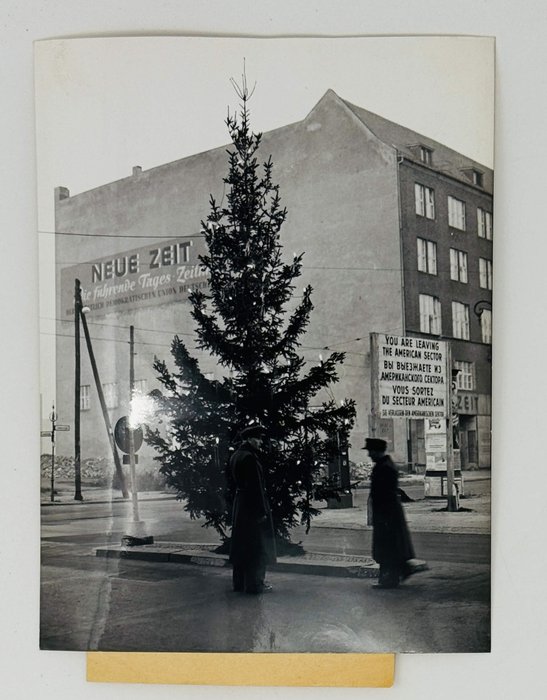
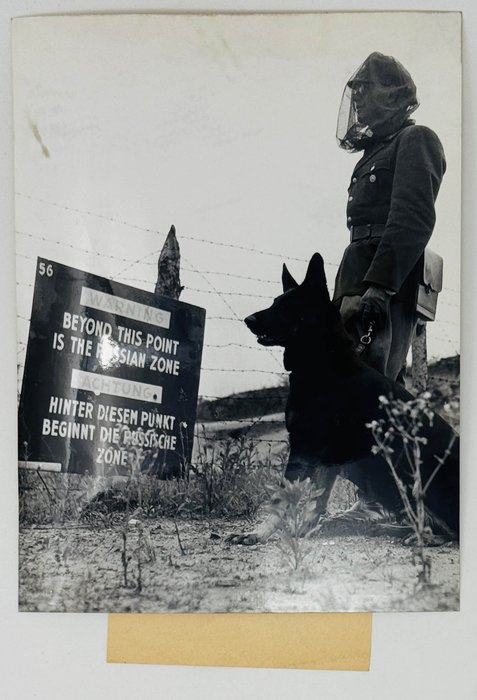
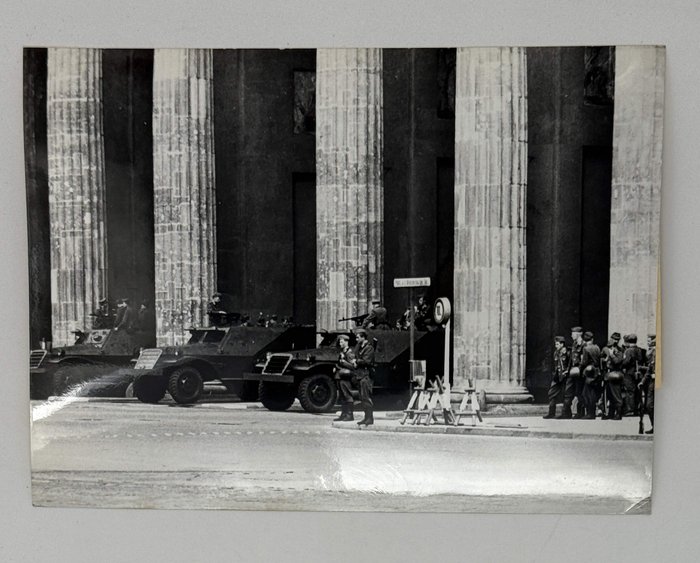

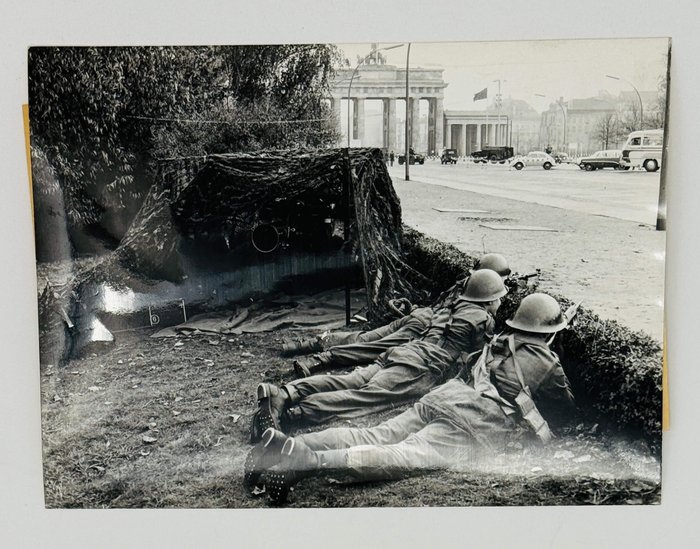
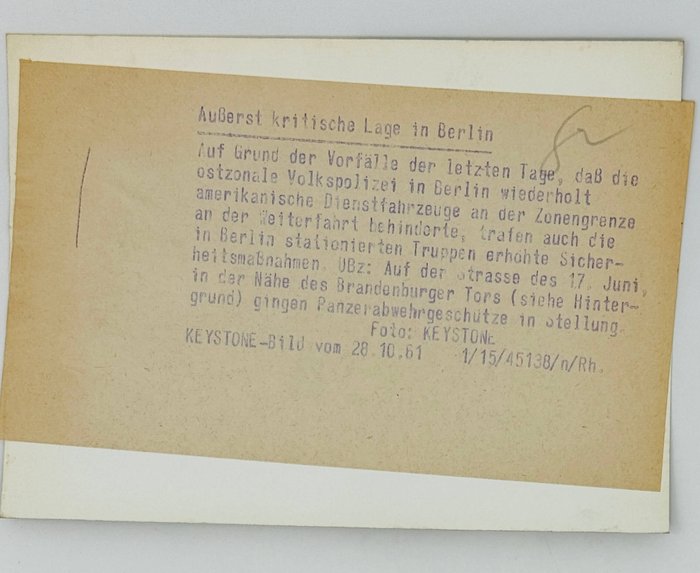
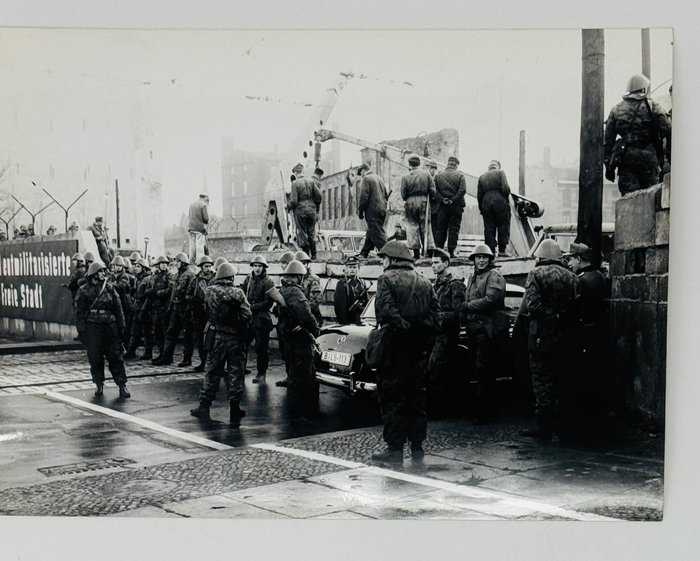
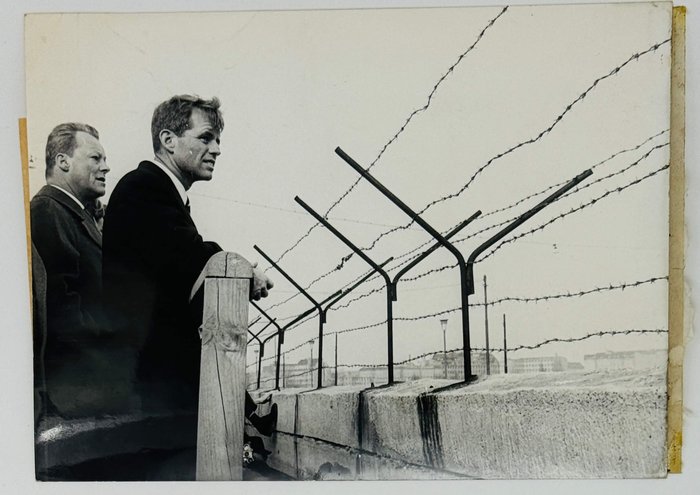
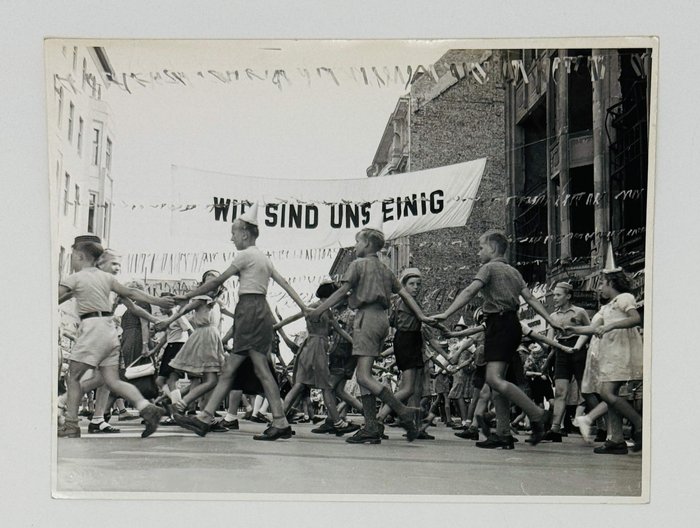
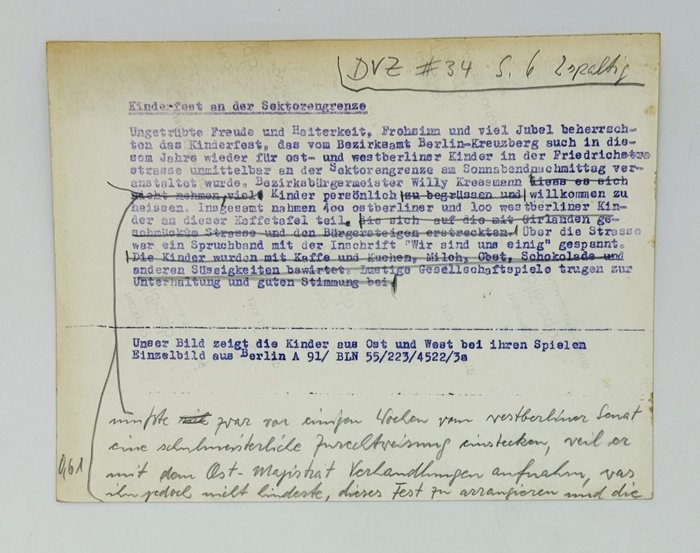
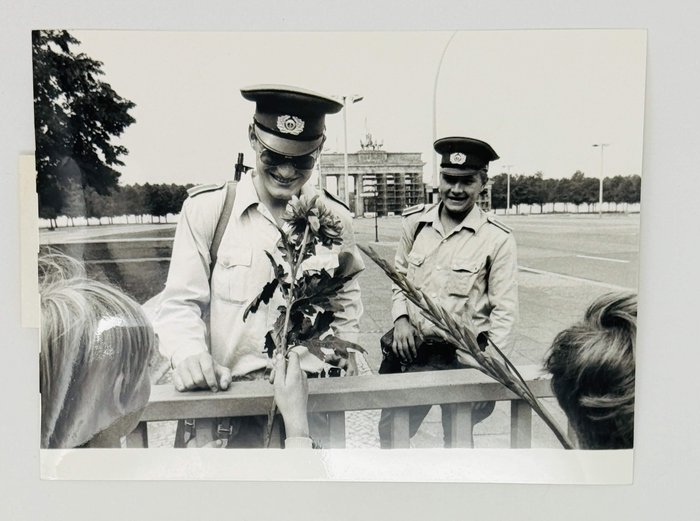
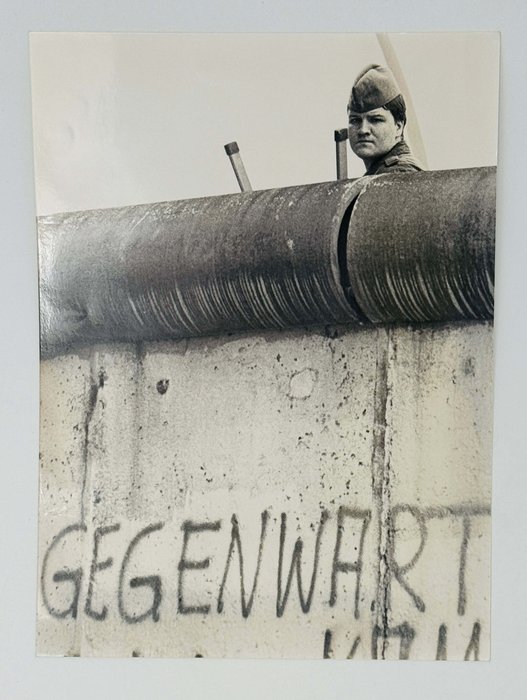
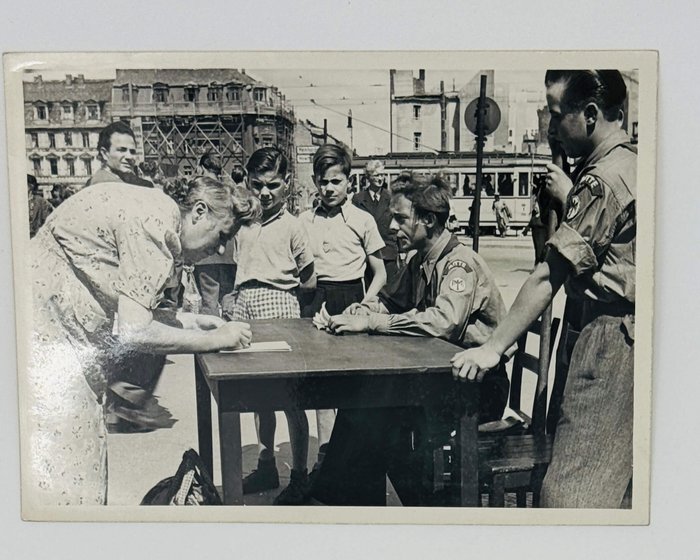
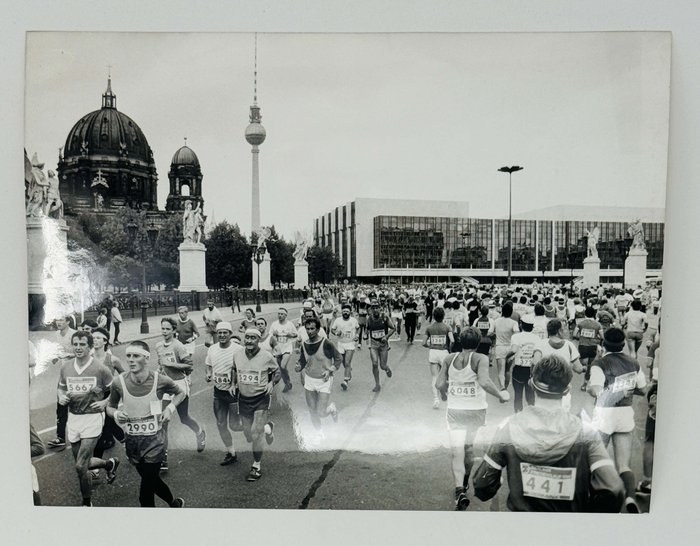
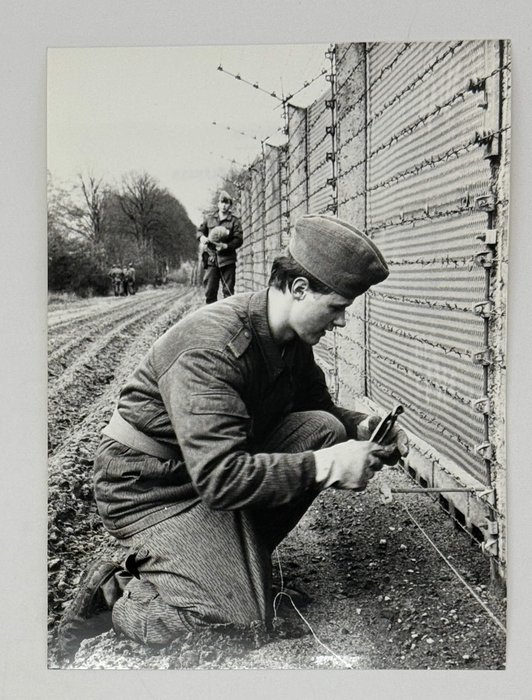
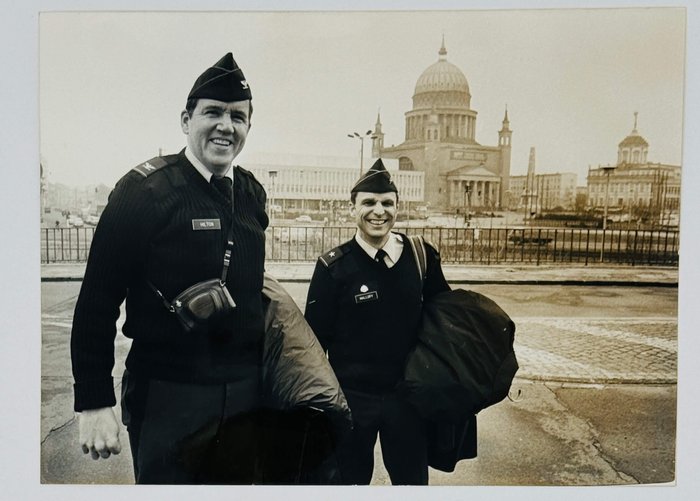
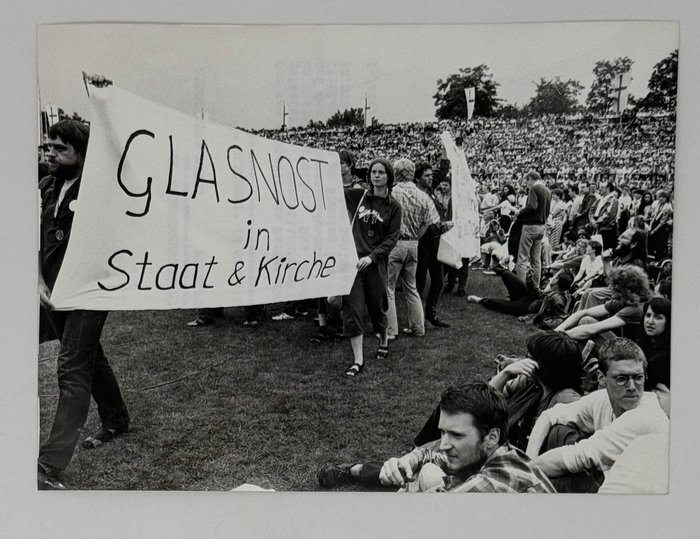
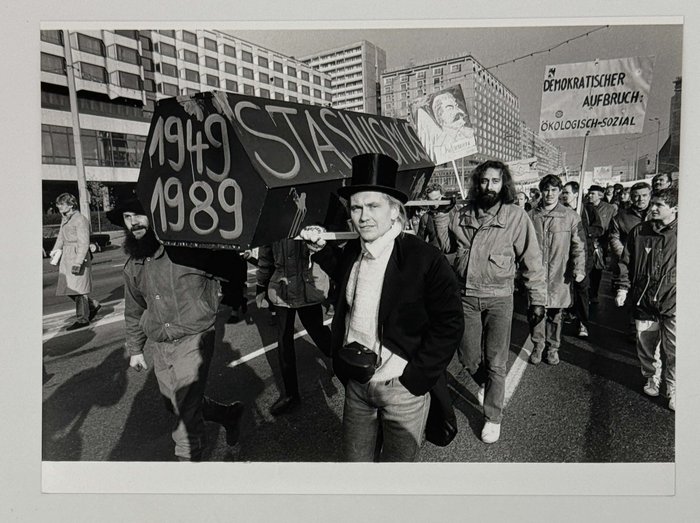
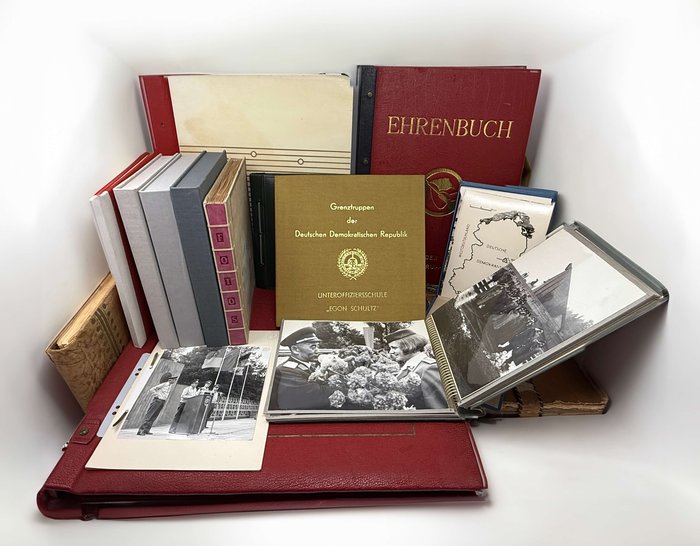
#PE27
1949-1990
A massive collection of over 3000 original photos and over 90 pieces of rare ephemera, comprising a unique and exhaustive visual source on the history of East Berlin and the GDR.
The earlier materials from the 1950s are presented by three private albums, assembled by a female member of the Free German Youth movement (Freie Deutsche Jugend), a participant of the Third World Festival of Youth and Students (East Berlin, August 5-19, 1951) and a young Volksarmee officer stationed in East Berlin. The photos include lively snapshot photos showing the streets and sites of East Berlin and important public events witnessed by the compilers: the first (1950) and second (1954) German Youth Meetings (demonstration processions with flags, posters and portraits of Mao Zedong, young Erich Honecker, a march in the “Pionierrepublick Ernst Thälmann” park), and the Third World Festival of Youth and Students (athletes’ parade, sports competitions, public demonstrations, art performances – with some interesting period ephemera). There are also vivid, often humorous scenes and portraits of the compilers and their friends who, all in their late teens or early twenties, enjoyed life, notwithstanding the political conditions of the time.
The history of the 1960s and early 1970s is represented by four keepsake collections of loose photos, marking the milestones in the history of the Berlin Wall (likely, the 10th anniversary since its erection), reconstruction and urban development of East Berlin (commemorating 20 and 25 years of socialistic reconstruction) and Pankow borough (likely, marking the 30th anniversary of the founding of the GDR and the Pankow district). The photos either follow the history of the Berlin Wall and the events leading to its erection (from 1948 to early 1970s), overview the history and urban development of Pankow, or contain striking images “before” and “after,” illustrating the successes of socialistic reconstruction of East Berlin.
Other albums from this period commemorate the official visit of a North Korean military delegation to the GDR (1968), the centennial jubilee of Wilhelm Pieck – the first and only president of the GDR, set up in the Institute for Marxism-Leninism of the Central Committee of the Socialist Unity Party of Germany (1976); document the service of the GDR Civil Defense and “Egon Schultz” training school for border guards, and performances of the Central Orchestra of the GDR Ministry of Internal Affairs.
A 1988 custom-made keepsake album commemorates the 65th jubilee of an influential East German functionary, Kurt Blecha, who, from 1958 to 1989, was in charge of the GDR censorship system, with a detailed history of his government service (including over 50 newspaper clippings and printed ephemera). Another album, likely compiled in the last year of GDR’s existence, unveils the history of a Kampfgruppen der Arbeiterklasse (Combat Group of the Working Class) paramilitary unit affiliated with the Berlin Department of Engineering and Electrification of the GDR state railway, Deutsche Reichsbahn.
An interesting keepsake album from Kurt Blecha’s personal collection contains original photos and rare printed ephemera illustrating a propagandist exhibition, “Nato-Agenten ohne Chance” (“Nato Agents without a Chance”), organized by the notorious Stasi (Ministry of State Security of GDR) in Berlin and across the East Germany in 1959-1961. The photos of the exhibition’s main entrance and booths are supplemented with rare official poster and leaflets.
Finally, there is an extraordinary collection of ca. 2000 original press photos, comprising a comprehensive visual source on the history of the GDR and East Berlin – from the proclamation of the GDR on October 7, 1949 to the East German general election on March 18, 1990. The photos follow through the period of ideological enthusiasm and industrial boom of the 1950s, the decades of social stability and slow stagnation in the 1960s and 1970s, the beginning of religious and human rights movements in the 1980s and finish with strong images of wide-scale demonstrations for democratization and liberal reforms in East Germany. Series of photos follow the history of the Berlin Wall, the border between East and West Germany, and the political events of 1987-1990, leading to the Reunification of Germany. There are also captivating photos of everyday life, bringing forward the life and experience of ordinary East Germans.
1. [FREIE DEUTSCHE JUGEND, 1950s]
[Historically Significant Album with 240 Original Gelatin Silver Snapshot and Studio Photographs, Documenting the Early Years of the Free German Youth Movement in East Berlin and Saxony and Showing the Events of the First (1950) and Second (1954) German Youth Meetings in East Berlin, the Fourth Parliament of the Free German Youth in Leipzig (1952), Celebration of the 140th Anniversary of the Battle of the Nations in Leipzig (1953), a Meeting of “Young Korean Friends” at the Berlin Ostbanhof in 1953, Pavilions of the Technical Fair in Leipzig (1956), Numerous FDJ Hiking, Camping and Skiing Trips, Fancy Dress Balls, the Compiler and Her FDJ Friends, &c.].
Ca. 1950-1956. Oblong Quarto album ca. 22x29,5 cm (8 ½ x 11 ¾ in). 24 card stock leaves with tissue guards. With 240 mounted and loosely inserted gelatin silver photos, from ca. 10,5x14,5 cm (4 x 5 ¾ in) to ca. 5x5,5 cm (1 ¾ x 2 in). All photos with period red or black pencil captions on the mounts (most captions relate to more than one photo). Period light brown pebbled cloth album fastened with a string; a cloth strip keeps the covers closed. Binding rubbed, covers with cracks on hinges and losses on the corners, the front cover with a split on the lower right corner, two or three images possibly previously removed, but overall a very good album with bright and sound photos.
Historically significant, extensive collection of early original snapshot and studio photos, taken and collected by a female member of the Free German Youth movement (Freie Deutsche Jugend, est. 1946), most likely from Frankenberg, Saxony. The collection includes important images illustrating early events in the history of the Freie Deutsche Jugend, together with interesting, lively snapshot photos of Berlin.
The album opens with over thirty snapshot photos, taken during the first German Youth Meeting in East Berlin in May 1950 (“Deutschlandtreffen der FDJ, Pfingsten 1950 in Berlin”), showing city streets, demonstration processions with flags, posters and portraits of Mao Zedong, young Erich Honecker (co-founder of FDJ in 1946 and General Secretary of the Socialist Unity Party of Germany in 1971-1989) giving a public speech, guests on the “honour tribune,” a ceremony of wreath laying at the Soviet War Memorial in Treptower Park (by Chinese, Austrian and Bulgarian delegations), athletes’ parade at Walter Ulbrich stadium, performance by Ukrainian dancers, young FDJ men and women posing on the Stalinallee (after 1961 – Karl-Marx-Allee), having fun, &c.
A dozen photos show the “IV Parlament der FDJ, Phingsten in Leipzig” (1952): a swimming competition, a soccer game, Monument to the Battle of the Nations (Völkerschlachtdenkmal), the compiler and her friends (“Hilde, Gretel u. Ich,” “Heinz, Liane, Annerose, Hilde u. Heinz”), a street demonstration (marching drummers, flag bearers, athletes), &c. A series of seven snapshot photos show the public celebrations of the 140th anniversary of the Battle of the Nations in Leipzig in 1953: a public meeting at the Monument to the Battle, FDJ members marching or dancing on the street. There are also six photos from the celebration of the Republic Day in Frankenberg, Saxony, on October 10, 1952 (street processions with pioneers, flagbearers, drummers, trumpeters).
Over twenty images document the compiler’s visit to Berlin in 1953, showing Stalinallee, German Sports Hall (Deutsche Sporthalle, built in 1951, demolished in 1971-72), Strausberger Platz, a monument to Joseph Stalin, headquarters of the Ernst Thälmann Pioneer Organization, several group portraits of FDJ members posing on outdoor gymnastics equipment, a motorbike and generally having fun, &c. Six interesting photos show a group of “young Korean friends” at the Berlin Ostbanhof in 1953, holding flowers and flags (visible flags of GDR and FDJ).
Tweny-four photos illustrate the Second German Youth Meeting (Deutschlandtreffen der Jugend) in Berlin in June 1954, showing a march in the “Pionierrepublick Ernst Thälmann” park, public speeches, performances by German singers, dancers and the theatrical company of “Deutschen Grenzpolizei,” processions at Marx-Engels Platz. The album also contains photos of several pavilions at the Technical Fair (“Technische Messe”) in Leipzig in the autumn of 1956 (pavilions of Romania, Bulgaria, Hungary, Soviet Union), studio photos of Berlin (Treptower Park, “HO” department store, “Haus der Weltjugend,” steamboats on the Spree River, Unter den Linden, Sanssouci Palace), &c.
Over seventy images show various hiking, camping, skiing and picnic trips, which the compiler and her friends from FDJ made in Saxony (Kriebstein, Zöblitz and Waldheim, Oberwiesenthal), showing the party hiking and skiing, making a fire, posing next to their tent, eating, having fun, studying a map, various town and countryside views, &c. There are also six group photos from the fancy dress balls organized by FDJ in the Saxonian towns of Frankenberg and Flöha. Overall an interesting, first-hand visual account of the early years of the Free German Youth movement in East Berlin and Saxony.
2. [THIRD WORLD FESTIVAL OF YOUTH AND STUDENTS, 1951]
[Album with 74 Original Gelatin Silver Photographs, Showing Scenes from the Third World Festival of Youth and Students in East Berlin in 1951].
Ca. 1951. Quarto album ca. 25x22,5 cm (9 ¾ x 8 ¾ in). [1 – t.p.], 20 card stock leaves with tissue guards (2 blank). With 74 mounted gelatin silver photos, including nine larger images, ca. 12x17,5 cm (4 ¾ x 7 in), the rest are ca. 6,5x9 cm (2 ½ x 3 ½ in). Two photos with period pencil captions in German on the mounts; three portraits with the autographs of the depicted people on the paper labels, mounted under the images. With several pieces of period printed ephemera and a period newspaper clipping. Period white vellum album with a pink suede spine; front board with gilt-tooled decorative borders. Overall a very good album with bright and sound photos.
Historically significant collection of lively original snapshot and studio photos, illustrating the events of the Third World Festival of Youth and Students, which took place in East Berlin on August 5-19, 1951.
Over twenty photos document the athletes’ parade at Walter Ulbrich stadium in the Mitte district (built in 1950, renovated in 1973, demolished in 1992). The images show various delegations going on the ring with their flags, spectators on the tribunes, a group performance, and a soccer game. Three closeup portraits show the participants from Nigeria, Mexico and possibly Ethiopia, with their autographs mounted underneath. About thirty photos depict the large-scale demonstration in central Berlin, featuring the Berliner Dom, the Zeughaus (Arsenal) and the Altes Museum in the background. The photos show processions with portraits of Lenin and Stalin, members of the U.S. delegation, flags of the United States, Great Britain, Norway and other countries, GDR pioneer kids with trumpets and drums, delegates from African and Middle Eastern countries, &c. There are also photos of a street performance by German dancers, a singing group of people from the Free German Youth movement, a stage performance of a Chinese delegation (with the national emblem of the People’s Republic of China in the background), Soviet singers, theatrical performances, young people running in a circle dance in front of a building with a neon sign “Haus der Weltjugen,” Soviet participants with Stalin’s portrait, night fireworks, &c.
The ephemera include colour-printed emblems of the festival, the GDR delegation, the Free German Youth movement (Freie Deutsche Jugend), the World Federation of Democratic Youth, and the Ernst Thälmann Pioneer Organization (for children). The clipping from a period German newspaper reproduces a photo of the U.S. delegation at the athletes’ parade.
3. [GDR MILITARY OFFICER IN BERLIN, 1953-1955]
[Album with 109 Original Gelatin Silver Snapshot and Studio Photographs, Including Images Taken and Collected by a Young GDR Army Officer During his Service in Berlin in 1953-1955 and Showing Scenes from the Second Meeting of German Youth in June 1954, Views of the Soviet War Memorial in Treptower Park, Sanssouci and Cecilienhof Palaces, a Cruise on the Spree River, a Trip to Königs Wusterhausen and Neue Mühle, &c.].
Ca. 1953-1957. Oblong Quarto album ca. 22,5x32 cm (8 ¾ x 12 ½ in). 23 card stock leaves with tissue guards (4 blank). With 109 mounted gelatin silver photos, from ca. 8x13 cm (3 ¼ x 5 in) to ca. 6x8,5 cm (2 ¼ x31/4 in). Most photos with period white ink captions on the mounts (several captions relate to more than one photo). Period green full cloth album fastened with a string; blind-stamped vignette with the head of a stag on the front cover. Overall a very good album with bright and sound photos.
Interesting collection of original snapshot and studio photos, taken and collected by a young GDR Army officer in the 1950s. The first part of the album, titled “Meine Dienstzeit in Berlin, August 1953 – October 1955” (with 43 photos), opens with a large studio view of Alexanderplatz with the building of Berliner Sparkasse on the left and Rotes Rathaus in the background. The snapshots include a series of views of the Second German Youth Meeting (Deutschlandtreffen der Jugend) in Berlin in June 1954: processions of young FDJ (Freie Deutsche Jugend) drummers, trumpeters, flag carriers on the Unter den Linden (with the Alte Bibliothek in the background), the athletes’ parade at Walter Ulbrich stadium (sport clubs “Dynamo,” “Vorwärts,” “Fortschritt,” carriers of a portrait of Wilhelm Pieck, &c.). There are also snapshot photos of the Soviet War Memorial in Treptower Park (inaugurated in 1949), the compiler and his friends posing in front of the Berliner Dome and Rotes Rathaus; studio and snapshot images of the Sanssouci Palace in Potsdam and its parks, and the exterior and interior of the Cecilienhof Palace, where the Potsdam Conference was held in 1945, including a view of “Arbeitsraum J.W. Stalins.” The other photos depict a boat cruise on the Spree River and a trip to Königs Wusterhausen and Neue Mühle.
The rest of the images illustrate the compiler’s service in Prenzlau, Brandenburg (boating on the Unteruckersee, walking around with other servicemen – many names captioned, going on a trip to Stralsund, taking the military oath, celebrating New Year’s Eve in 1956). The images from 1957 show military reviews, exercises, camps, trucks, lessons of political information, the compiler and his friends, their girlfriends, &c.
4. [NORTH KOREAN MILITARY DELEGATION, 1968]
[Album with 29 Original Gelatin Silver Photographs, Titled:] Zur Erinnerung an den Besuch der Militärdelegation der Koreanischen Volksdemokratischen Republik in Der Deutschen Demokratischen Republik überreicht vom Minister für Nationale Verteidigung der Deutschen Demokratischen Republik [Military delegation of the Korean People's Democratic Republic to the German Democratic Republic presented by the Minister for National Defense of the German Democratic Republic].
1968. Oblong Quarto ring binder ca. 19,5x27,5 cm (7 ¾ x 10 ¾ in). 15 plastic sleeves. With 29 enclosed gelatin silver photos, all ca. 18x24 cm (7 x 9 ¼ in). With an enclosed paper leaf with a printed title and the emblem of GDR’s Ministry of Defense. Grey full cloth binder with a silver-stamped emblem of the Ministry of Defense on the front board. Binder slightly rubbed on extremities, but otherwise a very good collection of bright and sound photos.
Rare important collection of original gelatin silver photos documenting the official visit of a North Korean military delegation to the GDR on September 18-27, 1968. The photos feature Walter Ulbricht, Chairman of the National Defense Council (in office: 1960-1971); the head of the Korean delegation, General O Dschin U and his attendance; Erich Honecker (National Defense Council member and future Chairman, future General Secretary of SED in 1971-1989); General Heinz Hoffman, Minister of National Defense (in office: 1960-1985); Admiral Waldemar Verner, the Chief of GDR Navy, and many others. The photos show the meeting of the National Defense Council with General O Dschin U, the delegation saluting at the Soviet WW2 memorial in Treptow Park, looking at Berlin from the roof of the Rotes Rathaus in the Mitte District (with the Amtsgericht Mitte/District Court and Berliner Congress Centre seen in the far right), meeting with GDR soldiers, visiting the conference room of the Cecilienhof Palace (the site of the Potsdam Conference of 1945), inspecting artillery guns and training facilities of the GDR Army, visiting a military factory, a naval base, a musical instrument factory, &c.
5. [BERLIN WALL]
[Period Keepsake Collection of 53 Original Gelatin Silver Photographs Showing the Berlin Wall, Events Leading to its Establishment, Border Clashes, Illegal Crossings, Visits by Robert Kennedy, Richard Nixon, Yury Gagarin, Delegations from Soviet Union, Syria and Vietnam, Patrolling by GDR Border Guards in the 1960s, Issued by the GDR with Propagandist Captions in Five Languages].
Ca. late 1960s – early 1970s. 53 loose gelatin silver photos, ca. 14,5x20,5 cm (5 ¾ x 8 in). All with printed captions in German, Russian, English, French and Spanish on verso. All housed in the original blue cloth clamshell box ca. 16x22x2,5 cm (6 ¼ x 8 ¾ x 1 in); blind-stamped vignette of the Brandenburg Gate on the front cover. Overall very good, bright and sound photos.
Interesting collection of historical and period photos, documenting the GDR view of the history of the Berlin Wall, separating West and East Berlin from August 13, 1961 to November 9, 1989, and the events leading to its erection. The collection opens with a map of GDR in the late 1960s, showing the outlines of East and West Berlin and the Berlin Wall; and a view of the State Council Building of GDR (constructed in 1962-1964).
The images show the hoisting of Soviet flag from the Reichstag building on April 30, 1945; the establishment of the first Municipal Council of Berlin on May 17, 1945; workers unloading packages with Deutsche Marks on June 23, 1948; pedestrians crossing the border between East and West Berlin on Brunnenstrasse; a trial over “woman agent Gebhardt;” “espionage tunnel” from West Berlin, discovered in 1956; “saboteur Wolfgang Ernst;” GDR military trucks near the Brandenburg Gate on August 13, 1961 when the construction of the Wall commenced; Chairman of the GDR Council of State, Walter Ulbricht talking to GDR soldiers on August 14, 1961; GDR and U.S. soldiers at the border line of Friedrichstrasse; a border clash on August 27, 1961; West German policemen firing arms at GDR border guards on October 4, 1961; U.S. tanks on Berlin streets in October 1961; a breech in the Wall on August 28, 1962; portraits of GDR border guards killed while on duty in 1952-1964; Rudolf Müller leaving the underground tunnel from East to West Berlin; a West German civilian on no-man’s land; special equipment confiscated from illegal border crossers (guns, knives, surveillance devices, &c.); illegal border crossers arrested by GDR border guards; West German loudspeaker vehicles near Brandenburg Gate on May 1, 1965; West German propaganda posters installed on the border with East Berlin, &c.
Six photos document the official visits to the Berlin Wall: by U.S. Attorney General Robert Kennedy in February 1962; U.S. vice-president Richard Nixon in July 1963; Soviet cosmonauts Yury Gagarin and Valentina Tereshkova in October 1963; Soviet Military Delegation headed by Marshal Malinovsky in April 1964; delegation of the Syrian Arab Republic in May 1965; and a delegation of South Vietnam Front of National Liberation in December 1965. A dozen images of the Berlin Wall in the late 1960s show a sentry post in the Osthafen, at the Bergmann-Borzig factory, border guards inspecting a train, receiving flowers from East German and French supporters; East German pioneer kids at the Brandenburg Gate; tourists waiting for their permits at the checkpoint in Heinrich-Heine Strasse; a checkpoint for automobiles; Brandenburg Gate at night, &c.
6. [BERLIN - GDR RECONSTRUCTION, 1971]
[LÖBER, Theodor Karl] (1909-1994)
[Historically Significant Collection of 40 Original Gelatin Silver Photographs (18 Pairs, One Double-Page Collage, One General View and a Photographic Title), Showing the Sites of East Berlin before and after a Large-Scale Reconstruction by GDR, Titled:] Berlin, Hauptstadt der Deutschen Demokratischen Republik, 1951-1971 [Berlin, Capital of German Democratic Republic, 1951-1971].
Ca. 1971. 39 gelatin silver photos and a photographic title, all ca. 18x23,5 cm (7 x 9 ¼ in), the paired photos (“before” and “after”) are joined with a period tape to form two-part “panoramas.” The title is in German, Russian, English, and French. All photos with period ink stamps “Theo Löber, Bildjournalist, Mitglied d. VDJ, Berlin N4, Ackerstrasse 18, Tel. 42 71 75” on verso. All photos are housed in a custom-made period grey clamshell box ca. 26x19,5x3 cm (10 ¼ x 7 ½ x 1 in); gilt-lettered title “Berlin, Hauptstadt der Deutschen Demokratischen Republik” on the front cover. The photos in several pairs are detached from each other, but overall very good collection, with bright and sound photos.
Historically significant, rare collection of large, well-preserved photos of East Berlin, issued to commemorate the 20th jubilee of socialistic urban planning and reconstruction of the city’s streets and landmarks, destroyed during WW2. The photographic title page of the collection (in German, Russian, English and French) points to the dates of the photos (1951-1971). The images were taken by a noted GDR freelance photographer, Theodore Löber, known for his views of Berlin's destruction and reconstruction and city panoramas taken from elevated viewpoints.
The collection opens with a view of the TV Tower (Fernsehturm) and Rotes Rathaus taken from the south. The double-page collage combines a scene with Berlin citizens clearing rubble, with the perspective of a reconstructed Berlin and the first page of the “Neues Deutschland” newspaper in the background. The paired images show Alexanderplatz (general view with the crossing of Karl-Marx-Allee, “Centrum” department store, Hotel “Stadt Berlin”); Karl-Marx-Allee (from hotel “Stadt Berlin,” Strausberger Platz); Unter den Linden (Crown Prince’s Palace, State Opera House, Operncafe, Monument to the Victims of Fascism and Militarism/The New Guardhouse, a corner with Friedrichstrasse); Brandenburg Gate; Rotes Rathaus; Friedrichsfelde Zoo; Humboldt University; Alte Bibliothek; Building of the GDR Council of State; Leninplatz (modern-day Platz der Vereinten Nationen; the Lenin Monument was dismantled in November 1991 – February 1992); Ministry of Foreign Affairs. The title of the series in in four languages (German, Russian, English and French); it includes the emblem of Berlin.
7. [BERLIN - GDR RECONSTRUCTION, 1974]
[LÖBER, Theodor Karl] (1909-1994)
[Period Keepsake Collection of 42 Original Gelatin Silver Photographs (20 Pairs, One General View and a Photographic Title), Showing the Sites of East Berlin in 1949 and after the Reconstruction by GDR in 1974, Titled in Five Languages:] 1949-1974. 25 Jahre erfolgreicher Aufbau der Hauptstadt der DDR, Berlin [25 Years of Successful Construction effort in the GDR Capital, Berlin].
Ca. 1974. 41 gelatin silver photos and a photographic title, all ca. 17x22,5 cm (6 ¾ x 8 ¾ in), published as two-part “panoramas.” The title is in German, Russian, English, French and Spanish. Each photo of the reconstructed site with printed captions in five languages on verso. All photos are housed in a custom-made period grey clamshell box ca. 26x20x4 cm (10 ¼ x 7 ¾ x 1 ½ in); gilt-lettered title “Berlin, Hauptstadt der Deutschen Demokratischen Republik” on the front cover. Overall very good, bright and sound photos.
A revised and enlarged reissue of Theodore Löber’s views of East Berlin, issued to commemorate the 25th jubilee of the city’s socialistic urban planning and reconstruction (1949-1974).
The images start with a general view of the Mitte district with the TV Tower (Fernsehturm) and Rotes Rathaus in the centre (not present in the 1971 issue). The paired images show Alexanderplatz (general view with the crossing of Karl-Marx-Allee, “Centrum” department store – a different view from the one in the 1971 issue, Hotel “Stadt Berlin”); Karl-Marx-Allee (from hotel “Stadt Berlin,” Strausberger Platz - a different view from the one in the 1971 issue); Karl-Liebknecht-Strasse with St. Mary’s Church (the view is not present in the 1971 issue); Unter den Linden (Crown Prince’s Palace, State Opera House, Operncafe, Monument to the Victims of Fascism and Militarism/The New Guardhouse, a corner with Friedrichstrasse - a different view from the one in the 1971 issue); Brandenburg Gate - a different view from the one in the 1971 issue; Rathousstrasse ((the view is not present in the 1971 issue); Rotes Rathaus - a different view from the one in the 1971 issue; Friedrichsfelde Zoo; Humboldt University; Alte Bibliothek; Building of the GDR Council of State; Leninplatz (modern-day Platz der Vereinten Nationen; the Lenin Monument was dismantled in November 1991 – February 1992); Ministry of Foreign Affairs (both “before” and “after” views are different from the ones in the 1971 issue). The title to the series in five languages (German, Russian, Anglish, French and Spanish) includes the emblems of East Germany and the city of Berlin.
8. [WILHELM PIECK CENTENNIAL JUBILEE, 1976]
[Album with 22 Original Gelatin Silver Photographs, Titled:] Exkursion zu Gedenkstässen der Deutschen Arbeiterbewegung, Berlin, Hauptstadt de DDR, 1976 [Excursion to the Memorial Sites of German Labour Movement, Berlin, Capital of the GDR, 1976].
Ca. 1976. Oblong Quarto album ca. 13,5x34 cm (5 ¼ x 13 ¼ in). [1 – t.p.], 22 card stock leaves with tissue guards. With 22 mounted gelatin silver photos, all ca. 8x13 cm (3 ¼ x 5 in). All photos with typewritten captions in German on paper labels attached to the mounts. Period light brown faux leather album. Binding slightly rubbed on extremities, but overall very good with interesting photos.
The album illustrates an excursion to the Institute for Marxism-Leninism of the Central Committee of the SED (Socialist Unity Party of Germany) in 1976. Most of the exposition is dedicated to the public service of the first and only president of GDR, Wilhelm Pieck (1876-1960; in office: 1949-1960), commemorating the centennial after his birth. The photos show the interior of Pieck’s memorial room with the meeting participants, Pieck’s personal items, memorabilia, a book from his library, a letter from Georgi Dimitrov (Bulgarian communist politician, 1882-1949), personal belongings of Ernst Thälmann, museum rooms with historical exposition, &c. The excursion is led by “Gen. Baumann, ehemalige Sekretärin im Amtssitz Schloss Niederschönhausen;” among the guests, the photos identify “Dr. Gläser” - a secretary to the Minister of Public Education of GDR, and “Gen. STR Heydel” - director of Wilhelm-Pieck Oberschule.
9. [CIVIL DEFENSE, 1976]
[Collection of 10 Original Gelatin Silver Press Photographs of Officers, Privates and Training Exercise of GDR Civil Defense (Zivilverteidigung der DDR)].
Ca. 1976. Ten gelatin silver photos, all ca. 17x17 cm (6 ¾ x 6 ½ in), mounted on period album leaves ca. 25x20 cm (9 ¾ x 8 in). All photos with the ink stamps of “Werner Möller, Rudolstadt…” on verso. With a greeting card to “Generalmajor Gregori,” on account of his promotion: ca. 10,5x14,5 cm (4 x 5 ¾ in), typewritten text, dated “01.03.1976,” signed by officers “Wagner” and “Goldbach.” Overall very good, bright and sound photos.
An interesting collection of original press photos of GDR Civil Defense forces, showing commanding officers giving speeches, saluting at a review, talking to soldiers, officers inspecting trucks, privates (men and women) – standing in a line, putting on personal protection suits, &c. The collection is supplemented with a greeting card from the Political Administration of Military District V, addressed to General Major Theo Gregori (1929-?) on the occasion of his promotion on March 1, 1976. Gregori was a high-ranking officer in the National People’s Army (Nationale Volksarmee) and the head of the Intelligence Administration in the Ministry of National Defense since 1974. In 1982, he was deposed and retired for foreign exchange offences. The photos possibly feature Gregori or were given as a present to commemorate his promotion.
10. [BORDER TROOPS]
[Period Keepsake Collection of Six Original Gelatin Silver Photographs of the “Egon Schultz” Training School for GDR Border Troops in Perleberg, Titled:] Grenztrupper der Deutschen Demokratischen Republik. Unteroffiziersschule “Egon Schultz” [Border Troops of the German Democratic Republic. Non-Commissioned Officers' School "Egon Schultz"].
Ca. 1970s. 6 loose gelatin silver photos, all ca. 19,5x19,5 cm (7 ¾ x 7 ¾ in). All housed in the original light brown cloth clamshell box ca. 26x26x2 cm (10 ¼ x 10 x ¾ in); gilt-lettered title on the front cover. Overall very good, bright and sound photos.
A keepsake collection of original photos of the “Egon Schultz” Training School for GDR Border Troops, which operated in Potsdam in 1971-1973 and Perleberg (State of Brandenburg) in 1973-1990. In 1974, the school was named after Egon Schultz (1943-1964), a sergeant of the East German Border Troops who was killed during the discovery of the famous Tunnel 57 under the Berlin Wall on October 4, 1964. The school was known for its dog training unit. After the unification of Germany, the school closed, and its facilities were used by the Bundeswehr of the Federal Republic of Germany. The photos include a portrait of Egon Schultz (after a drawing); a view of a street parade with the servicemen from the Border Troops; a portrait of two servicemen and a border patrol dog in a winter forest; scenes with the students practicing at the outdoor facility, training a dog and a photo of school officers congratulating the graduates.
11. [BERLIN - PANKOW]
[Period Keepsake Collection of 50 Original Black-and-White and Colour Photographs of Berlin’s Pankow Neighbourhood, Titled:] Stadtbezirk Berlin-Pankow. Überreight durch den Rat des Stadtbezirks Berlin-Pankow [Berlin-Pankow District. Presented by the Council of the Berlin-Pankow District].
Ca. late 1970s – early 1980s. 50 loose original photos (9 colour, the rest black-and-white), all ca. 18x24 cm (7 x 9 ¼ in), all but one with ink-stamped numbers on verso. With a printed leaflet with the title and a list of captions to the images. All photos are housed in a custom-made period grey clamshell box ca. 26,5x19,5x3,5 cm (10 ½ x 7 ¾ x 1 ¼ in); silver-lettered title “Rat des Stadtbezirks Berlin-Pankow” on the front cover. Several photos with mild water stains on verso, but overall a very good collection.
An interesting attractive collection of views and scenes of Pankow – the northern borough of Berlin, issued by the city council, possibly to commemorate the 30th anniversary of the founding of the GDR and the Pankow district. The photos, supplemented with a printed list of captions and housed in a clamshell box, were likely published in a small number of copies for presentation to GDR officials.
The collection opens with several views of the central Mitte district of Berlin, showing the Palace of the Republic (Palast der Republik, existed in 1976-1990, demolished and replaced with the reconstructed Berlin Palace); Brandenburg Gate; Molkenmarkt square during the celebrations of the 10th World Festival of Youth and Students (1973), International Trade Centre, and Alexanderplatz with World Clock (erected in 1969).
Most photos show the towns and sites of the Pankow district: Schönhausen Palace (official residence of Wilhelm Pieck when the president of GDR), Pankow Rathaus (City Hall), an official car procession on the Ossietzkystrasse, a memorial plaque to Erich Baron on Kavalierstrasse (anti-Nazi journalist, killed in 1933), a public ceremony at the Soviet War Memorial in Schönholzer Heide, a memorial to a Czech anti-Nazi journalist Julius Fucik in Bürgerpark, interior of the boiler construction hall of the Bermann-Borsig factory, interior of a medical centre in Buch (northern Pankow), Bürgerpark (entrance gate, traditional Fest an der Panke, sculpture workshop for children), people enjoying Pankow outdoor swimming pool, interiors of the “Pankower Bezirkschronik” building on Heynstrasse, interiors of Pankow Rathaus (choir performance, Registry Office/Standesamt), models of the urban redesign of Pankow, “HO” Kaufhalle (department store), “Parkblick” restaurant in Buch, a district daycare, a residential highrise, construction site, Heinersdorf dairy, Pankow Evangelical Church, a weekend market, small garden residences in Blankenburg, a park on the Panke River, children’s sport parade on the Kissingen stadium, public market in Buch during the National Youth Festival in Buch in 1979. There are also portraits of Wilhelm Pieck with “pioneer” kids from Pankow, Pieck with Ho Chi Minh, Pieck with the first GDR cosmonaut Sigmund Jähn and a Soviet cosmonaut Valery Bykovsky, 1st Secretary of SED Konrad Naumann talking to workers at the Bermann-Borsig factory, scenes with “Pankow deputies” on an excursion, women cleaning bricks for city restauration in 1950, a view of the Memorial to the Socialists on the Friedrichsfelde cemetery (Lichtenberg borough), &c.
12. [MINISTRY OF THE INTERIOR ORCHESTRA]
[Keepsake Cloth Folder with Twelve Original Colour Photographs, Showing the Performances of the Central Orchestra of the Ministry of Internal Affairs of GDR, Titled:] Zentrales Orchester des Ministeriums des Innern: Bildserie/ Ministerium des Innern des Deutschen Demokratischen Republik. Film- und Bildstelle [Central Orchestra of the Ministry of the Interior: Photo series/ Ministry of the Interior of the German Democratic Republic. Film and Image Department].
Ca. late 1970s-1980s. 12 large loose colour photos, ca. 14,5x20,5 cm (5 ¾ x 8 in). With a loosely inserted paper leaf with a printed title and credentials. All housed in the original keepsake cloth folder ca. 26x20,5 cm (10x8 in) gilt-lettered title on the front board. Overall very good, bright and sound photos.
A keepsake folder illustrating performances of the Central Orchestra of GDR’s Ministry of Interior (orchestra and choir), including one at the centennial jubilee of Wilhelm Peick in 1976 (a stage with Peick’s portrait and dedication “Sohn de Volkes, Führer der Klasse, Internationalist, Mitgestalter unserer Epoche”); one during the 1st of May festivities on the Alexanderplatz (with the building of Hotel Stadt Berlin in the background); a performance at the foot of Berliner Fernsehturm (Television Tower); the parade on Karl-Marx-Allee commemorating the 9th SED Party Congress (April 17-21, 1986; the building of Café Moscau is seen in the far left); a performance in front of Soviet soldiers during the celebrations of the 60th jubilee of the 1917 Revolution; public demonstrations; and military reviews.
13. [STASI EXHIBITION]
[BLECHA, Kurt] (1923-2013)
[Custom-Made Keepsake Album with Nineteen Original Gelatin Silver Photographs and Thirteen Pieces of Ephemera, Commemorating the “NATO-Agenten ohne Chance”/ “NATO Agents without a Chance” Exhibition, Organized by the Ministry of State Security of GDR in Berlin in June-July 1959; from the Private Collection of Kurt Blecha, the Head of the Press Office to the Chairman of the Council of Ministers of the GDR].
Ca. 1959. Oblong Elephant Folio album ca. 42x51,5 cm (16 ½ x 20 ¼ in). 30 card stock leaves with tissue guards (14 blank). With 19 mounted original photos (mostly colour, three black-and-white), from ca. 21,5x28 cm (8 ¼ x 11 in) to ca. 15x18 cm (5 ¾ x 7 in), most photos cut to follow certain shapes. No captions. With 13 mounted pieces of various printed ephemera (exhibition poster, propagandist leaflets, a newspaper page). Period custom-made maroon full morocco binding fastened with brass bolts and vellum boards with gilt-tooled ornaments. Paper label with a printed name “Dr. Kurt Blecha” on the front pastedown endpaper. Binding slightly soiled, back cover with a minor scratch, but overall a very good album.
Historically significant collection of original photos and ephemera documenting an early propagandist exhibition, “Nato-Agenten ohne Chance” (“Nato Agents without a Chance”), organized by the notorious Ministry of State Security of GDR (Ministerium für Staatssicherheit or Stasi) in 1959-1961. It was a travelling exhibition, with the first showing in the Berlin International Exhibition Centre on Friedrichstrasse on June 20 – July 7, 1959. In August-September that year, the exhibition was held in the Georgi Dimitrov Museum (Reich Court House) in Leipzig. In 1961, the exhibition travelled to the Czechoslovak Socialist Republic. The album belonged to Kurt Blecha – an influential East German functionary who, for over thirty years (1958-1989), was the head of the Press Office of the Chairman of the Council of Ministers of the GDR.
The album opens with a large colour-printed poster of the exhibition, showing a “NATO Agent” concealing his face and pointing a gun at spectators. The original photos include a view of the main entrance to the exhibition, a memorial to a GDR politician and a series of images of the exhibits: a map of the northern hemisphere with NATO members vs Socialist states, the work of American, British and French intelligence, NATO agents in West Berlin, “Agenten in Schatten einer Partei!,” NATO espionage in the field of nuclear weapons, spies’ outfits, &c. There are also rare Stasi propagandist leaflets – official “NATO-Agenten” exhibition handout, “Gefahr aus der Luft!” (about American “Spionageballons”/ “spy balloons”), posters showing various anti-GDR fiction books from West Germany, the front page of the “Berliner Zeitung” newspaper from June 3, 1959 (with the main headline reading “In jenem Dschungel lauert der Krieg” and an abstract from the speech by Kurt Blecha), and a large colour-printed six-page booklet of the “NATO-Agenten” exhibition. The large photo at the rear shows a tribune with the GDR leaders and functionaries at one of the public ceremonies. Overall, a historically significant collection of original photos and printed ephemera illustrating early propagandist activities of the Stasi during the years leading up to the construction of the Berlin Wall.
“In the first two decades of its existence in particular, the State Security made great efforts to encourage citizens to actively participate in securing the state. An offensive public relations campaign, which was mainly carried out by the territorial service units of the MfS [Ministry for State Security], was intended to inform the population about the activities of the MfS and its results and to encourage the willingness to cooperate with and support the Stasi. In cooperation with the state bodies and institutions, the MfS presented several thematic exhibitions, mainly in the district towns, in which the activities of the Western secret services and their tasks in the GDR were described and the alleged espionage activities and crimes of GDR citizens working for the "West" were denounced. Furthermore, such exhibitions also aimed to inform the population about the alleged decadent influence of the Western media on GDR youth” (Museum in der “Runden Ecke”).
14. [CENSORSHIP & JOURNALISM]
[BLECHA, Kurt] (1923-2013)
[Custom-Made Keepsake Album with 66 Original Gelatin Silver Photographs and Over 50 Pieces of Ephemera, Commemorating the 65th Jubilee of Kurt Blecha, the Head of the Press Office to the Chairman of the Council of Ministers of the GDR, Titled:] Stationen im Leben eines Kommunisten. Unserem Leiter, Kurt Blecha, zum 65. Geburtstag von seinem Mitarbeiterkollektiv [Stations in the Life of a Communist. To our Leader, Kurt Blecha, on His 65th Birthday from His Collective Staff].
1988. Elephant Folio album ca. 40,5x35 cm (15 ¾ x 13 ¾ in). [1 – t.p.], 41 card stock leaves with tissue guards. With 66 mounted original photos (6 colour, the rest black-and-white), from ca. 16,5x24 cm (6 ½ x 9 ¼ in) to ca. 9,5x11,5 cm (3 ½ x 4 ½ in). All photos with typewritten captions in German on paper labels attached to the mounts (several captions relate to more than one image). With over 50 mounted pieces of various printed ephemera (a map, newspaper clippings or their reproductions, leaflets, souvenir emblems, &c.). The text of the title page, four half-titles and several headlines written in red or blue marker. Period custom-made binding with maroon morocco spine fastened with brass bolts and vellum boards with gilt-tooled ornaments. One tissue guard with a minor tear, boards with mild stains, but otherwise a very good album with bright and sound photos.
A detailed, content-rich visual source on the career of Kurt Blecha – an influential East German functionary who, for over thirty years (1958-1989), was the head of the Press Office of the Chairman of the Council of Ministers of the GDR. The Press Office had the censorship authority over all GDR print media that were not directly subordinate to the ruling Socialist Unity Party of Germany (Sozialistische Einheitspartei Deutschlands, SED). Blecha joined the NSDAP in 1941, was drafted into military service and was taken prisoner by Soviet troops in 1943. Having attended anti-fascist schools in Gorki and Krasnogorsk (near Moscow), he was active in the National Committee for a Free Germany (an anti-fascist organization of German prisoners of war in the Soviet Union). After his return to Germany, Blecha joined SED (1946) and worked in the party newspaper “Schweriner Volkszeitung” until 1952. He was on the board of the GDR Union of Journalists (1953-1989), the head of the Press Office of the Council of Ministers of the GDR (1958-1989), a member of the Agitation [Propaganda] Commission at the Politburo of the SED’s Central Committee (1959-1989), &c. He quit his official positions in 1989 and in 1990, was expelled from the GDR Union of Journalists for abuse of power.
The album consists of four main parts, separated by half-titles. The first part, titled “Krasnogorsk – der Beginn,” contains nine photos showing the building of the anti-fascist school in Krasnogorsk where Blecha studied in 1943, manuscripts of his studies and a “satirical play.” The second part - “Als Parteijournalist in Schwerin,” includes clippings from the “Schweriner Volkzeitung” newspaper, where he worked in the early 1950s. The third part – “Neuer Auftrag in Berlin,” contains seventeen photos illustrating Blecha’s earlier years as the deputy and later the head of the Press Office of the Chairman of the Council of Ministers of the GDR (joint press conference of foreign ministers of the U.S., USSR, UK and France in 1954 in Berlin; conferences regarding reparations, Western agents, German Nazi politician Theodor Oberländer, discovery of the Wollankasse escape tunnel, joint Soviet-GDR space flight, photos with GDR foreign trade ministers, &c.). The largest part, titled “30 Jahre Leiter des Presseamtes,” includes over forty photos and numerous ephemera (clippings from the GDR “Presse-Informationen,” “Die Presse der Sowjet Union” and “Gesetzblatt der DDR” bulletins, souvenir emblems) showing Blecha’s work as the head of the Press Office of the Chairman of the GDR Council of Ministers (meetings of GDR Union of Journalists, with Soviet and Czech journalists and media functionaries, government officials from the United States, India, Laos, Egypt, Mali, Guinea, trips to Irkutsk, Bratsk, parties, &c.). The album closes with an official photo from the XI Congress of the Socialist Unity Party of Germany, with Erich Honecker giving a speech and Mikhail Gorbachev seen on the far left.
15. [PARAMILITARY - RAILWAY]
[Custom-Made Keepsake Album with ca. 290 Original Gelatin Silver Photographs and Over 30 Typewritten and Printed Documents and Newspaper Clippings, Documenting the History of the 425 Unit of the Kampfgruppen der Arbeiterklasse (KdA) Paramilitary Organization, Affiliated with a Berlin Department of the Deutsche Reichbahn, Titled:] Chronik des 425. Kampfgruppenzuges. Ingenieurbaubetrieb Berlin. Reichsbahnbaudirektion. Gleisbaubetrieb Berlin [Chronicle of the 425th Combat Group Unit. Engineering Construction Company, Berlin. State Railway Construction Directorate. Track Construction Company, Berlin].
Ca. 1989. Elephant Folio album ca. 42x30,5 cm (16 ½ x 12 in). [1 – t.p.], 80 paper leaves. With ca. 290 mounted original photos (15 colour, the rest black-and-white), including over 20 large ones, from ca. 20,5x24,5 cm (8 x 9 ¾ in) to ca. 9,5x14,5 cm (3 ¾ x 5 ¾ in); the rest are from ca. 8,5x13,5 cm (3 ¼ x 5 ¼ in) to ca. 3,5x7 cm (1 ½ x 2 ¾ in). All photos with handwritten marker or pen captions in German (several captions relate to more than one image). With over 30 mounted typewritten and printed documents and newspaper clippings. Period custom-made binding with black morocco spine fastened with brass bolts and maroon morocco boards; front board with gilt-lettered title “Ehrenbuch der 425 Kampfgruppeneinheit” and a gilt-tooled emblem of KdA. A couple of images detached from the leaves and loosely inserted, but overall a very good album with bright and sound photos.
Carefully assembled, extensive collection of ca. 290 original photographs and over 30 original documents and newspaper clippings, documenting the history of the 425 unit of the Combat Groups of the Working Class (Kampfgruppen der Arbeiterklasse, KdA). These GDR paramilitary organizations (1953-1989) were organized in state-owned companies and institutions and were staffed by their employees. Tied to the Socialist Unity Party of Germany (SED) and controlled by the Ministry of the Interior and the German People’s Police (Deutsche Volkspolizei), the units were intended to be deployed during civil unrest or invasion. KdA units participated in the suppression of students‘ protests at the Humboldt University in East Berlin (1956), construction and guarding of the Berlin Wall (summer-autumn 1961), &c. The force was disbanded after the fall of the Berlin Wall in November 1989.
“The main tasks of the 400,000-strong units were to ensure the freedom of operation of the armed forces in the event of defence and to provide them with tactical support, e.g. by securing logistics, developing reserves, fighting airborne troops, protecting the population and important objects. Due to their standardized training, equipment and armament, the units were interchangeable like active troop units, their area of operations could be expanded as required and cooperation with troop units could be established at any time” (see more).
The album documents the history of the KdA unit No. 425, affiliated with the Berlin Department of Engineering and Electrification of the GDR state railway, Deutsche Reichsbahn. The photos illustrate the main events in the unit’s service, starting with its formation in 1955 and ending with the military training in the spring of 1989. The images show the unit’s first reviews in 1955; the parade in Berlin in 1973 commemorating the 20th anniversary of KdA (with the unit marching on the Karl-Marx-Allee); special events commemorating the 30th anniversary of KdA in 1983 (including the naming of the unit after a German communist and resistance fighter Leo Kneler, 1902-1979); the unit’s contribution to the 11th SED Congress in 1986 (military exercise); a memorial event at Sachenhausen in 1987; numerous military trainings and reviews (in Tempelfelde, Bernau, Müncheberg, Chorin, Fürstenberg/Havel, “accomodation in former Schloss Trebnitz,” Marwitz, Rüthnik, Flatow, Borgsdorf, &c). There are also scenes from the construction of a training facility on hand grenade use (1981), various social gatherings and parties with KdA members, &c.
The documents include a list of the early members of the unit, including Leo Kneler, several award certificates, drafts of official papers, the unit‘s “competitive goals,” letters from SED and People’s Police officials, KdA members, clippings from GDR newspapers, a biography of Leo Kneler, lists of the unit members who received GDR medals, a receipt for the donation to Nicaragua which suffered on destruction caused by hurricane Joan in October 1988, receipts from a bowling centre, &c.
16. [EAST BERLIN & GDR – PRESS PHOTOS]
[Extraordinary Extensive Collection of ca. 2000 Original Gelatin Silver Press Photographs, with a Comprehensive Picture of the History of GDR and East Berlin, from the Country’s Foundation in 1949 to the Reunification of Germany in 1990].
Ca. 1946-1990. Ca. 2000 loose gelatin silver photos (25 colour, the rest black and white; with over twenty duplicates), from ca. 17,5x24,5 cm (6 ¾ x 9 ½ in) to ca. 13,5x17 cm (5 ¼ x 6 ¾ in); over twenty photos are 10x15 cm (3 ¾ x 5 ¾ in) or smaller; there are also several panoramas from ca. 16x30 cm (6 x 11 ¾ in) to ca. 9x17 cm (3 ½ x 6 ¾ in). The vast majority of photos with typewritten or printed captions, dates and credentials in German on verso of the photos or on paper labels mounted on verso; a number with studios’ or photographers’ ink stamps on verso (studios: ADN-Zentralbild, Associated Press, Keystone, Allgemeine Deutscher Nachrichtendienst, Panorama DDR & others; photographers: Klaus Rose; Marion Klemp, Paul Langrock, Veit Mette, Peter Bialobrzeski, Alfred Josef Schmidt, Hans-Peter Stiebing, Winfried Wershofen, Klaus Fröhlich and many others). About twenty images with captions (in German or English) on the margins in negative; over a dozen photos without captions. Some images with occasional creases, water stains, or tears on extremities, but overall very good, bright and sound photos.
An extraordinary, extensive collection of original, well-annotated press photos documenting the history of the German Democratic Republic from its foundation in 1949 to the Reunification of Germany in 1990 in a wide range of aspects (political life, international relations, establishment of the Berlin Wall and border with the Federative Republic of Germany, human rights movement and anti-government demonstrations of the late 1980s, spies and public trials on espionage, industrialization, urban development, arts and culture, sport, medicine, children and youth, &c.). The photos capture some of the milestone events in the history of the GDR, as well as scenes of everyday life, helping to understand what ordinary East Germans experienced during that time. A large group of photos illustrate public events of 1989 and 1990 (often indicating specific dates), leading to the Reunification of Germany.
Three earliest photos show the handshake of politicians Wilhelm Pieck and Otto Grotewohl during the unification meeting of the Communist Party of Germany (KPD) and Social Democratic Party of Germany (SPD), which formed the Socialist Unity Party of Germany (SED) on April 21, 1946; and students at the first lecture in the Humboldt University on February 11, 1947 (with a duplicate).
Very interesting are over eighty photos of the Berlin Wall and East-West German border, documenting the process leading to the Wall’s erection and the history of border functioning in the 1960s-1980s. The images show “Weltfriedenstag [World Peace Day] on the Zones’ border” (1949); the body of an East German policeman Helmut Just, killed on a border between east and west sectors in Berlin (1952); Berlin zone crossing at the Glienicke Bridge (1953); Helmstedt-Marienborn crossing (1953); VoPo (Volkspolizei) water-cannon truck at the Brandenburg Gate during a demonstration (1956); several images of Christmas trees at the sectors’ borders, including at the Brandenburg Gate; military manoevres near the Rotes Rathaus in Berlin’s Mitte district (1957); civil demonstrations on the sectors’ border; GDR tanks in the Mitte district (1959); Col. Robert P. McQuail and U.S. military officials in East Berlin during the international helicopter incident (1958); manuevres of the U.S. tanks in the American sector (1960); Bradenburg Gate blocked on August 14, 1961 (the next day after the Barbed Wire Sunday); American and British tanks in West Berlin in August 1961; GDR military in a fortification near the Brandenburg Gate in October 1961; representatives of fifteen NATO countries visiting East Berlin in November 1961; construction of the Berlin Wall (December 1961); U.S. Senator Robert F. Kennedy and Mayor of West Berlin Willy Brandt looking from the Berlin Wall (1962); zone crossing at Heinrich-Heine-Strasse; Soviet tanks at Checkpoint Charlie (1962); border signs and installations; lines at the car border crossings; children dancing at the sector border or giving flowers to border guards near the Brandenburg Gate on the 25th anniversary of the construction of the Berlin Wall (1986); night riots near the Brandenburg Gate (1987); GDR border guards wearing gas masks (1988), &c.
Six interesting images show spies or public court hearings on the charges of espionage; among them portraits of anti-Nazi journalist Rudolf Rössler during his arrest in Luzerne, Switzerland (1953) and Margret Hoeke arrested in Dusseldorf in 1987 (a secretary in the West German president’s office convicted for 8 years in prison for espionage in favour of Soviet Union); scenes of an open process against “Organisation Gehlen” (a precursor to West Germany’s intelligence service) in East Berlin (1953), &c.
About twenty images document anti-government or human rights demonstrations and events in GDR in 1987-1988: Congress of German Protestant Churches (Berlin, 1987), a clash of Evangelical Christians with security forces in Berlin (1988), a political meeting in the Lutheran Gethsemane Church in East Berlin (1988), rallies for freedom of travel out of GDR, portraits of human rights activists, arrested while protesting during the official state demonstration in memory of Karl Liebknecht and Rosa Luxemburg in January 1988 (Wolfgang Templin and his wife Regina, Vera Wollenberger, Dirk Boettcher, Werner Fischer, Bärbel Bohley, and others), public gatherings in support of the arrested activists, famous photo with Stasi officers trying to stop western journalists to film the January 1988 protest, &c.
Over sixty photos (many dated to a particular day) follow the political events of 1989: non-official demonstrations for the freedom of travel and arrests at demonstrations, government demonstrations on the 1st of May, Erich Honecker voting at the local elections on May 7, rallies and protests of Evangelical churches “for democracy,” East German citizens in West German embassies or nearby camps in Berlin, Budapest and Prague trying to get passports or entry permits, East German refugees granted entry to West Germany via Prague (October 10), massive protest demonstration in Leipzig (October 10), peaceful prayers in church, a rally of Humbold University students (Berlin, November 17), pro-democracy demonstration in Berlin (November 19), dismantling of a section of the GDR border (November 29), street speeches, meetings of the west and east German politicians, session of the East German Round Table (December 7), &c.
A dozen images from 1990 focus on the East German general election (the only free elections in GDR) on March 18 and show meetings featuring Gregor Gysi (the last leader of the Socialist Unity Party of Germany/SED), Manfred Gerlach (head of state of East Germany in December 1989 – April 1990), Hans Modrow (the last communist premier of East Germany), politicians Wolfgang Mischnick, Jürgen Schmieder, Reiner Ortlepp, election posters and rallies, delivery of voting cabins from West Berlin, voting in Berlin and Markkleeberg, and taking posters down after the election.
The largest group of photos (over 1000) documents the history of GDR in the 1950s. Over 150 images illustrate the country’s political life, including sessions of the Volkskammer (GDR Legislative organ), and national elections (voting by the first German prime minister Otto Grotewohl, first Secretary of SED Walter Ulbricht, candidates, voting citizens, propagandist posters encouraging people to vote, opening of voting boxes, a musical performance for voters in Berlin, &c.). There are also photos of demonstrations, parades, torchlight processions, signature collection, party and public meetings and conferences (commemorating the 5th anniversary of the Soviet Zone (Berlin, 1954), Republic Day (October 7), sessions of the National Front, “Months of German-Soviet Friendship,” women’s meetings and protests, 10th anniversary of the Free German Youth/FDJ, solidarity demonstrations with West German workers, signature collection against the arms race, nuclear weapon &c.). An interesting photo shows a conference of the Communist Party of Germany in Hamburg in 1954 (the party was banned in FRG in 1956).
Over 180 photos illustrate GDR’s international relations in the 1950s, including official visits to Berlin of Soviet leaders - 1st Secretary of the Communist Party Nikita Khrushchev (1955, 1957, 1959), Minister of Foreign Affairs Vyacheslav Molotov (1954, 1955), Head of the Council of Ministers Anastas Mikoyan (1958); official delegations of the Eastern Bloc countries (Poland, Romania, Hungary, Czechoslovakia, Bulgaria, Albania), Asian and African countries - China (including the visit of the 1st Premier of the PRC Zhou Enlai in 1954), Mongolia, North Korea (with North Korean ambassador and officials, GDR women’s delegation to North Korea, &c.), Burma, India, Yemen (with Crown Prince Emir Seif el-Islam), Northern Vietnam (with Ho Chi Minh), United Arab Republic, Cuba (with Ernesto Guevara), Morocco, &c. Several images document foreign visits of GDR delegations (to Warsaw, Geneva, Cairo, Beirut, Moscow, &c.).
There are also important photos of the National People’s Army (Nationale Volksarmee), People’s Police (Deutsche Volkspolizei) and Combat Groups (Kampfgruppe) paramilitary forces (youth marching at the 1st of May parade, military parading at anti-NATO demonstration (1956), parade of the National People’s Army at Marx-Engels-Platz on May 1 (1956), outdoor exhibition of “Volkspolizei” equipment on Stalinallee/Karl-Marx-Allee (1958), new GDR military uniform (1956), military maneuvres, Kampfgruppen members marching in Berlin).
Over 170 photos document rapidly developing GDR industrial facilities - VEB Berliner Metallhütten- und Halbzeugwerke (Berlin), VEB “Landbrot” (baking factory, Berlin), VEB Elektro-Apparate-Werke (Berlin), VEB Leipziger Eisen- und Stahlwerke, VEB Jenaer Glaswerk, VEB Carl Zeiss, Eisenhüttenkombinat 'J.W. Stalin,' brown coal mines, power plants, railways, numerous scenes with workers and their machinery at various factories, production (railway engines and cars, metalware, bricks, photo cameras, paper, glassware, porcelain, fabric, furniture, cooking stoves, soap, jewellery, sugar, &c.). There are also interesting views of East German cities: Berlin (restored quadriga from the Brandenburg Gate, before it’s placement in 1958, newly-built Soviet embassy), Leipzig (over 300 views and scenes from Leipzig Trade Fairs in spring and autumn), Erfurt, Guben, Dresden, Magdeburg, &c. About seventy images show the consumers’ paradise: shops with an abundance of groceries, clothes and shoes, furniture, toys, photo cameras, radios, &c., including a series of scenes of production and sale of Christmas goods – stollens, sausages, turkeys, geese, oranges, cigars, &c.
About a hundred images of GDR and East Berlin in the 1960s include photos from the 6th and 7th SED Congress in 1967 with Walter Ulbricht, Nikita Khrushchev, and Leonid Brezhnev; 2nd Frauenkongress (Women’s Congress) in 1969, reception of the Guinean ambassador Dr. Seydou Conté (1960), a series of views of Leipzig to its 800th anniversary (1965), &c.
Over 130 images from the 1970s show 8th Congress of SED (1971), a sermon of African American Baptist minister and human rights activist Ralph Abernathy (1971), mourning ceremony after the crash of Interflug Flight 450 (August 14, 1972), territory exchange ceremony between East and West Berlin (1972), 10th World Festival of Youth and Students (summer 1973), construction of Palace of the Republic in Berlin (1974), GDR youth in the Voklskammer (1974), official visits of Leonid Brezhnev and Chilean Communist politician Jose Orlando Millas (1974), arrival to Berlin of wounded members of the Palestine Liberation Organization from Lebanon (1976), Youth Spartakiade in Leipzig (1977), Weltfriedensrat /World Peace Council (1979), 1st of May demonstrations, international meetings against the apartheid, scenes of withdrawal of Soviet troops from GDR (1979), &c.
Over 500 photos from the 1980s document life in Berlin and the GDR before the democratization and liberalization process of 1989. Over a hundred photos show the sites and events in Berlin, including scenes of the celebration of the city’s 750th anniversary in 1987 (official reception in the Palace of the Republic with Erich Honecker, Mayor of West Berlin Eberhard Diepgen, and Mayor of East Berlin Erhard Krack, street parade and entertainment with actors and comedians, &c.). There are also images of “an exhibition of Jewish history,” fire in the U-Bahn (May 1986), the reopening of the Rykestrasse Synagogue (October 1987), the demolition of Hitler’s bunker (July 1988), sites of plane crashes in Berlin’s Schönefeld Airport (Aeroflot flight 892 on December 12, 1986 and Interflug flight 102 on June 17, 1989), the audience at the rock concert of Bruce Springsteen (July 1988), views of Berlin’s landmarks (Alexanderplatz with the TV Tower, S-Bahnhof Alexanderplatz, Ernst-Thälmann-Park, Berlin Cathedral and many others), restored Friedrichswerder Church, Zeiss Major Planetarium (one of the last major GDR construction projects), &c.
Over seventy photos show various political events in the GDR in the 1980s: sessions of the XI Congress of SED (featuring Erich Honecker and Mikhail Gorbachev), military parades, numerous demonstrations in Berlin, Halle, Potsdam, Dresden, and Rostock (1st of May, anti-NATO, “for peace and socialism,” for disarmament), Festivals of Political Songs in East Berlin, conference “Writers for Peace” (1982), meetings of solidarity with South African people (1985), inauguration of a peace monument in Nagasaki (1982), Ernst-Thälmann-Park (1986), Olof Palme Peace March (1987), meeting of solidarity at the International Womans’ Day (1982), memorial events in Sachsenhausen concentration camp (1982), celebration of the 40th anniversary of the victory over fascism (1985, at the Soviet War Memorial in Treptow Park, Sachsenhausen and Buchenwald concentration camps, meetings of former prisoners of Ravensbrück concentration camp, of the veterans who participated in the meeting of Soviet and American troops on the Elbe River, &c.).
The other photos from the 1980s show East German cities and countryside, industrial and agricultural facilities, hospitals and medical operations, African and Asian students studying in GDR, museums and galleries, musical and theatrical performances, professional athletes (Marita Koch, Katarina Witt, Ulli Kaden, Heike Drechsler, Beate Anders/Gummelt, Andre Hoffmann, Jens Weissflog, Steffi Martin, Lutz Remus, Andreas Behm, Dirk Richter) and soccer teams (FC Lokomotive Leipzig, Berliner FC Dynamo), public sports events (including Berliner Friedenslauf/half marathon), children and youth at school and doing various activities, GDR fashion, rock and disco clubs, &c.
The colour photos (all from the 1980s) include a series of images documenting the memorial events in East Berlin on November 9, 1988, the 50th anniversary of Kristallnacht (violent riots against German Jews, carried out by the Nazi Party’s SA and SS paramilitary forces, the Hitler Youth and German civilians on 9-10 November 1938). The photos show a special session of the Volkskammer, public service at the Jewish cemetery in Weissensee, laying of the symbolic cornerstone for the reconstruction of the destroyed New Synagogue in Oranienburger Strasse, public events (with Erich Honecker, President of the World Jewish Congress Edgar Miles Bronfman Sr., President of the Central Council of Jews in Germany Heinz Galinski, U.S. Rabbi Philip Hiat), a demonstration organized by the Freien Deutschen Jugend (FDJ), &c. The other colour photos show demonstrations and public events, commemorating the 40th anniversary of the victory over Nazi Germany in 1985, anti-NATO demonstration in Dresden and Potsdam in 1981, participants of the meeting of the World Council of Churches against the neutron bomb in Dresden in 1982, &c.
Several reproductions of milestone photos in the GDR history, issued by the AND-ZB agency in February 1985 (for the 40th jubilee of victory over Nazi Germany), include a scene of the proclamation of the German Democratic Republic (1949), a demonstration next to the Berliner Dom during the 3rd World Festival of Youth and Students (1951), the return of Rafael’s Sistine Madonna to the Dresden Gallery (1955), the arrival of the first Free German Youth Delegation (Freie Deutsche Jugend; FDJ) to the USSR, &c.


